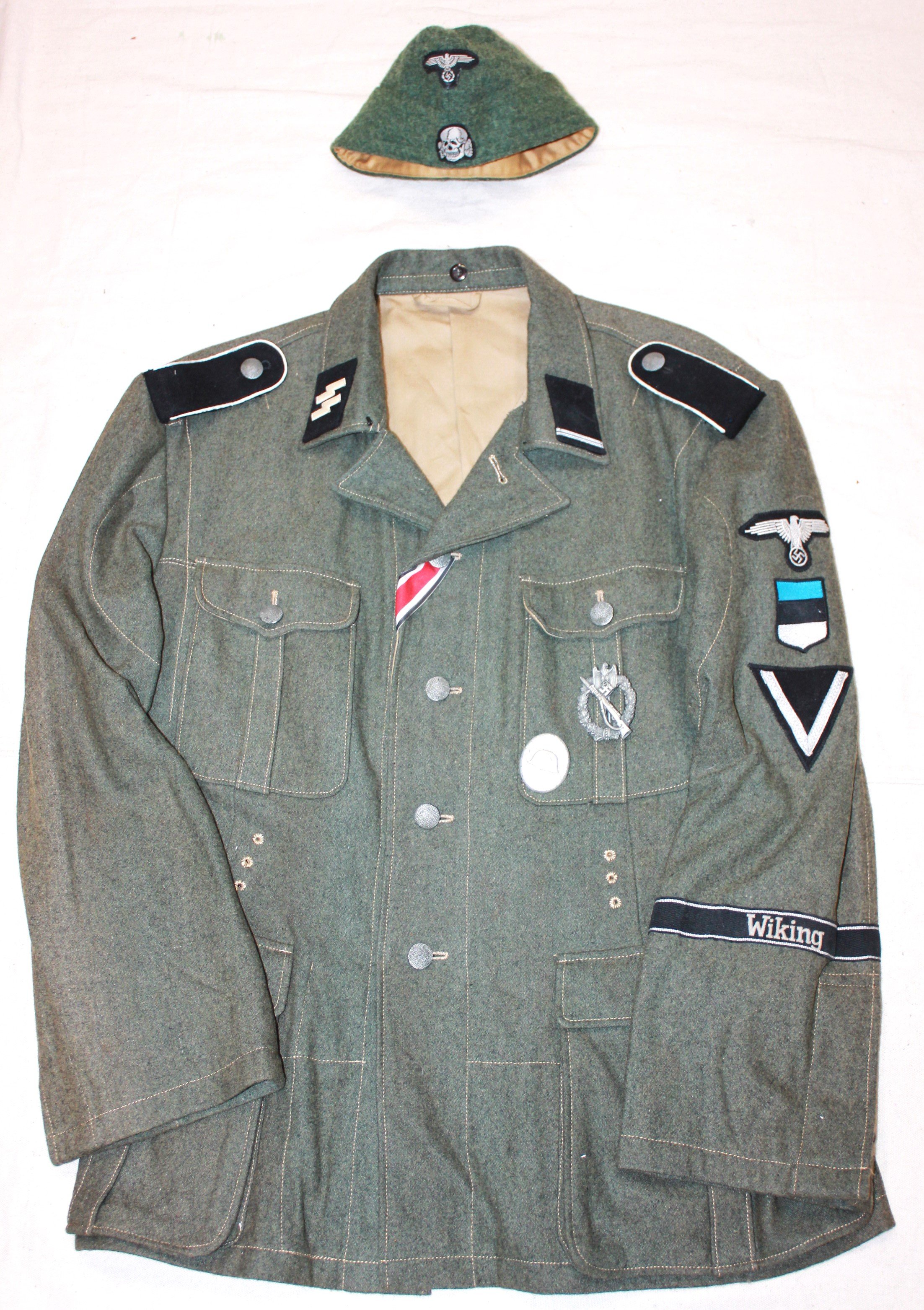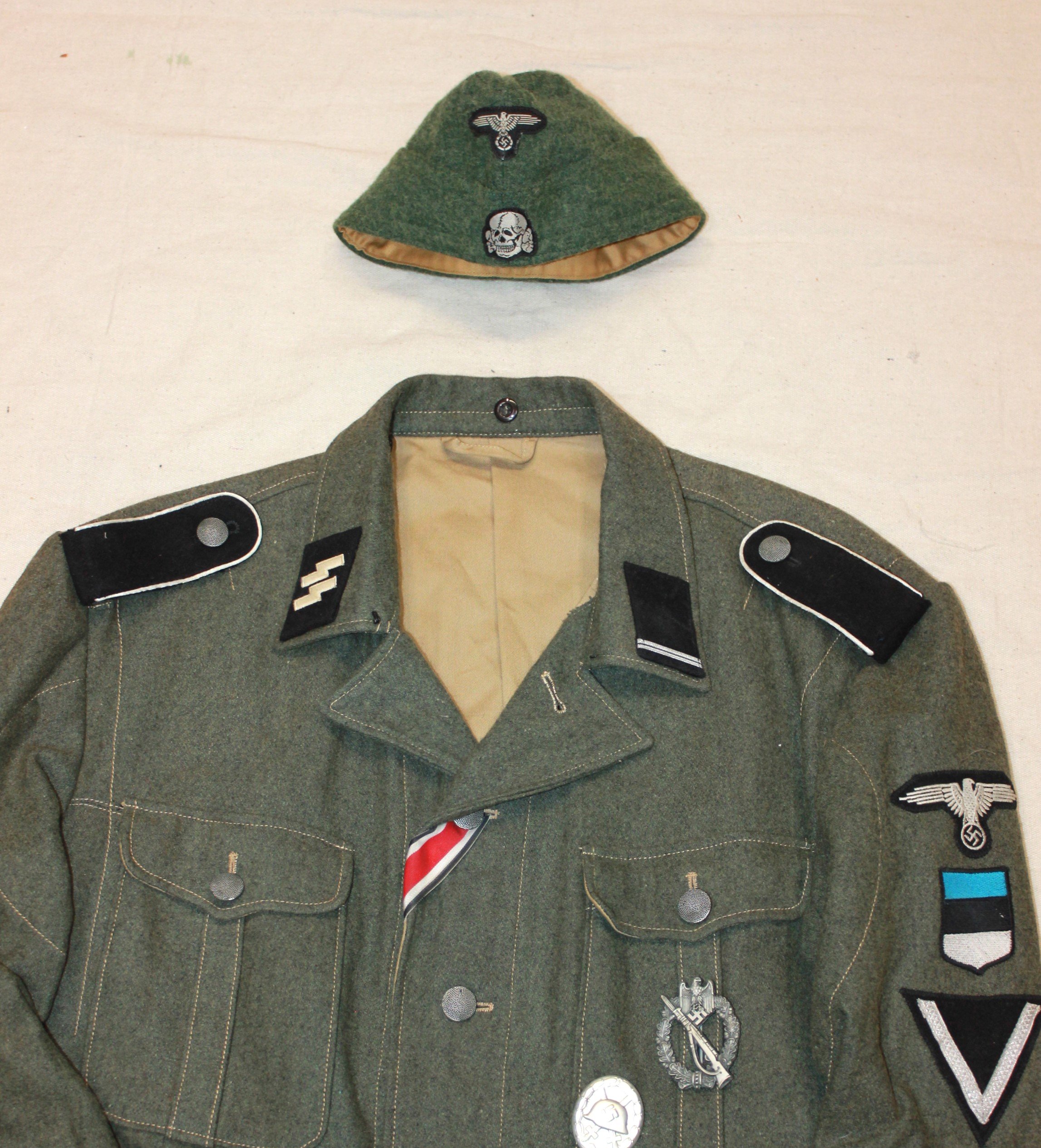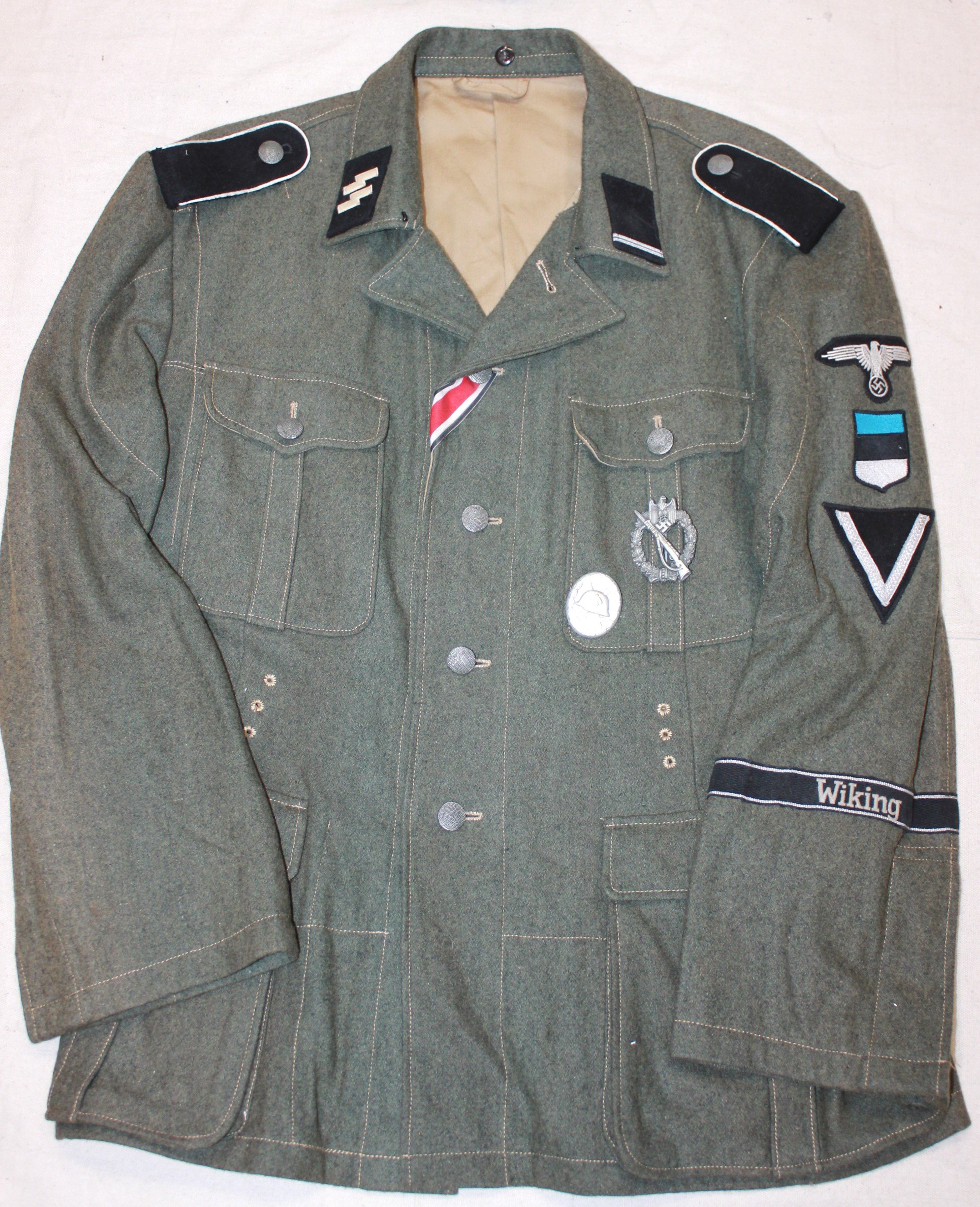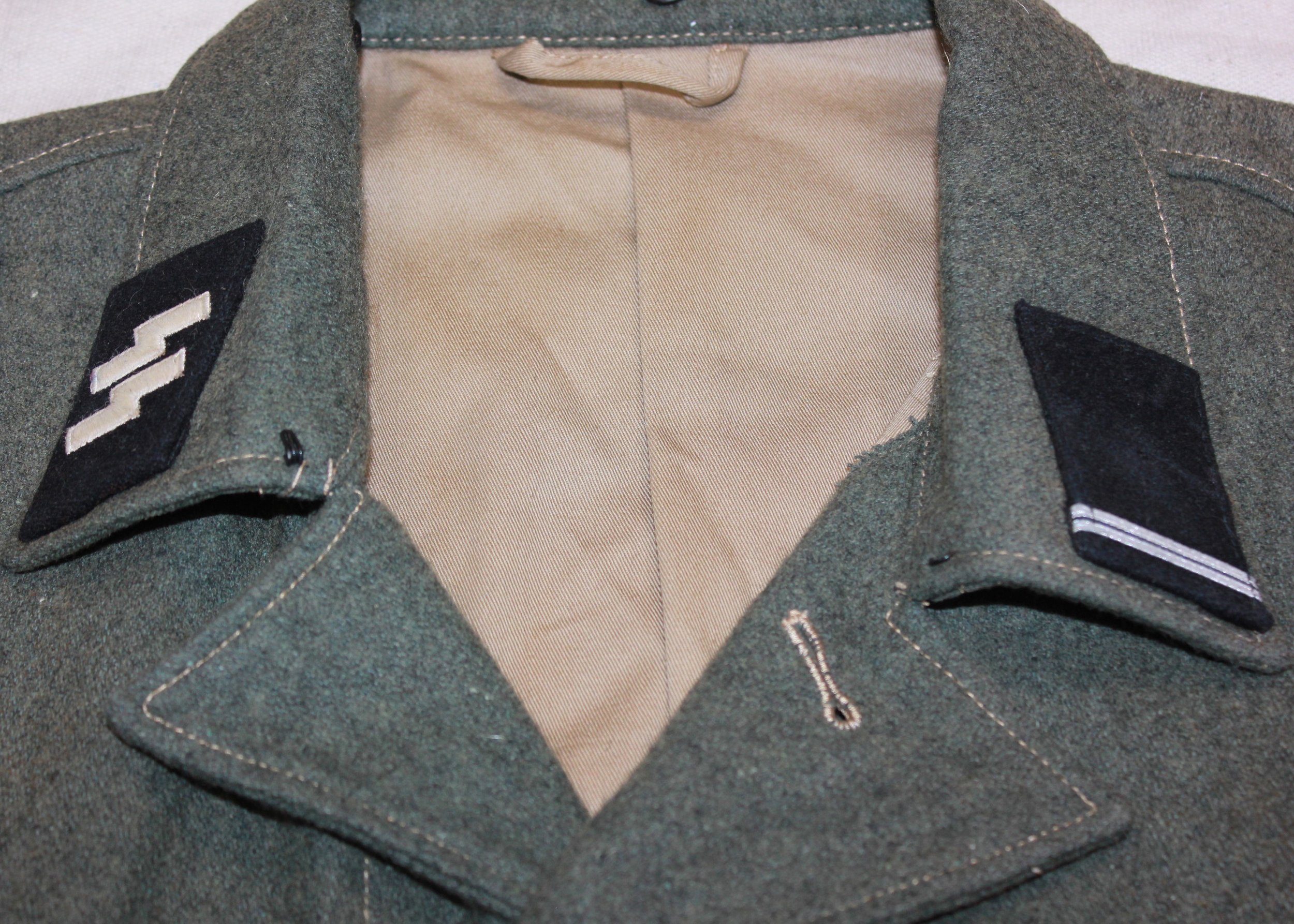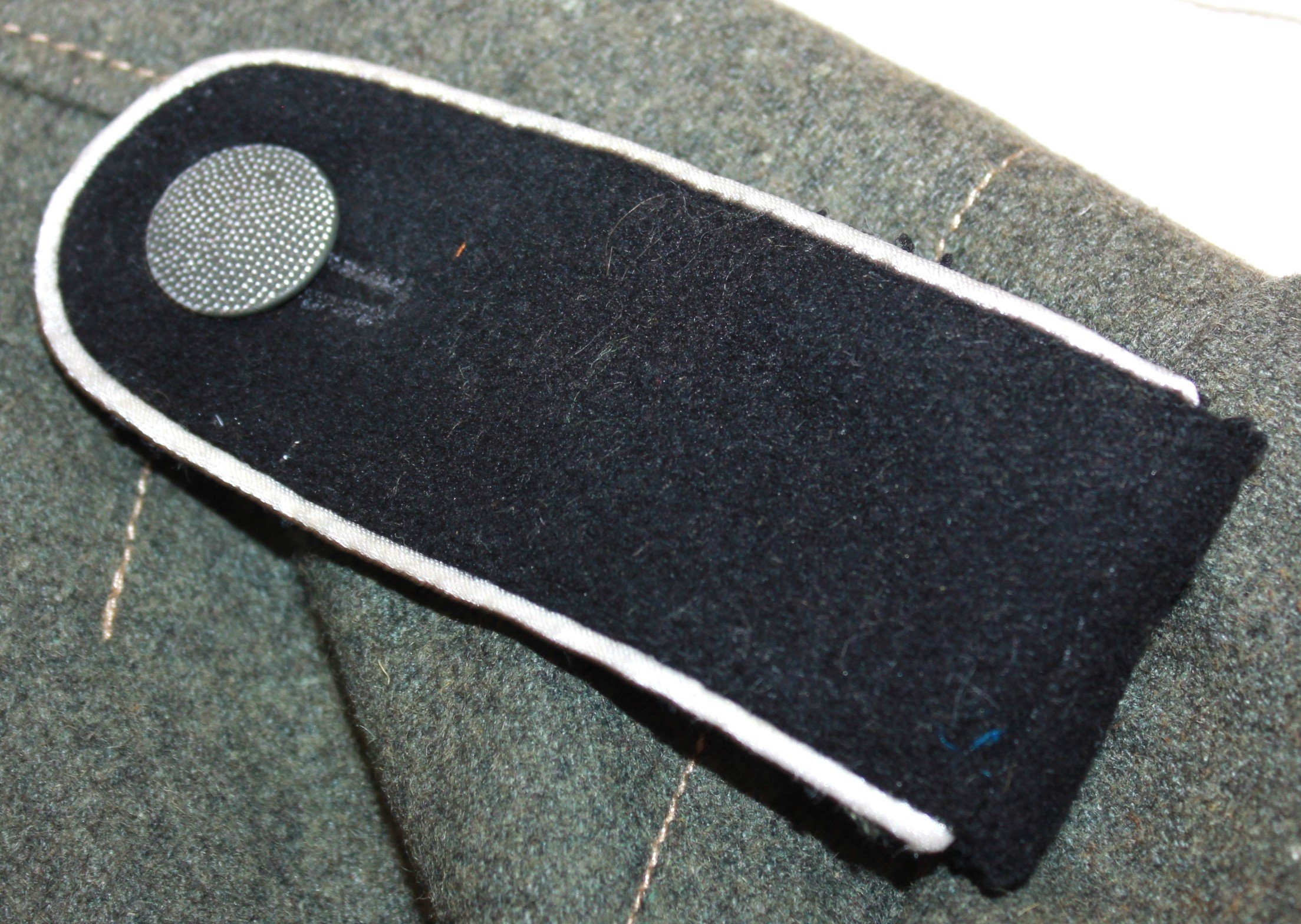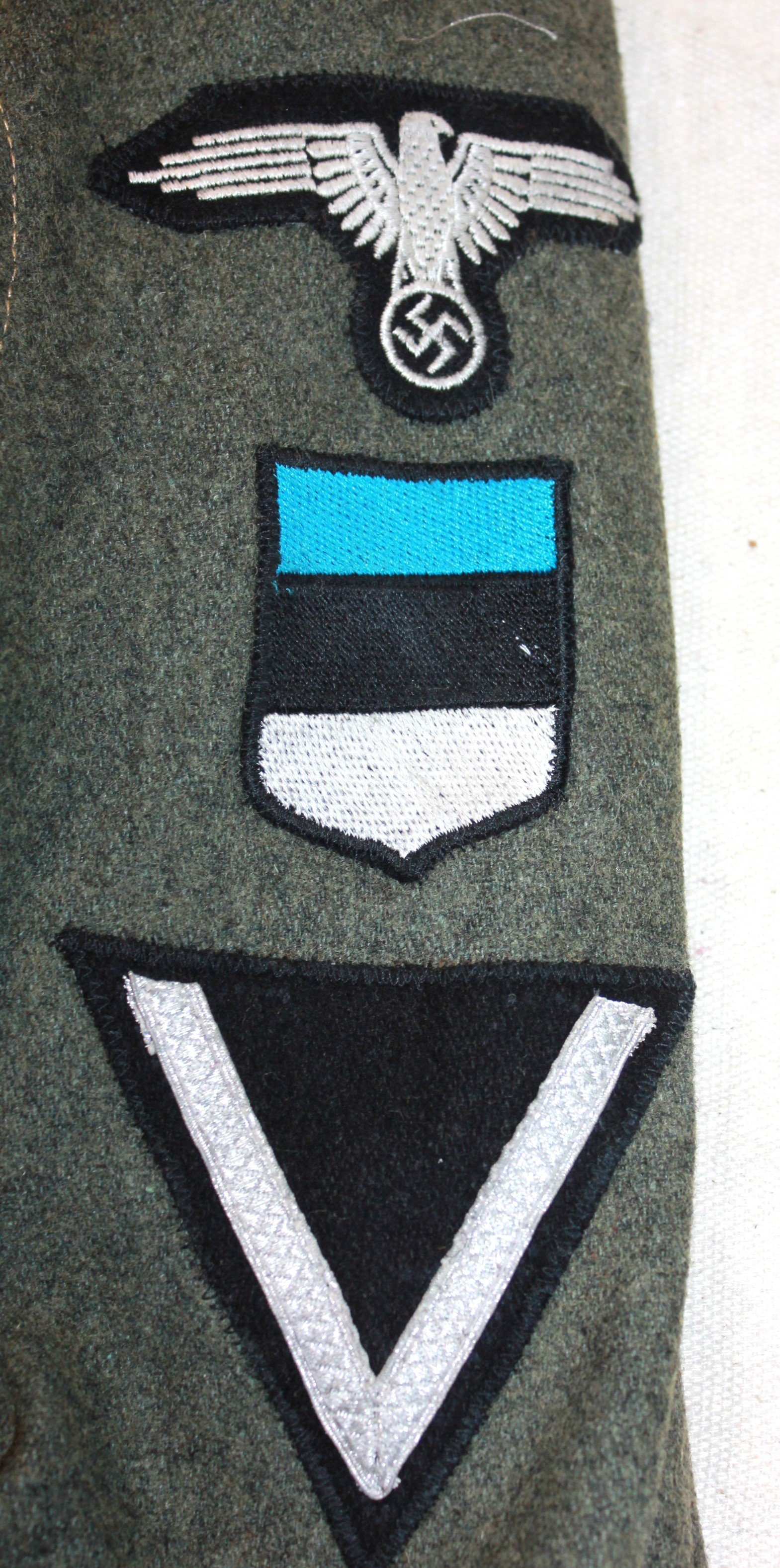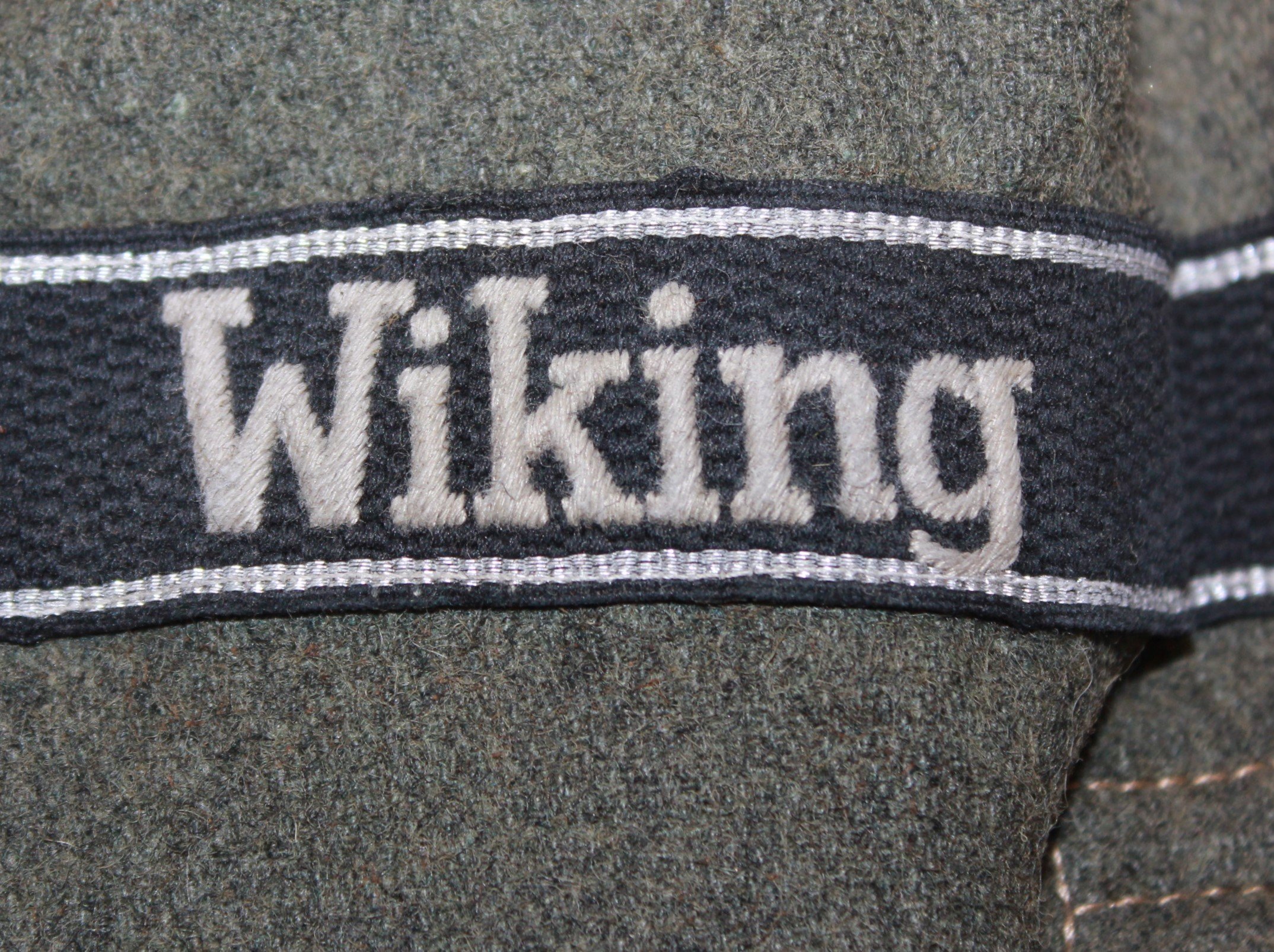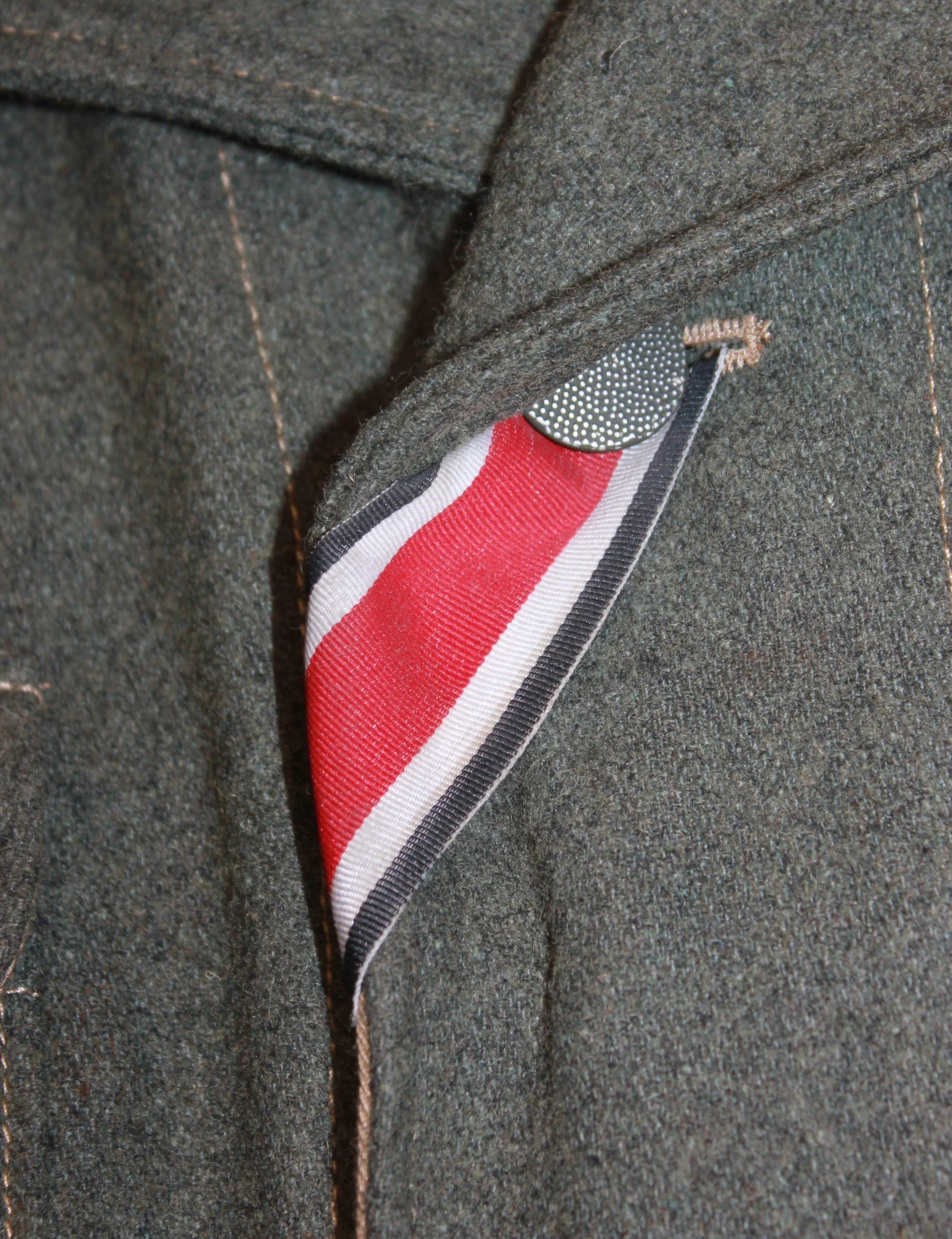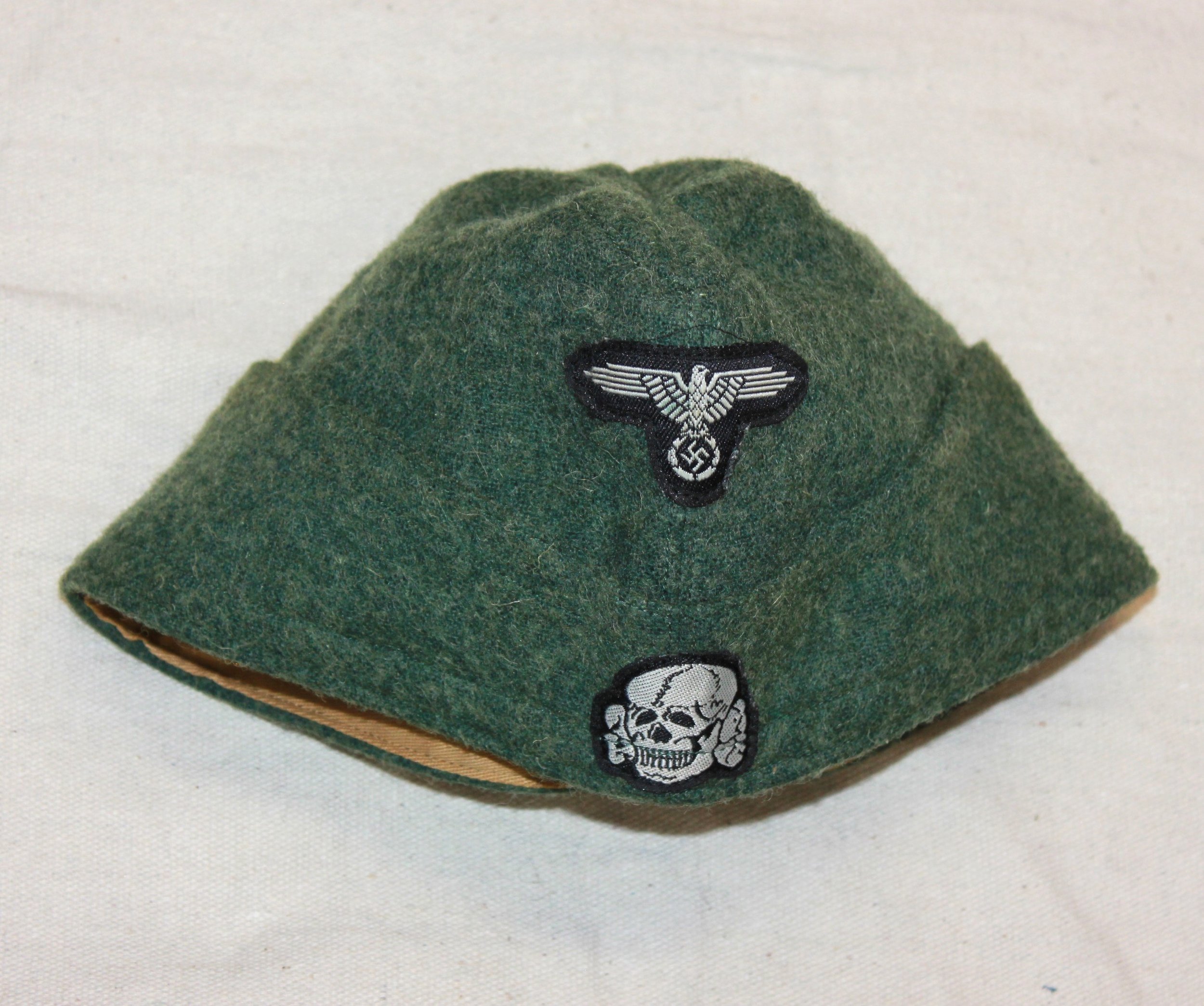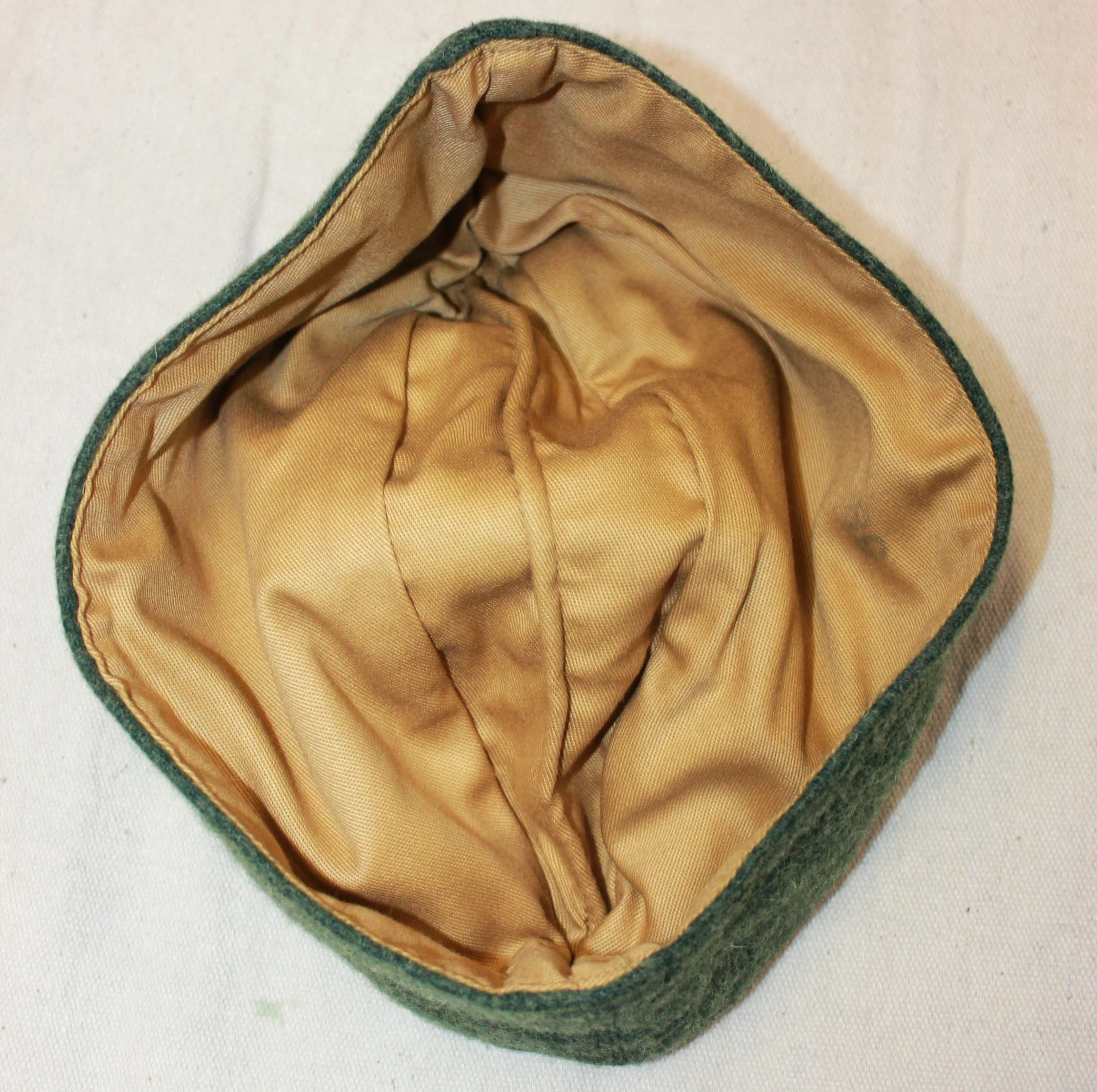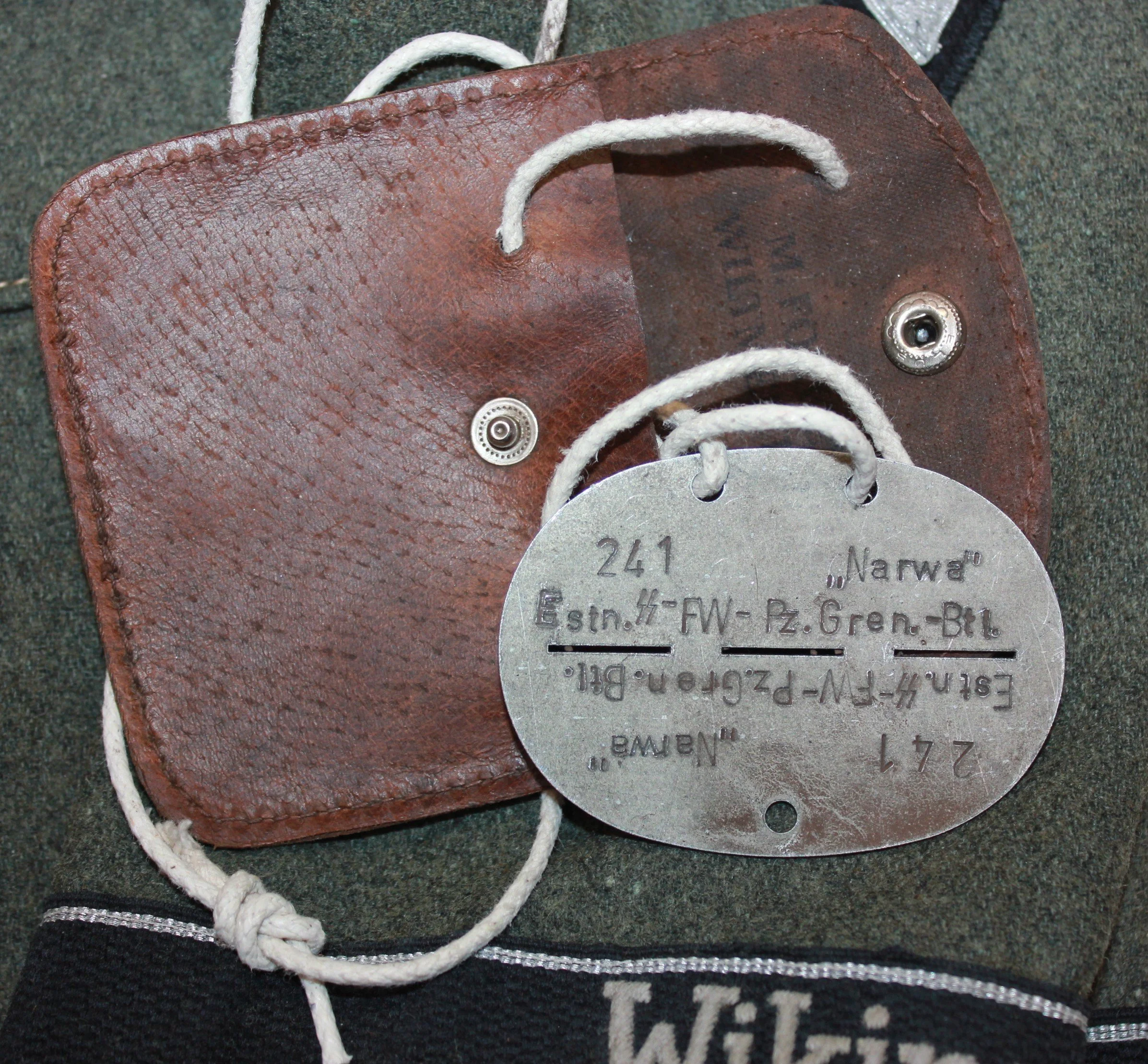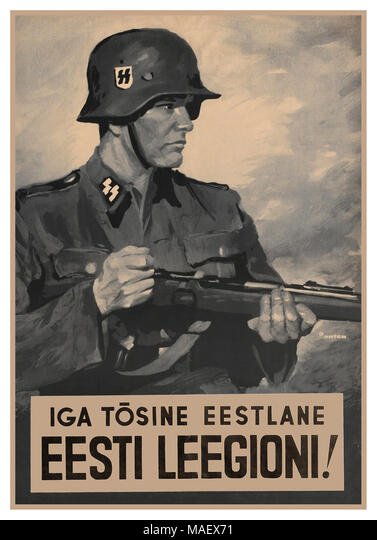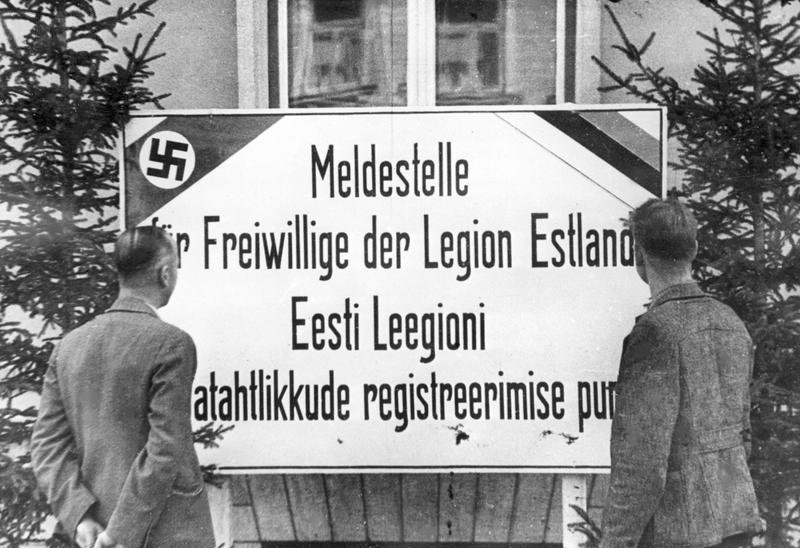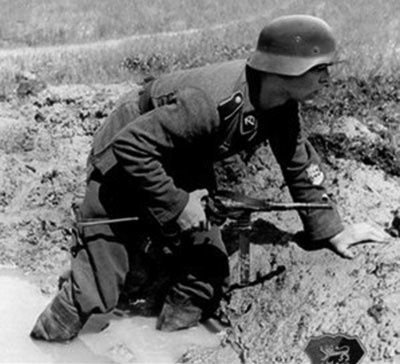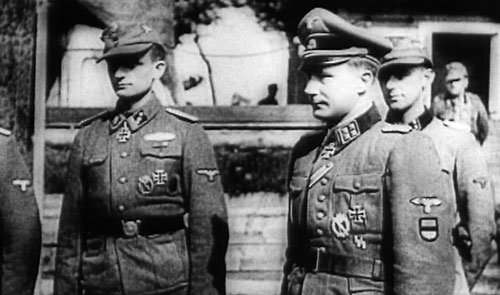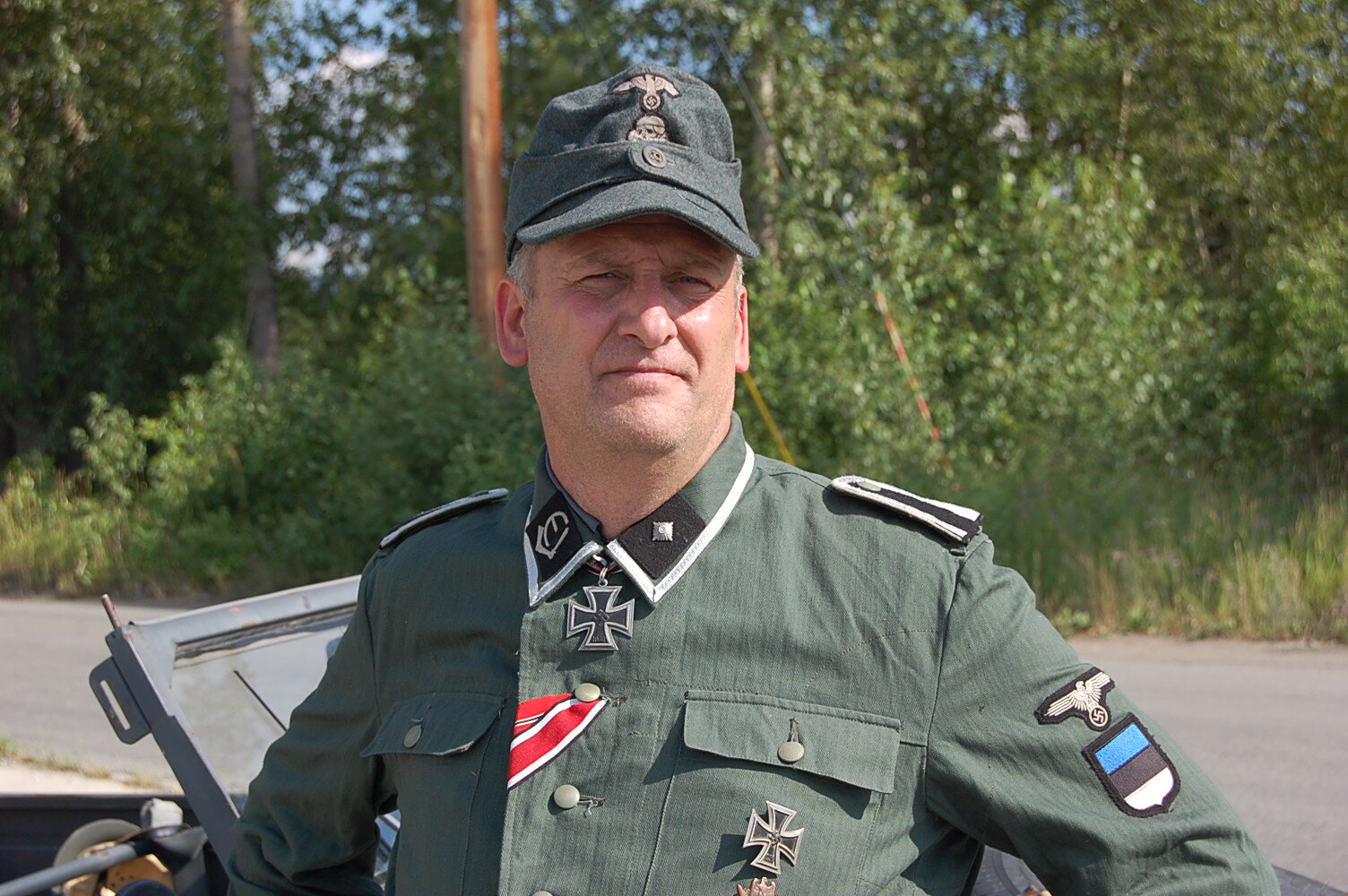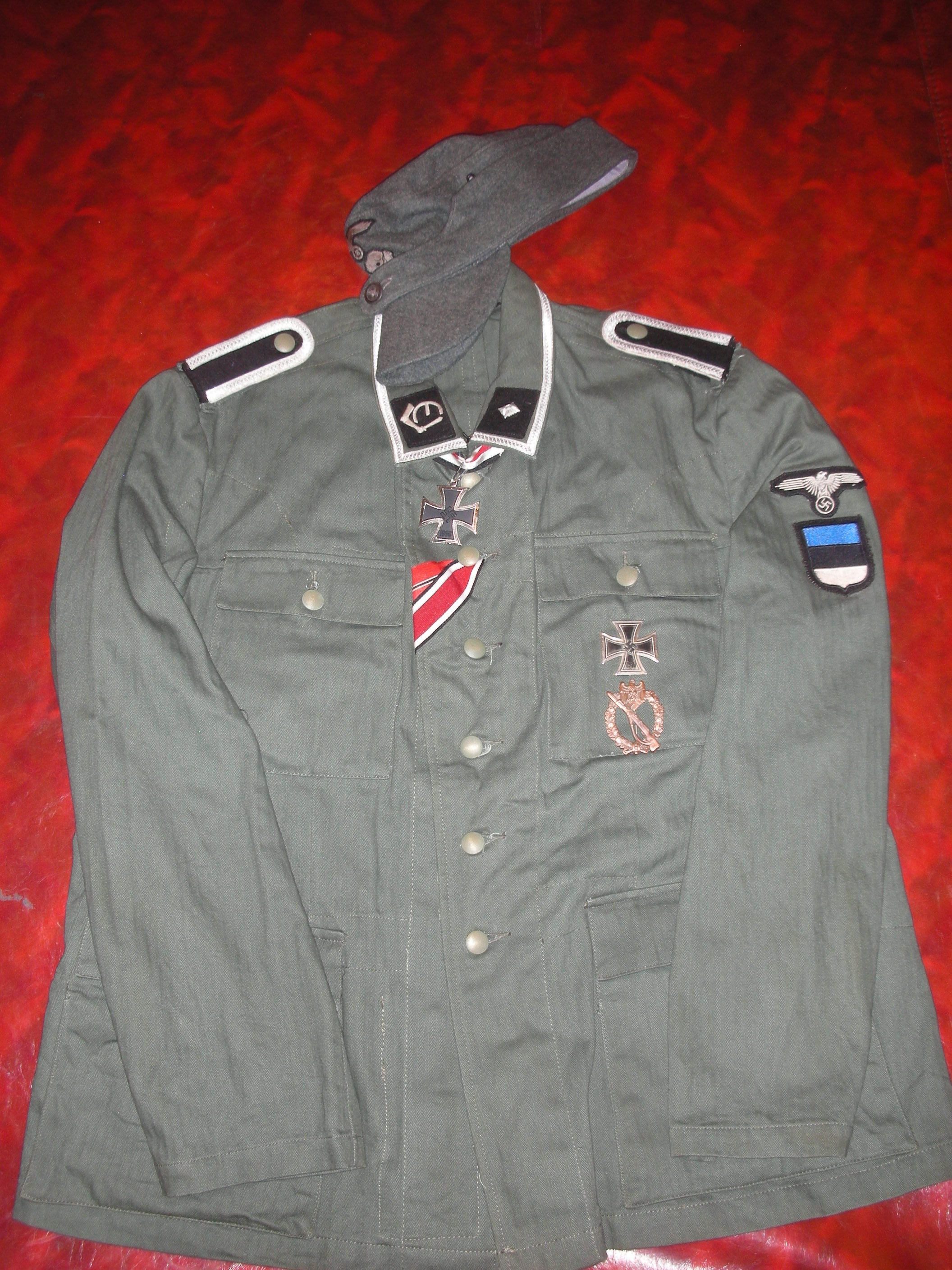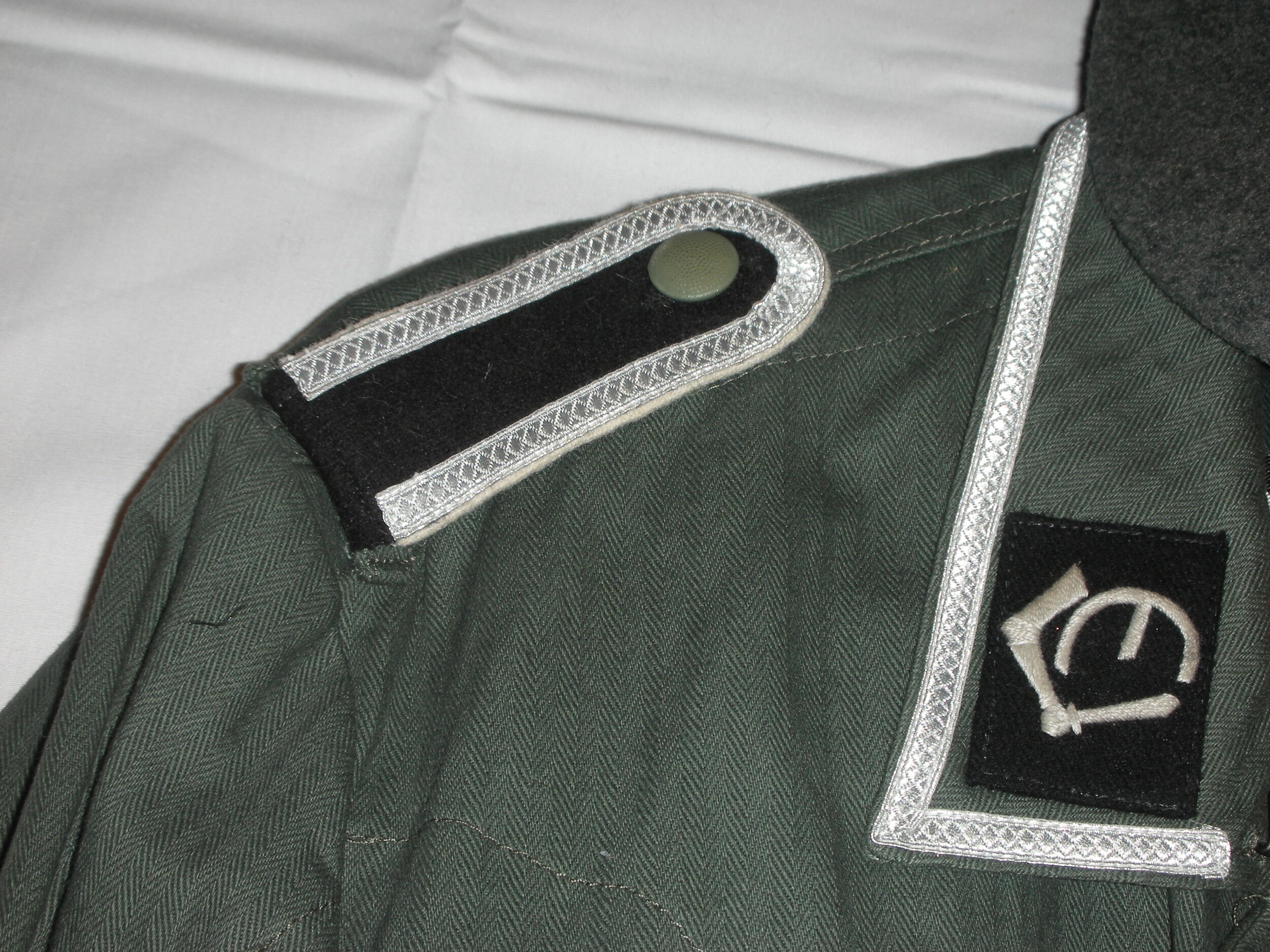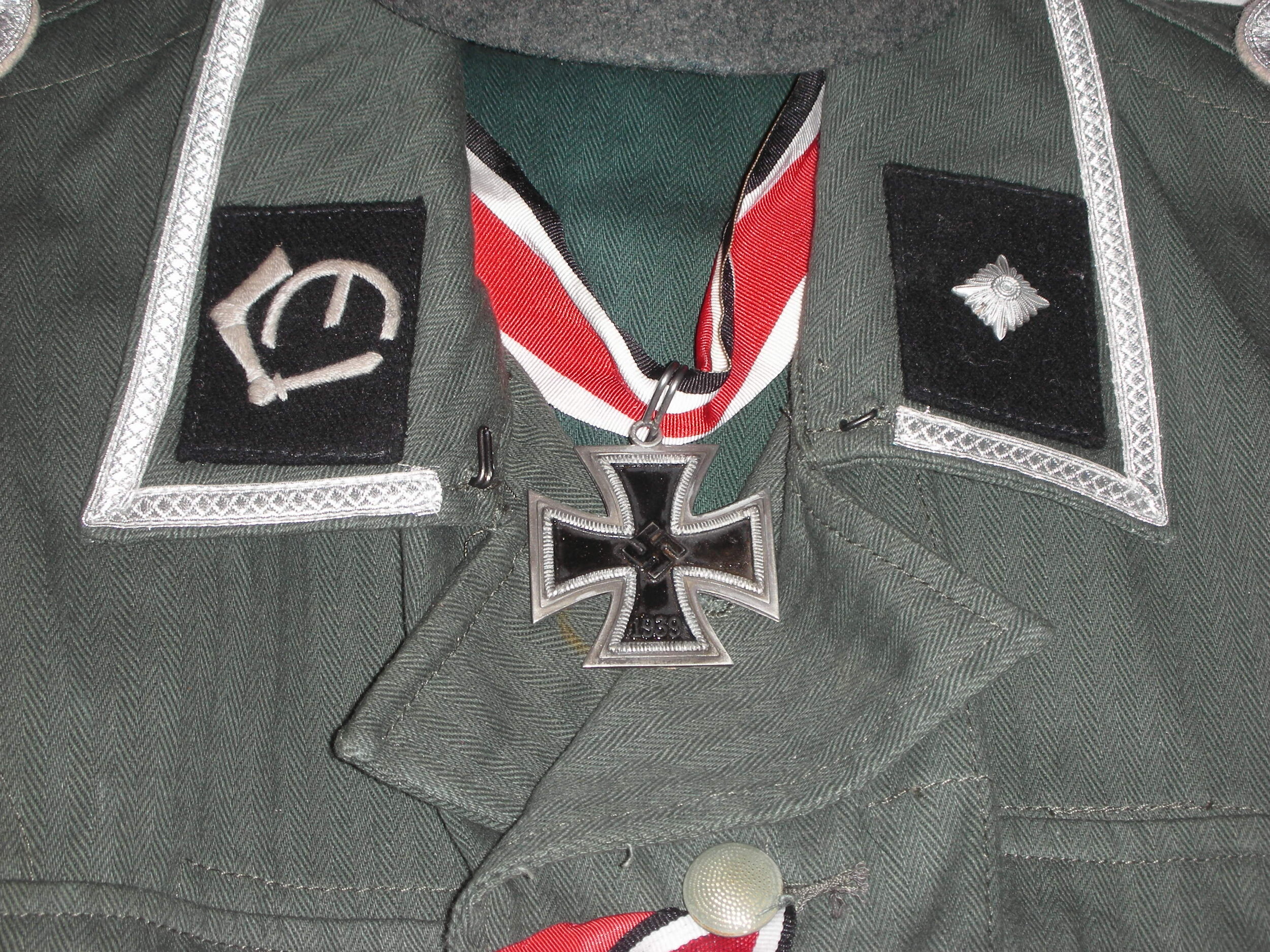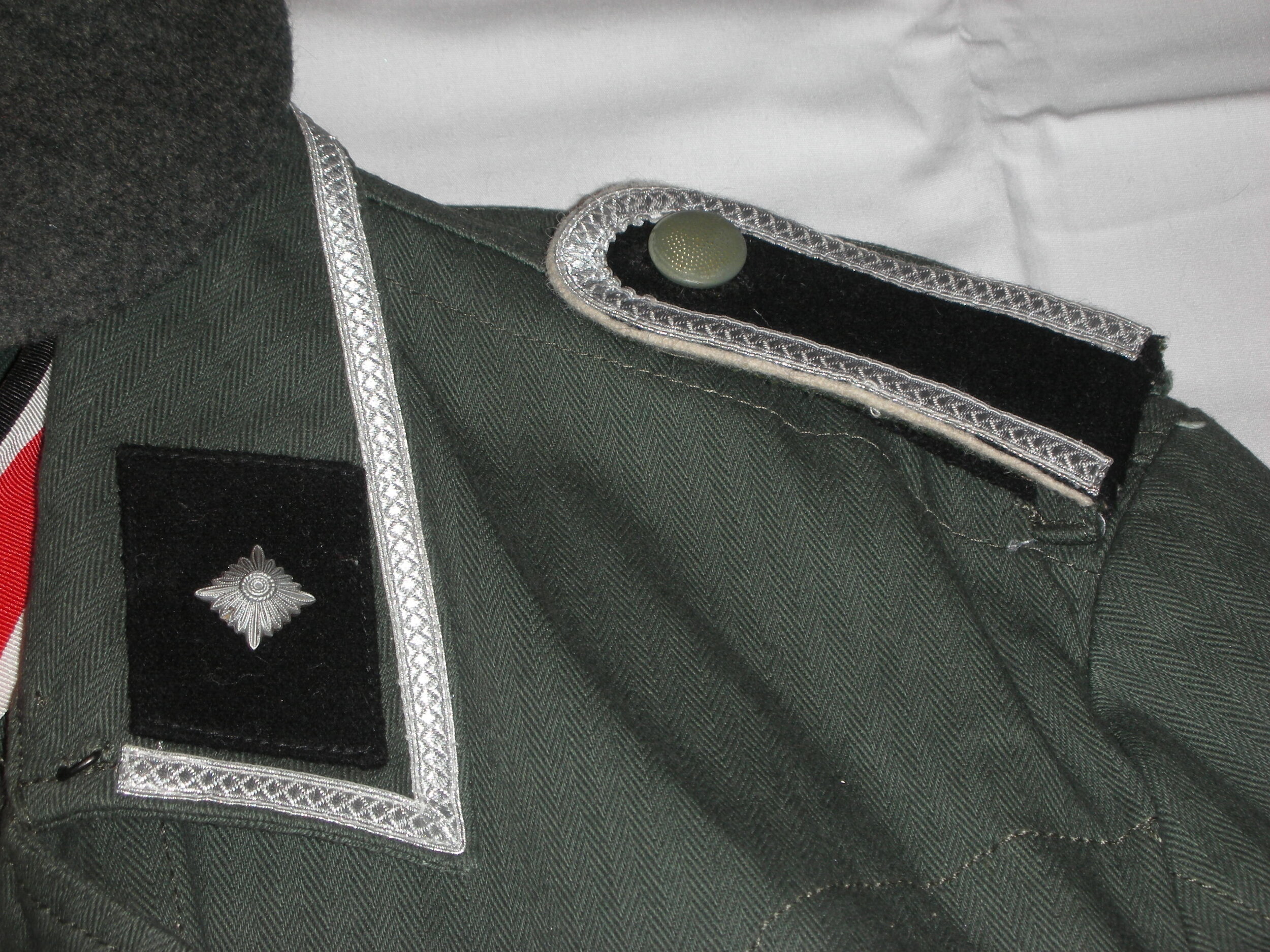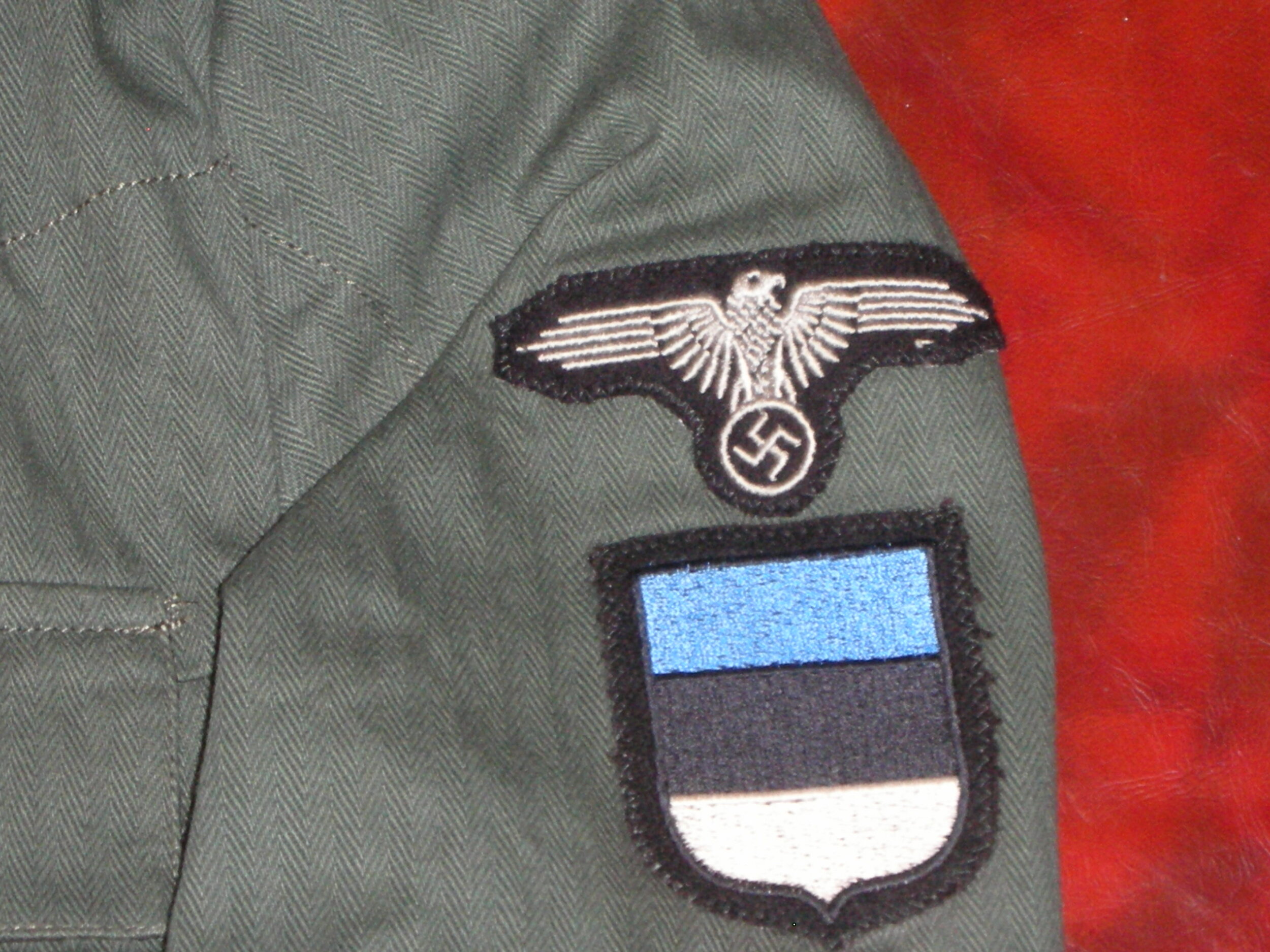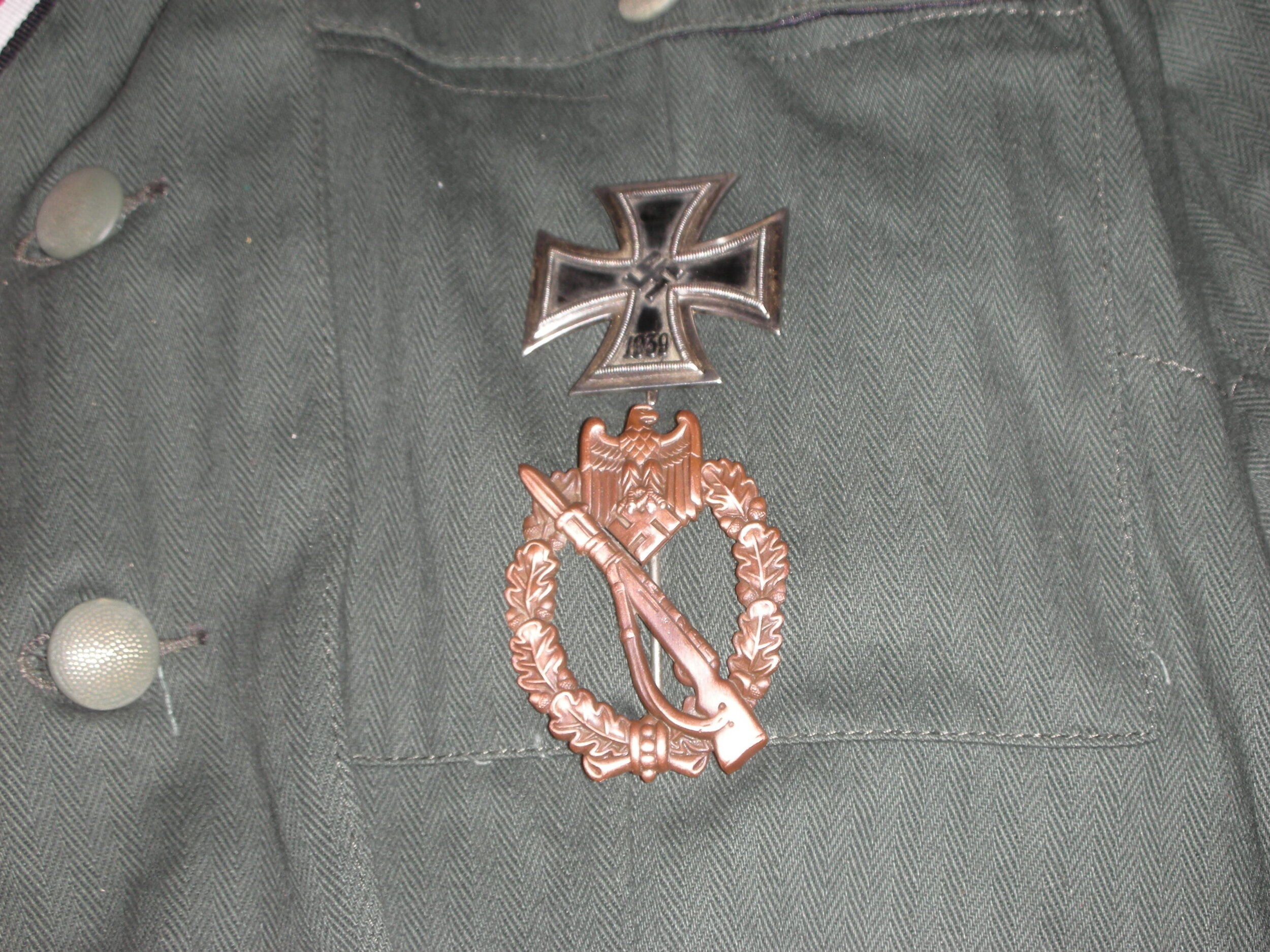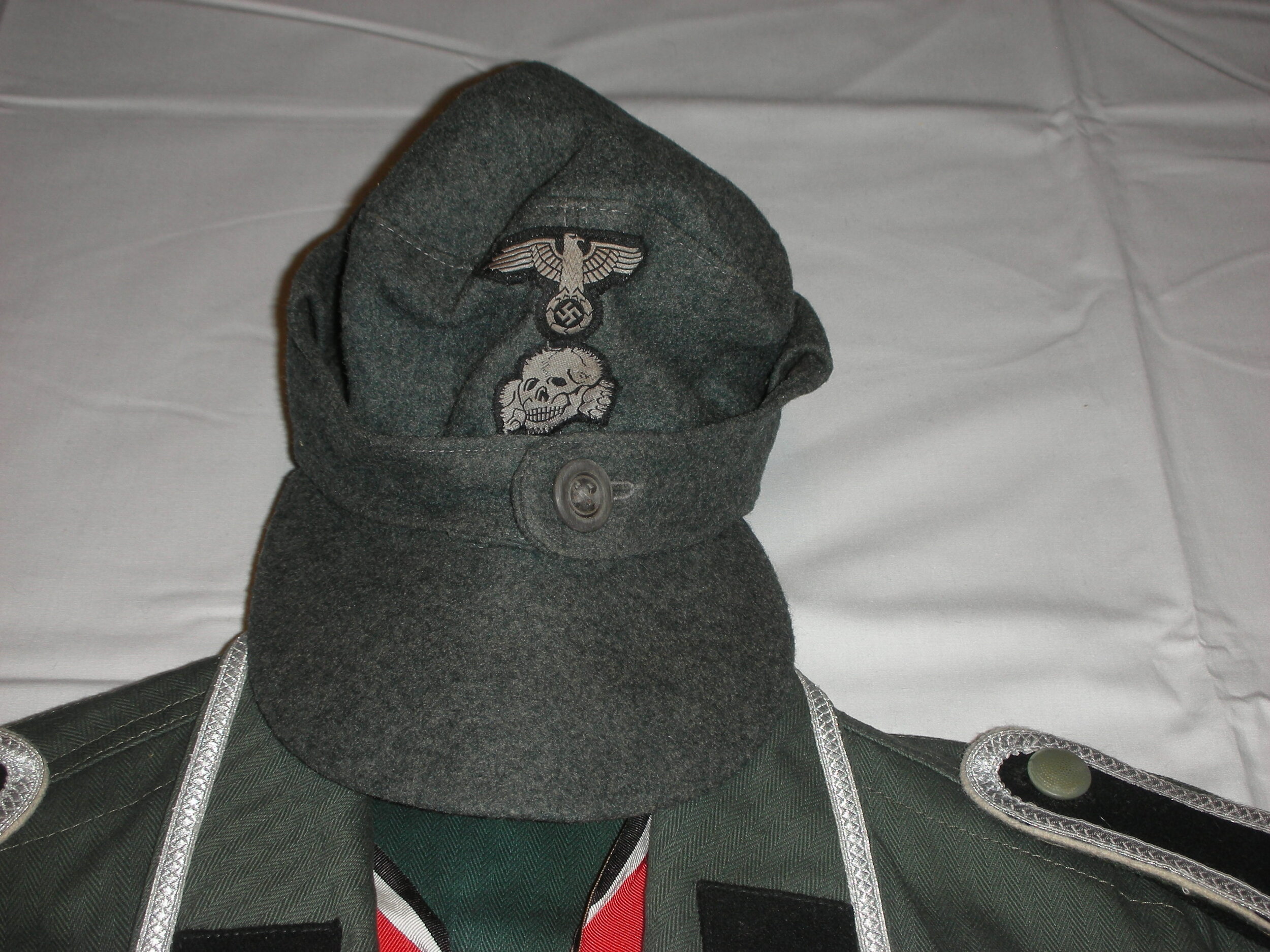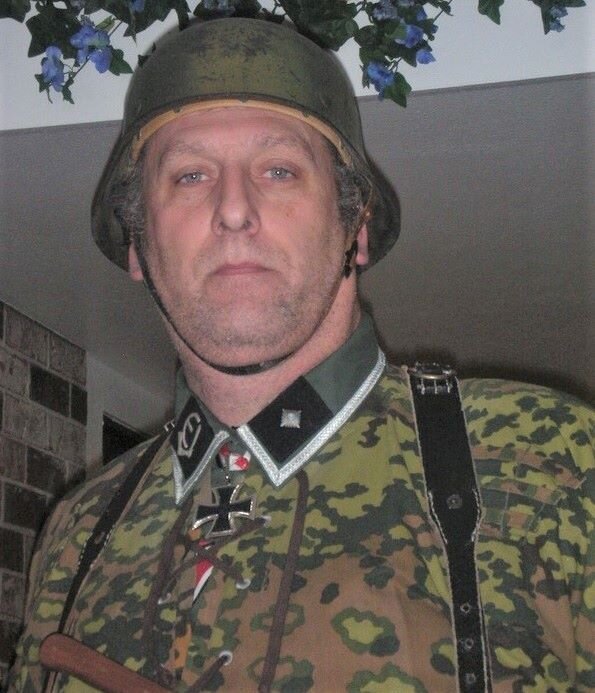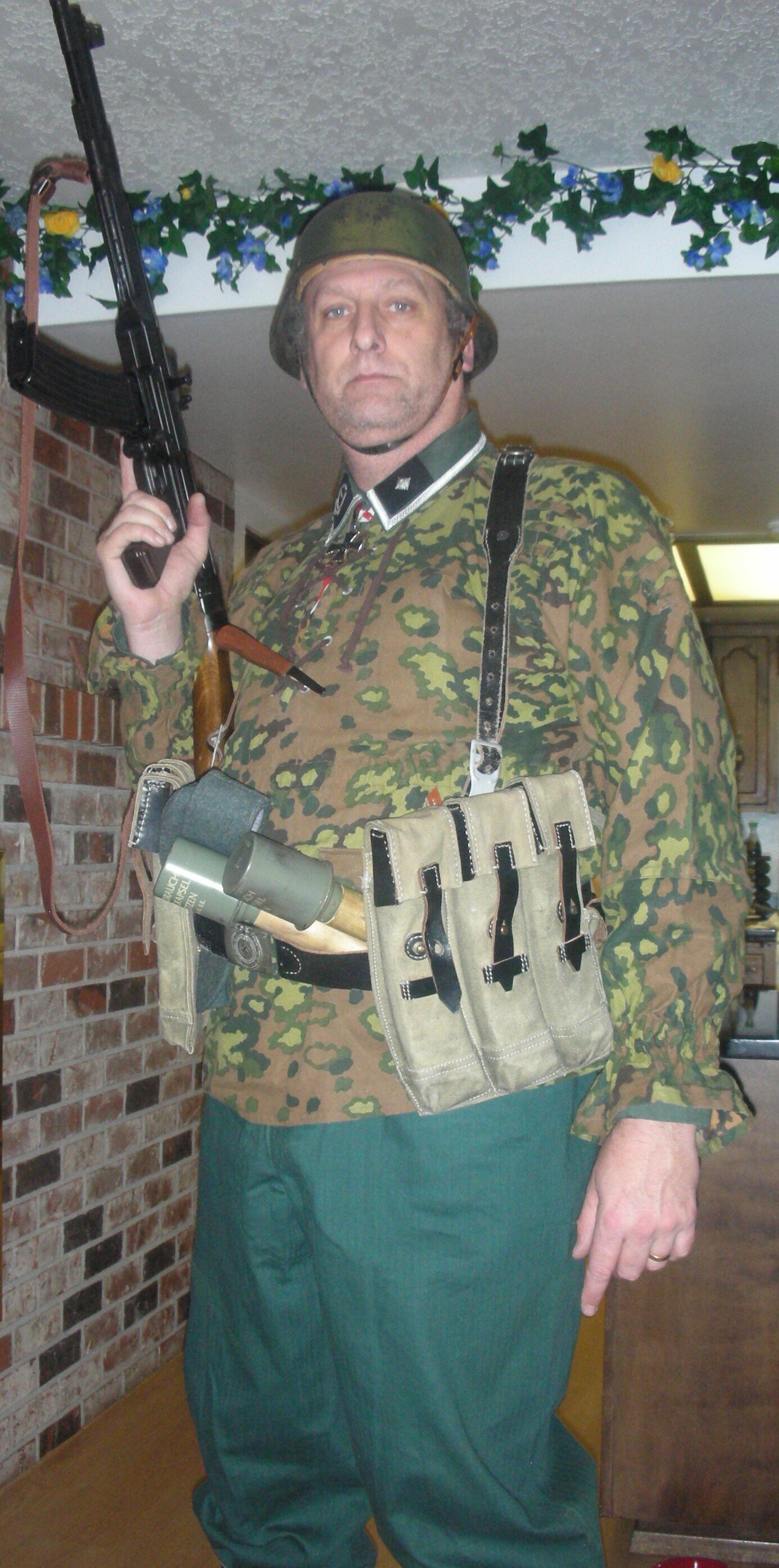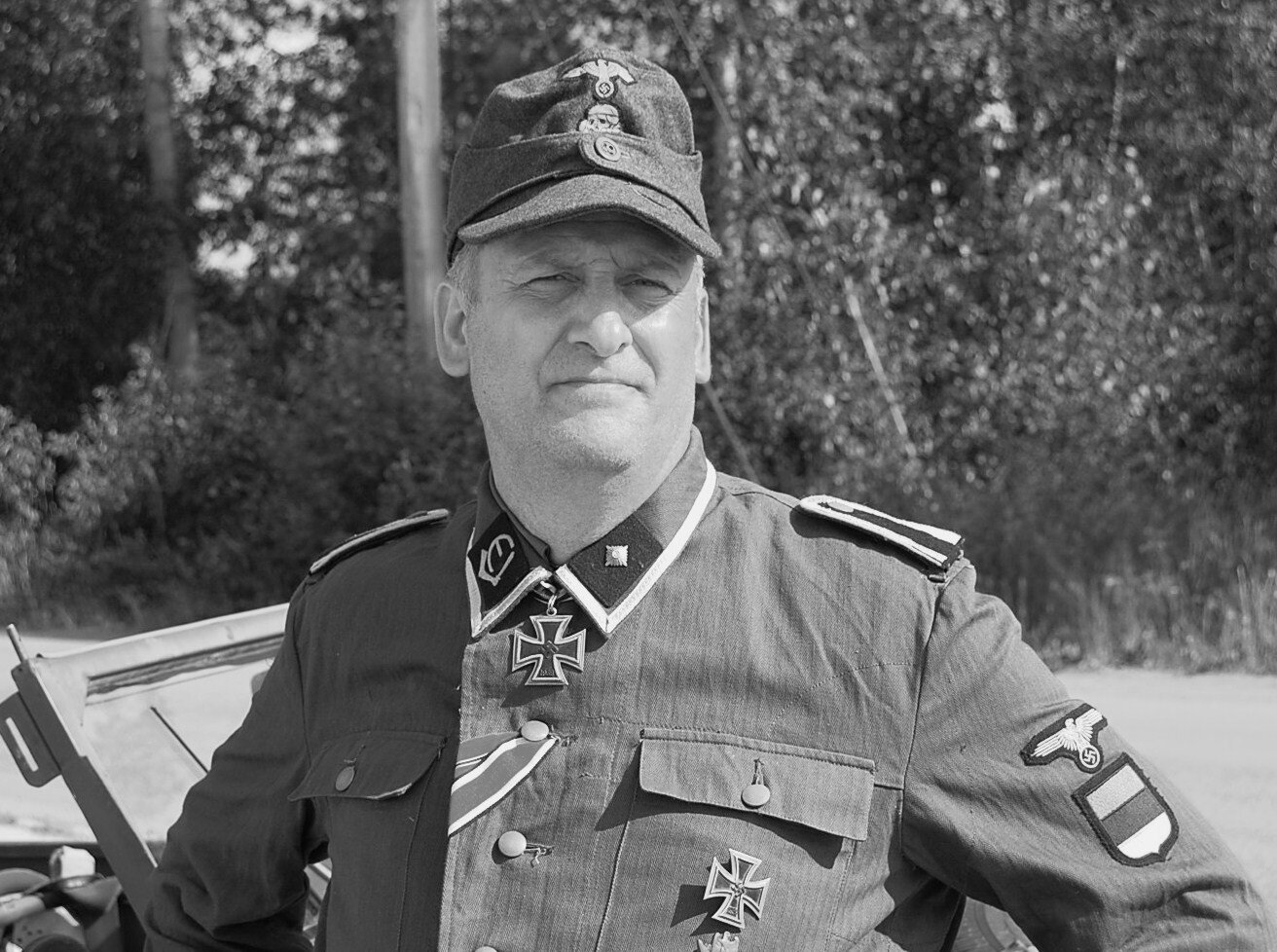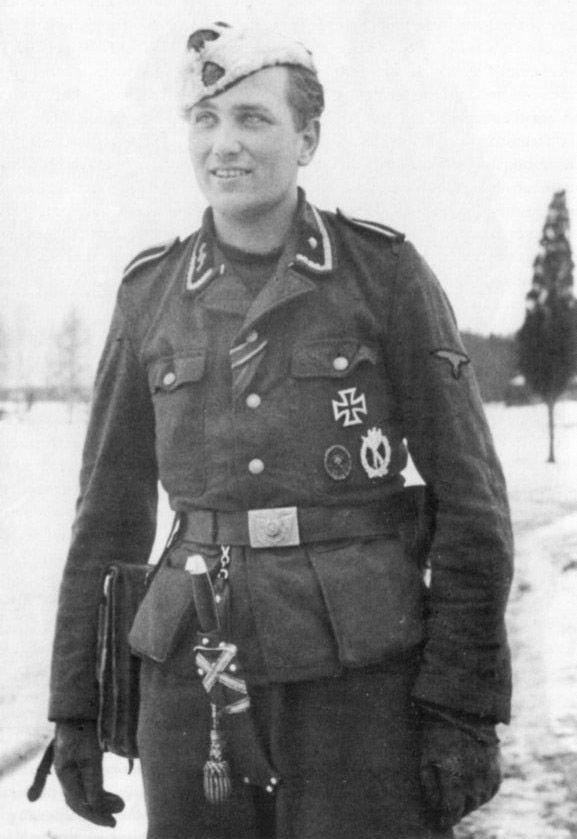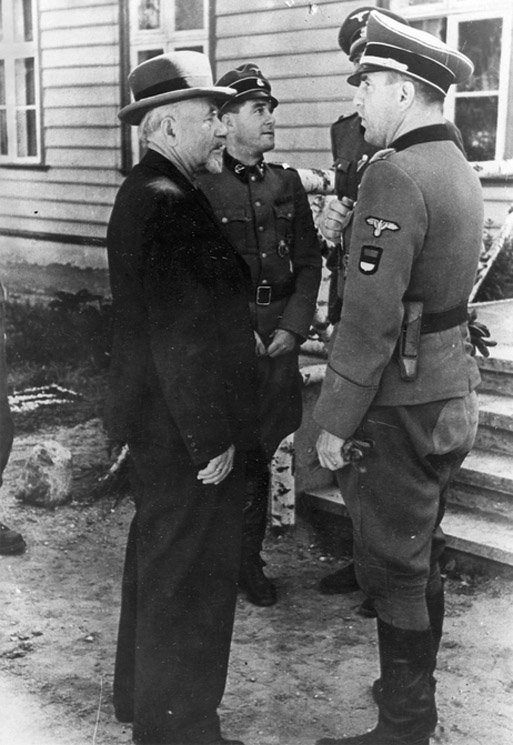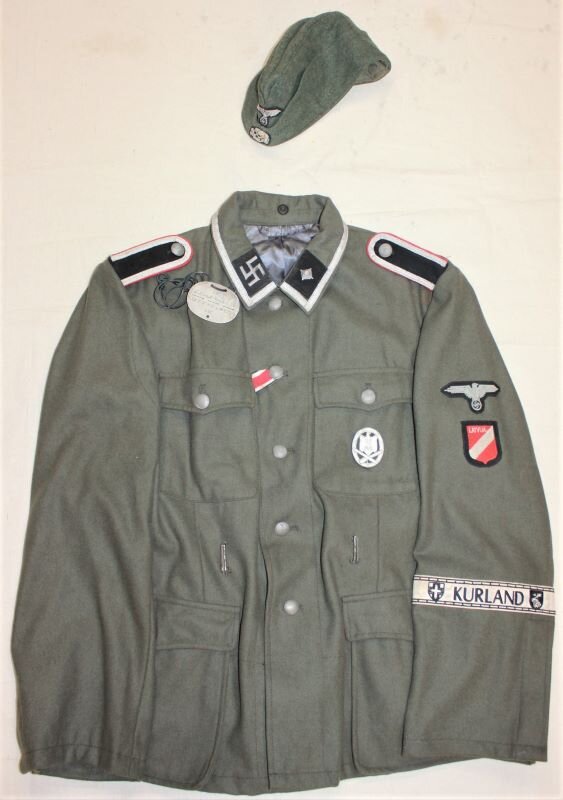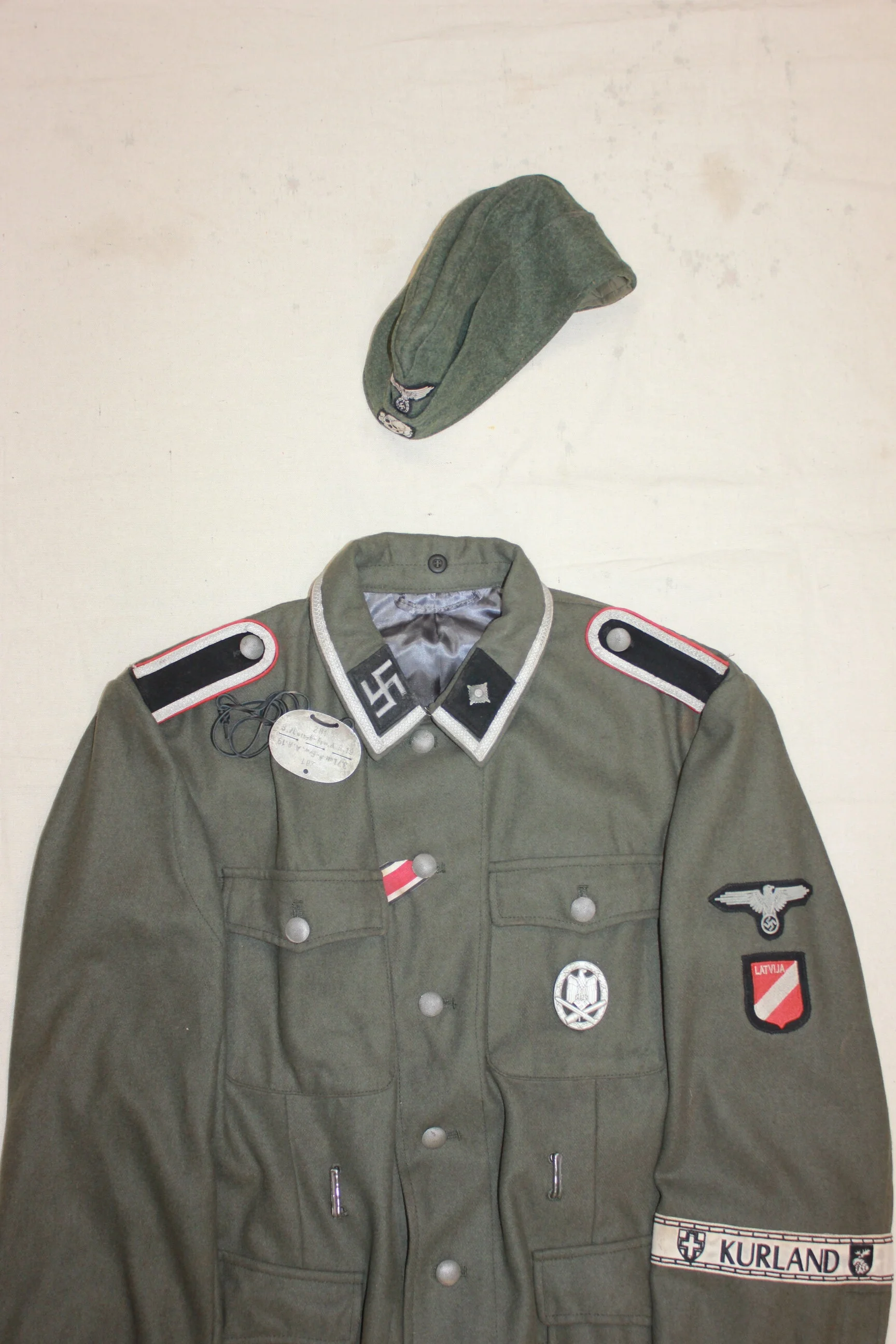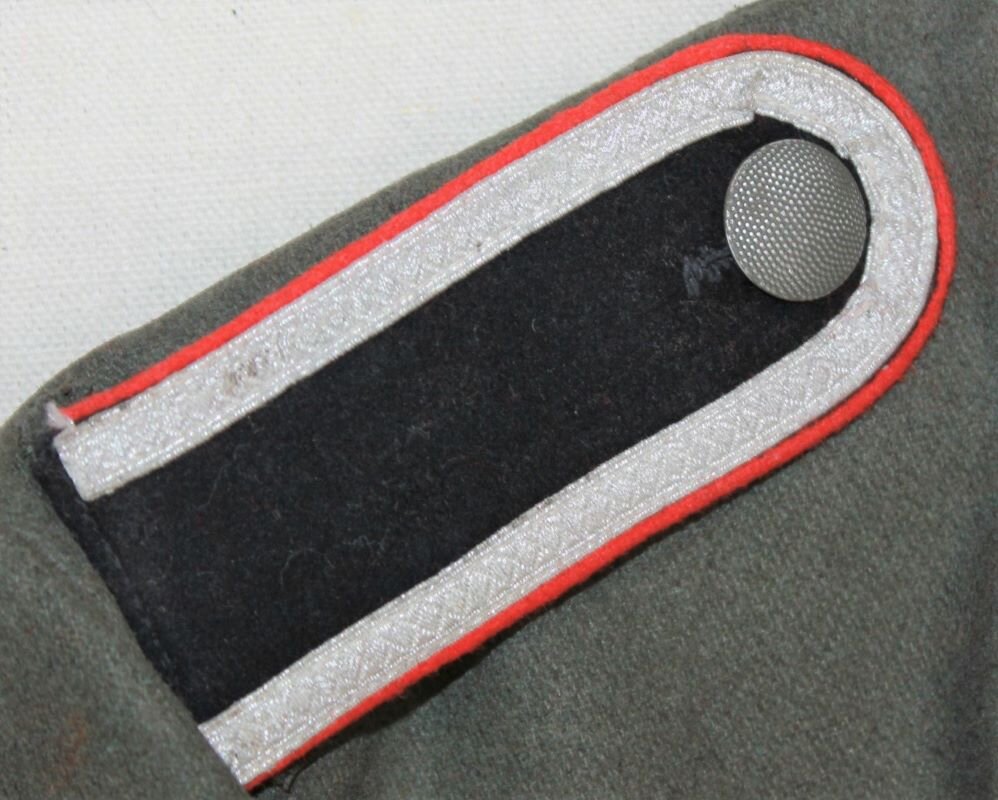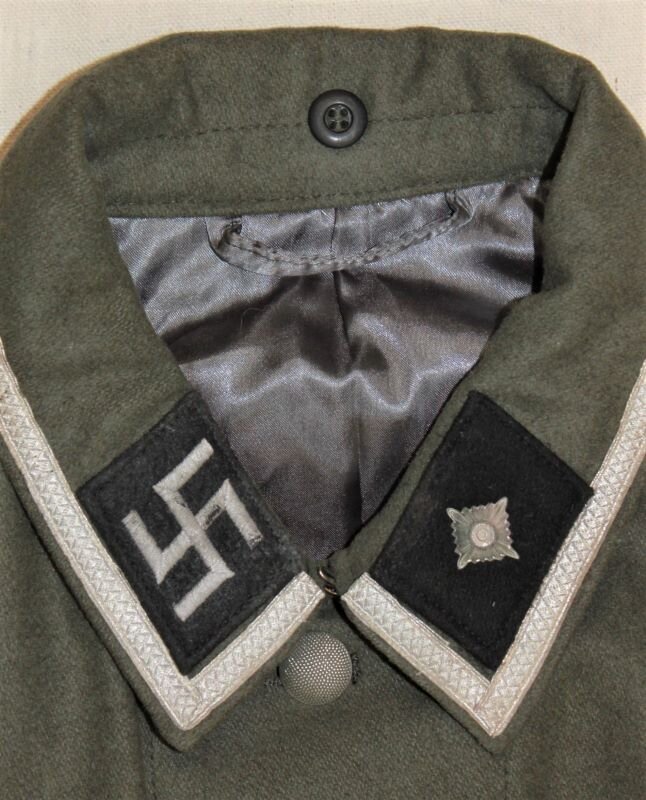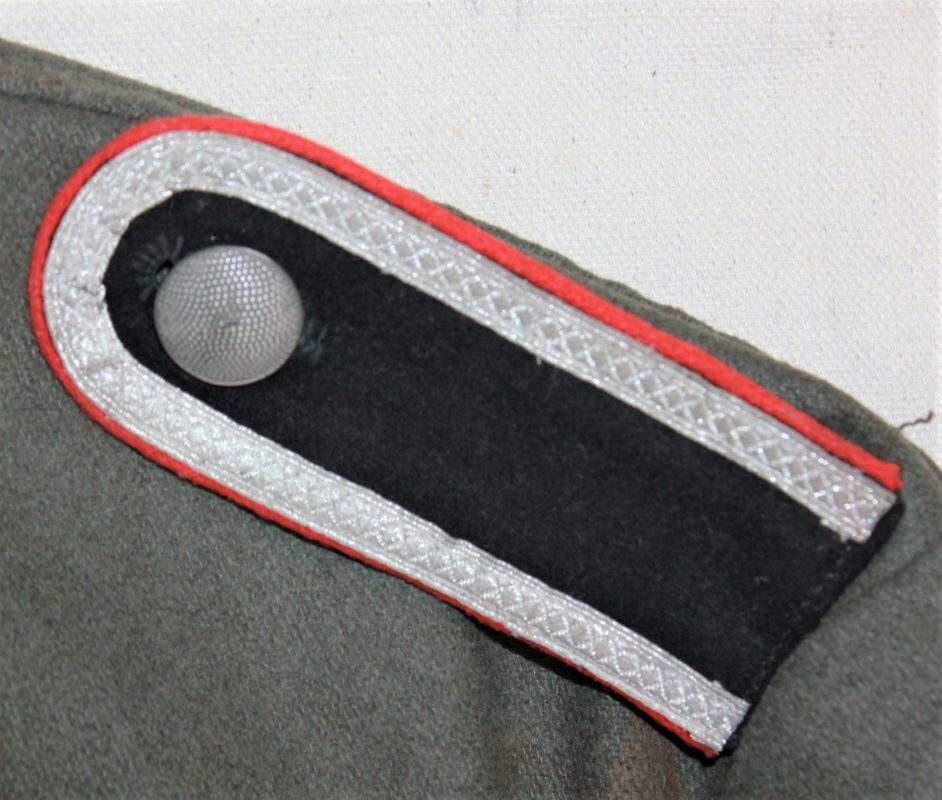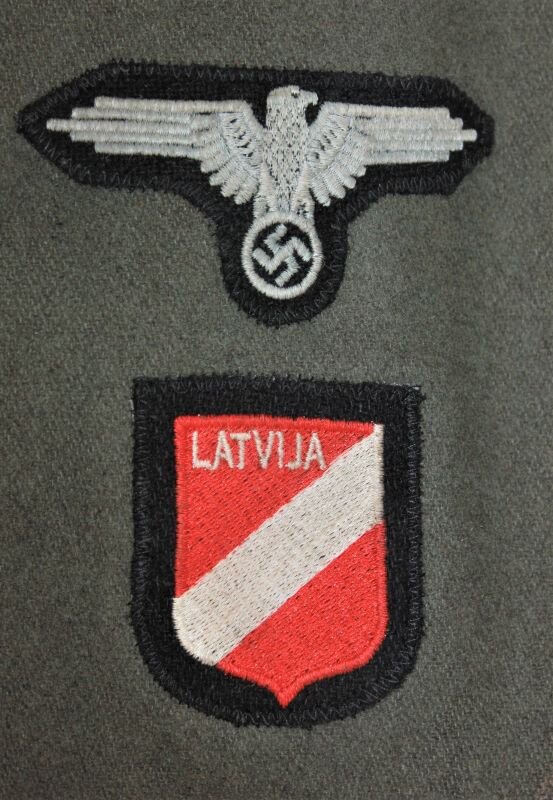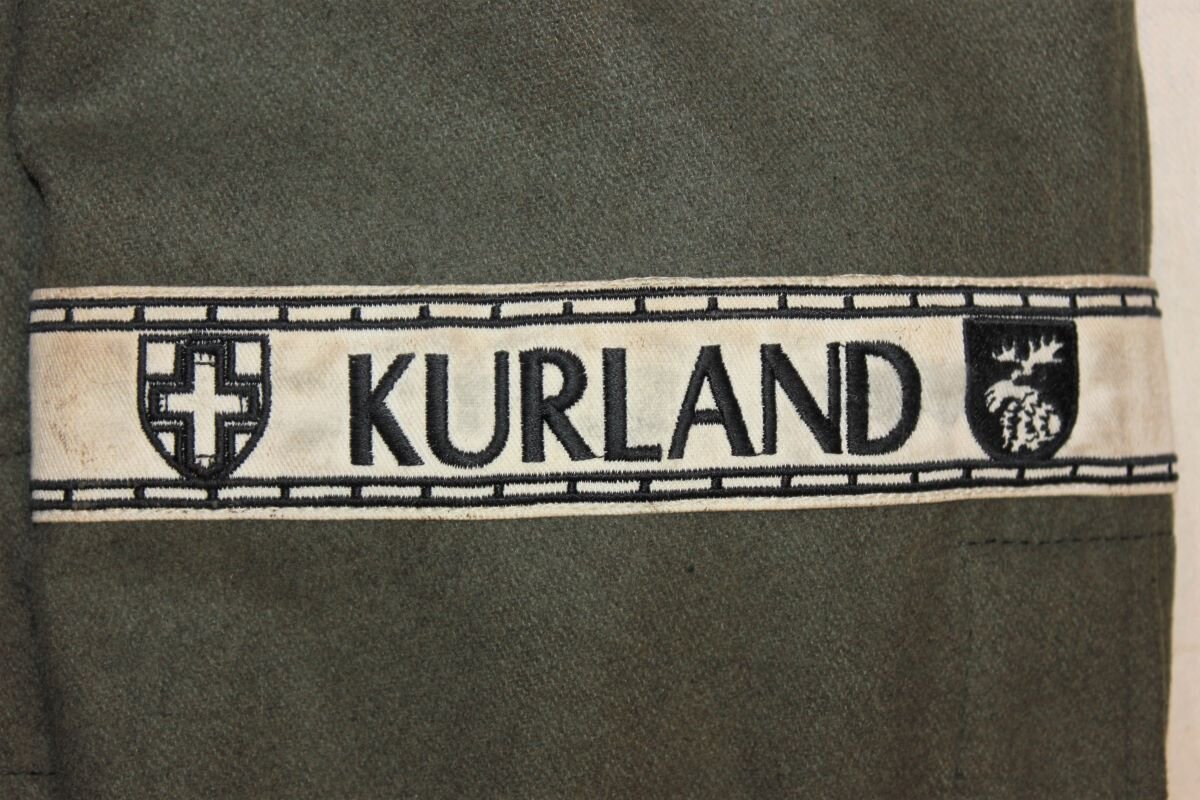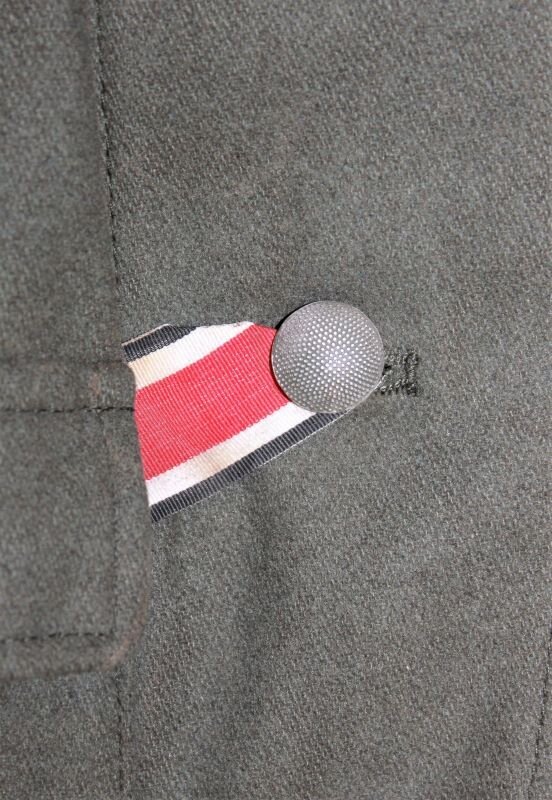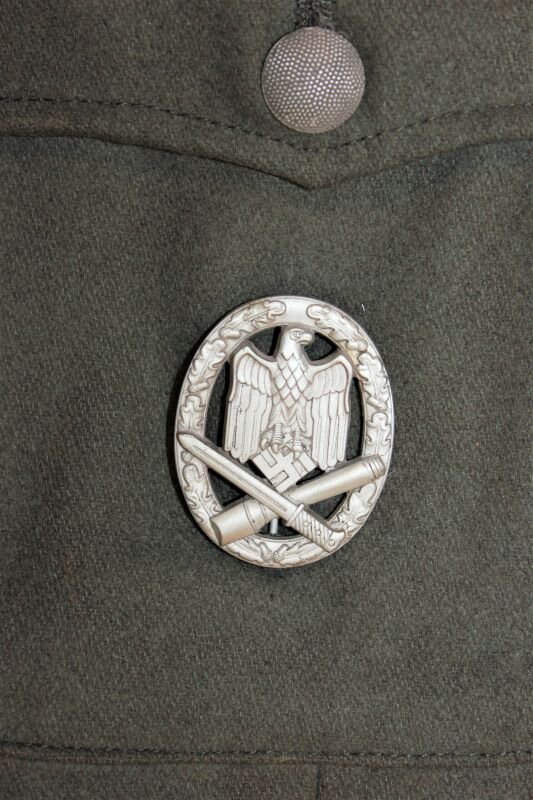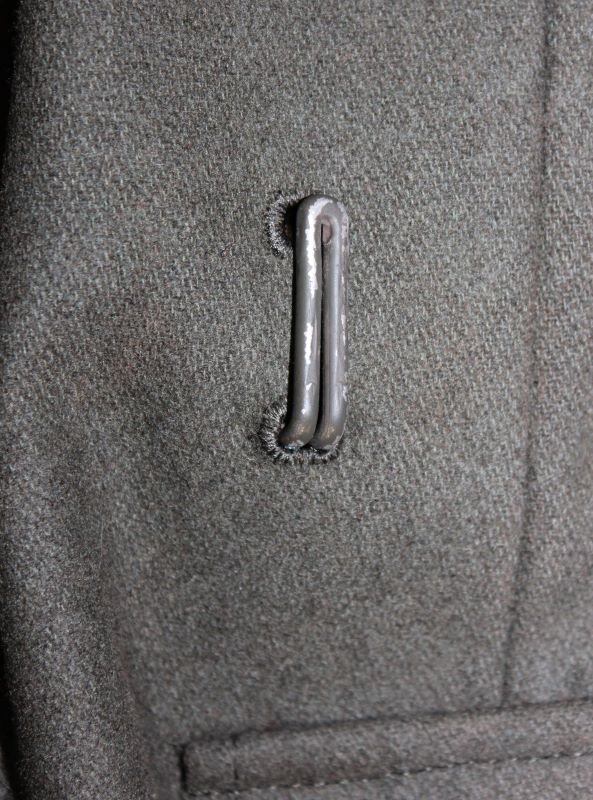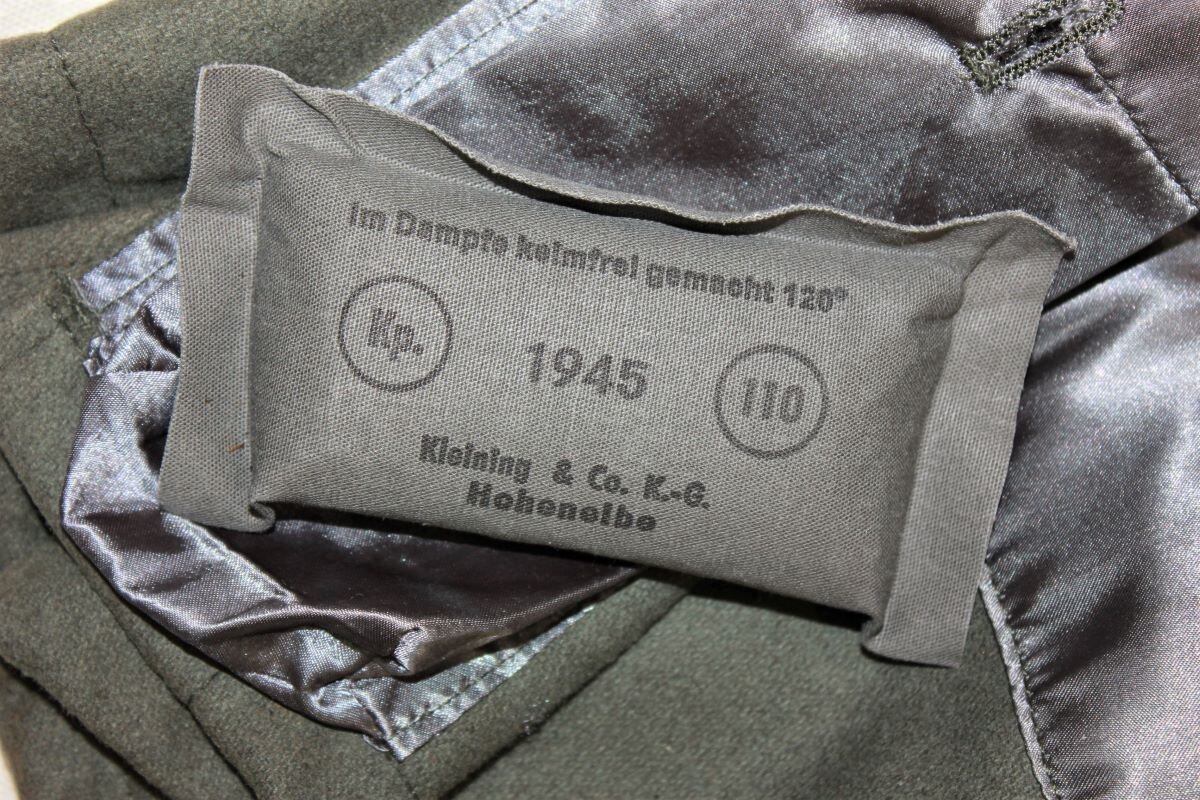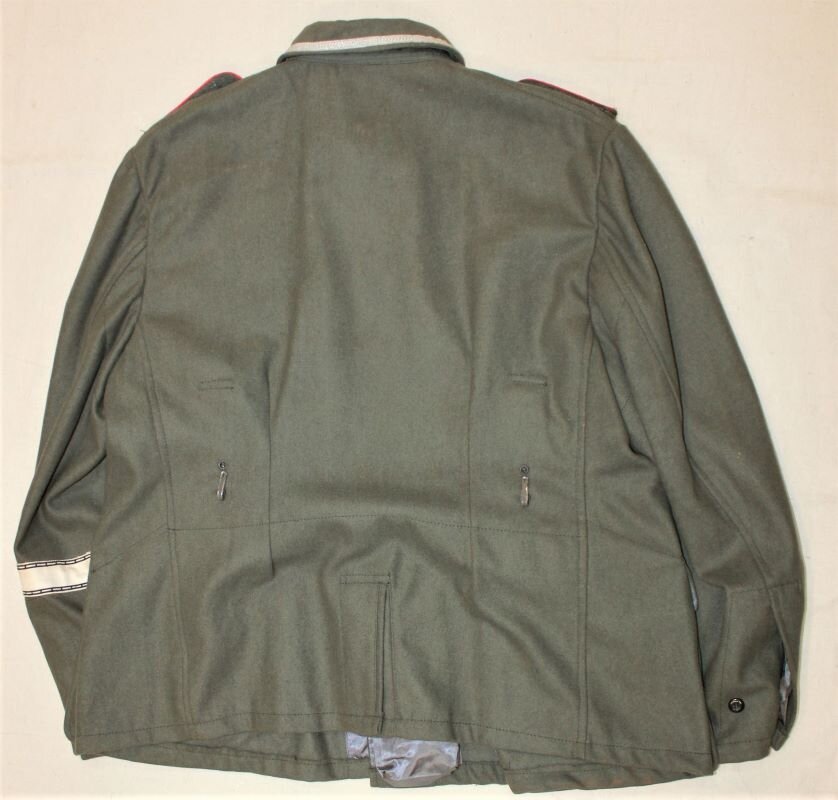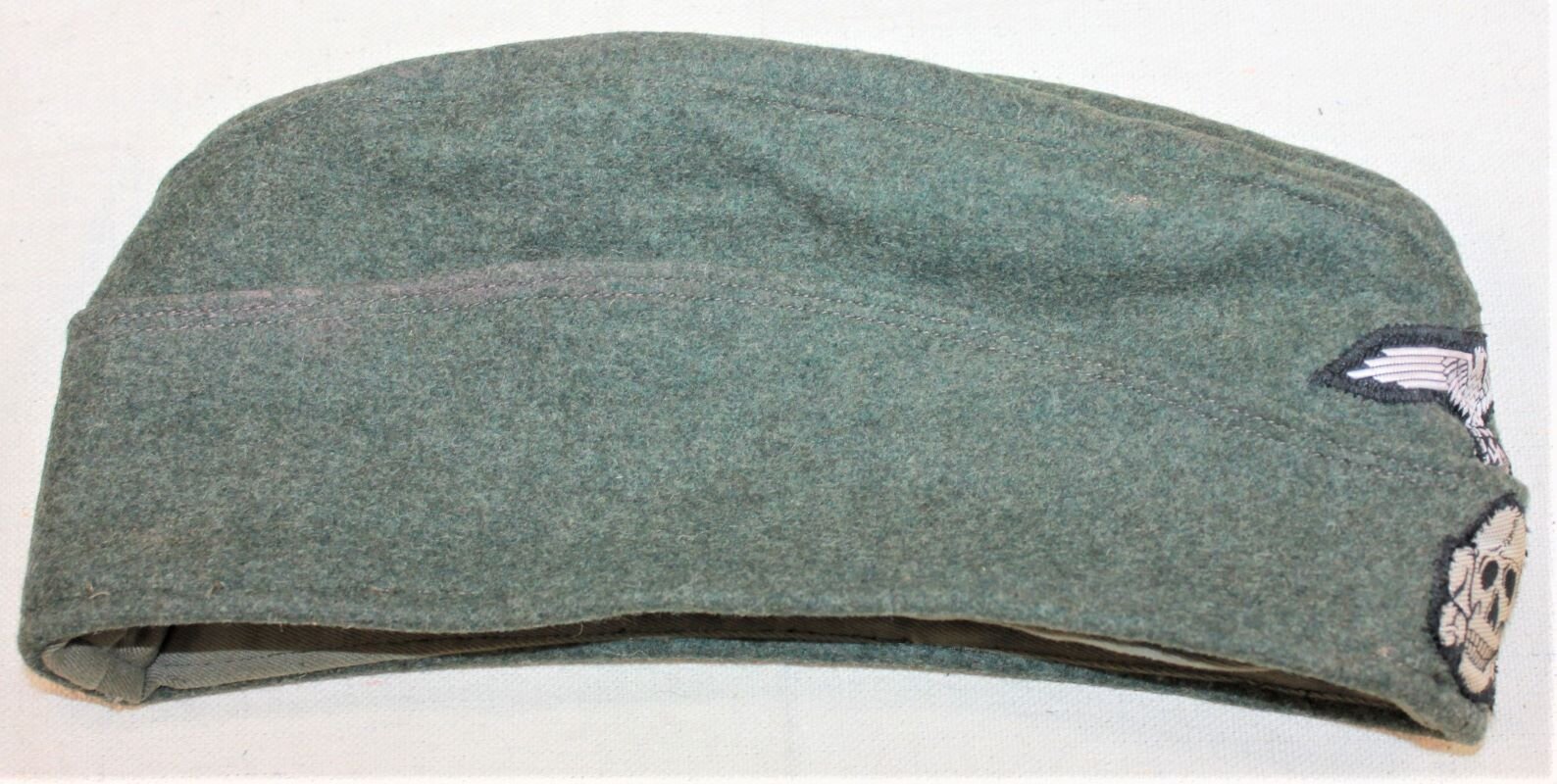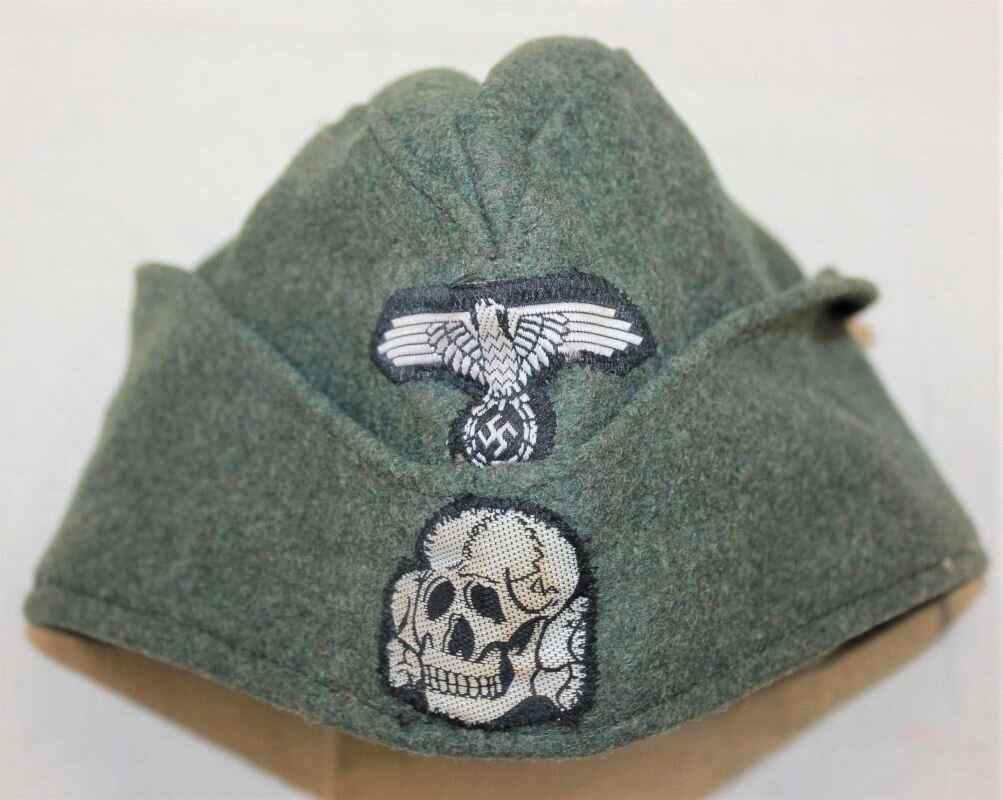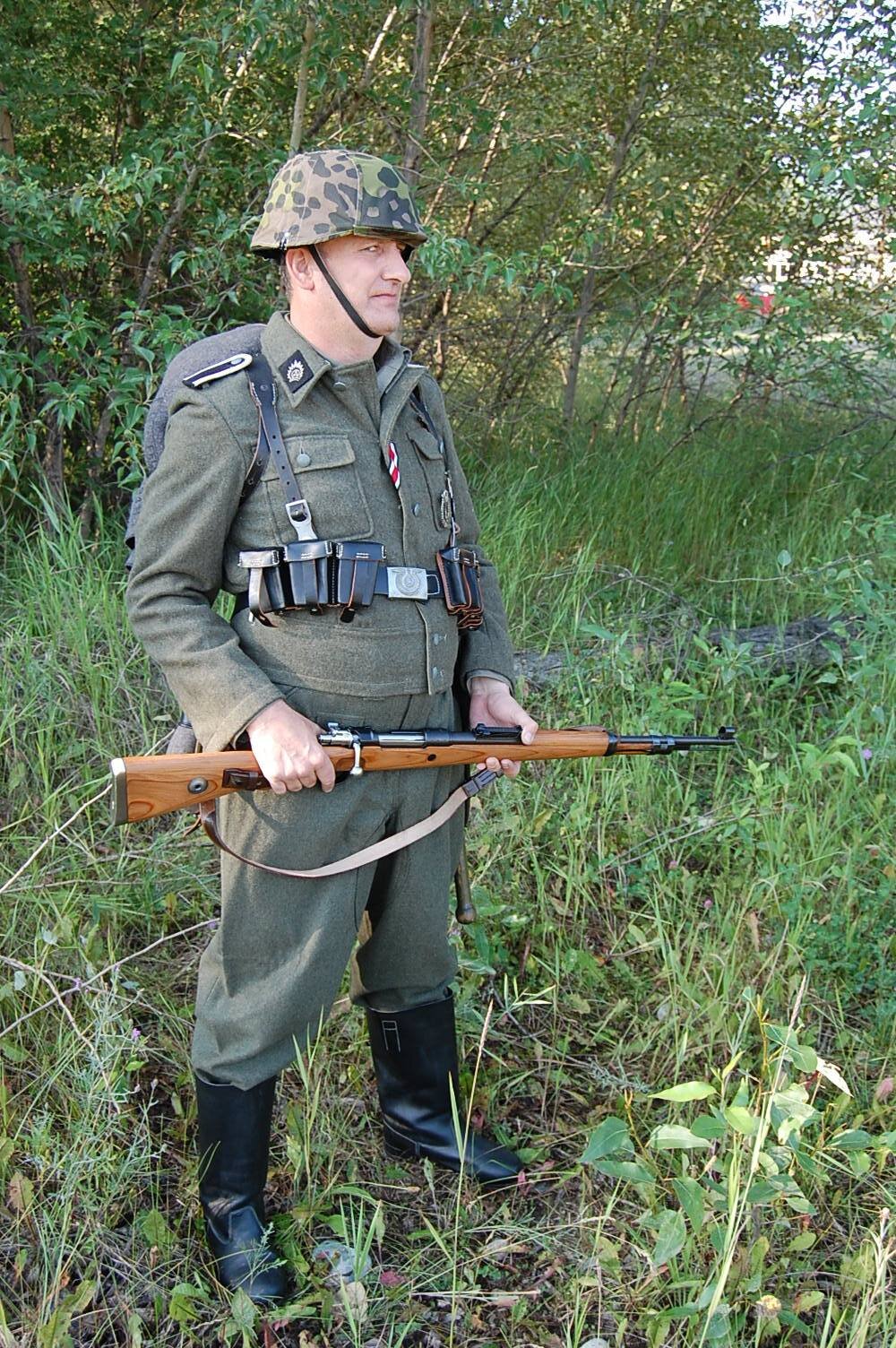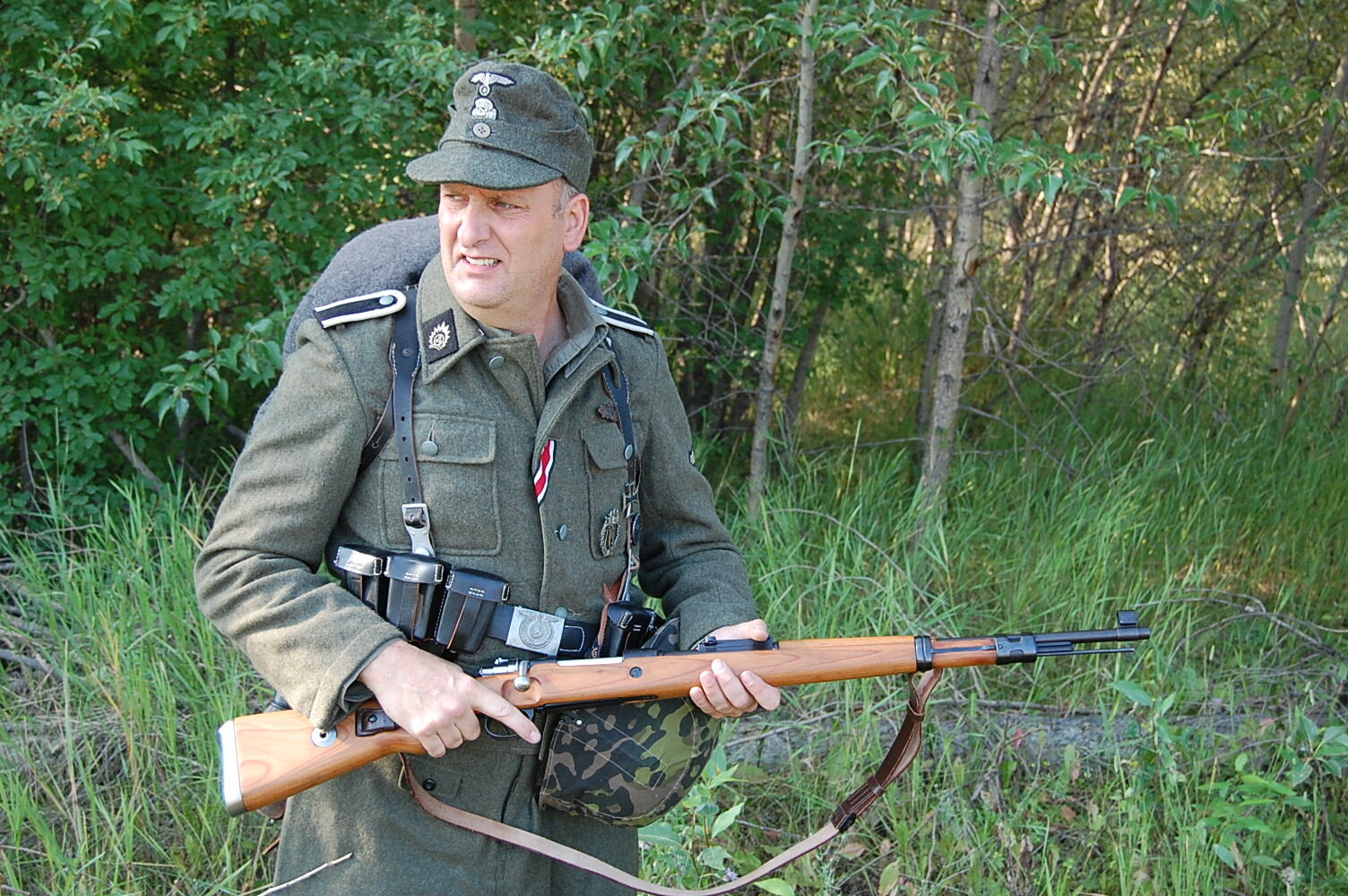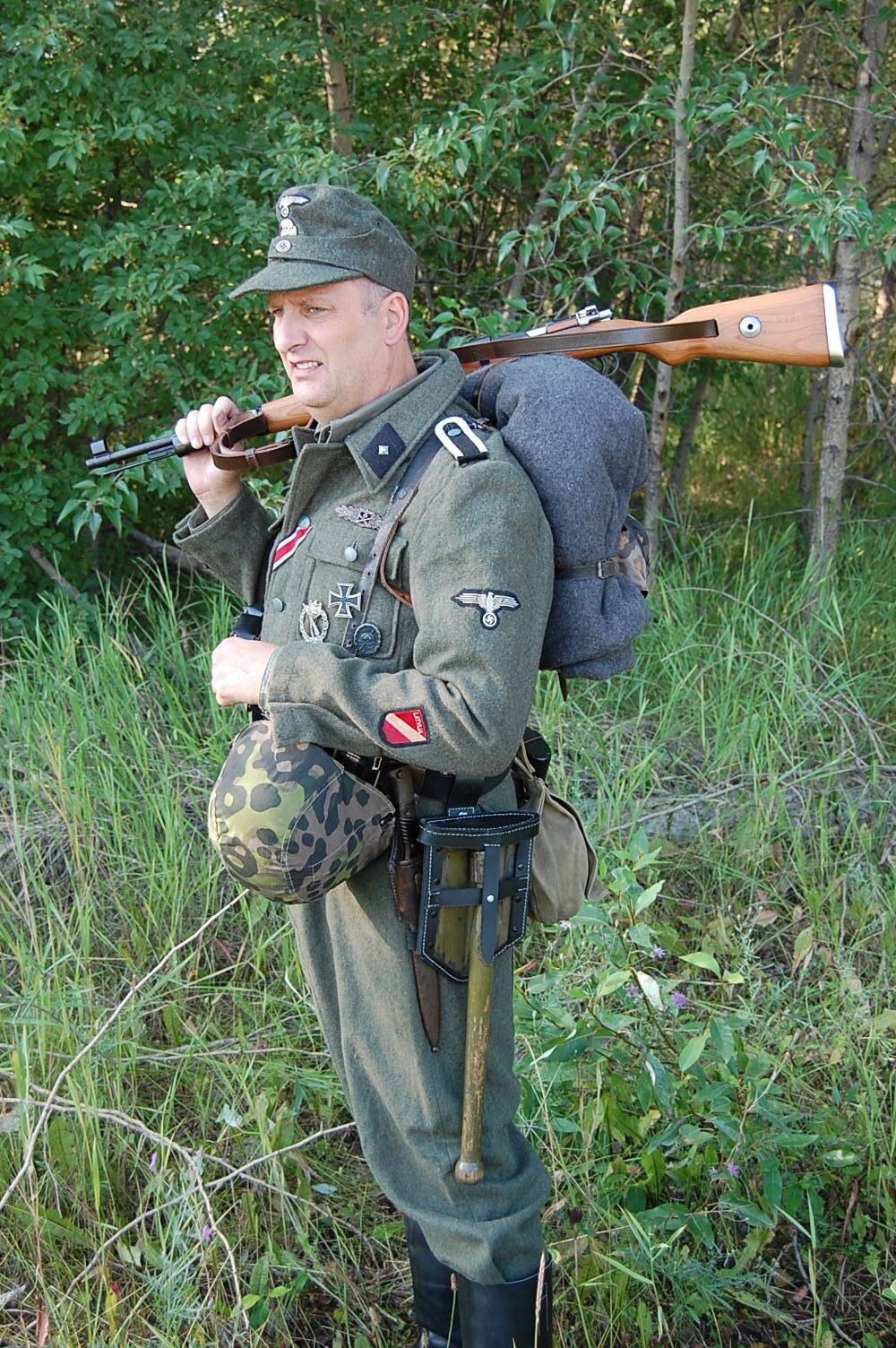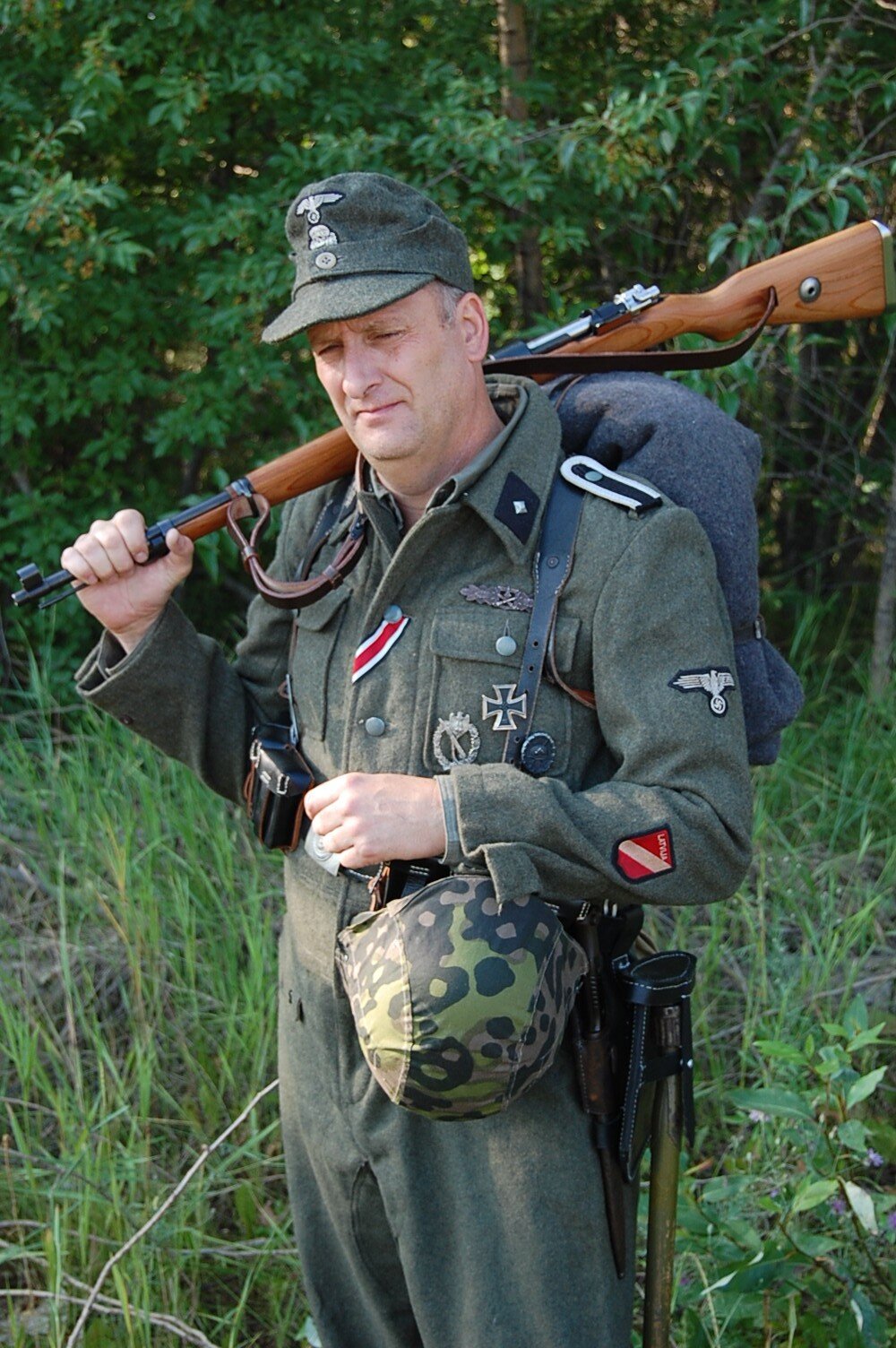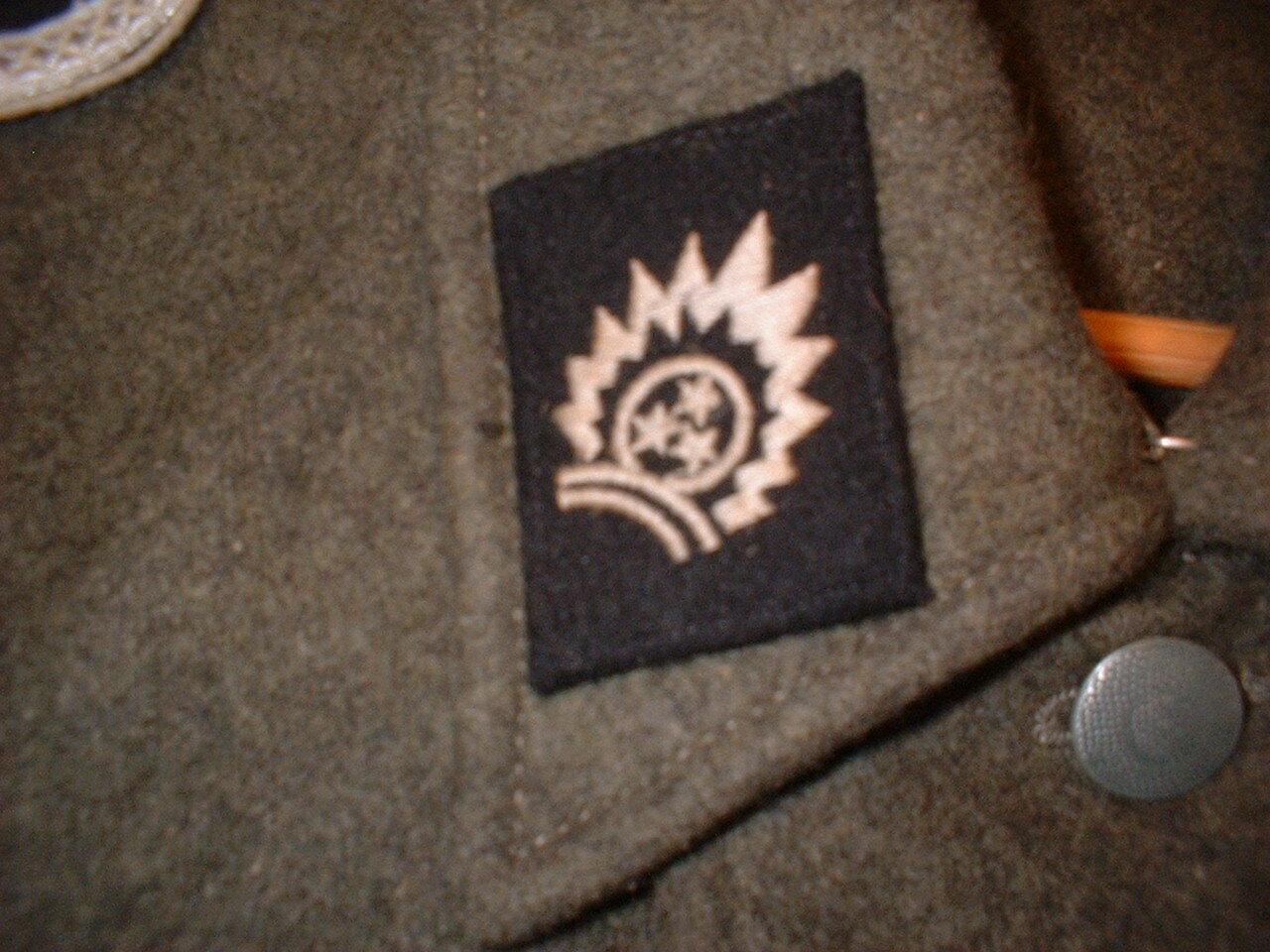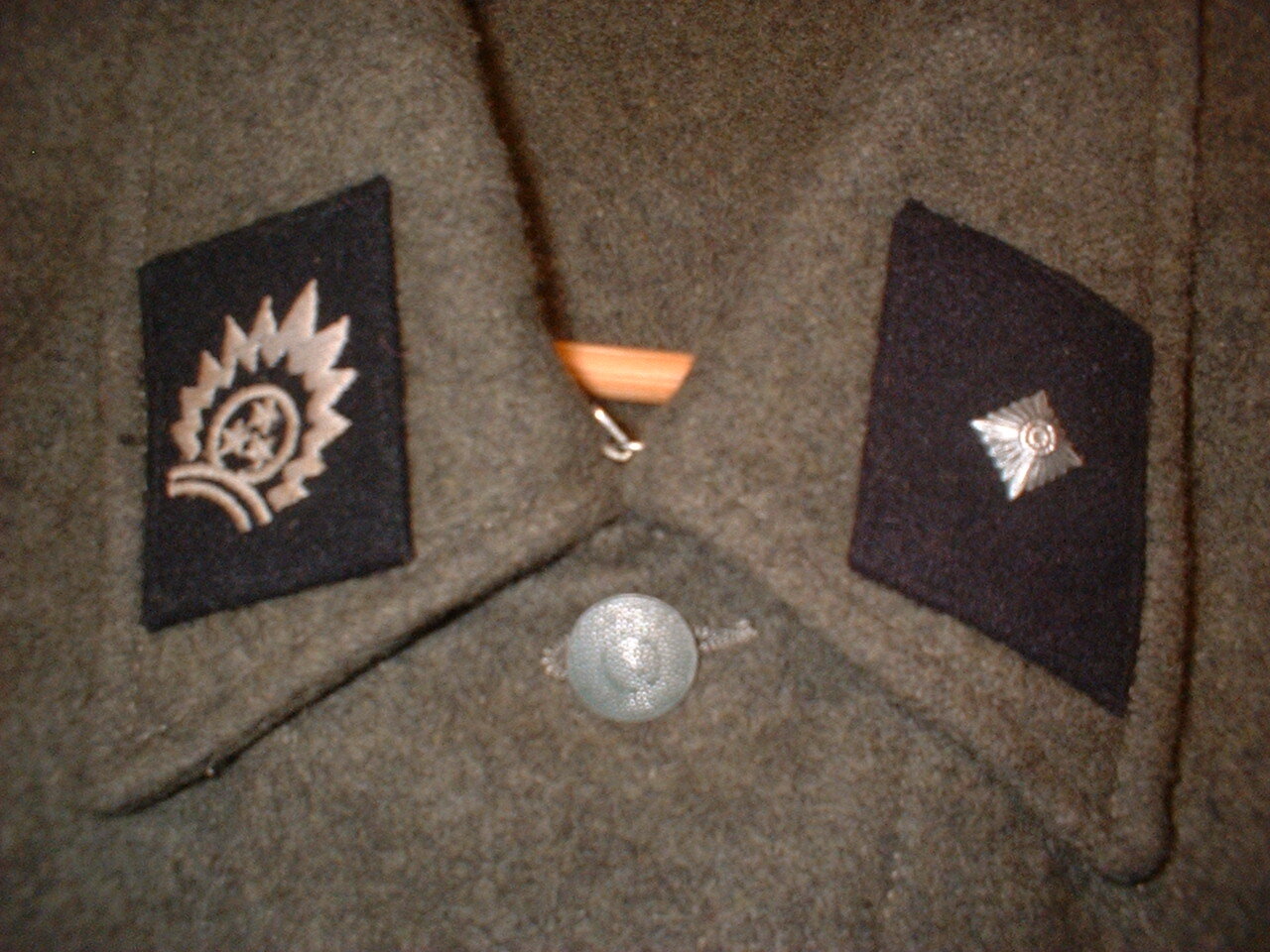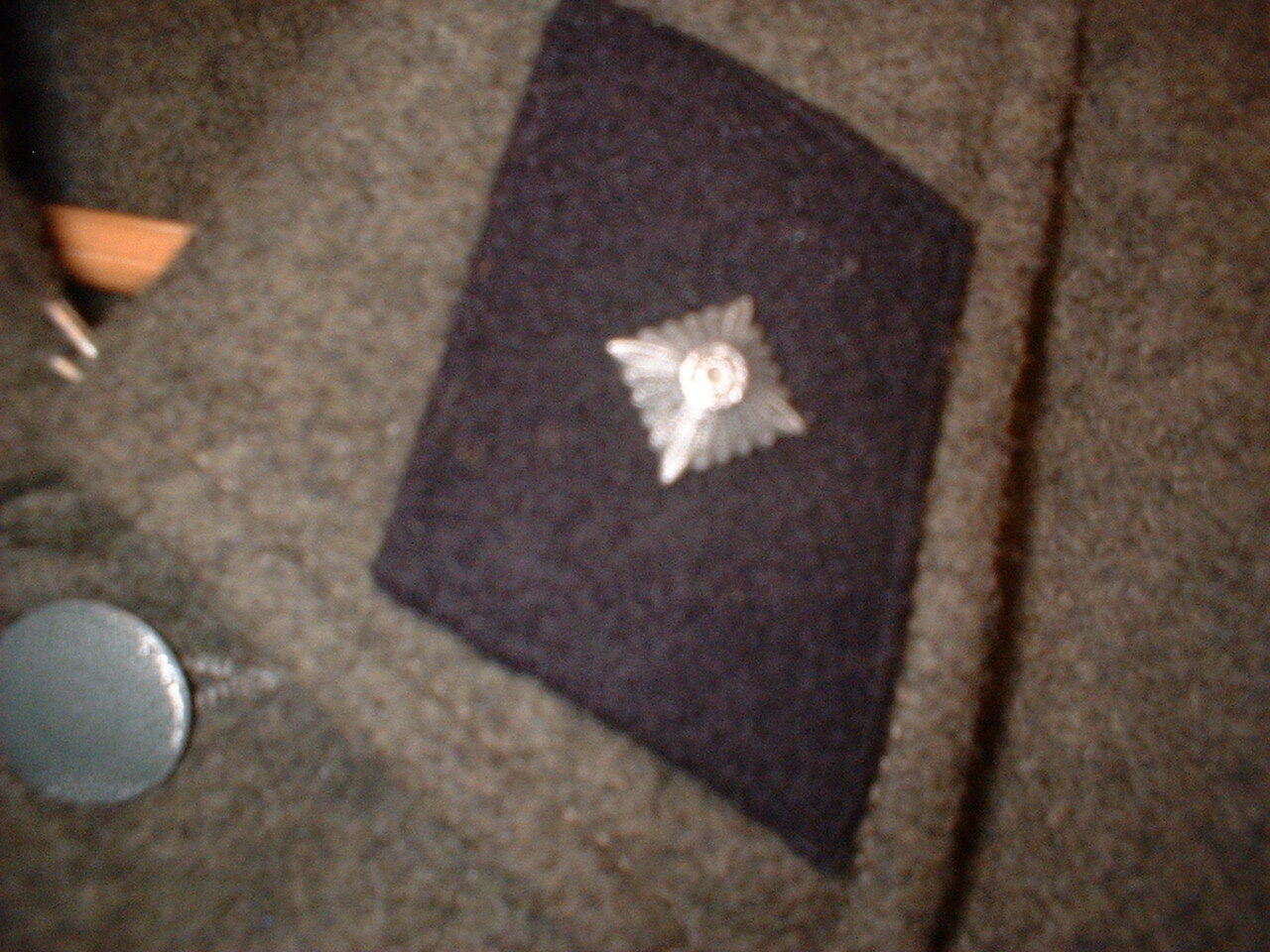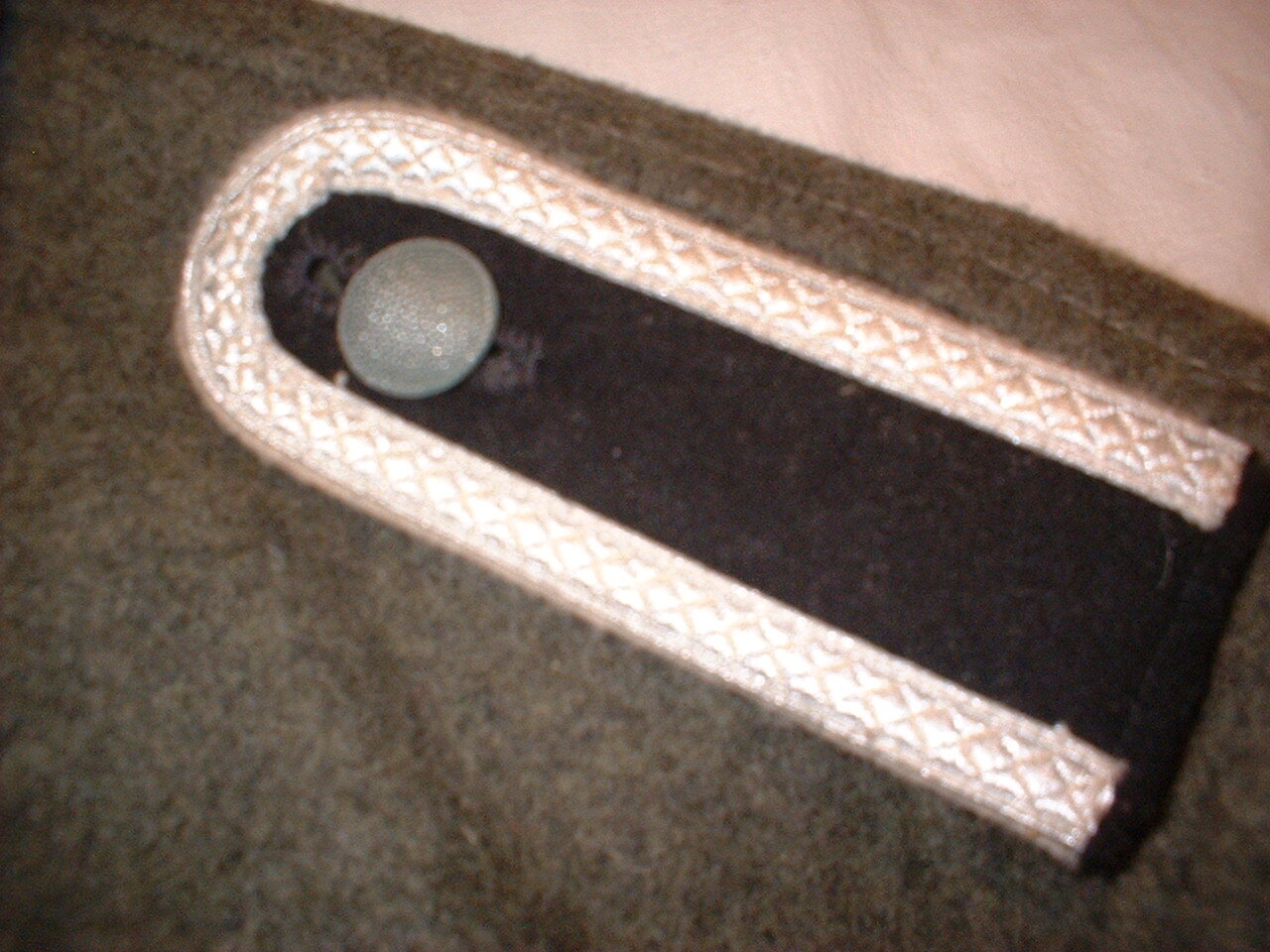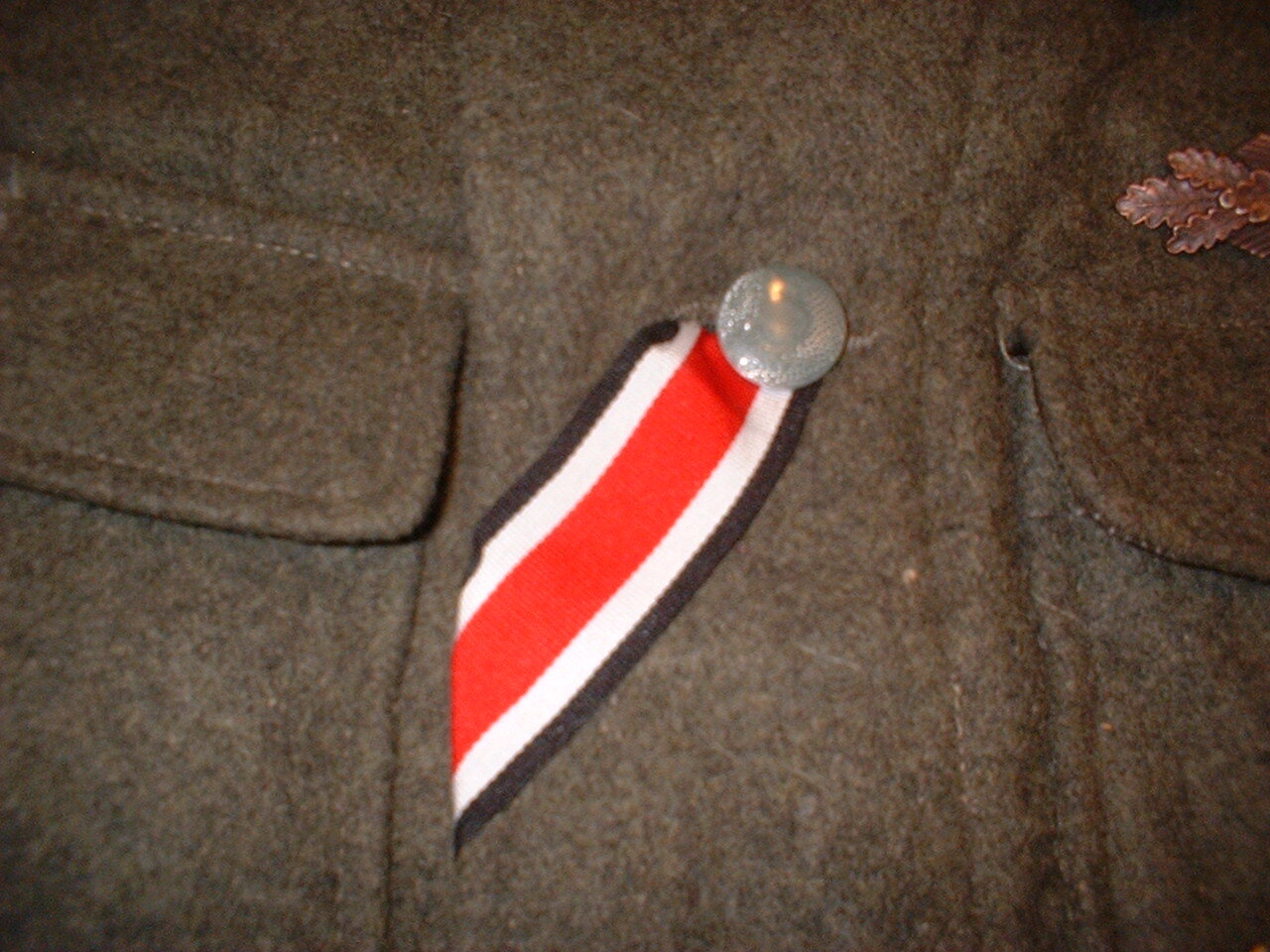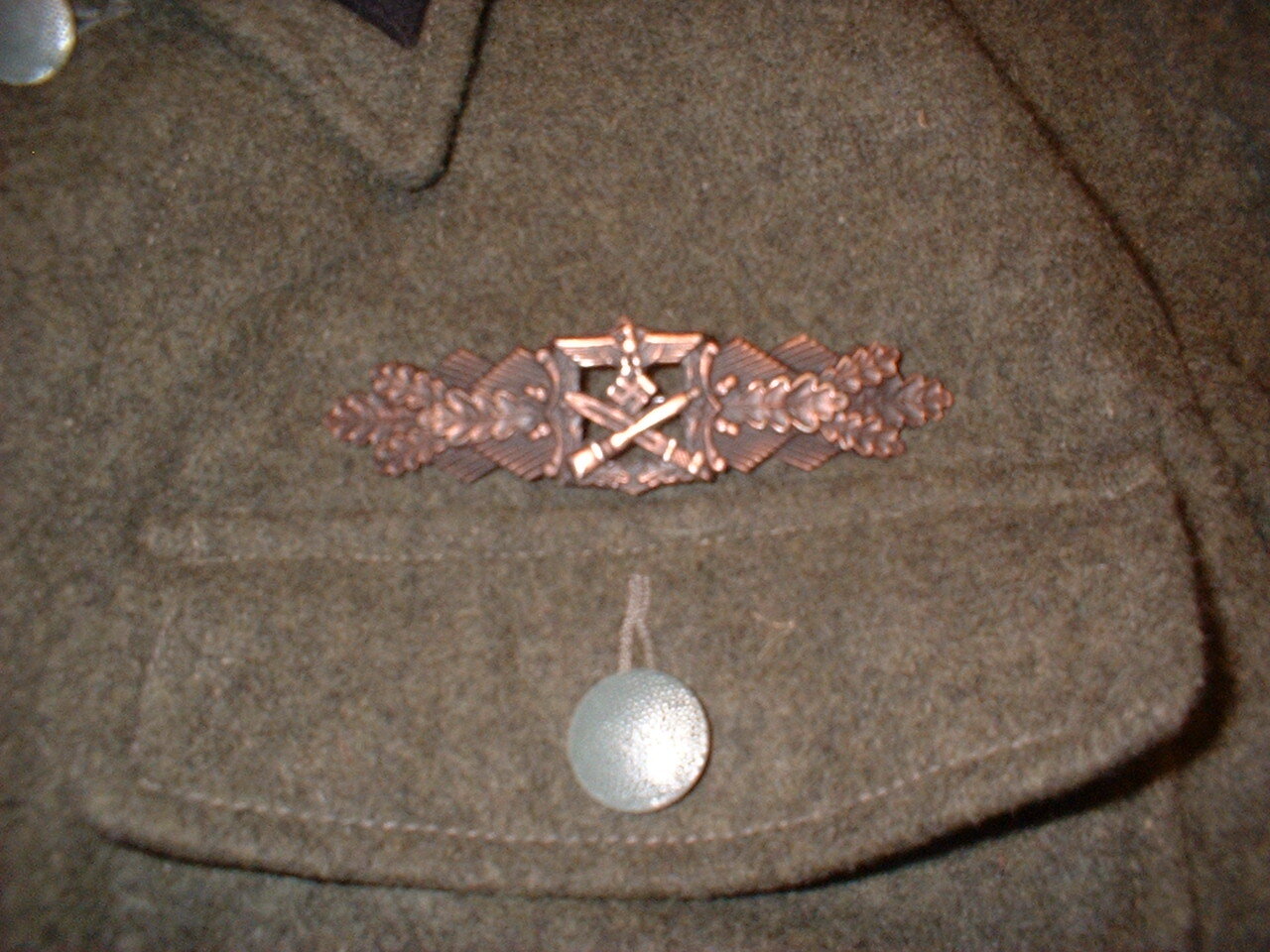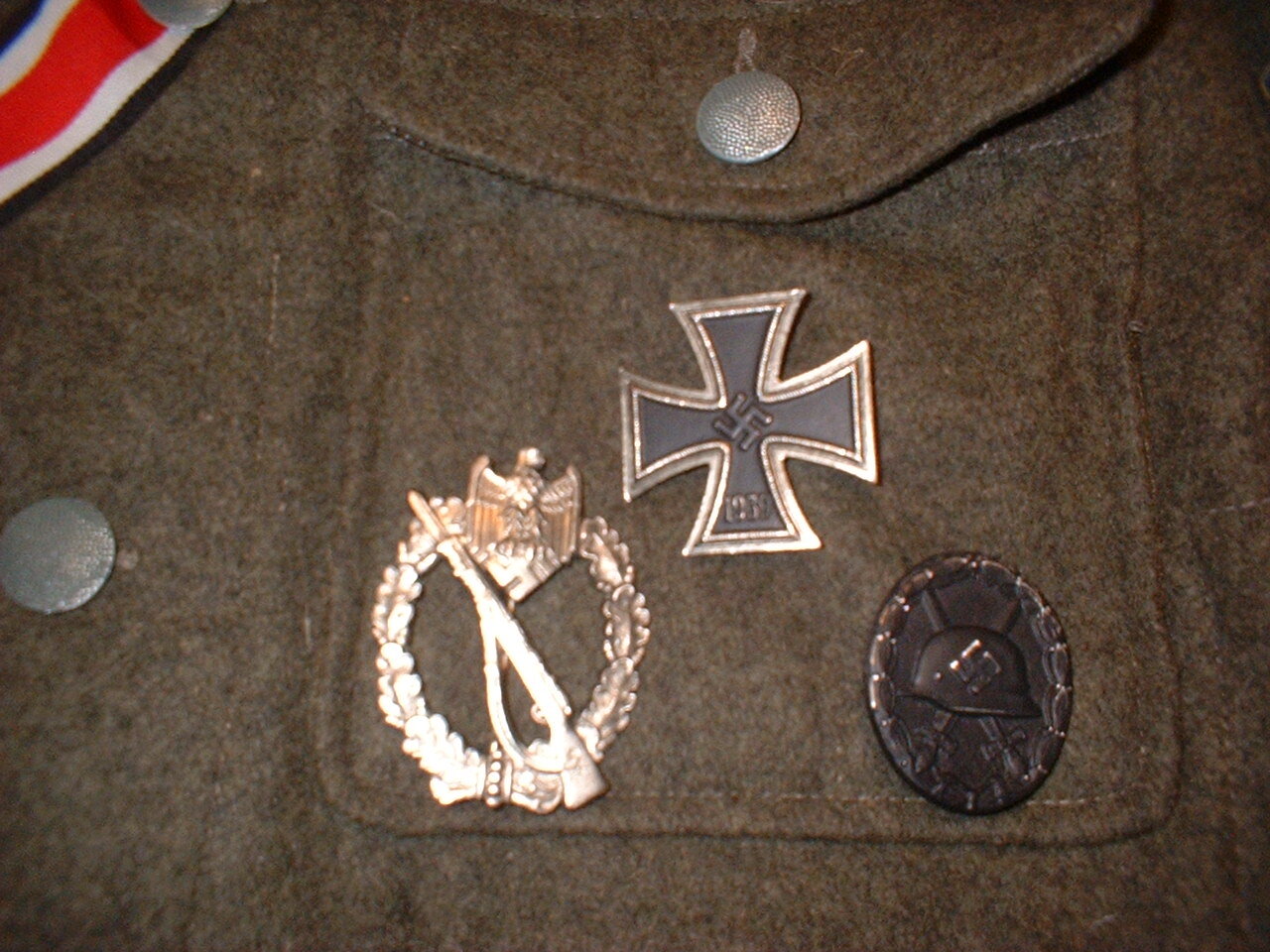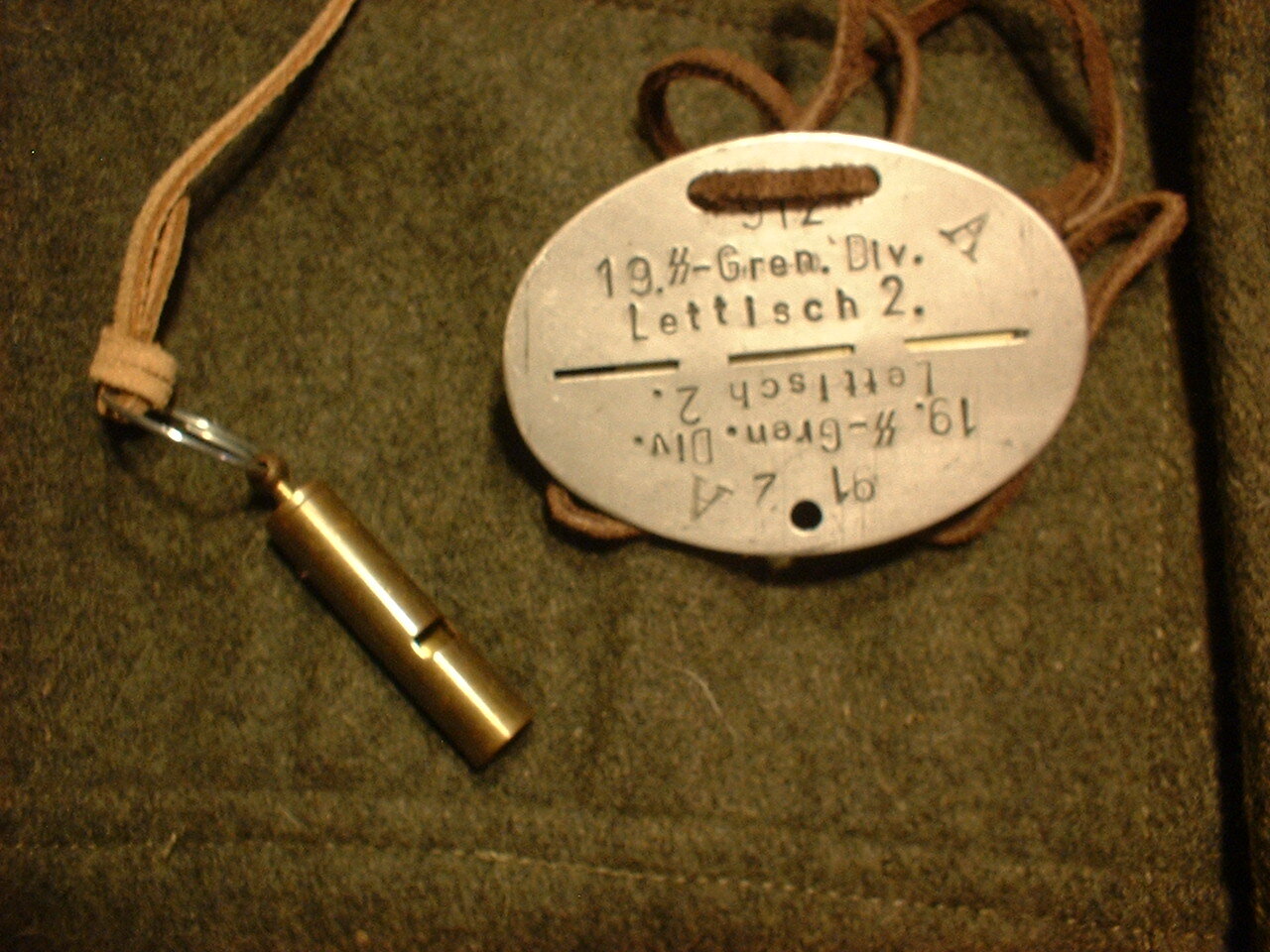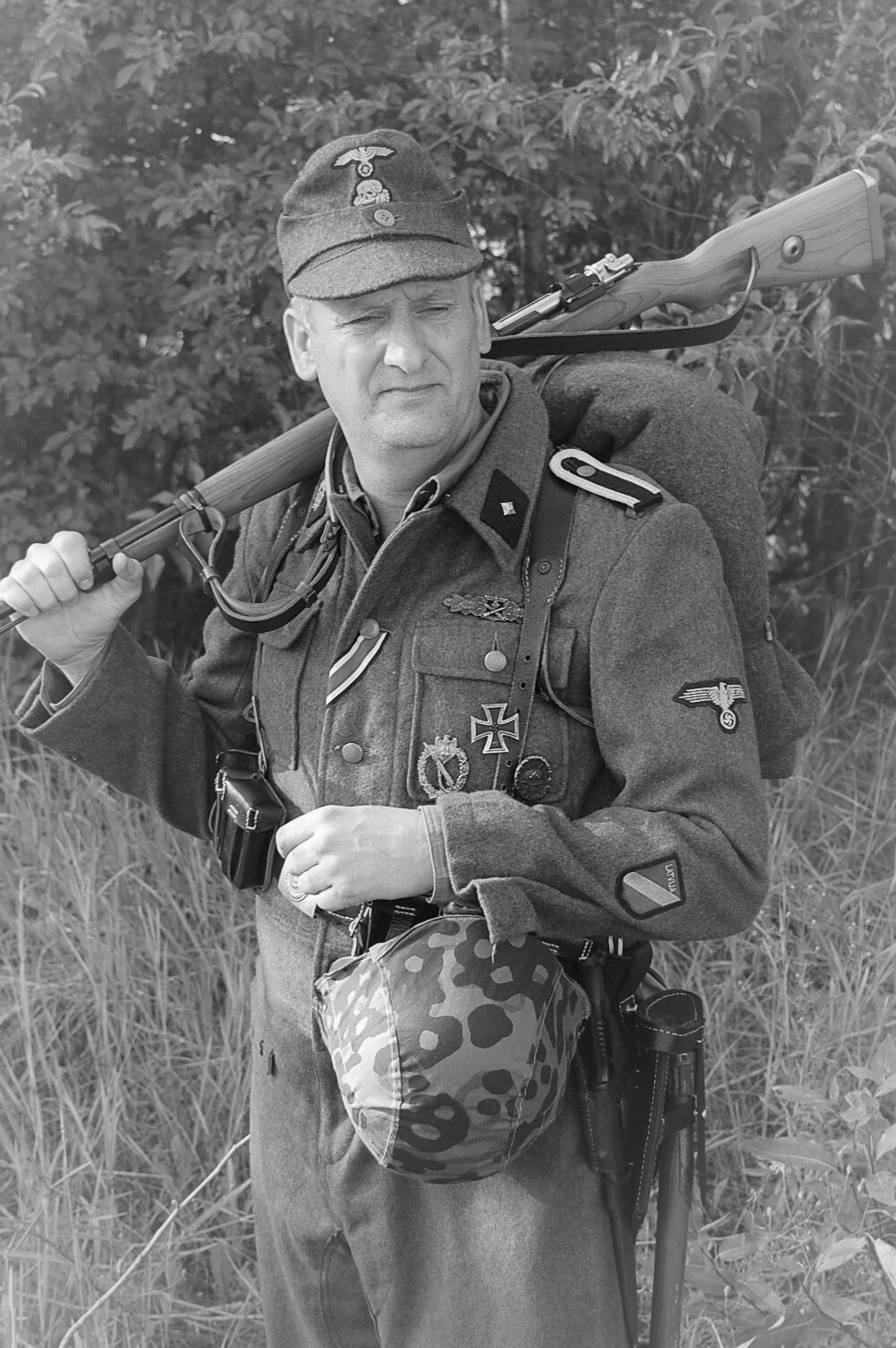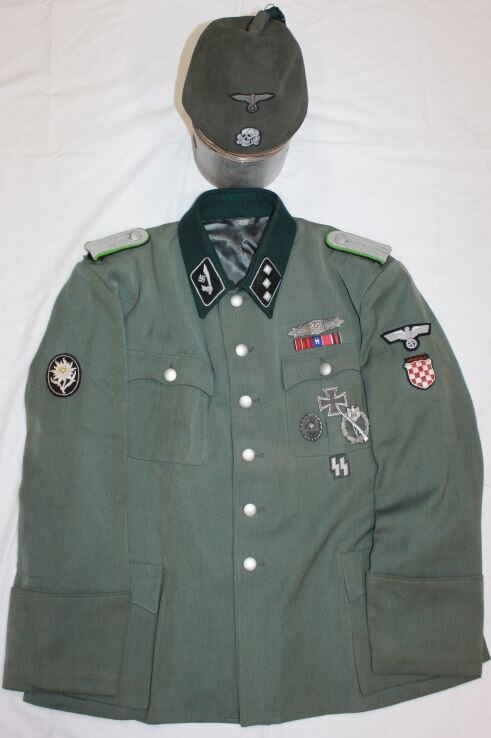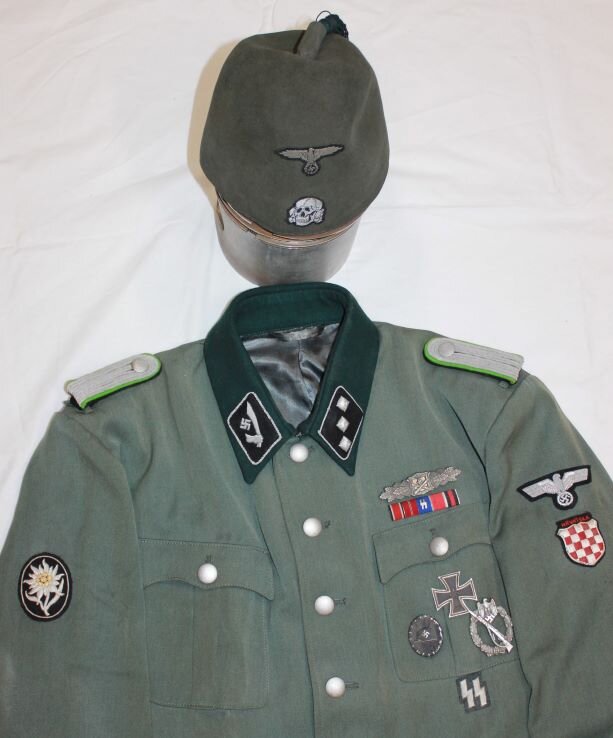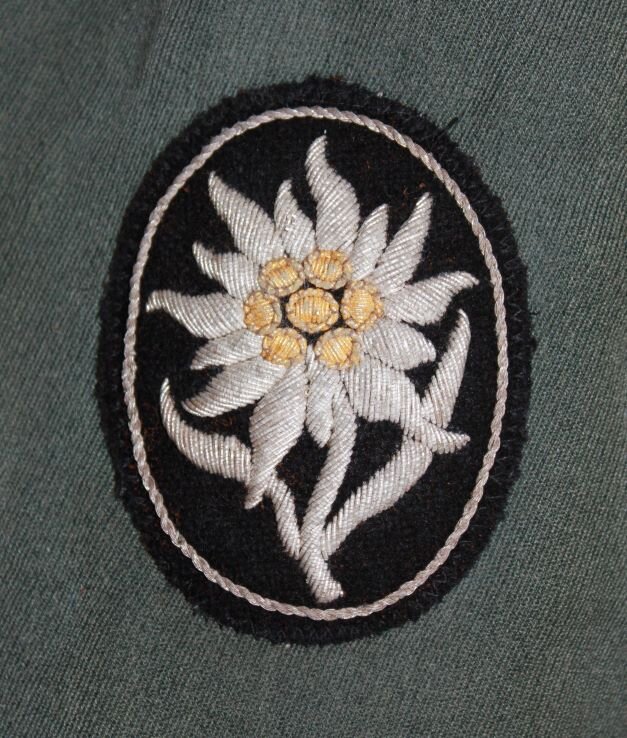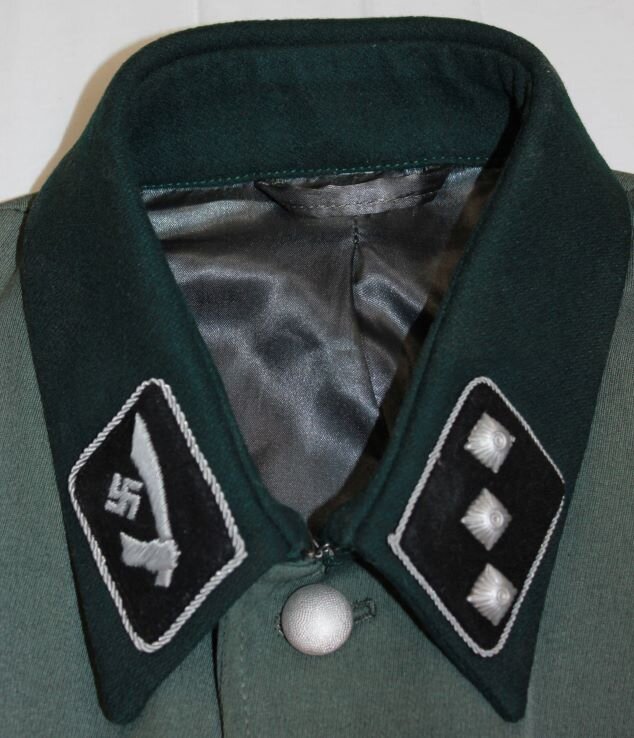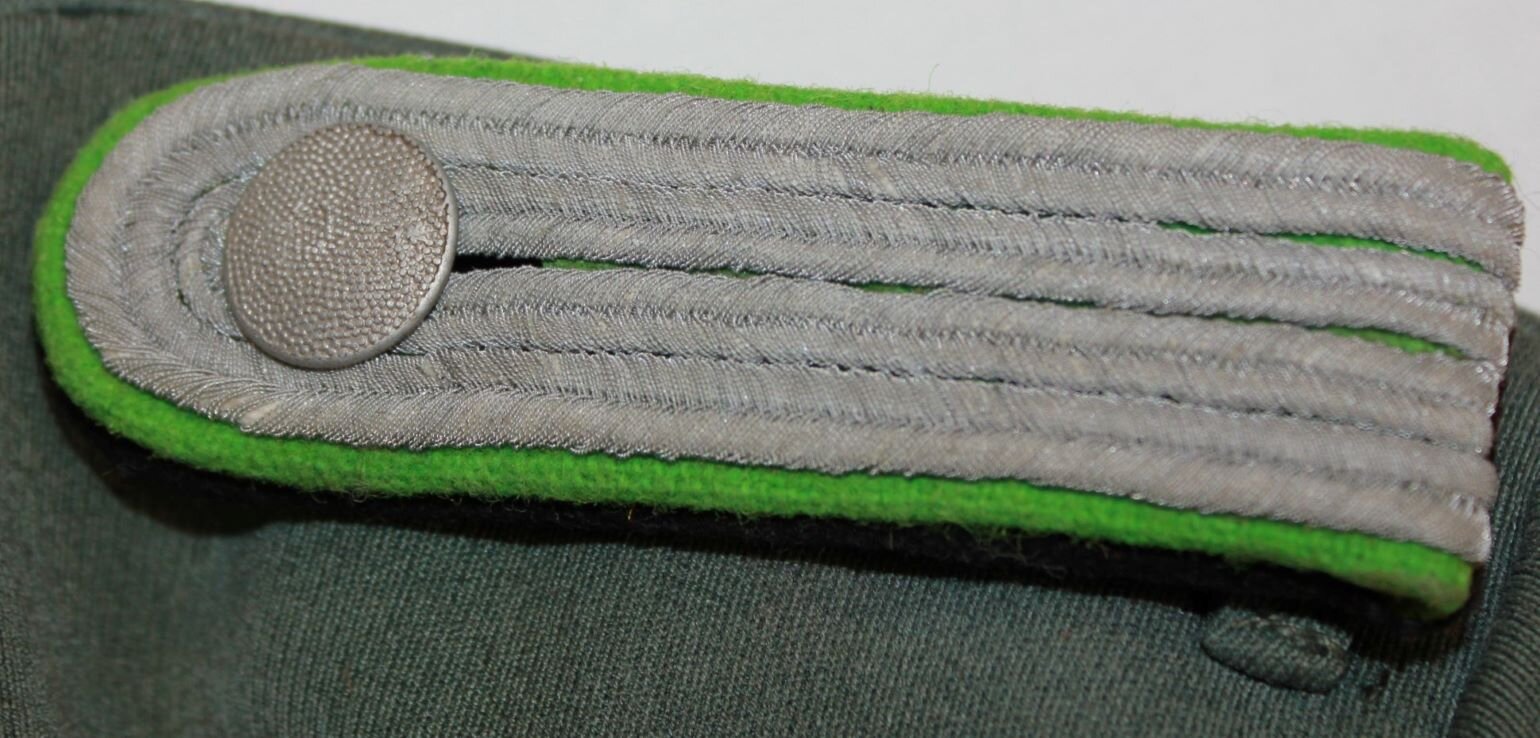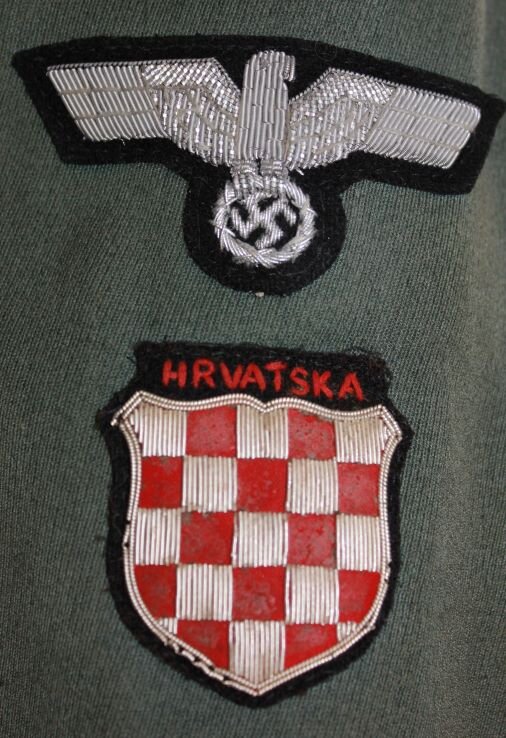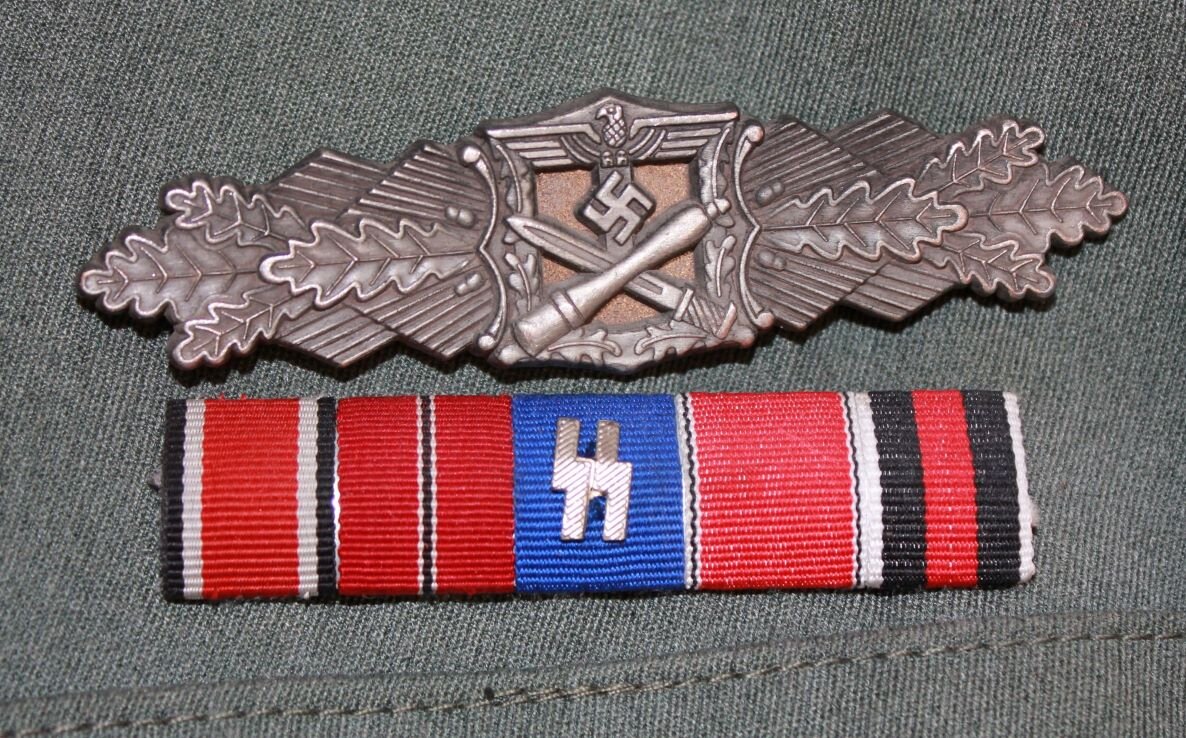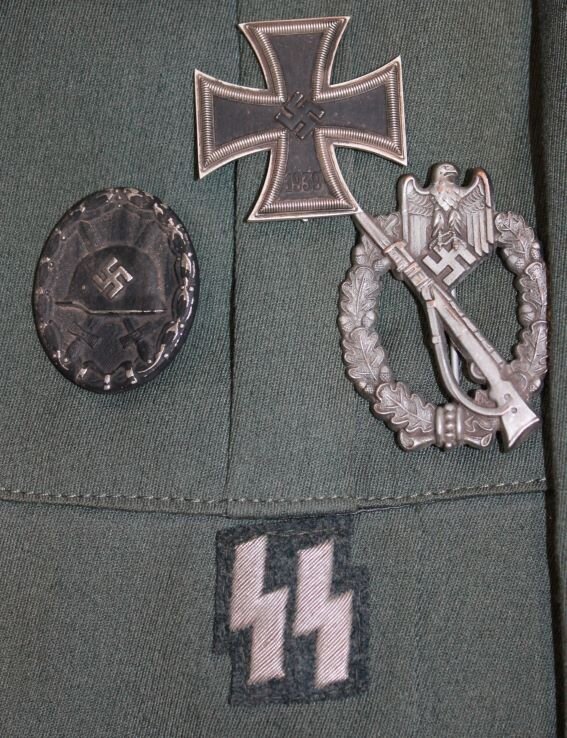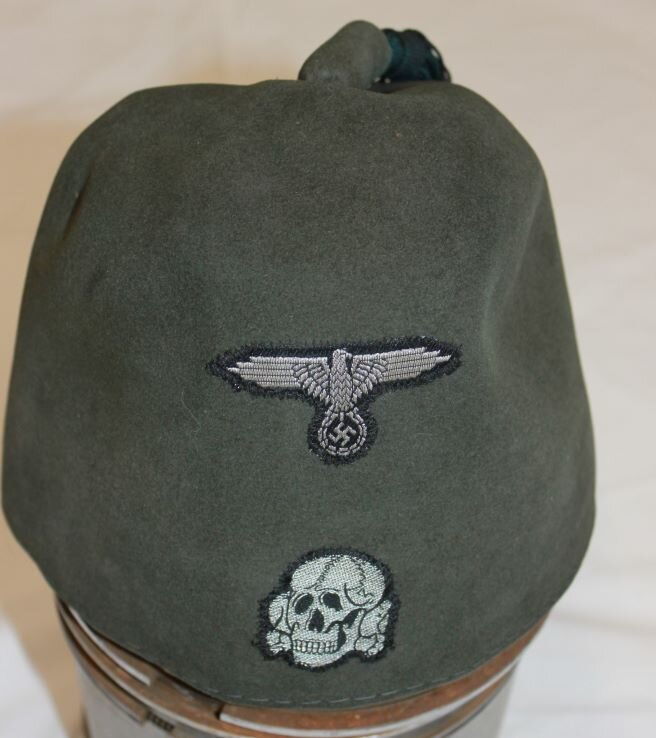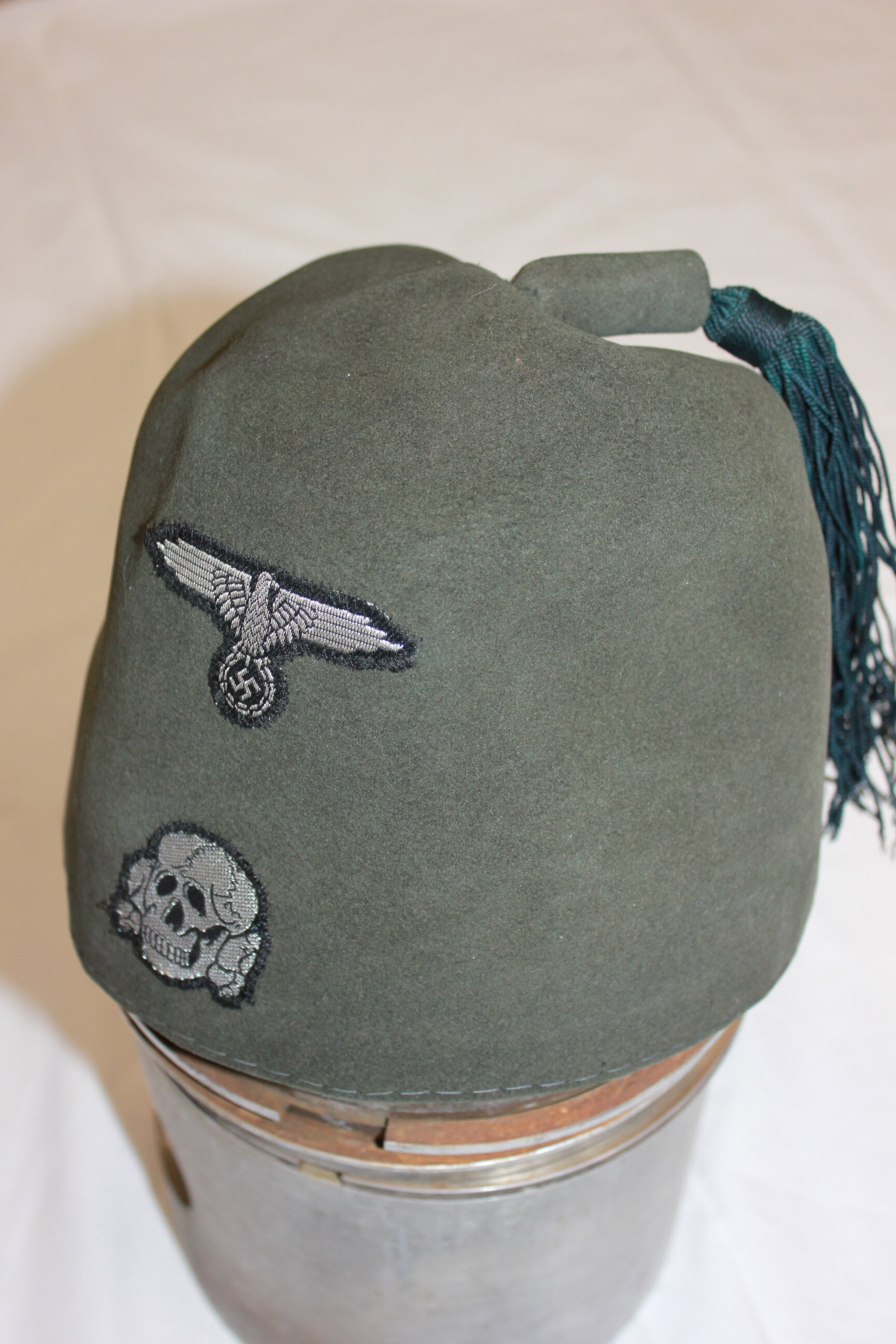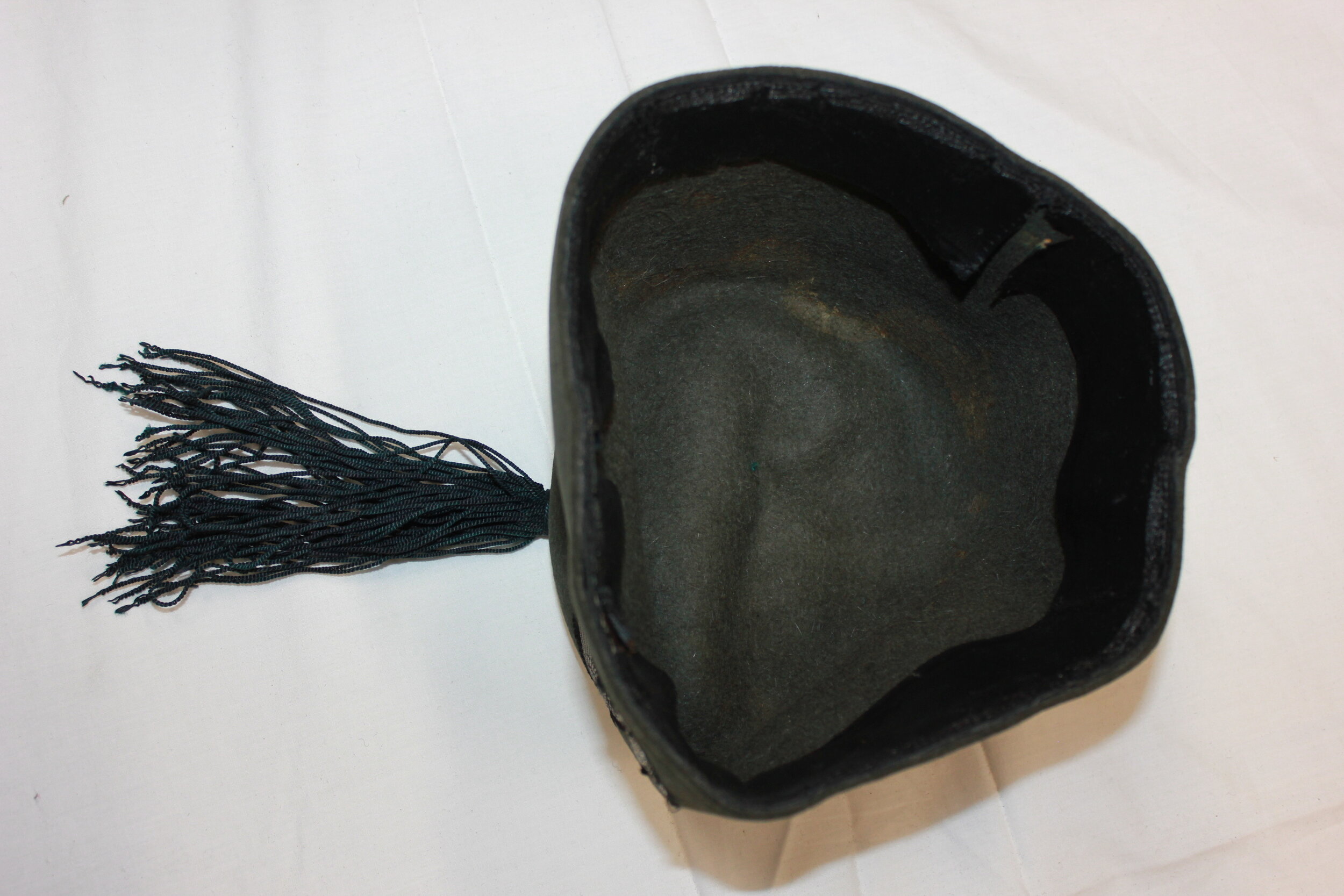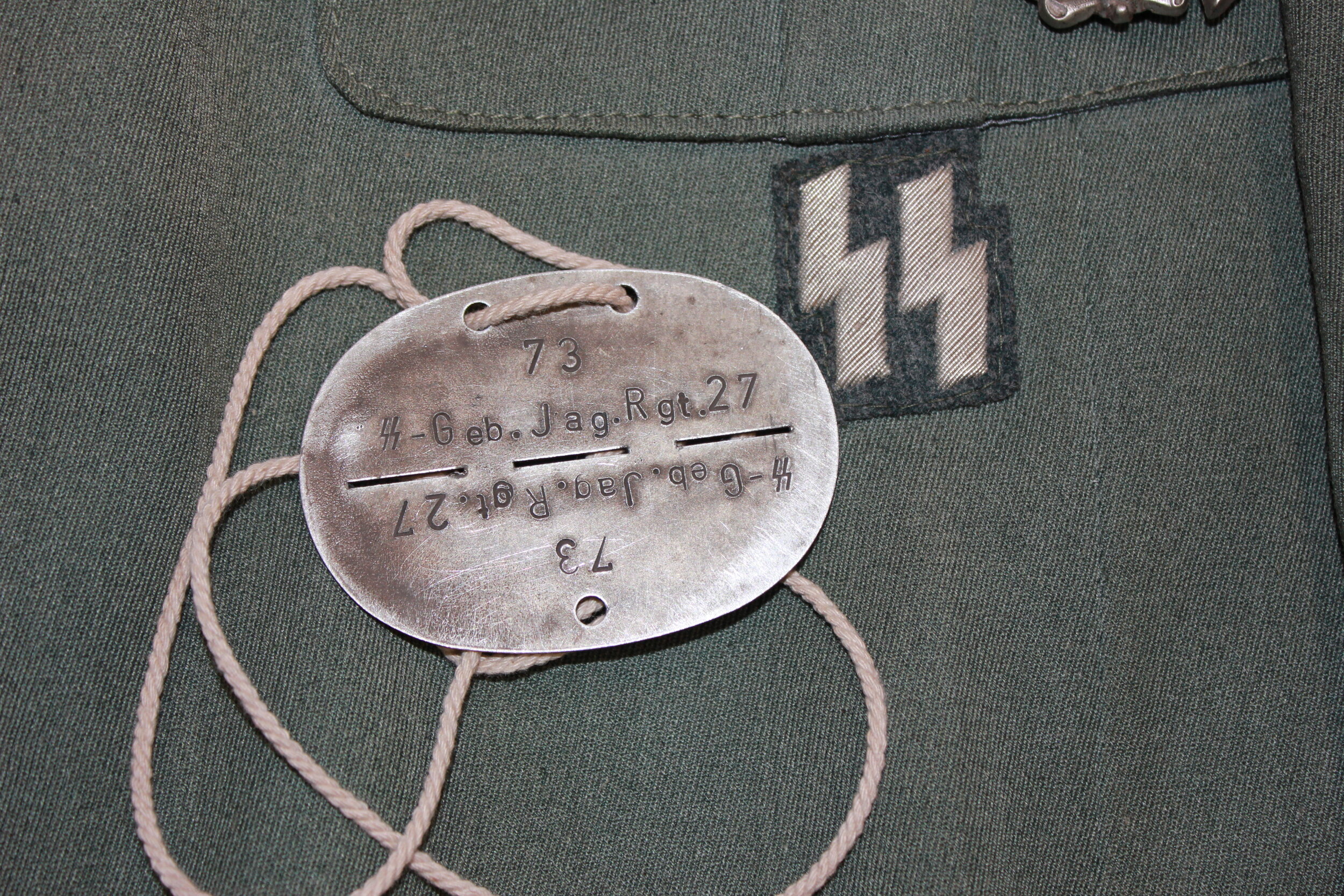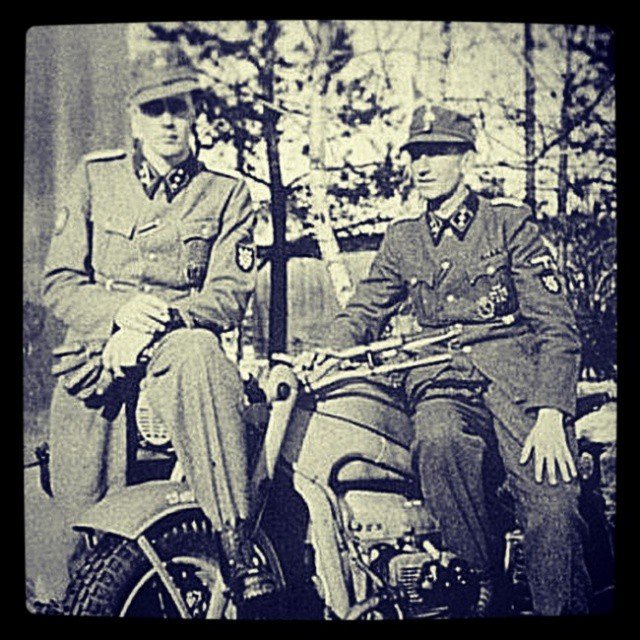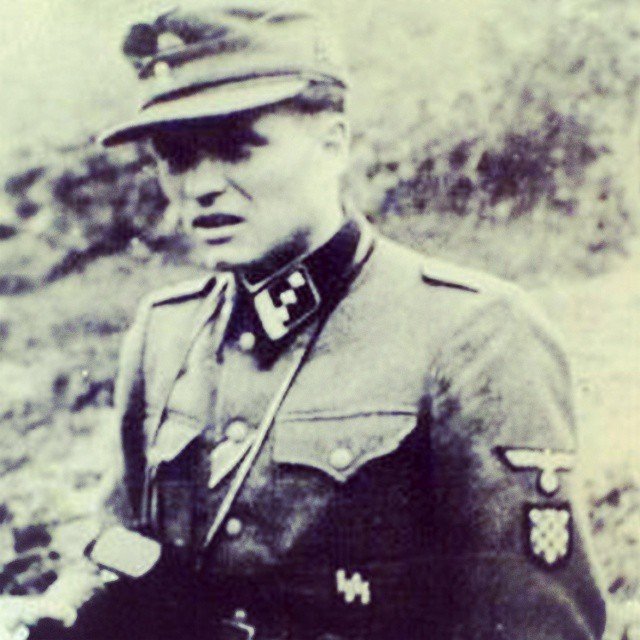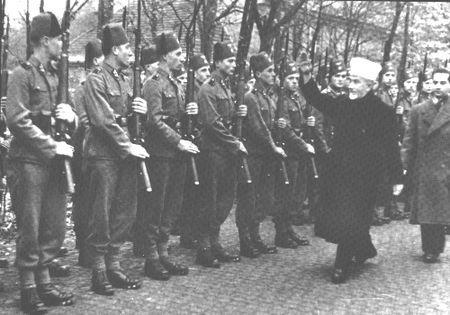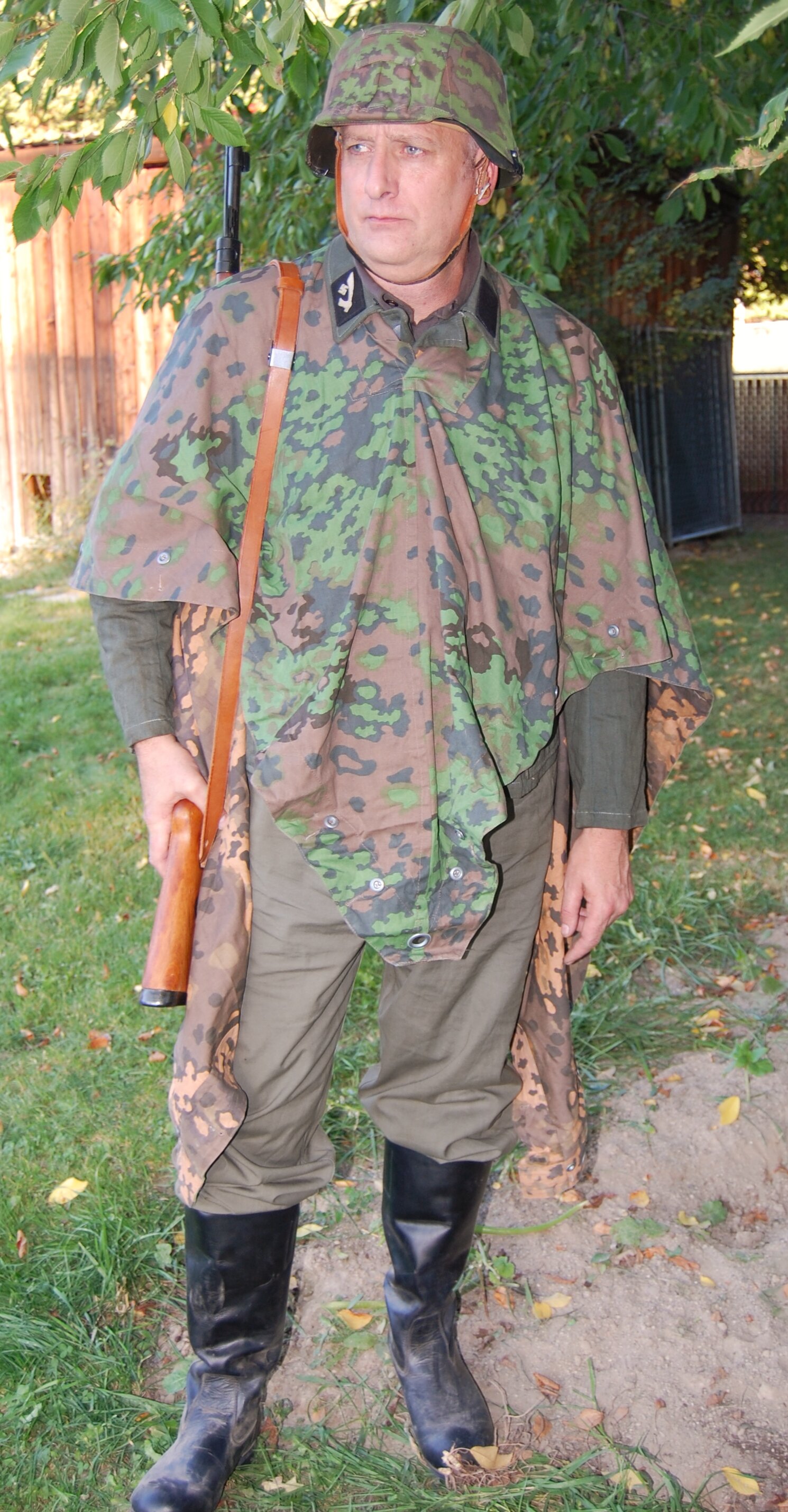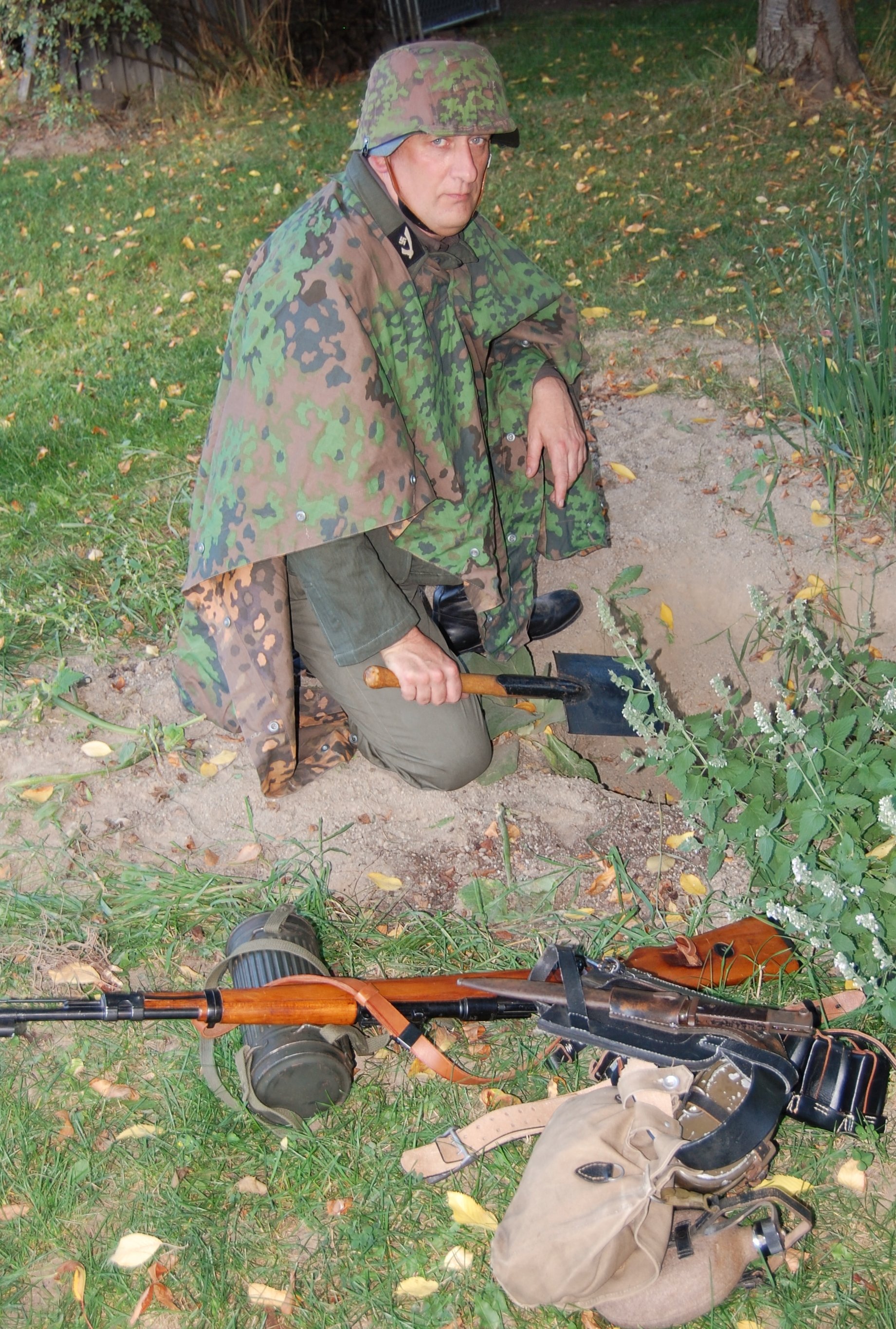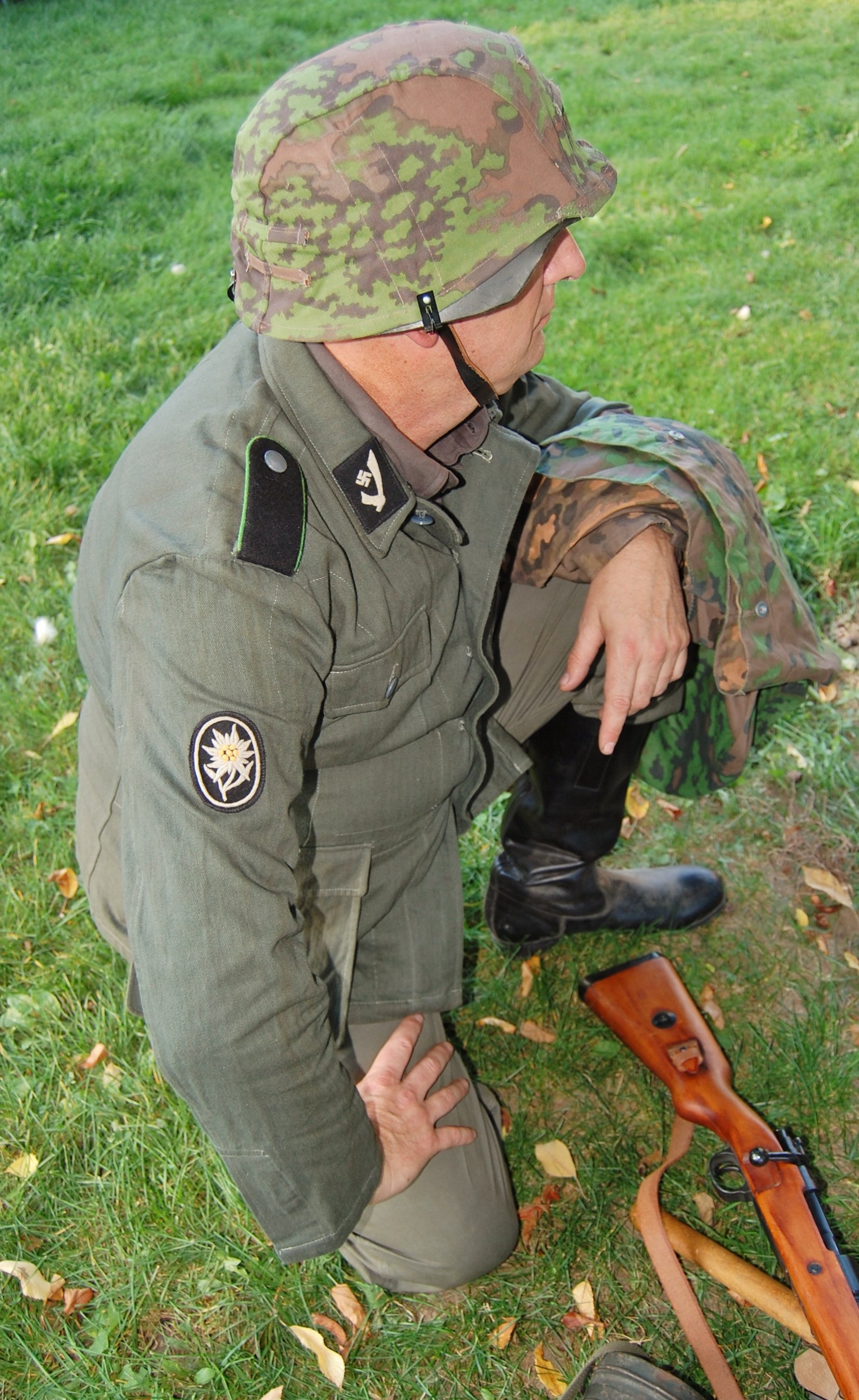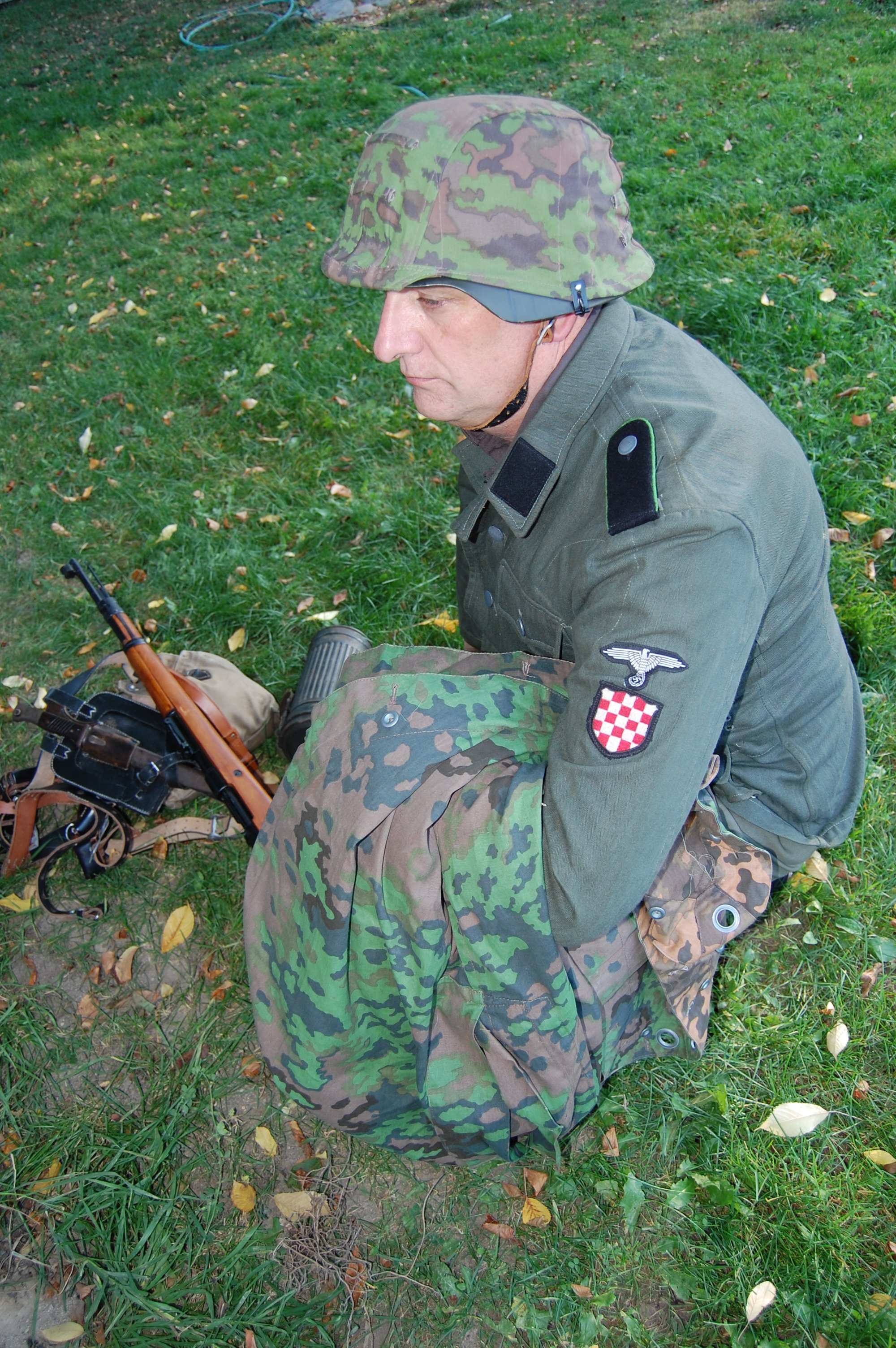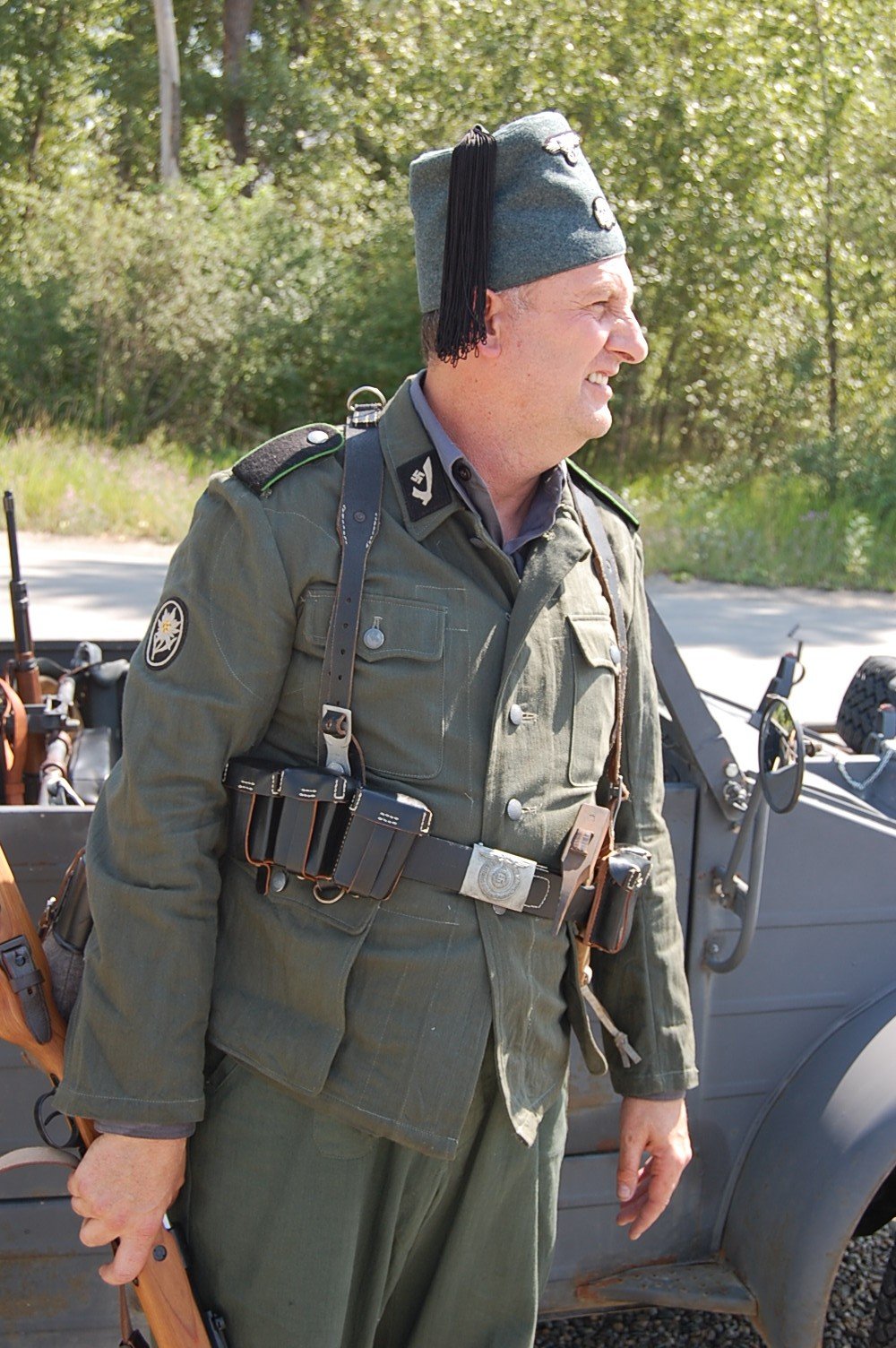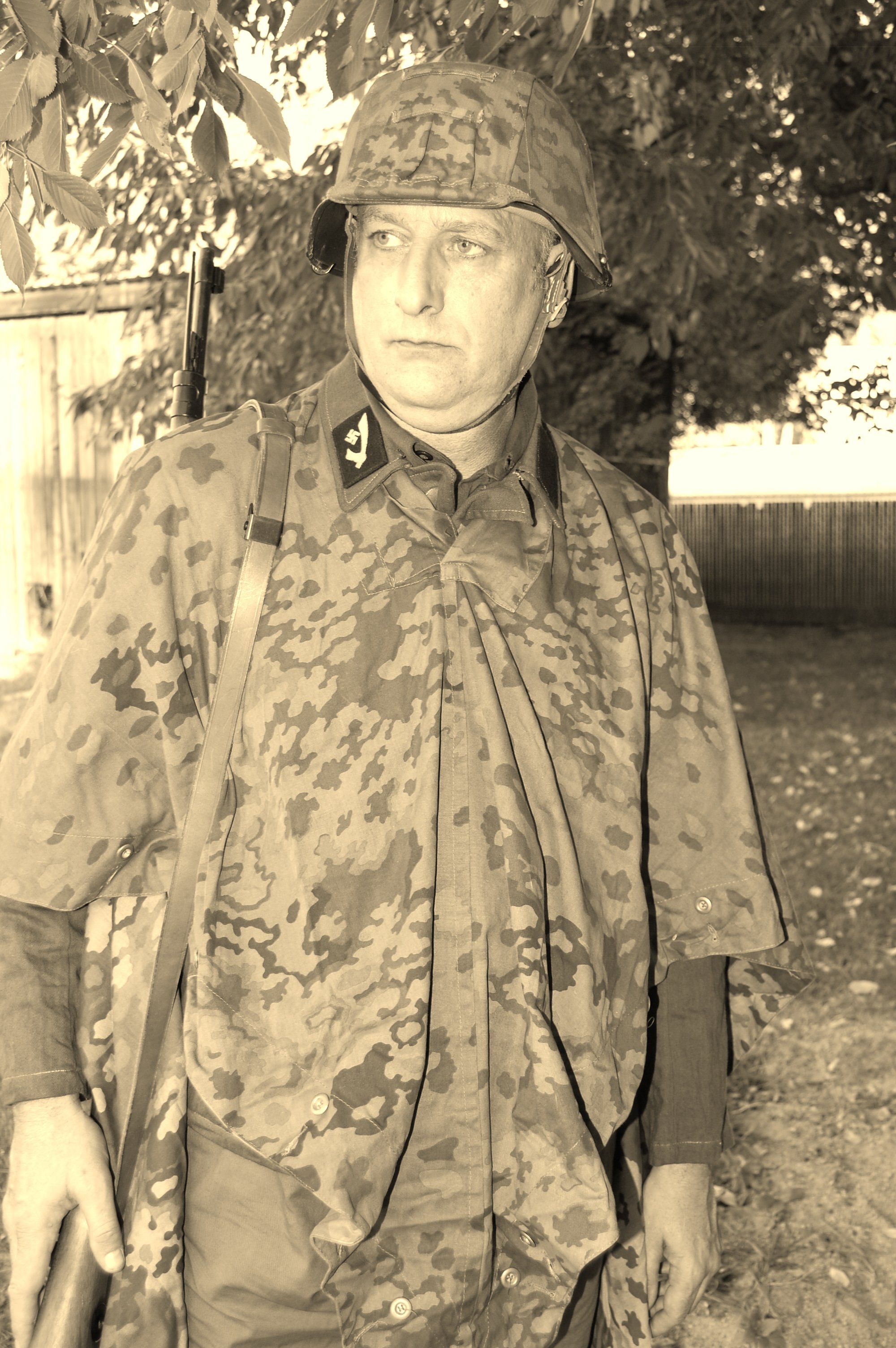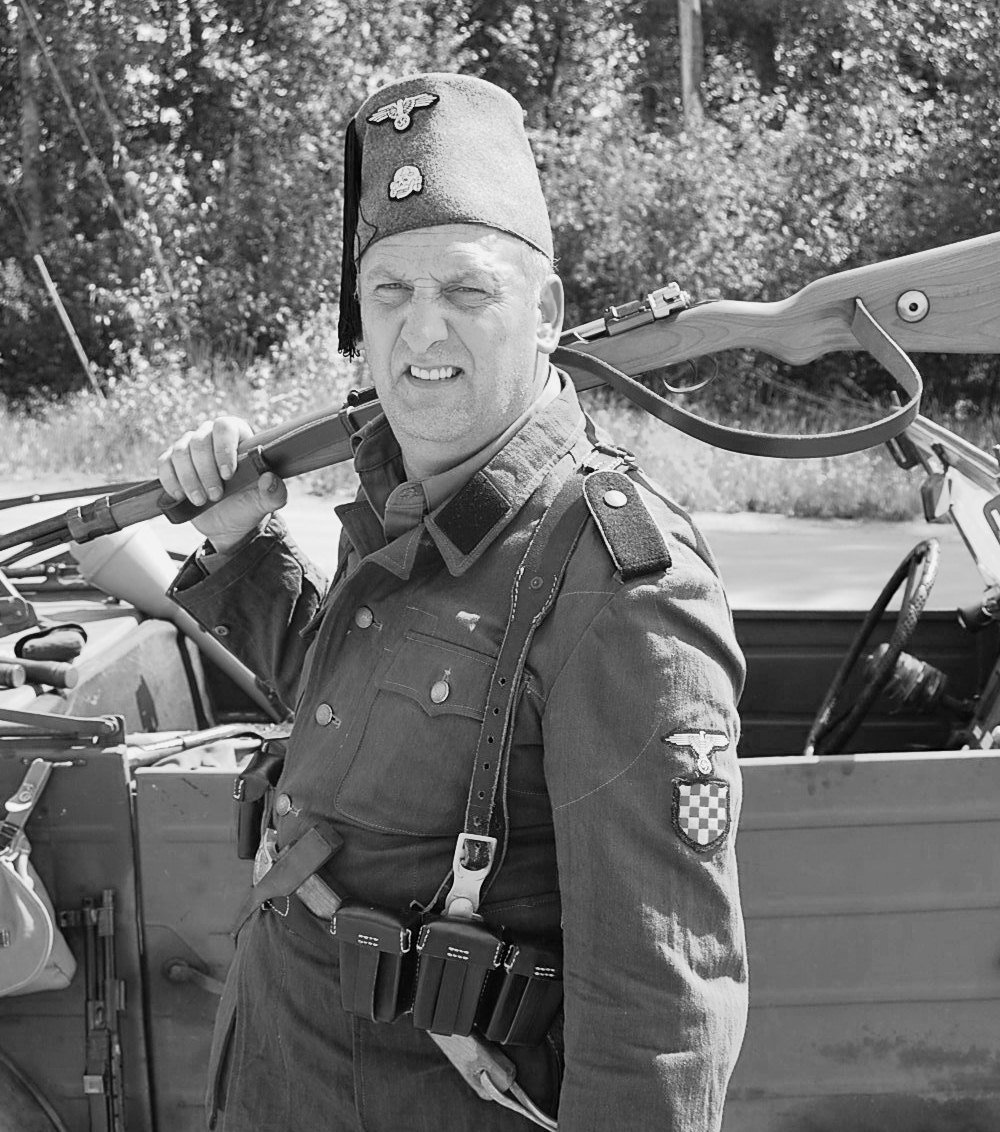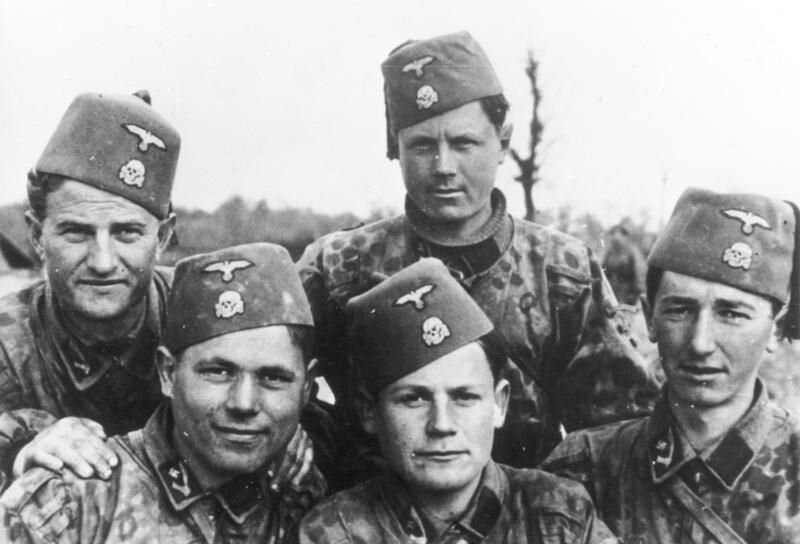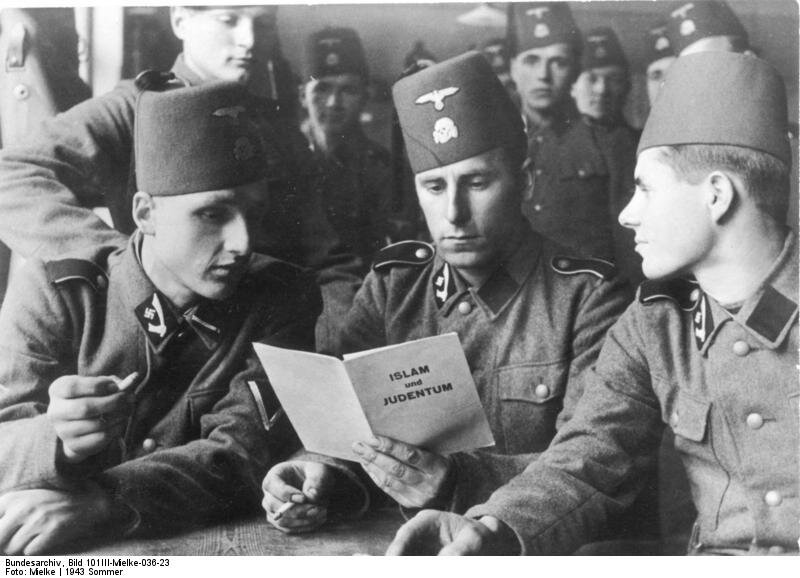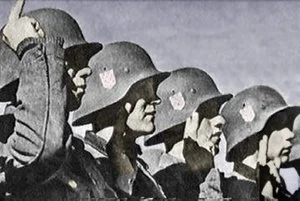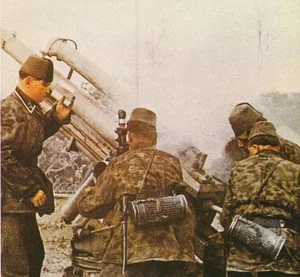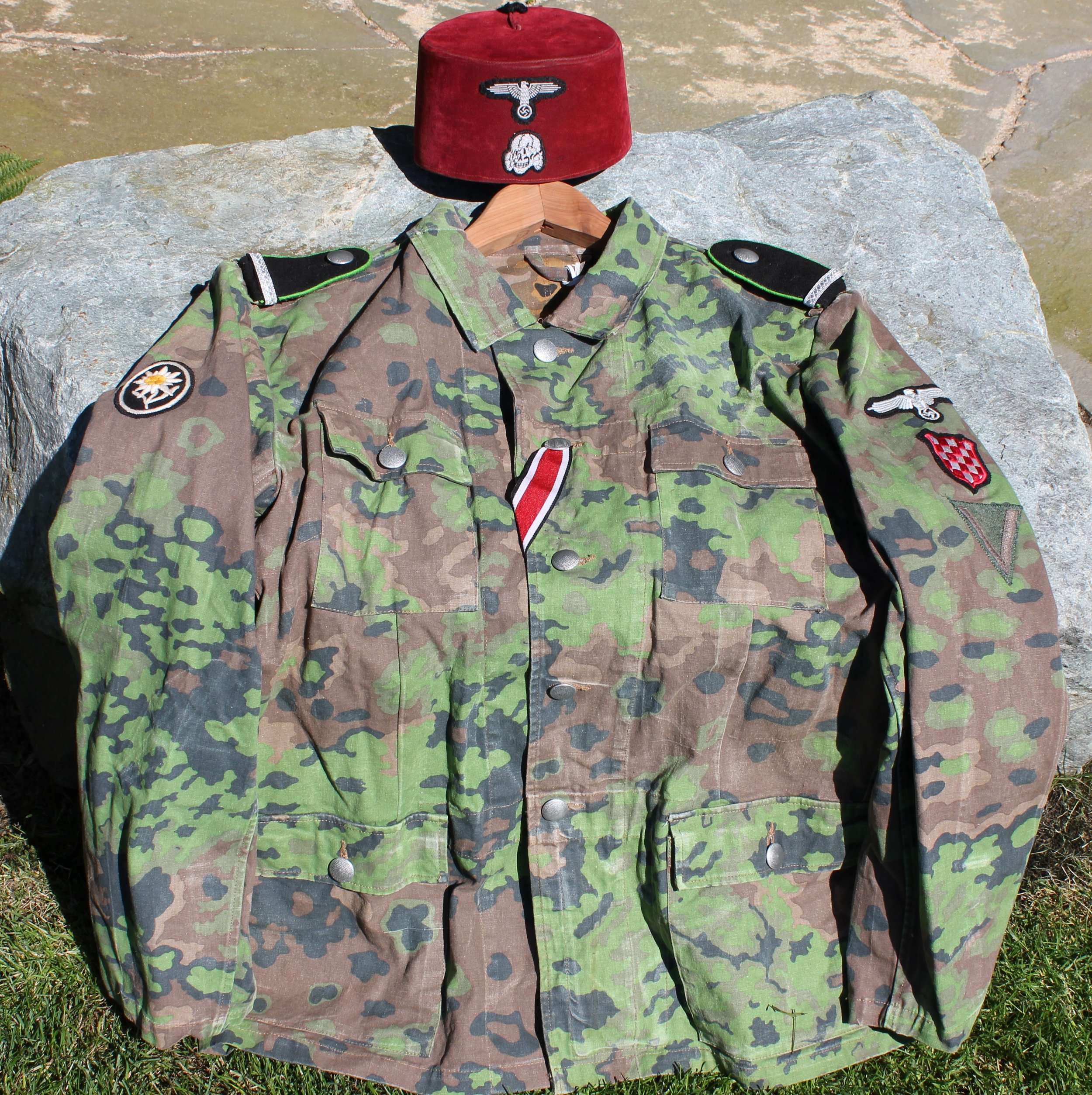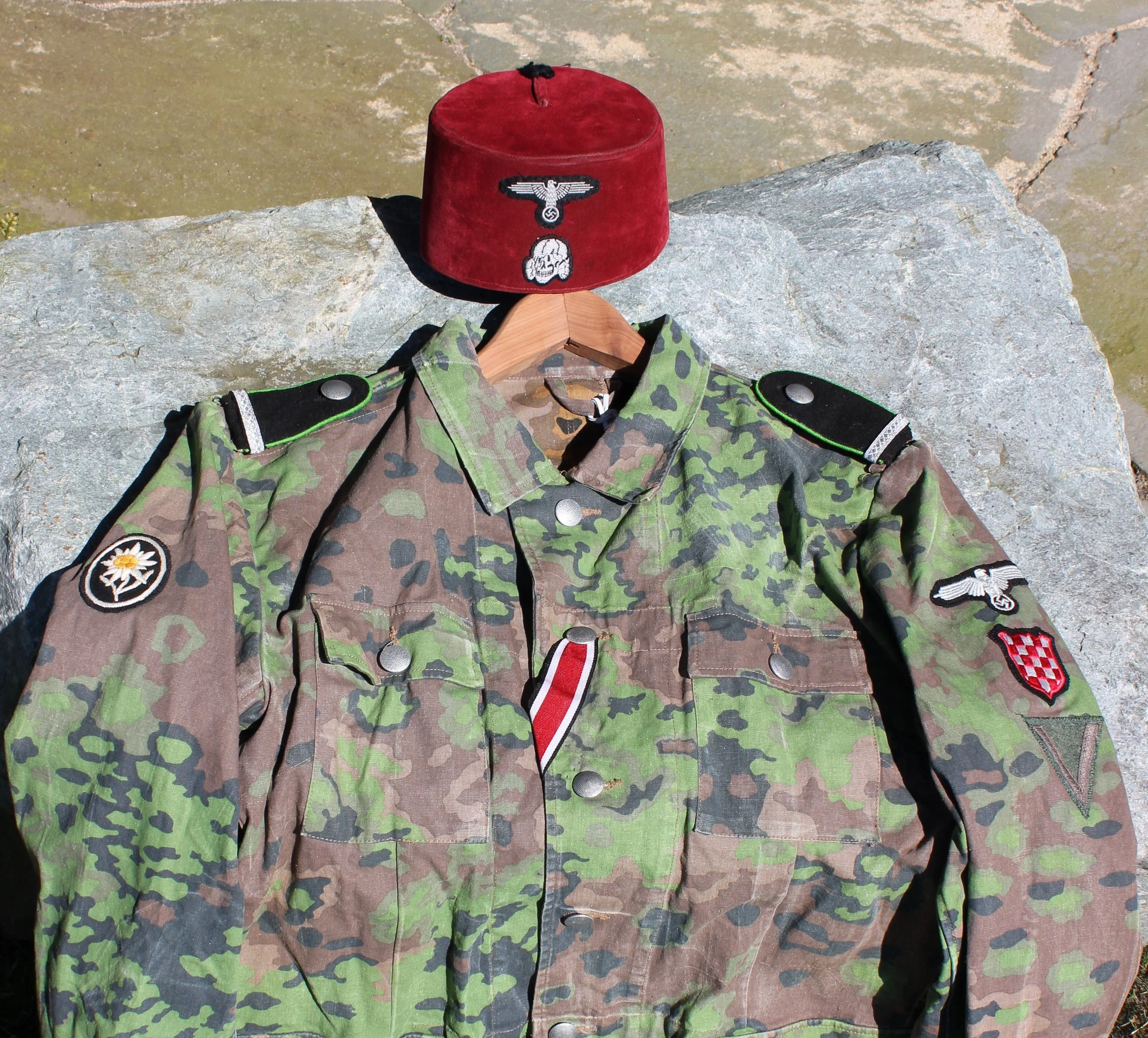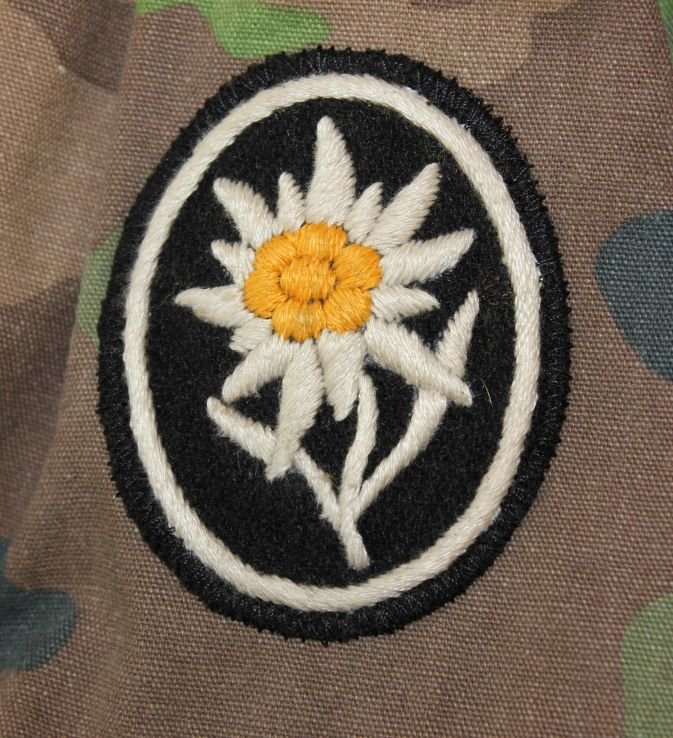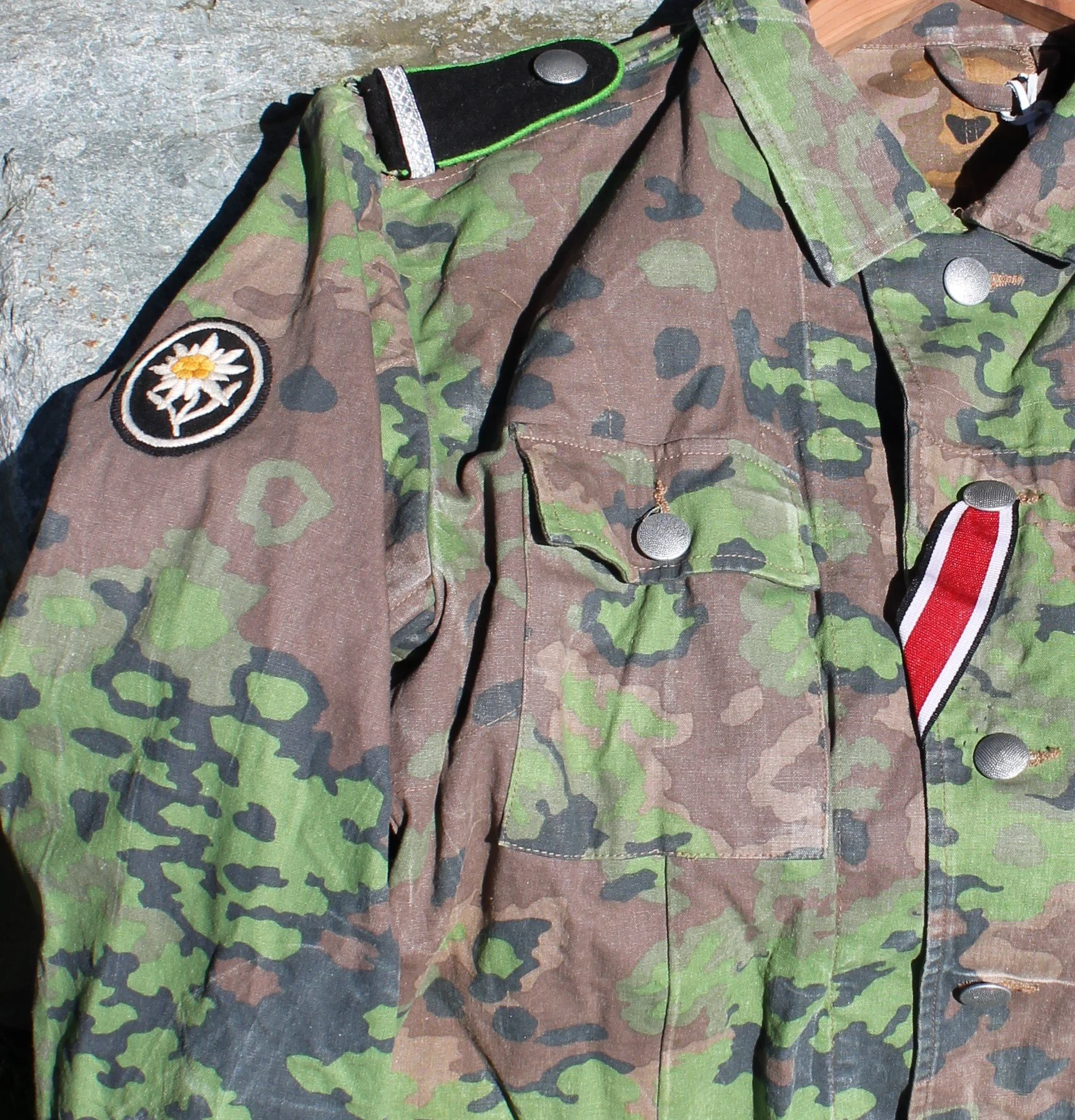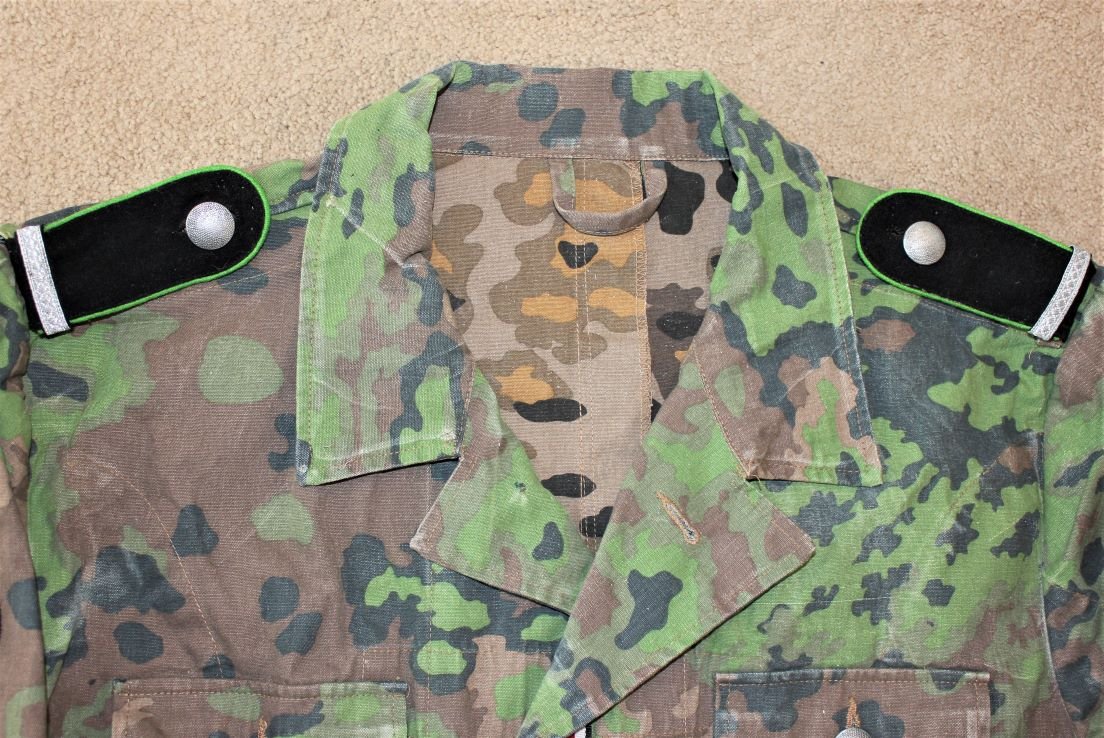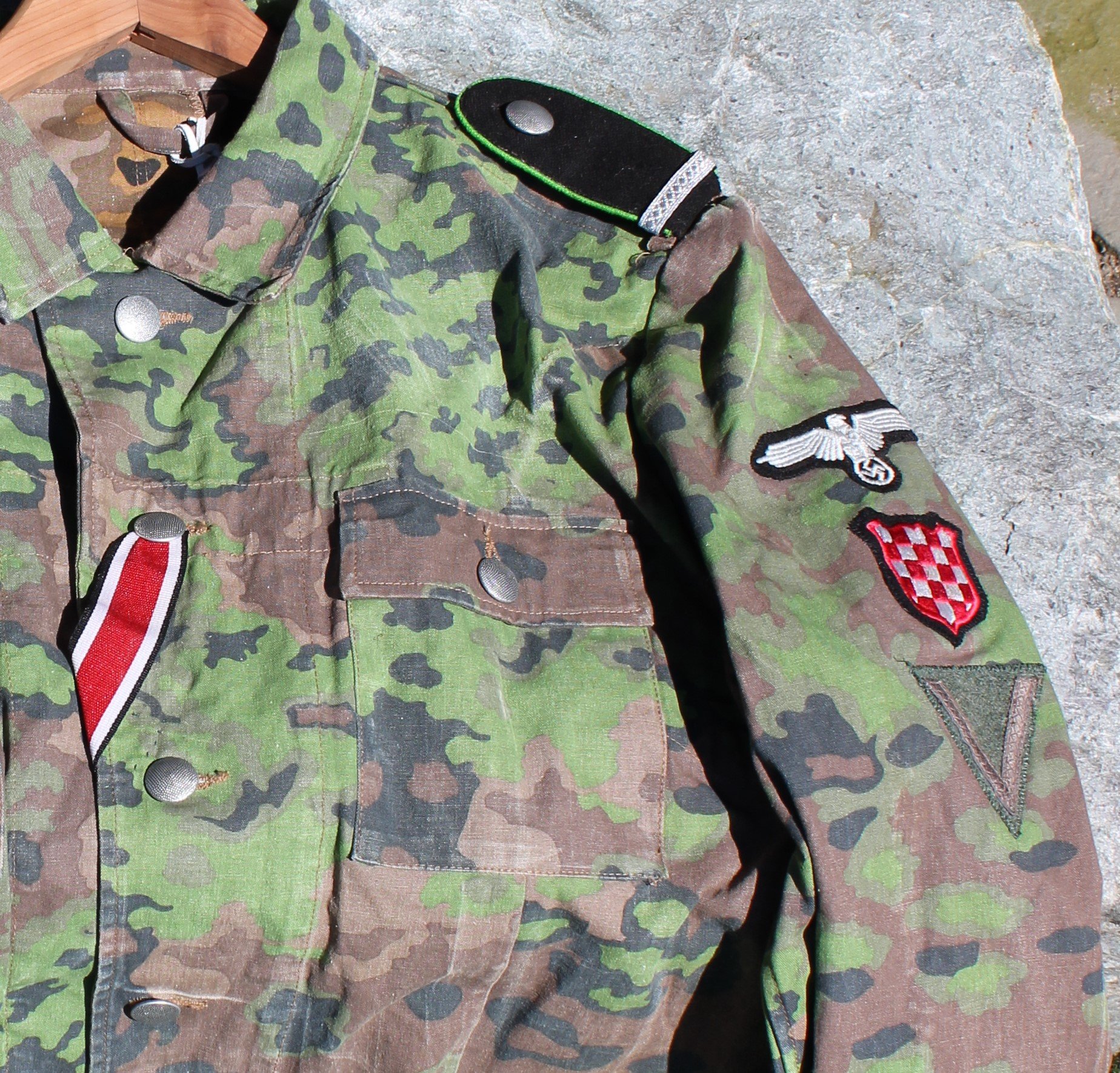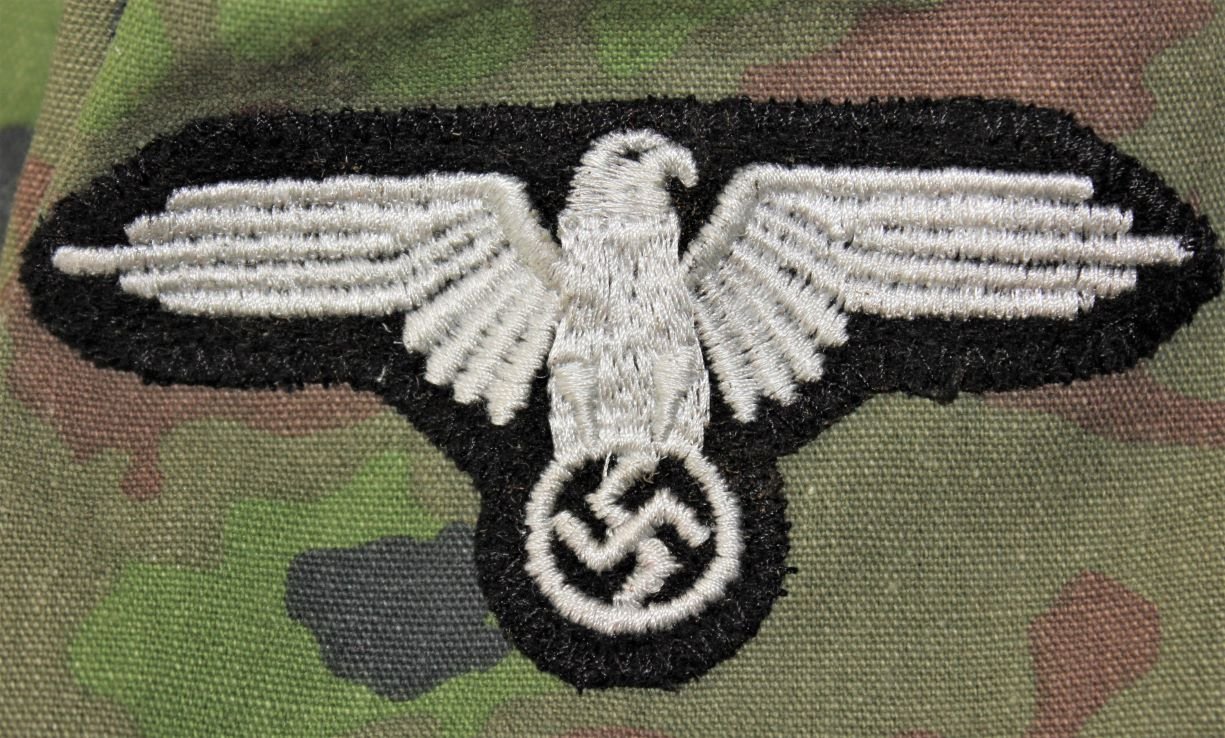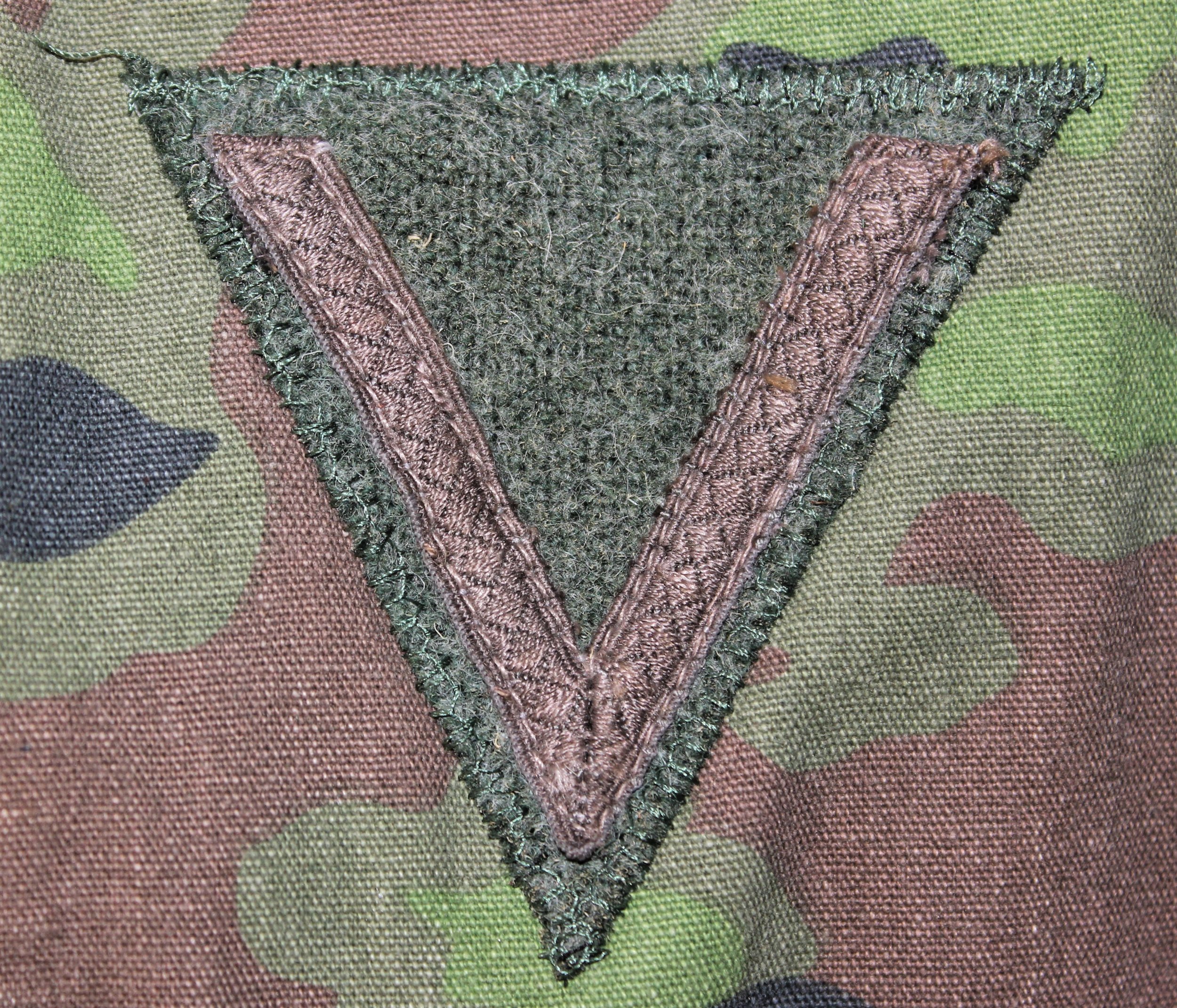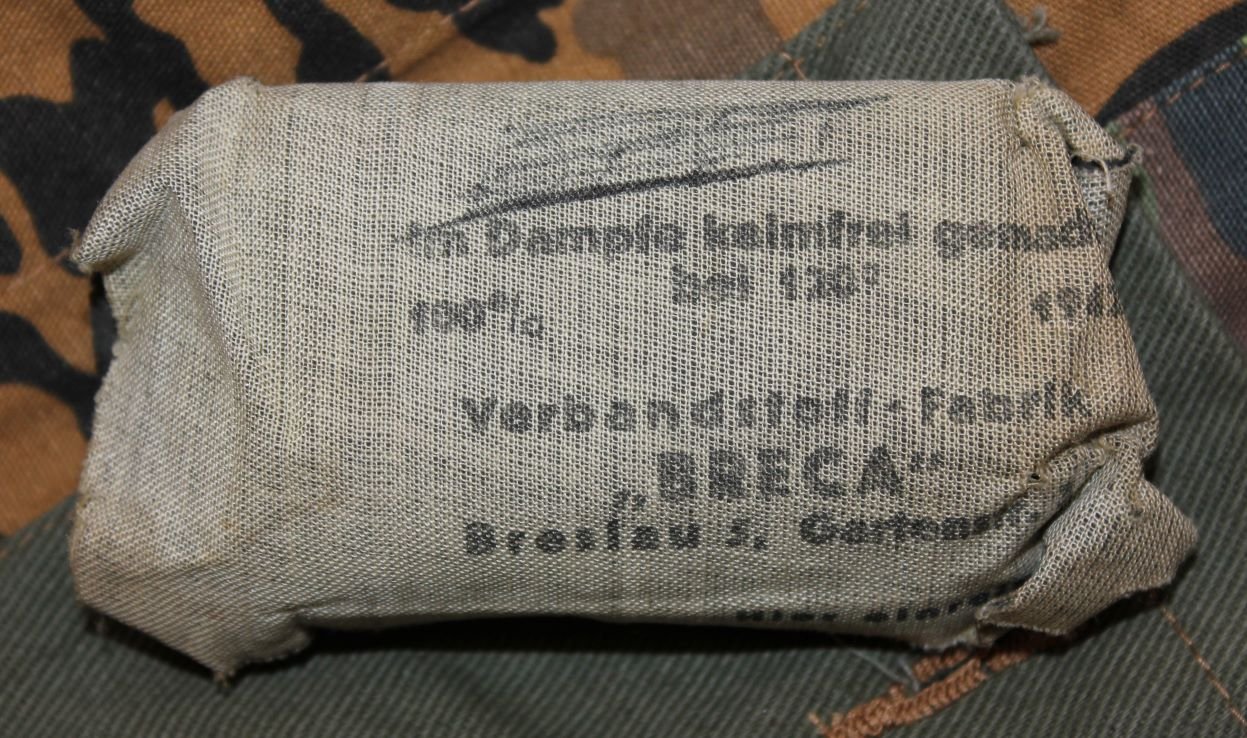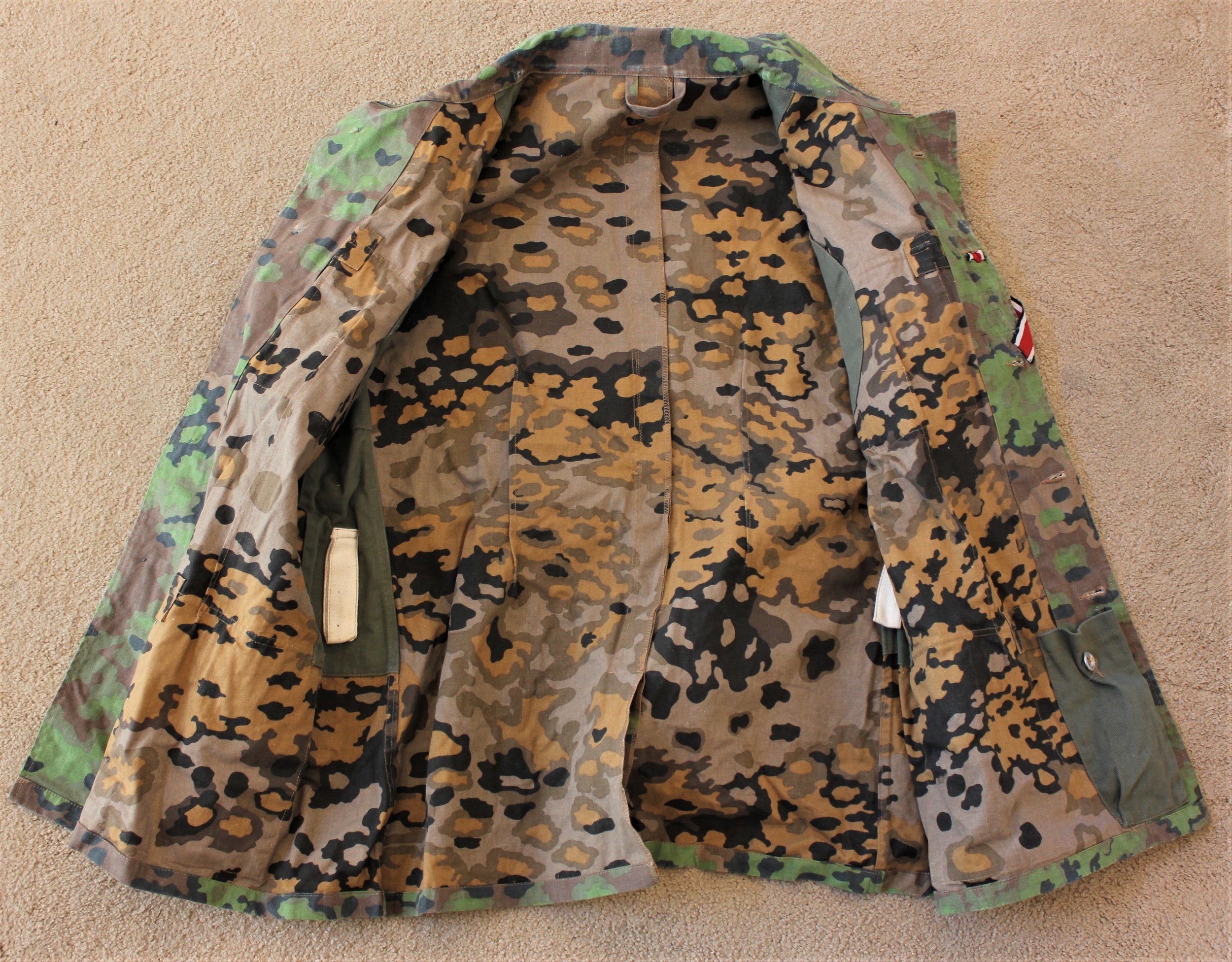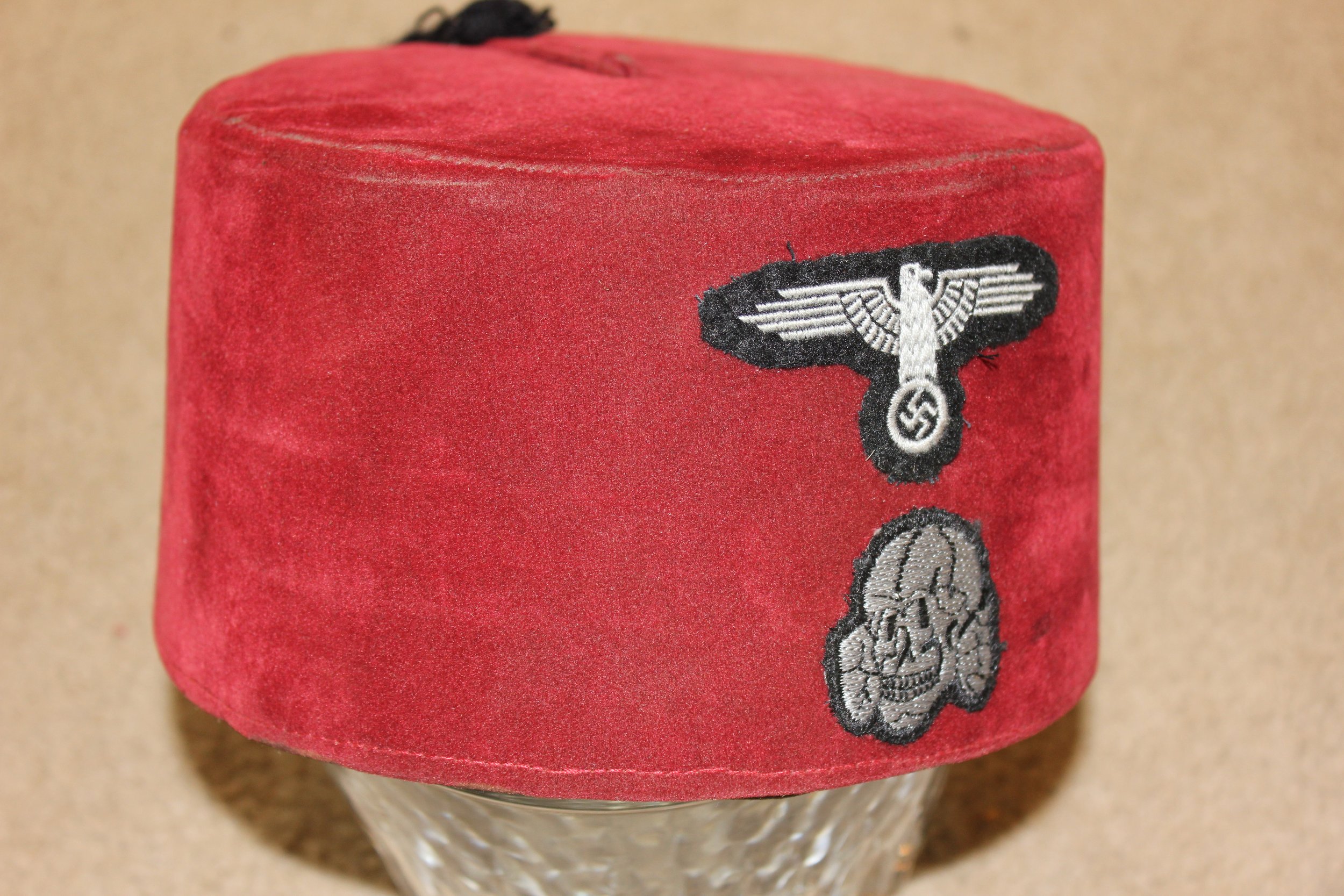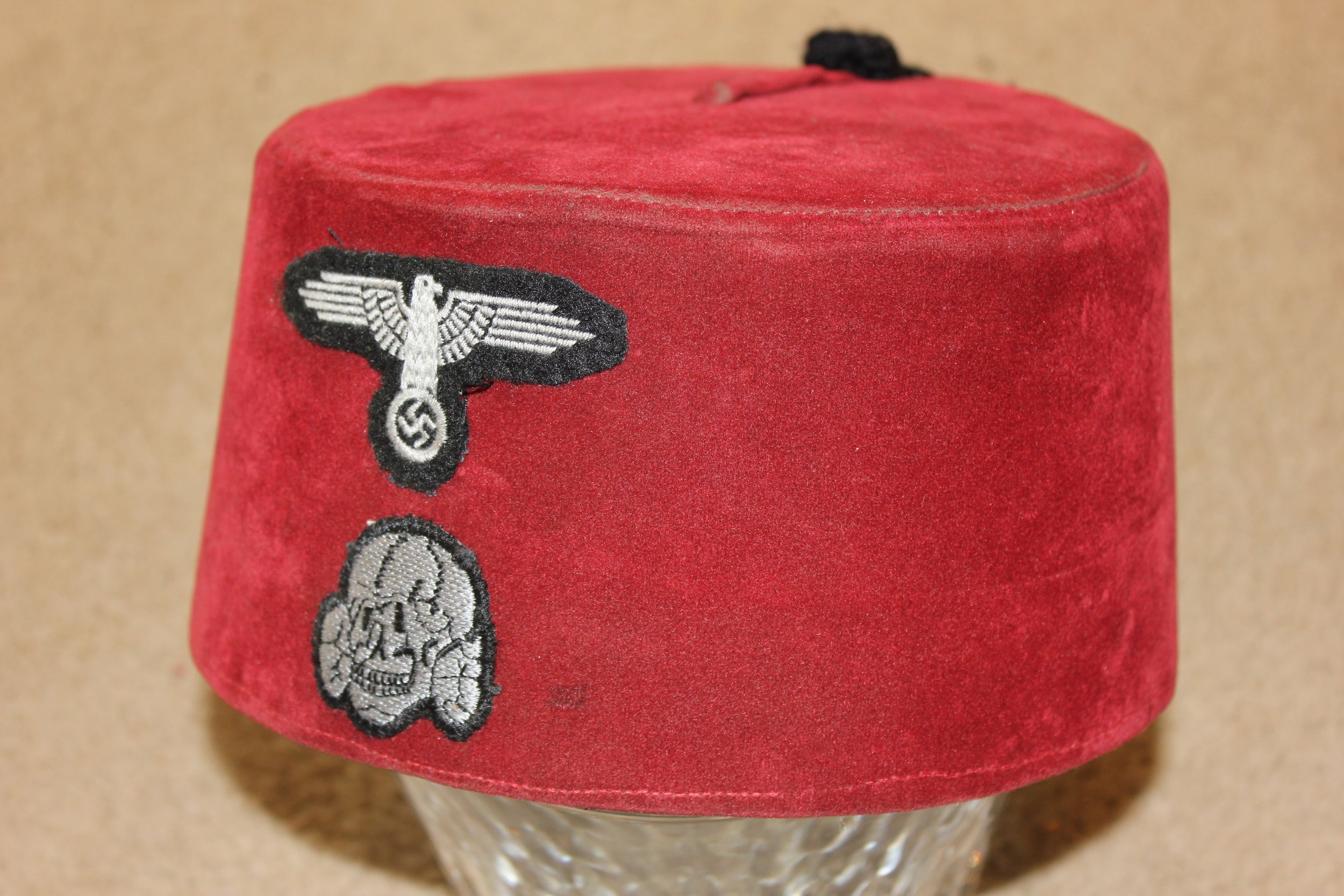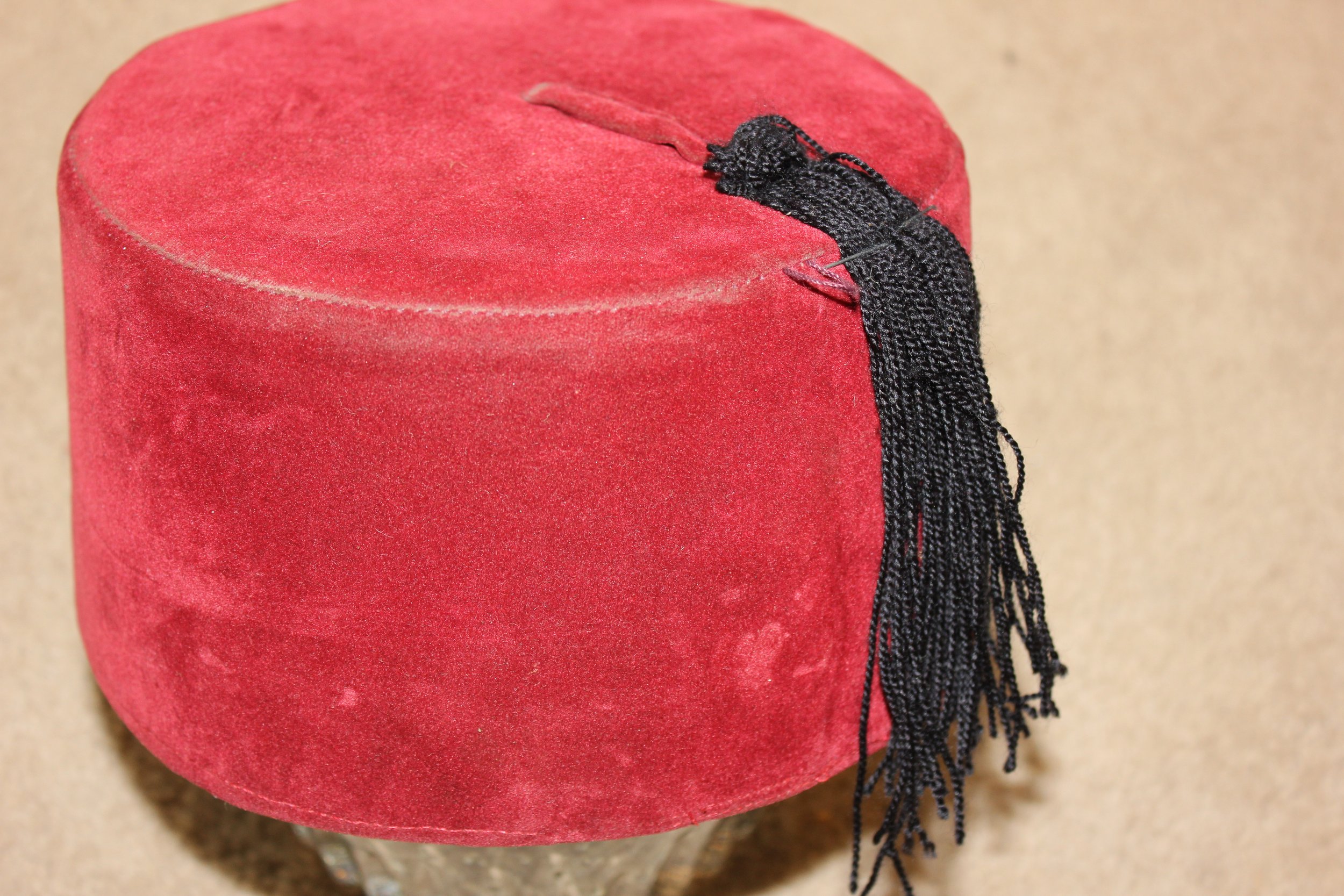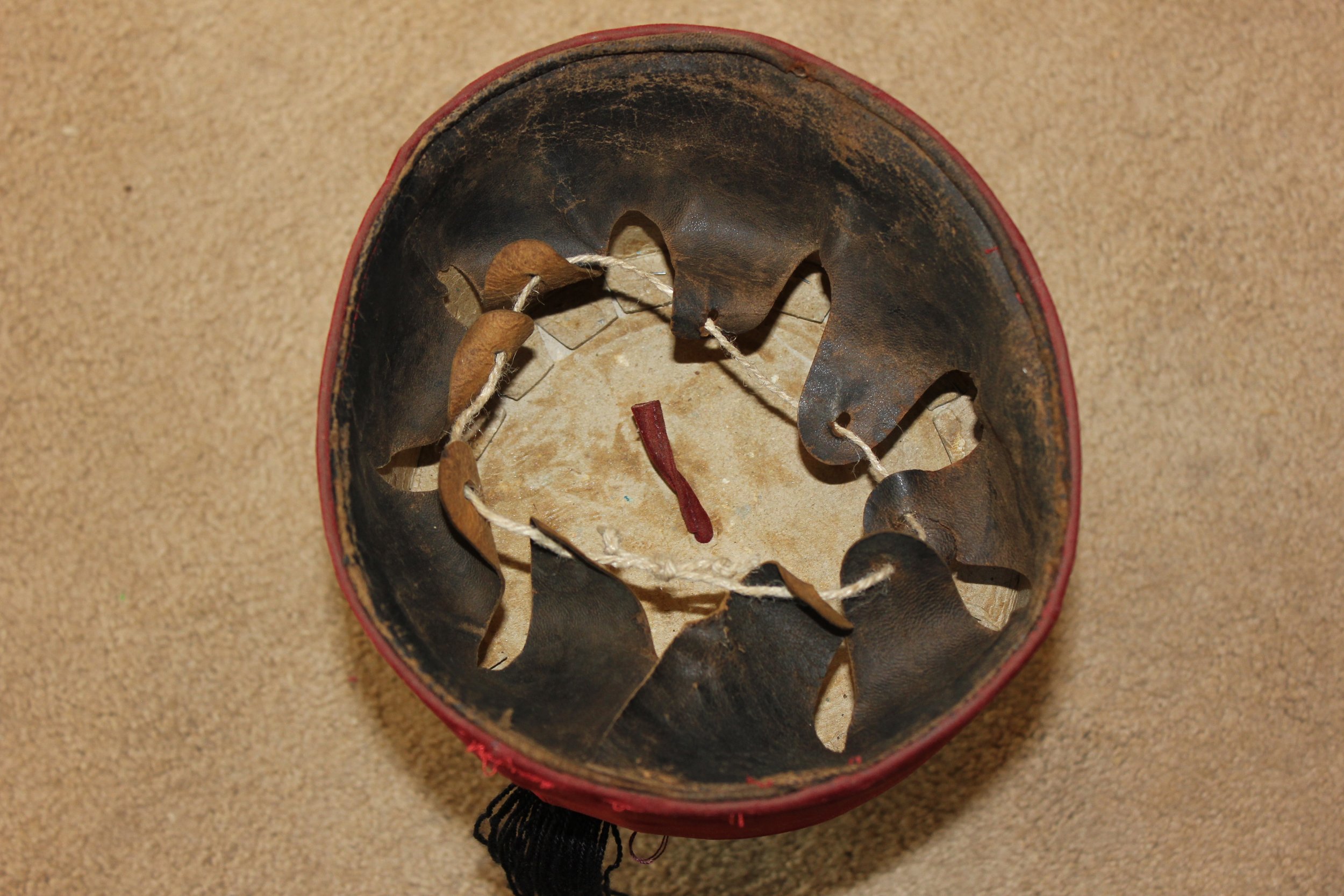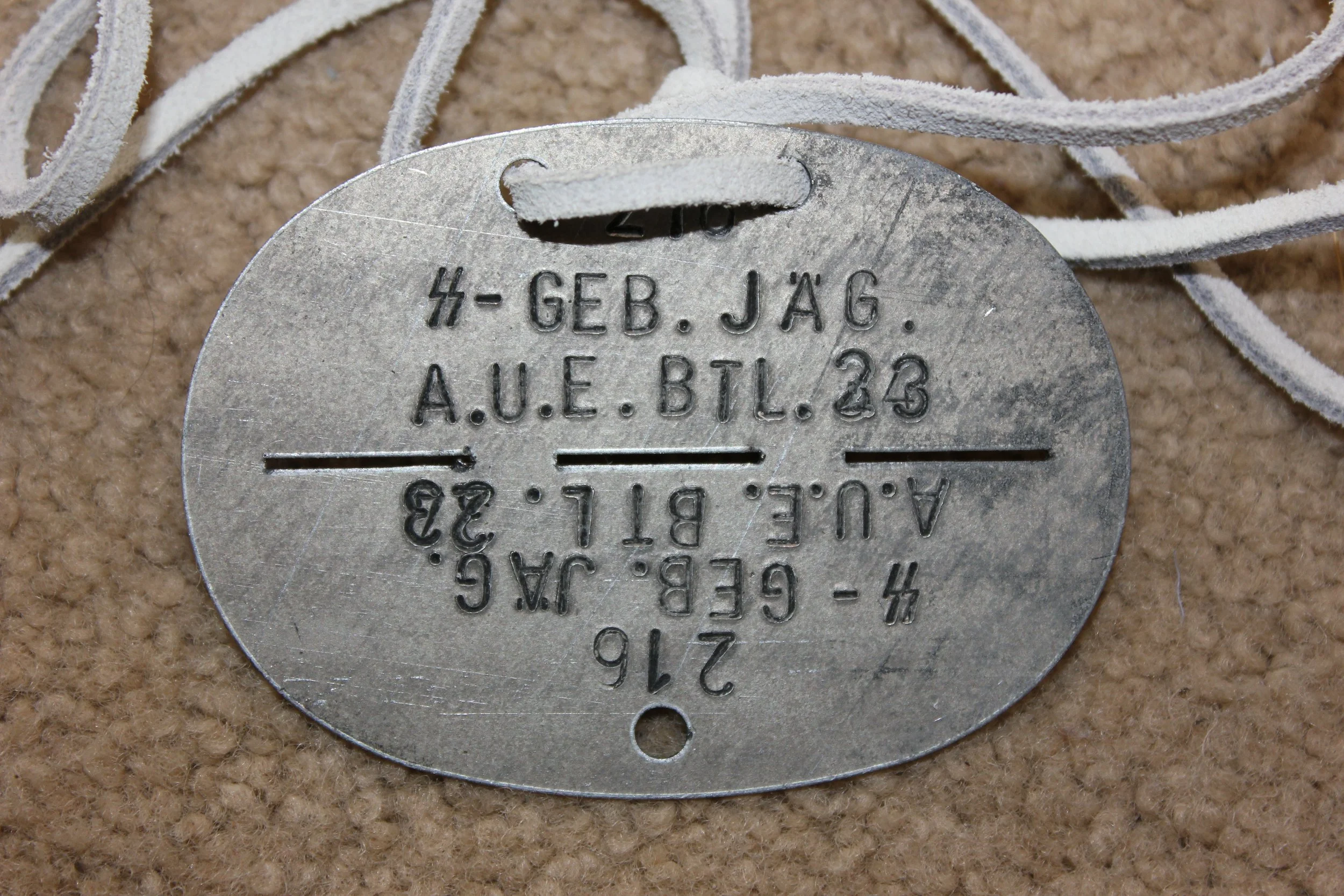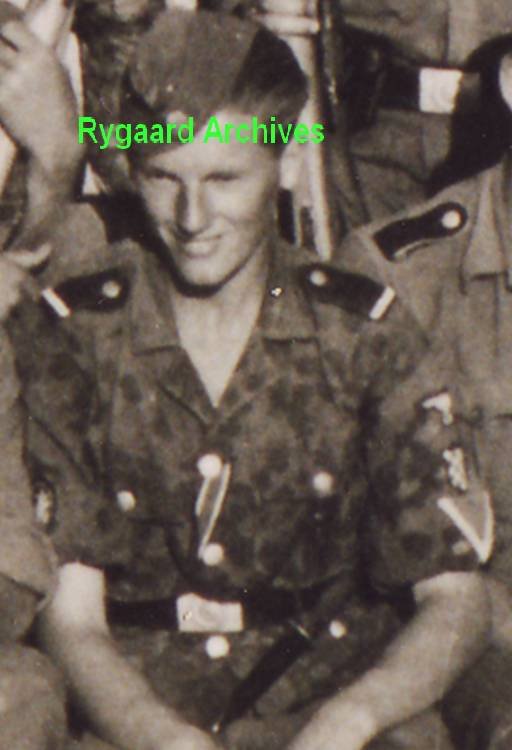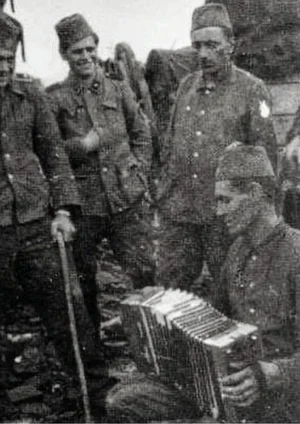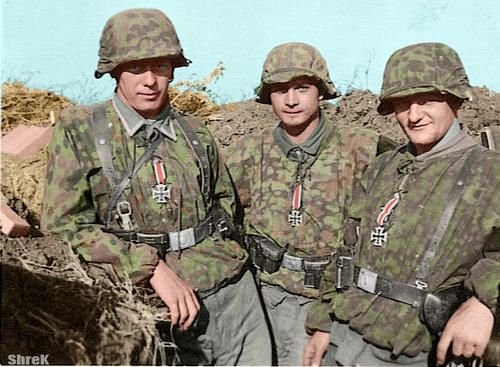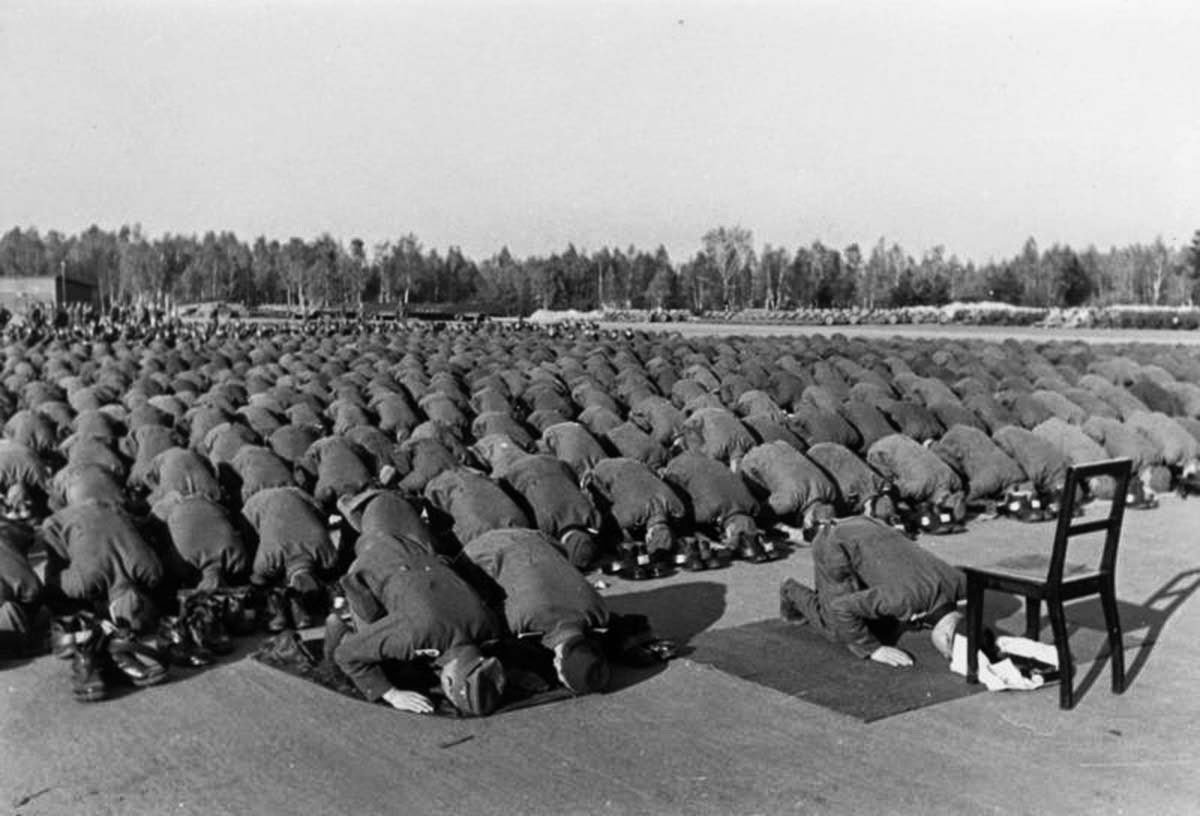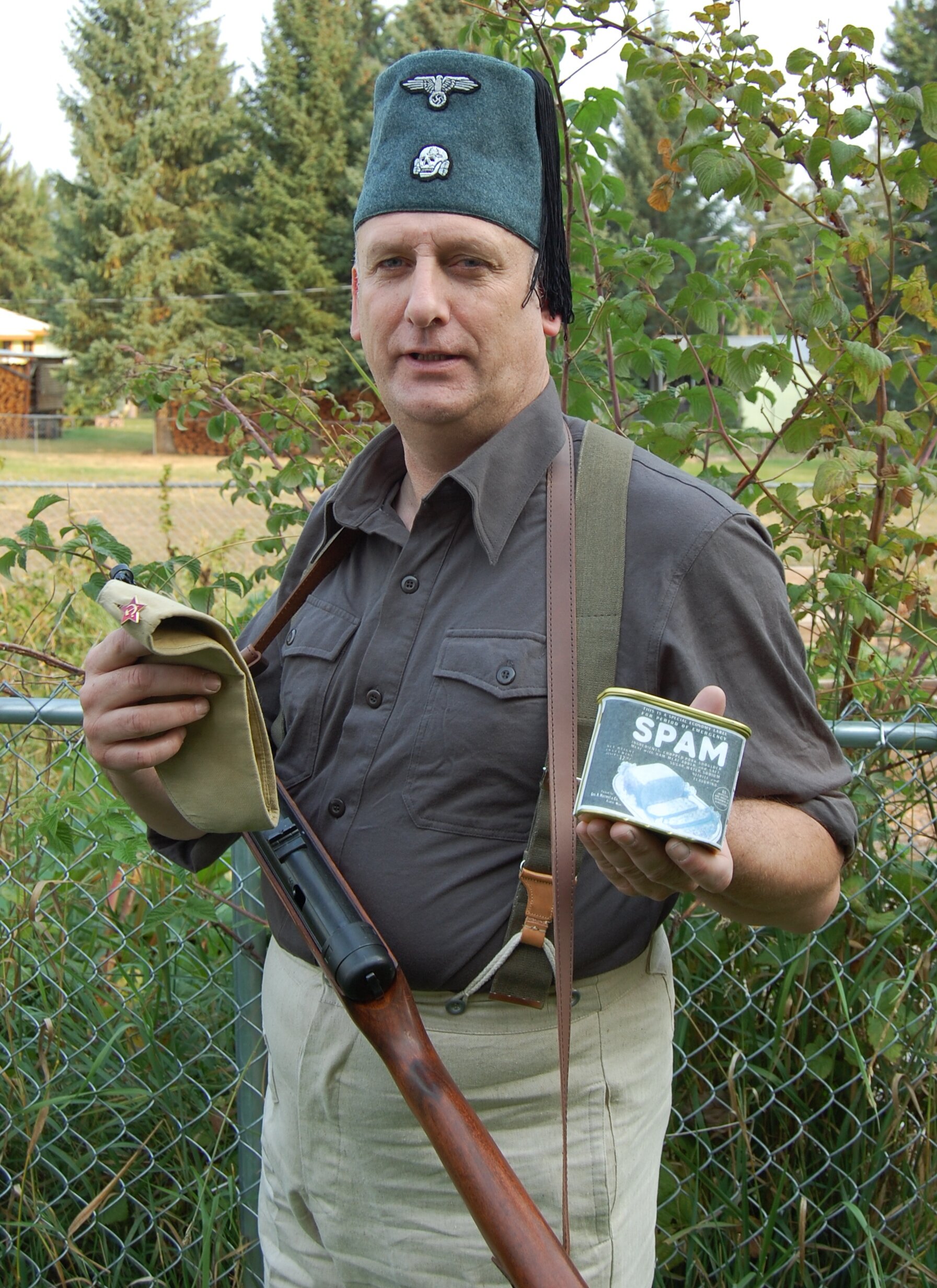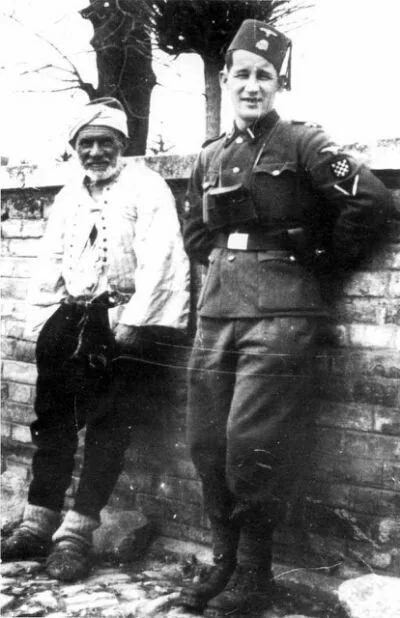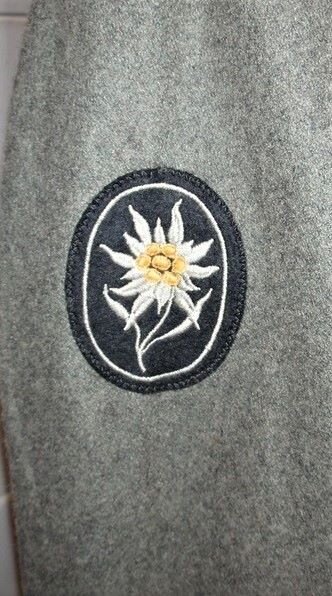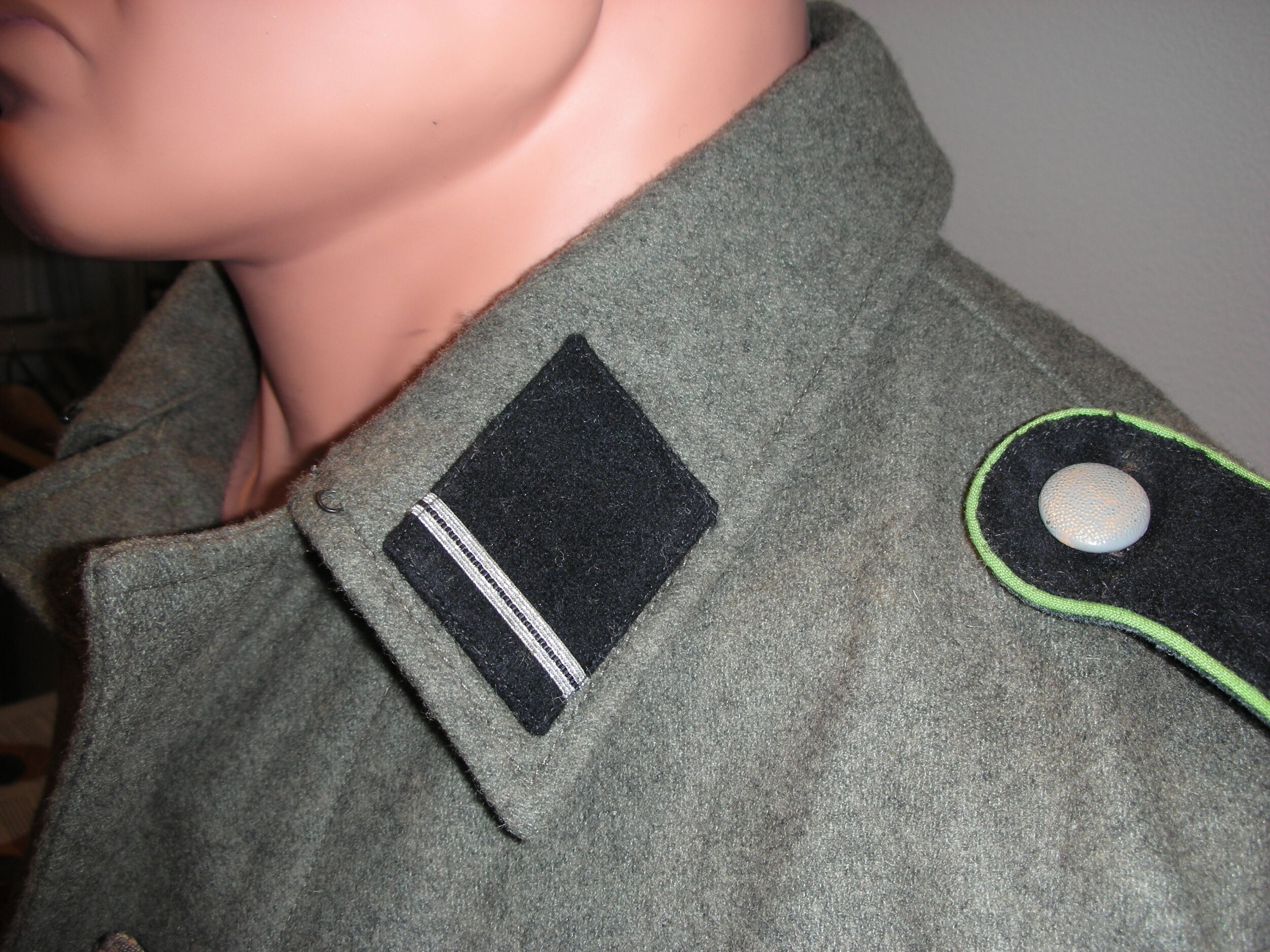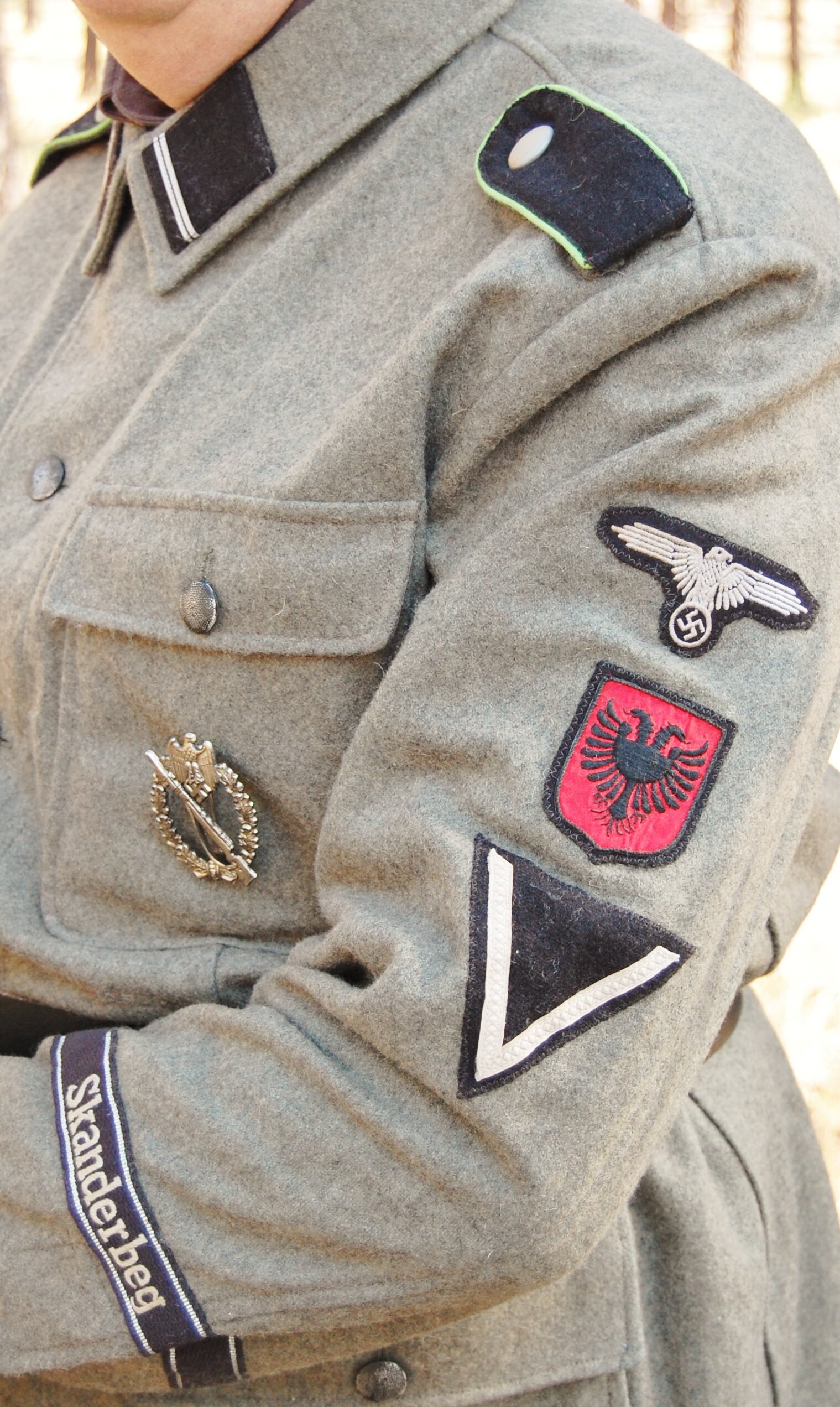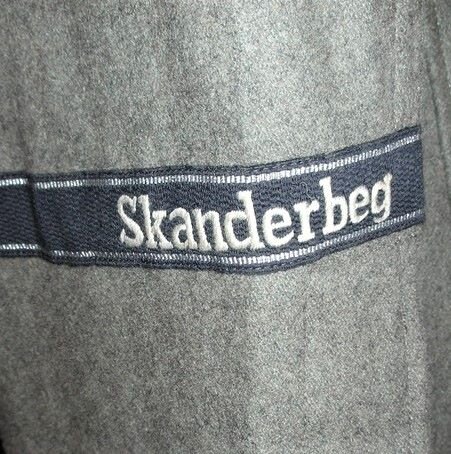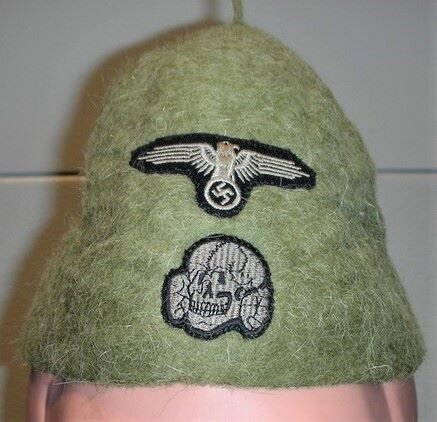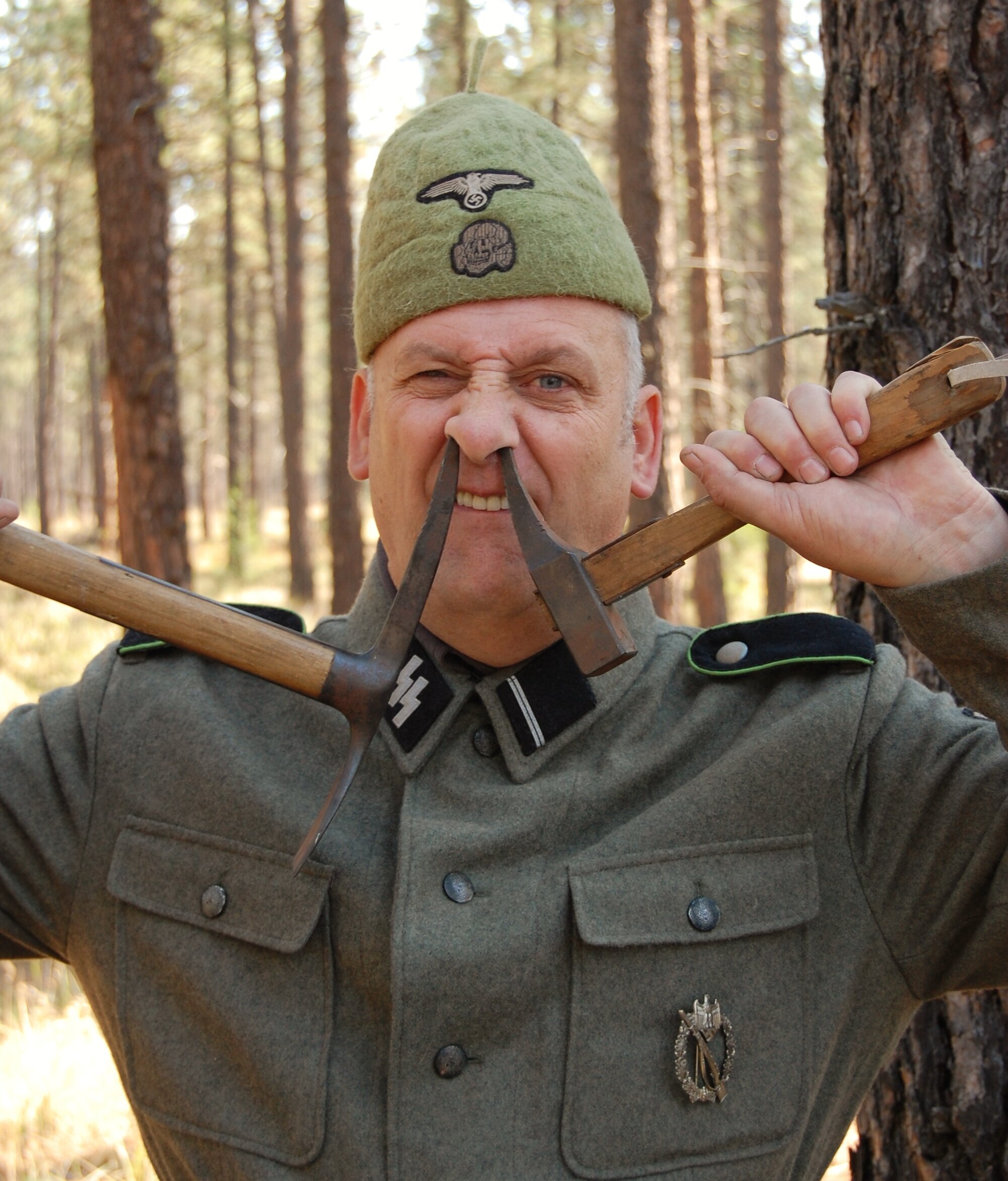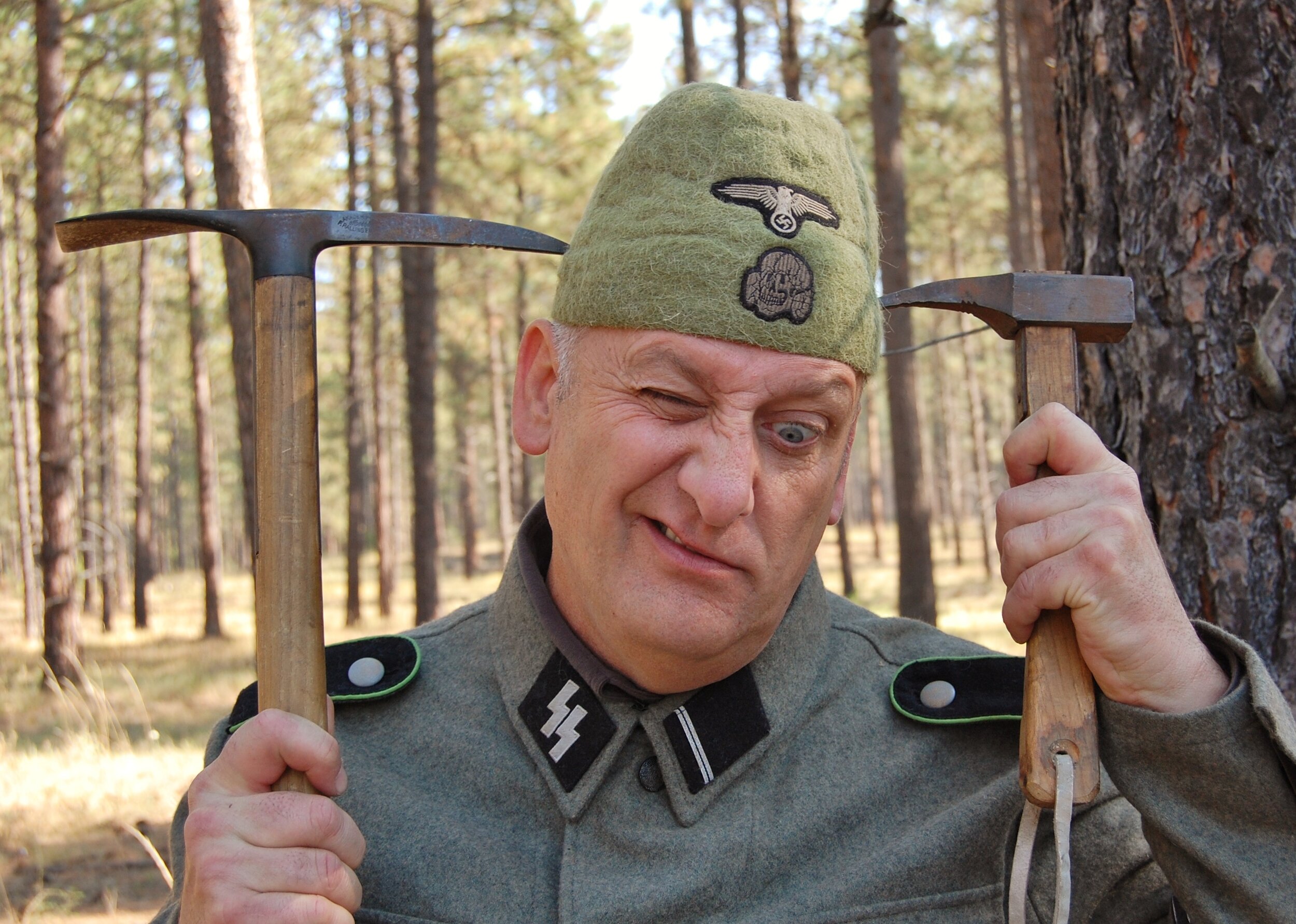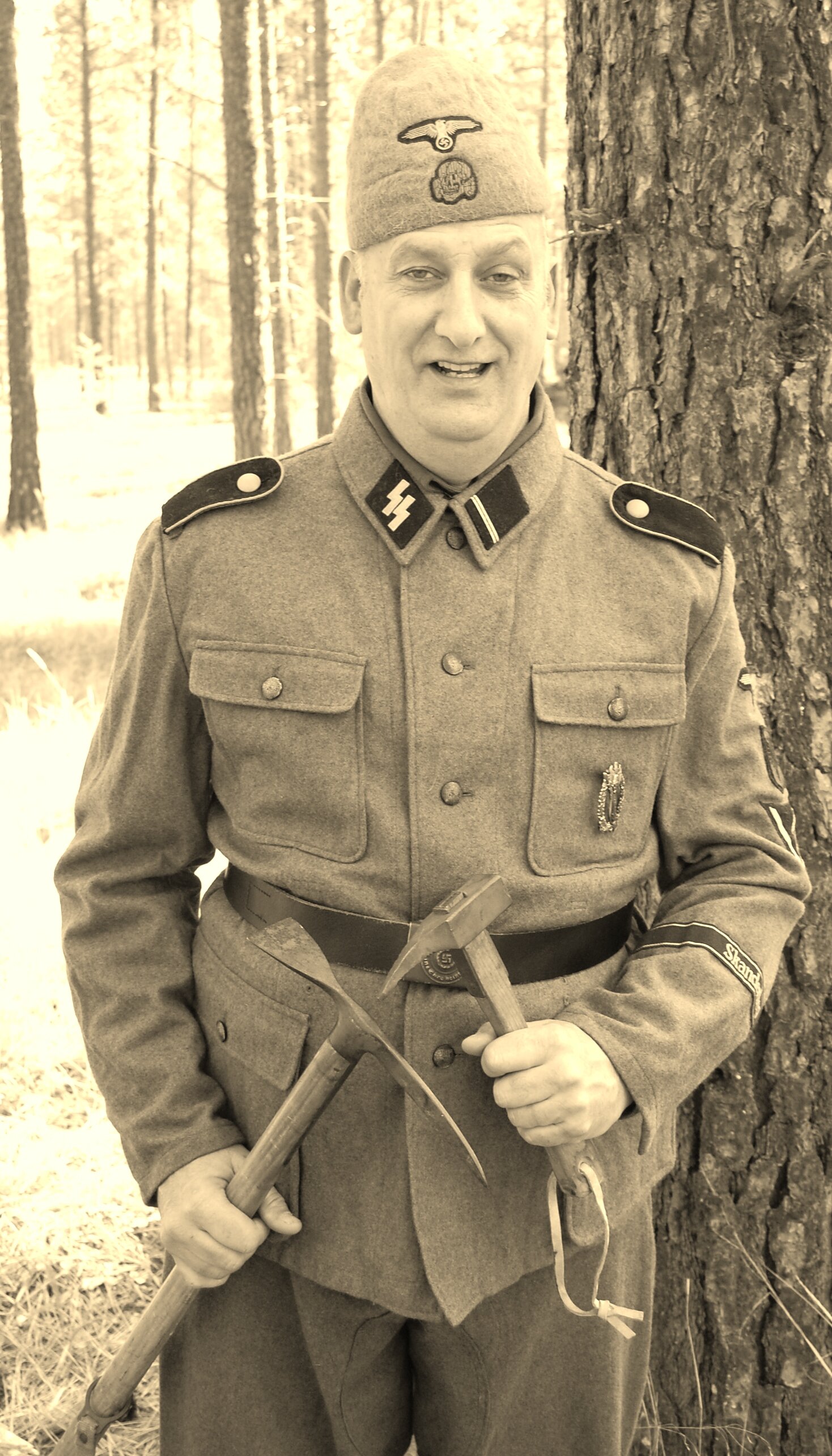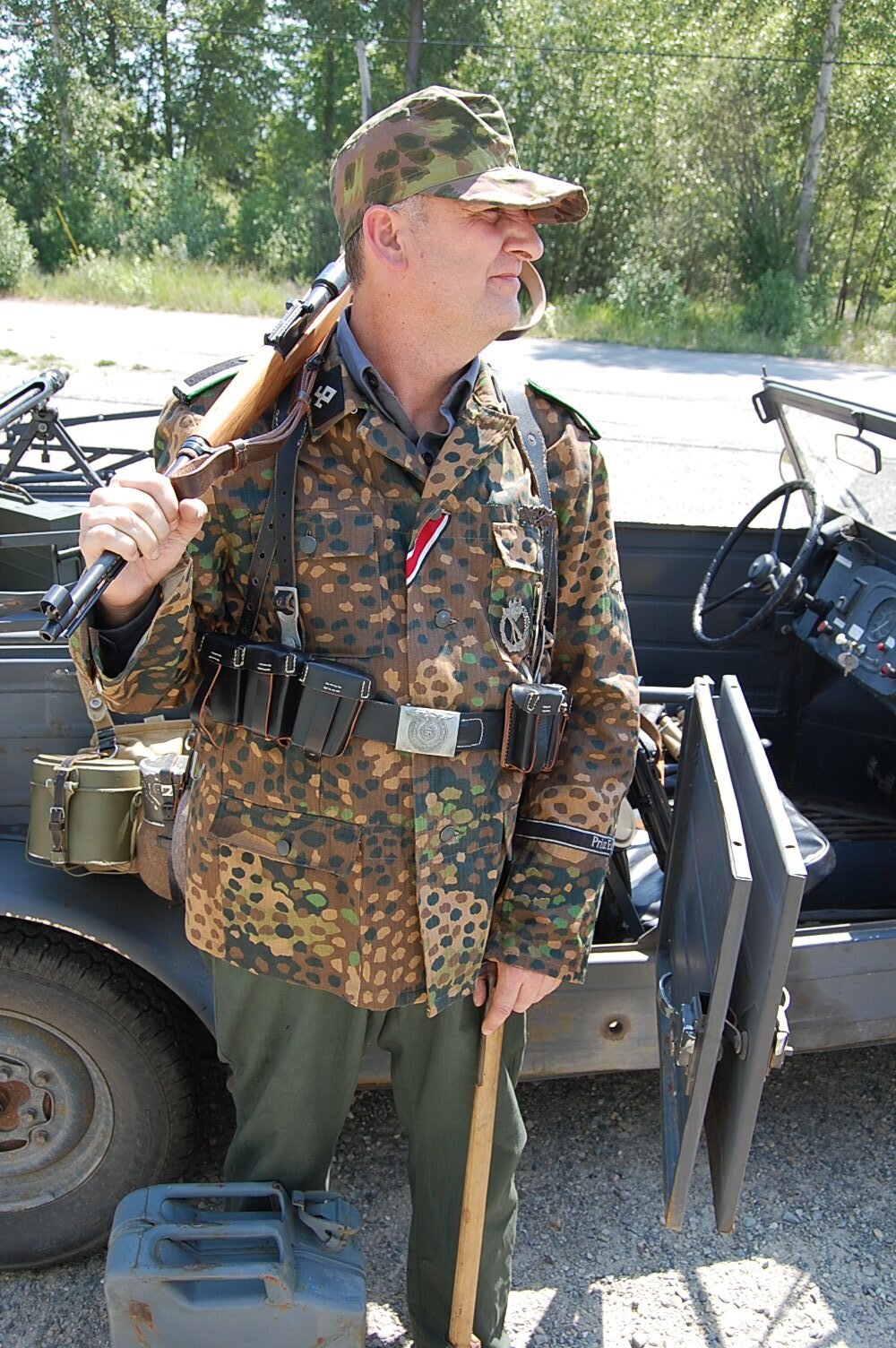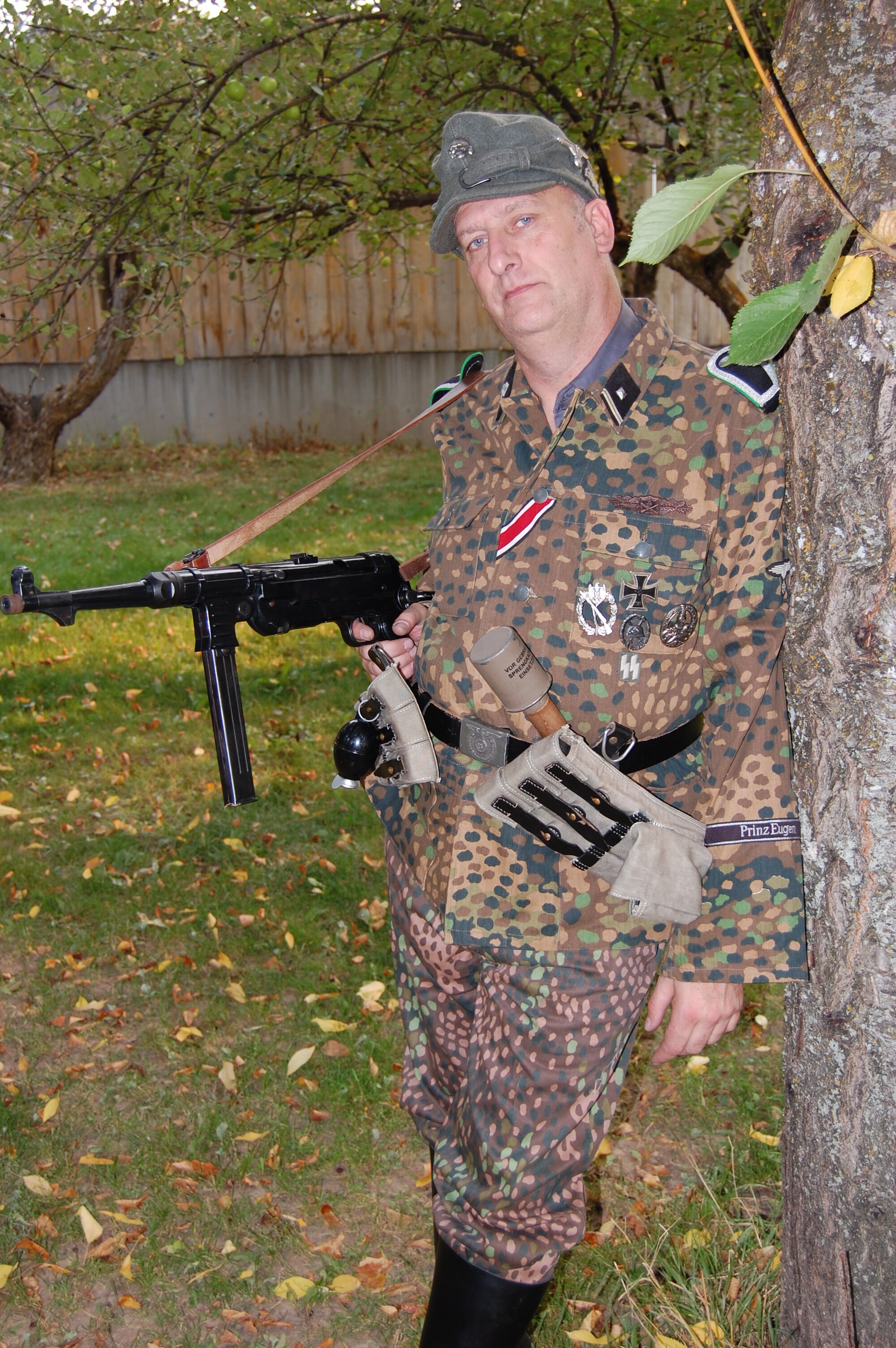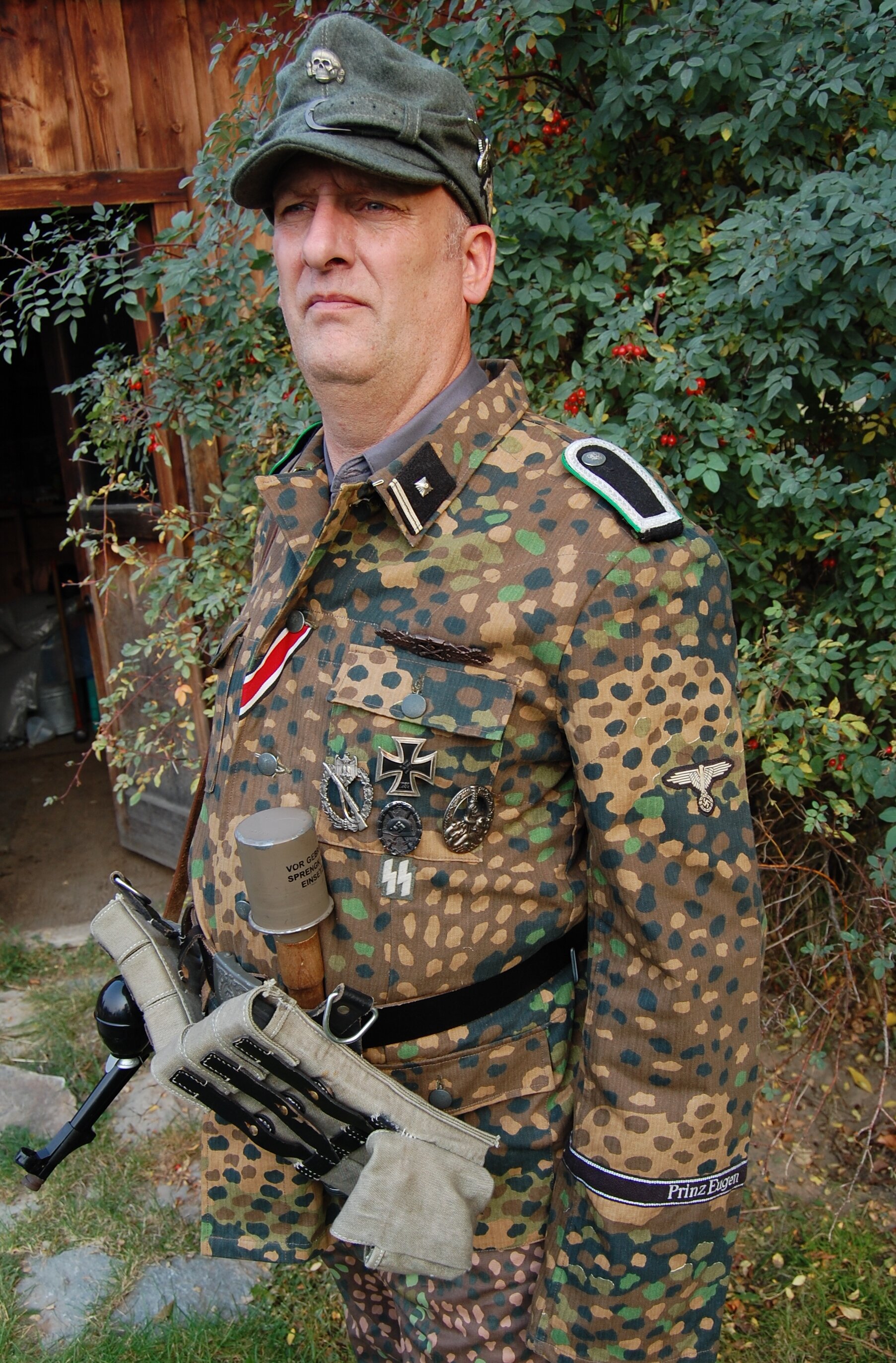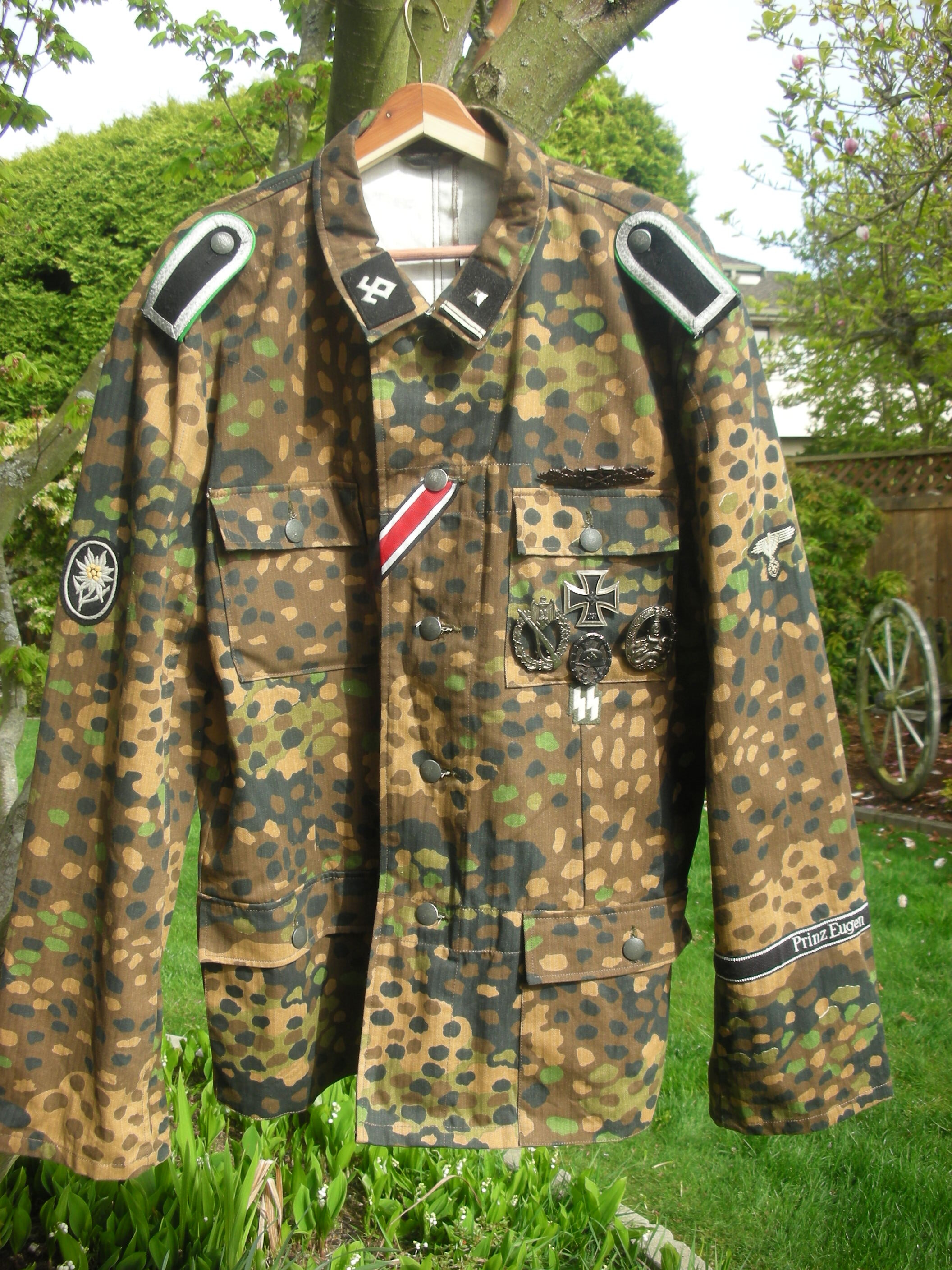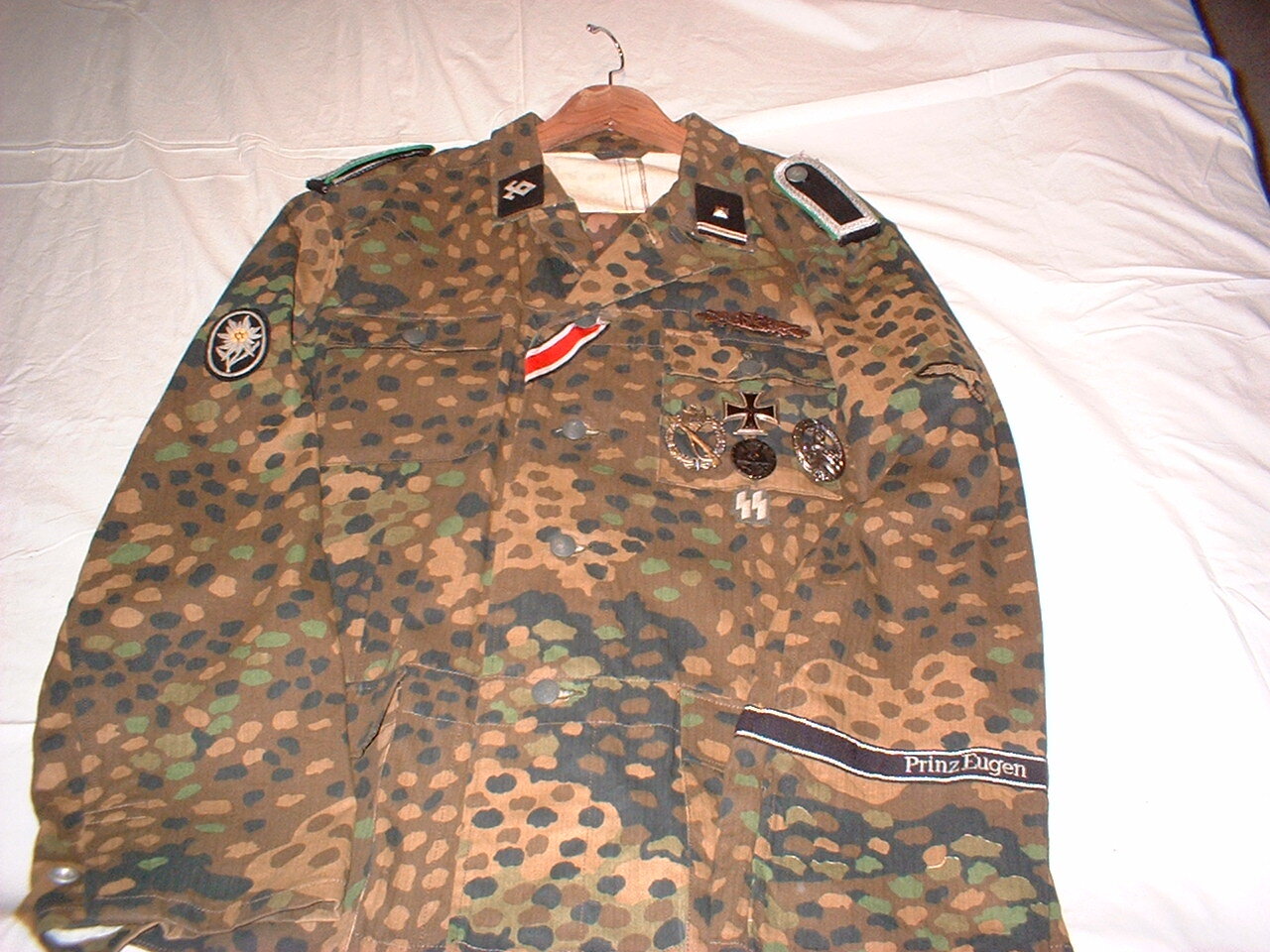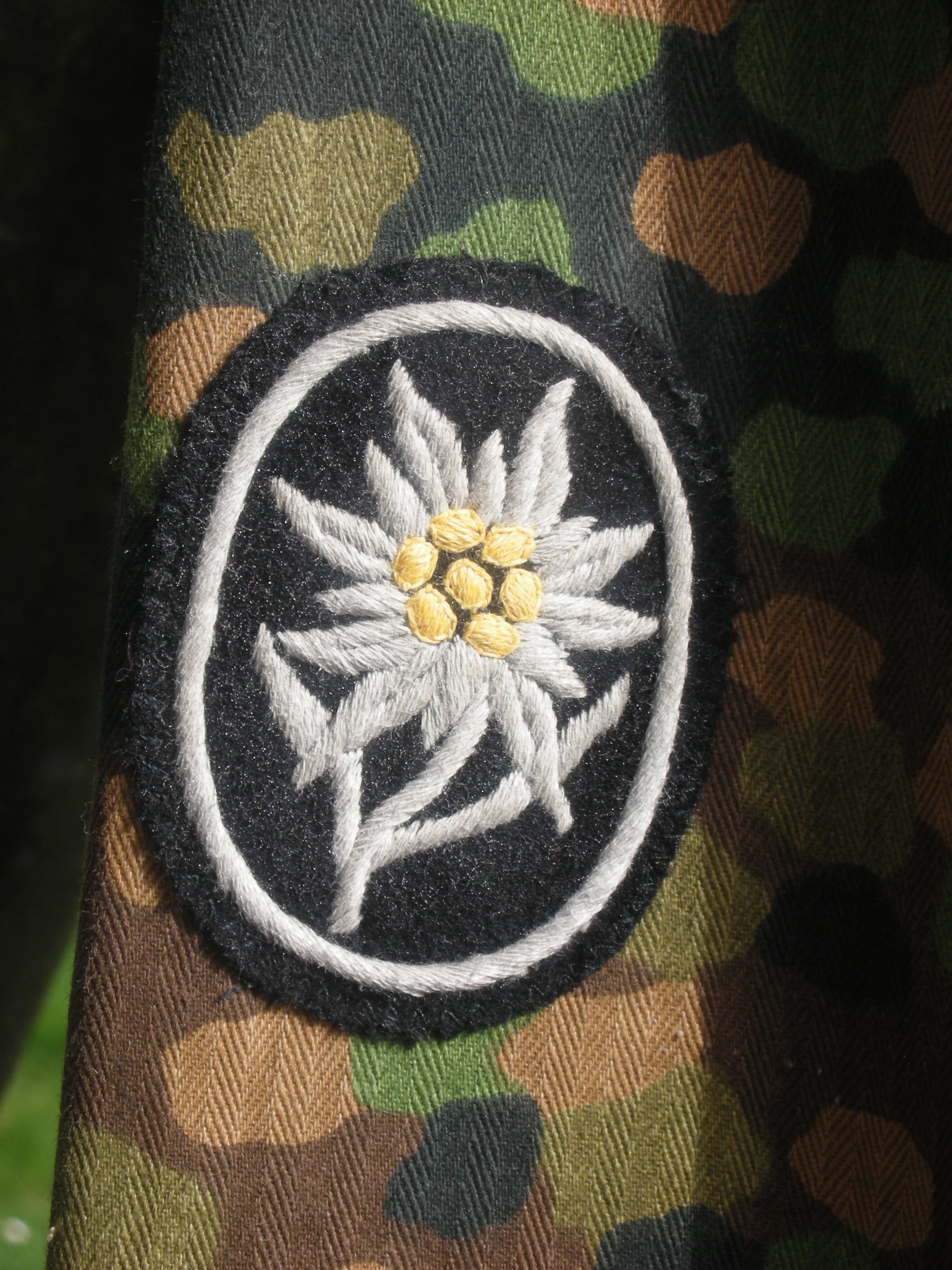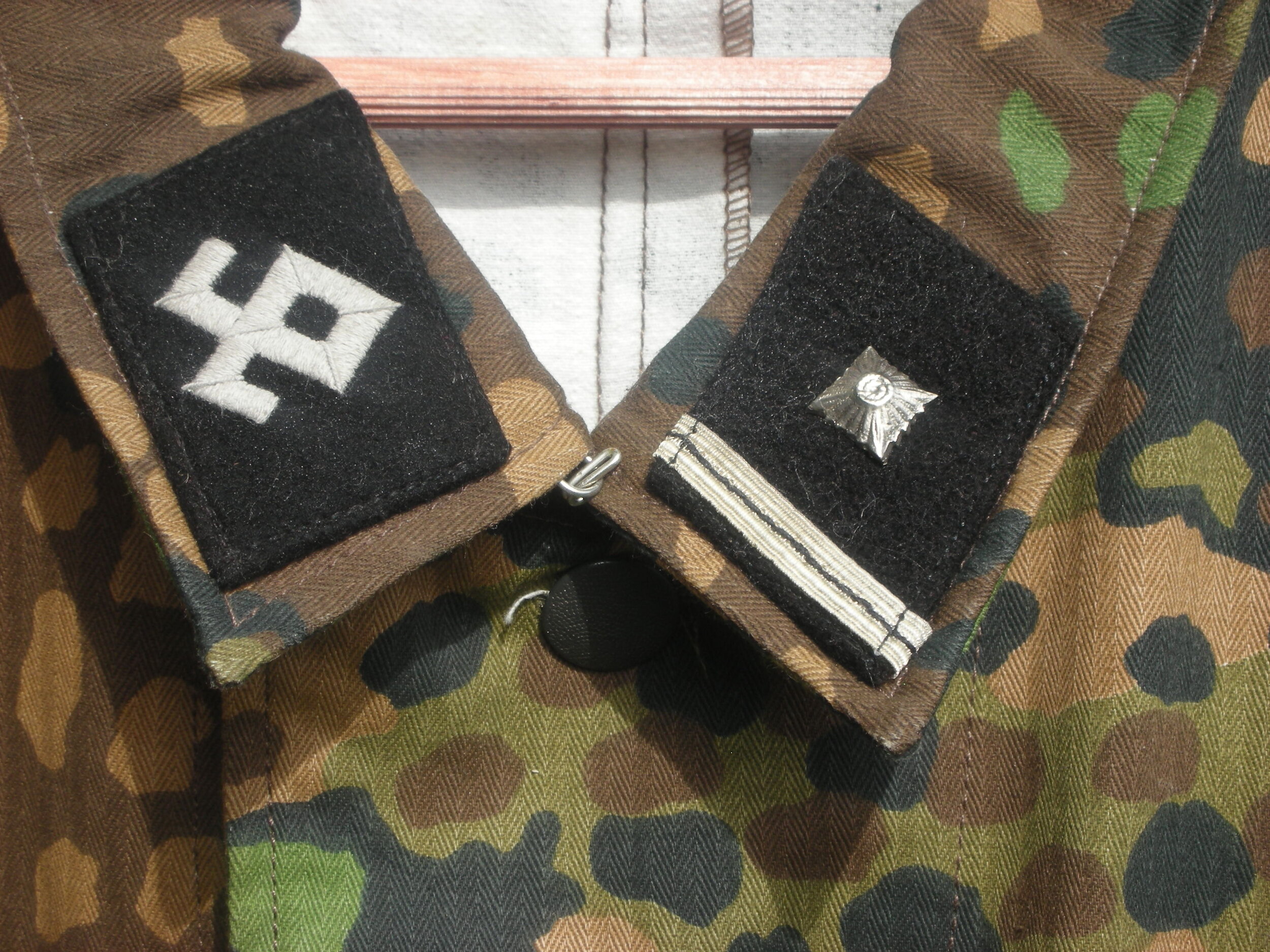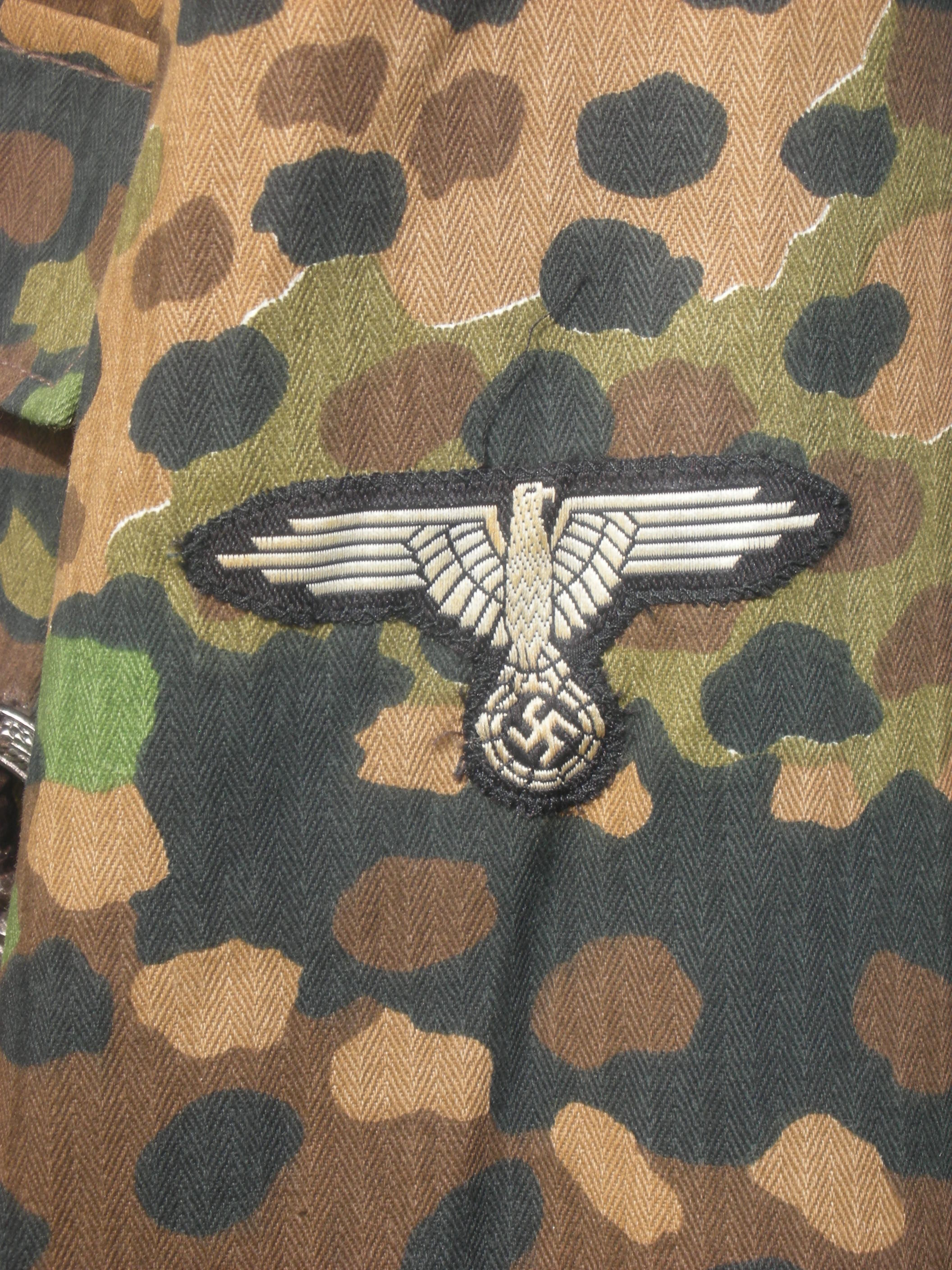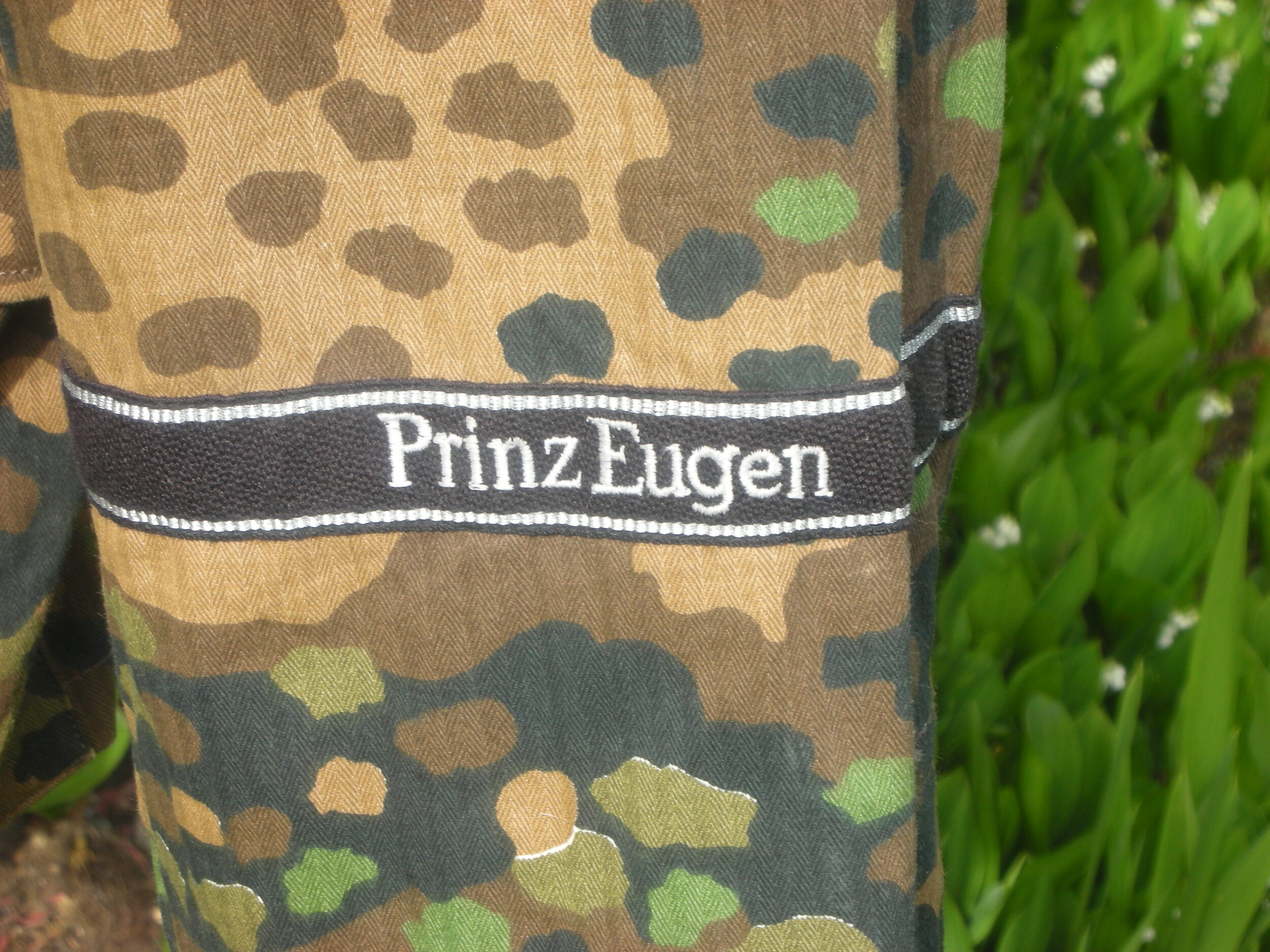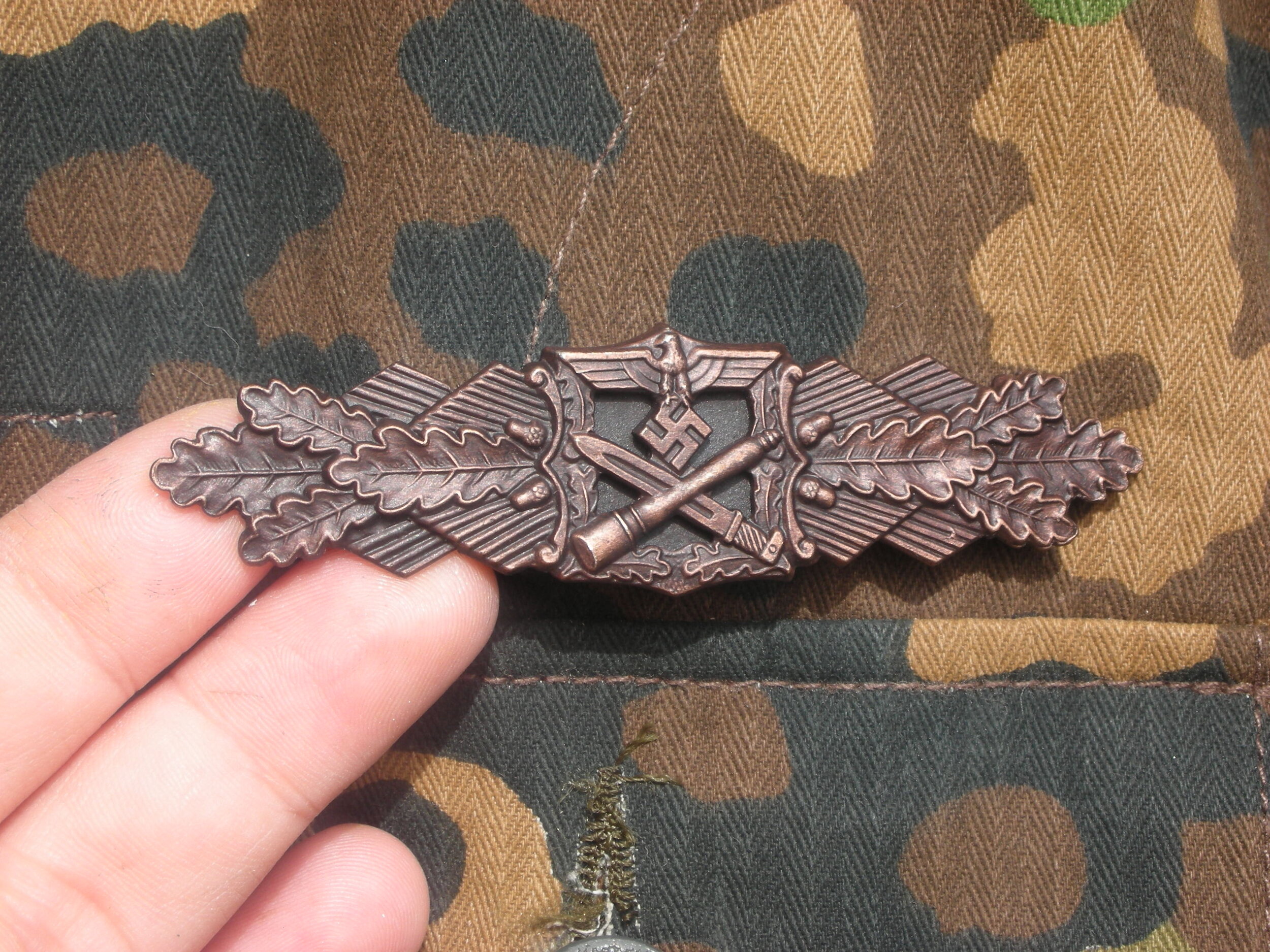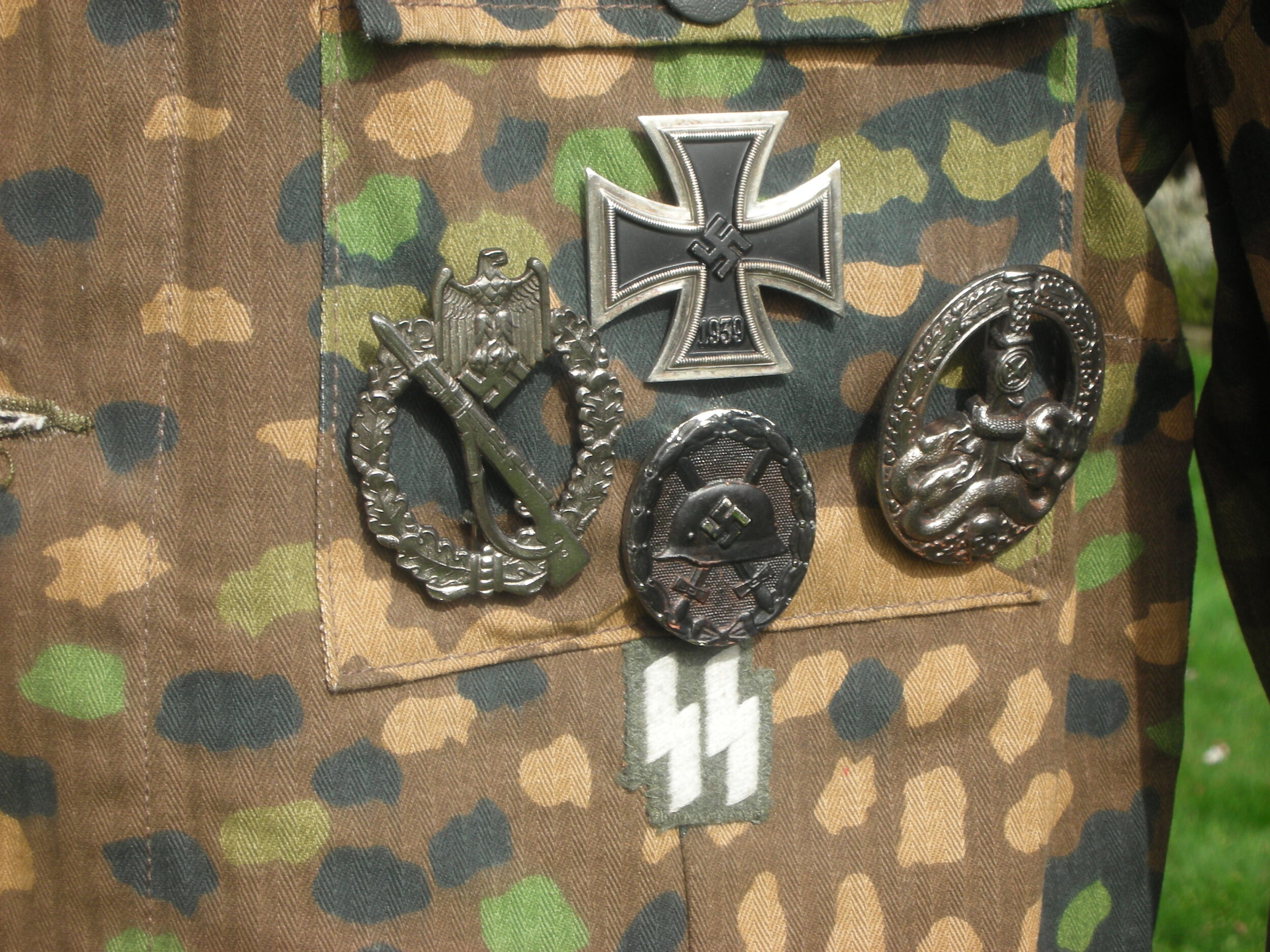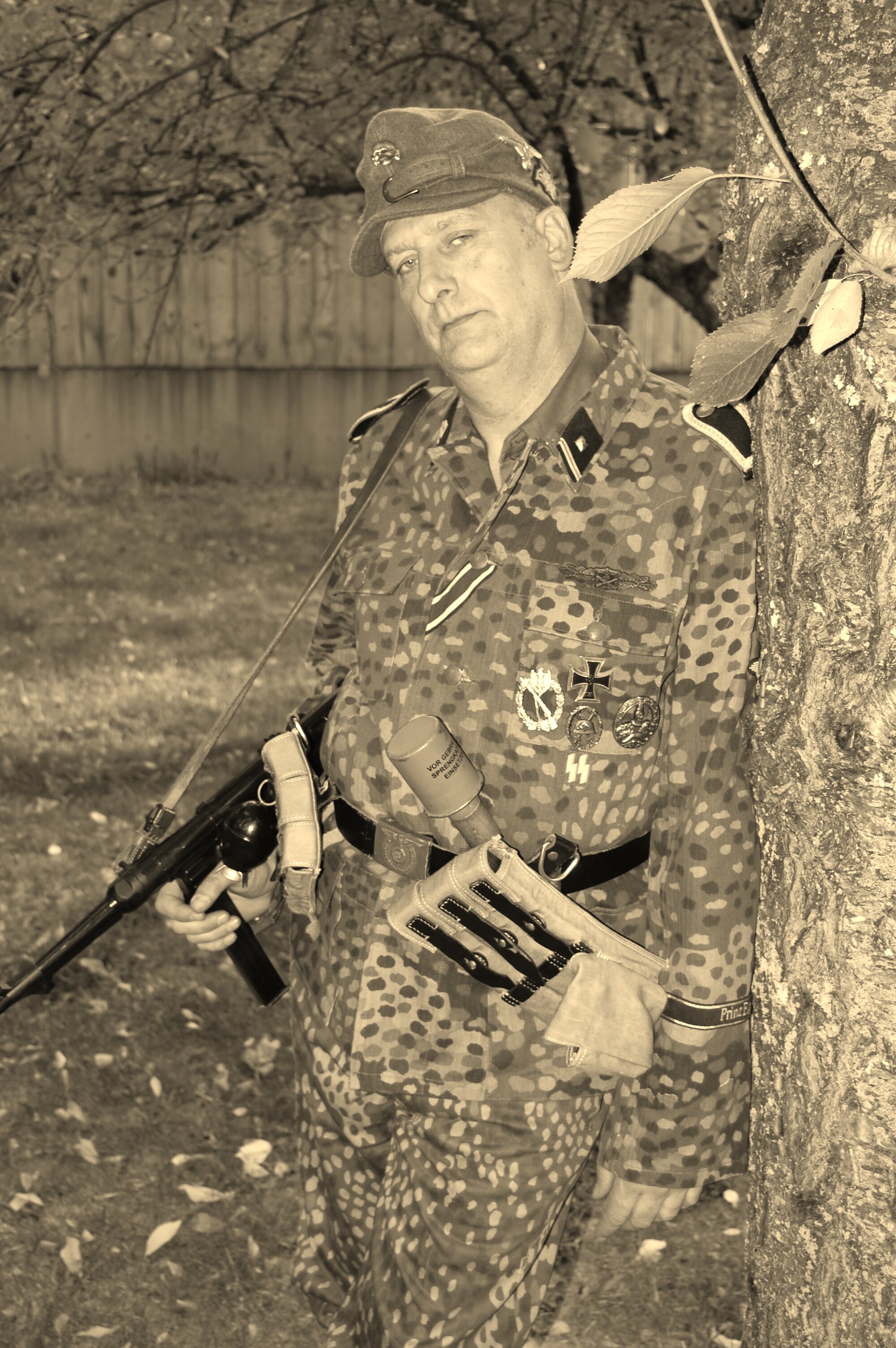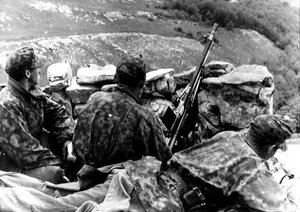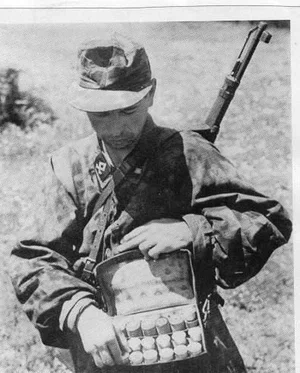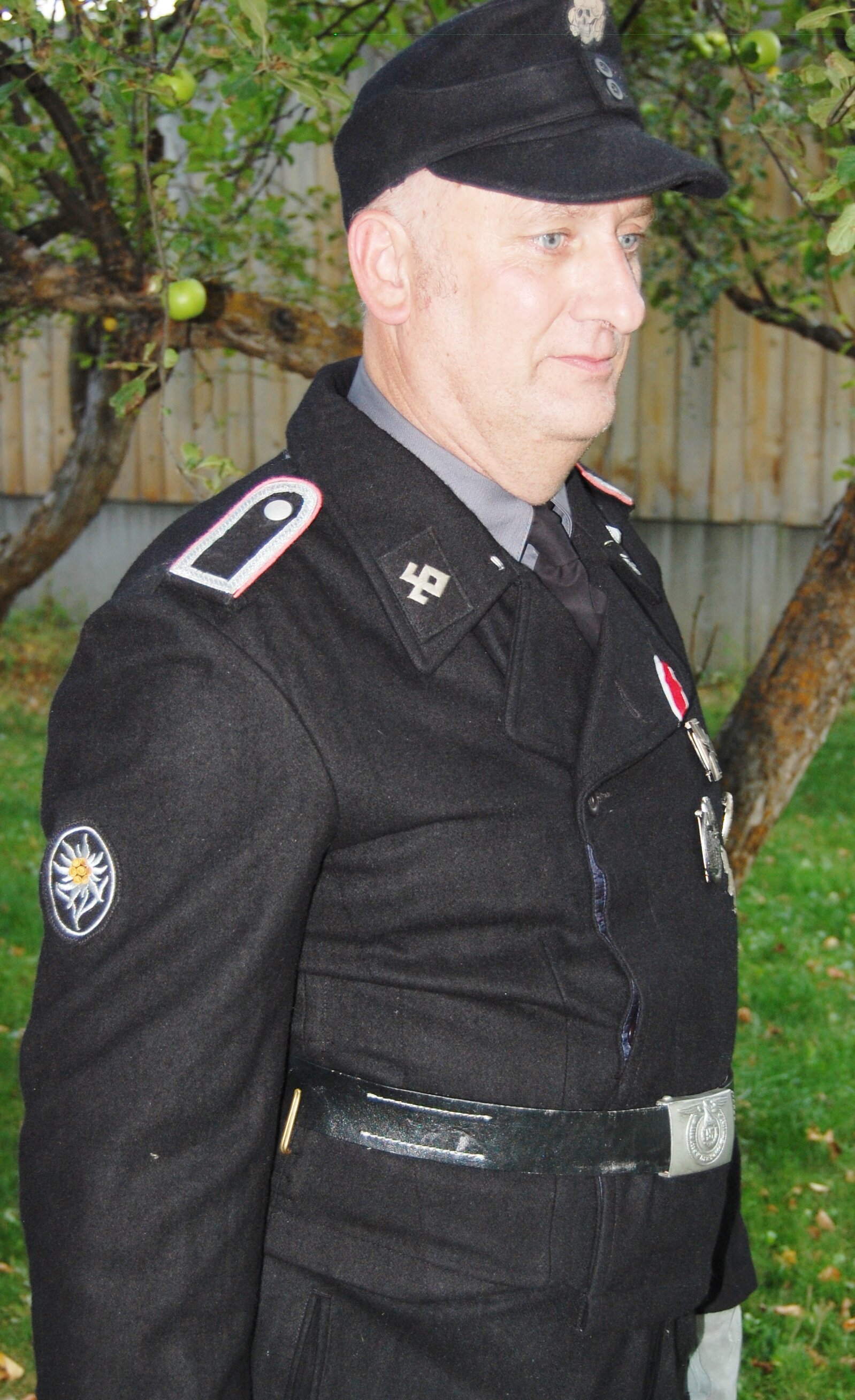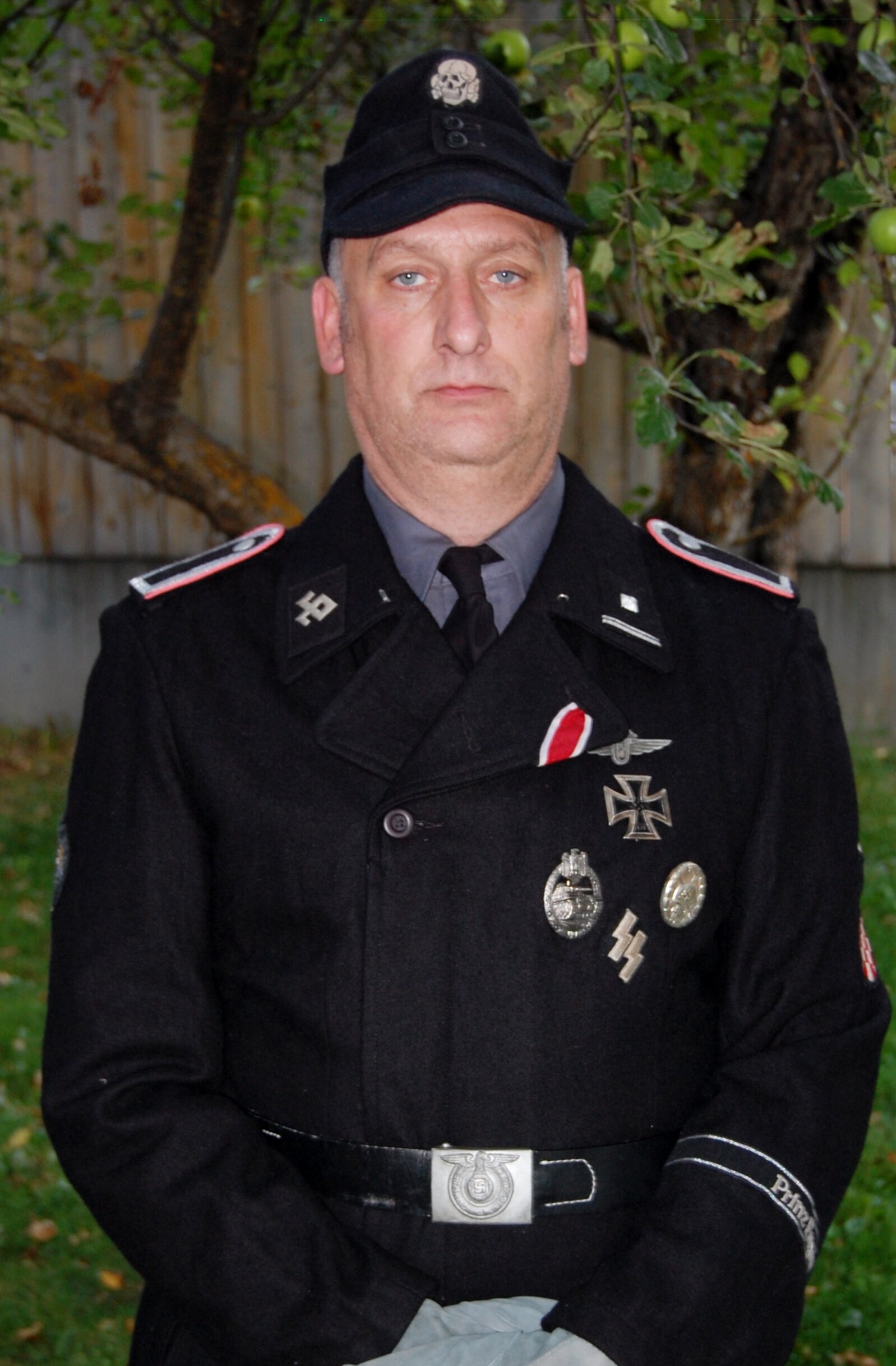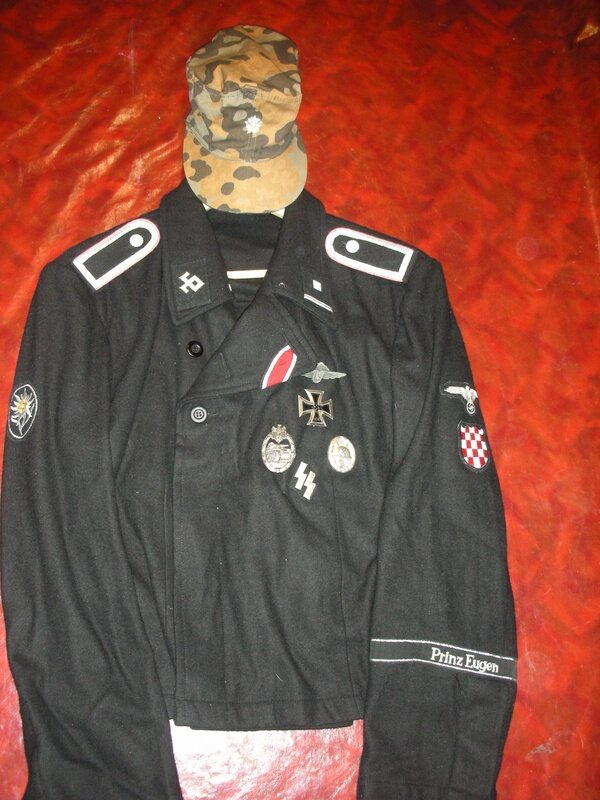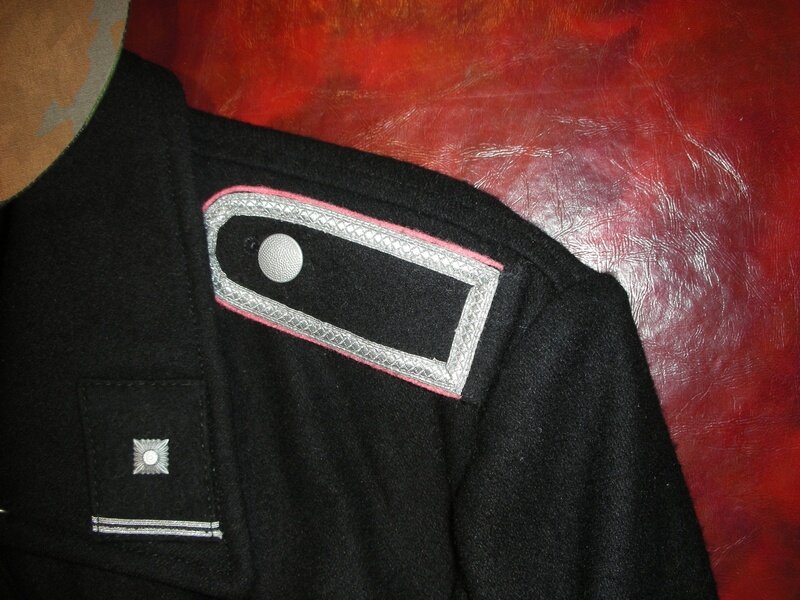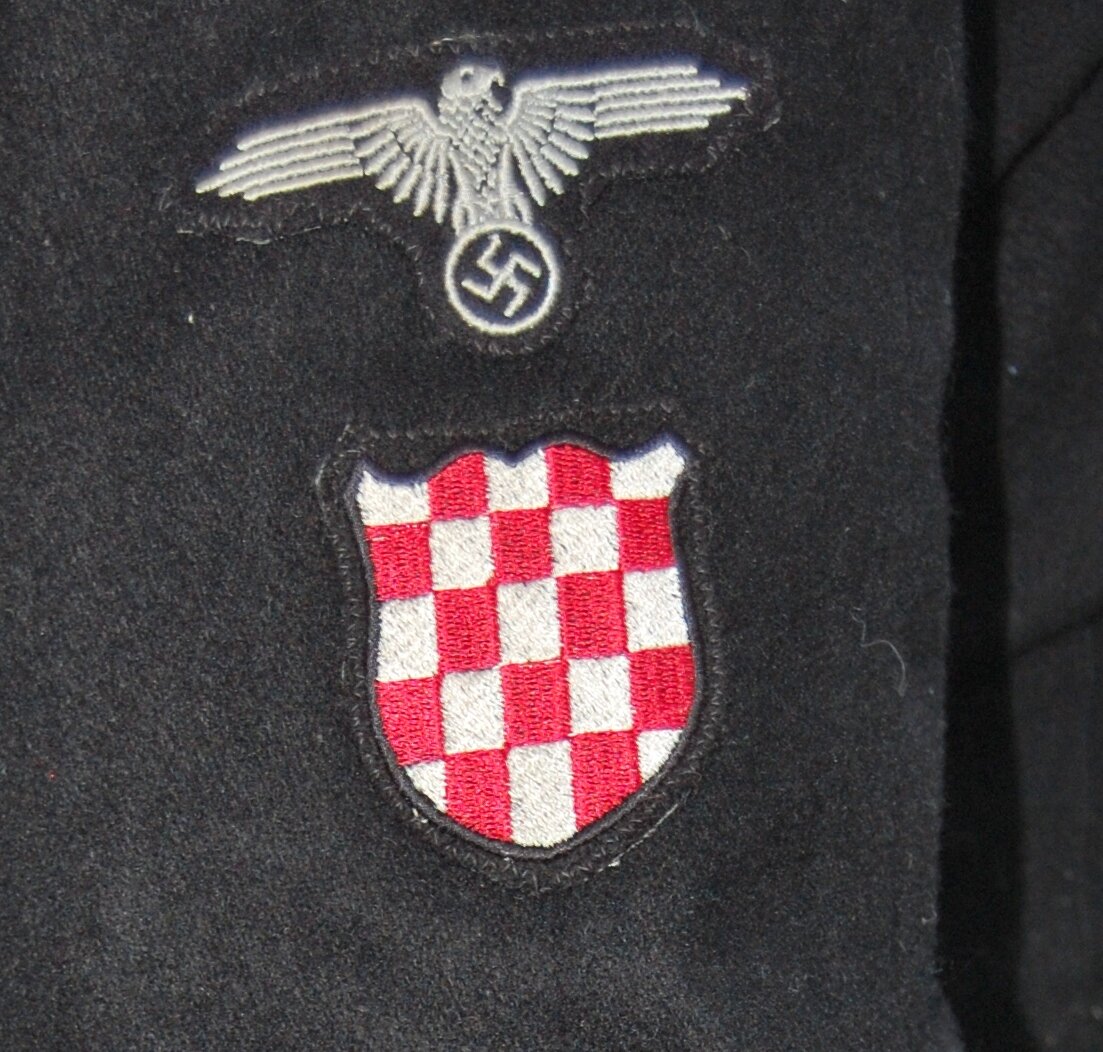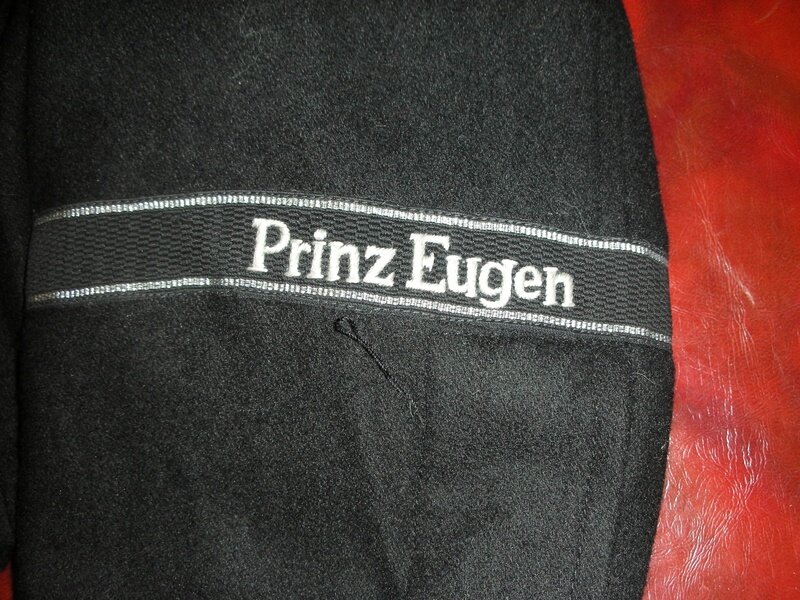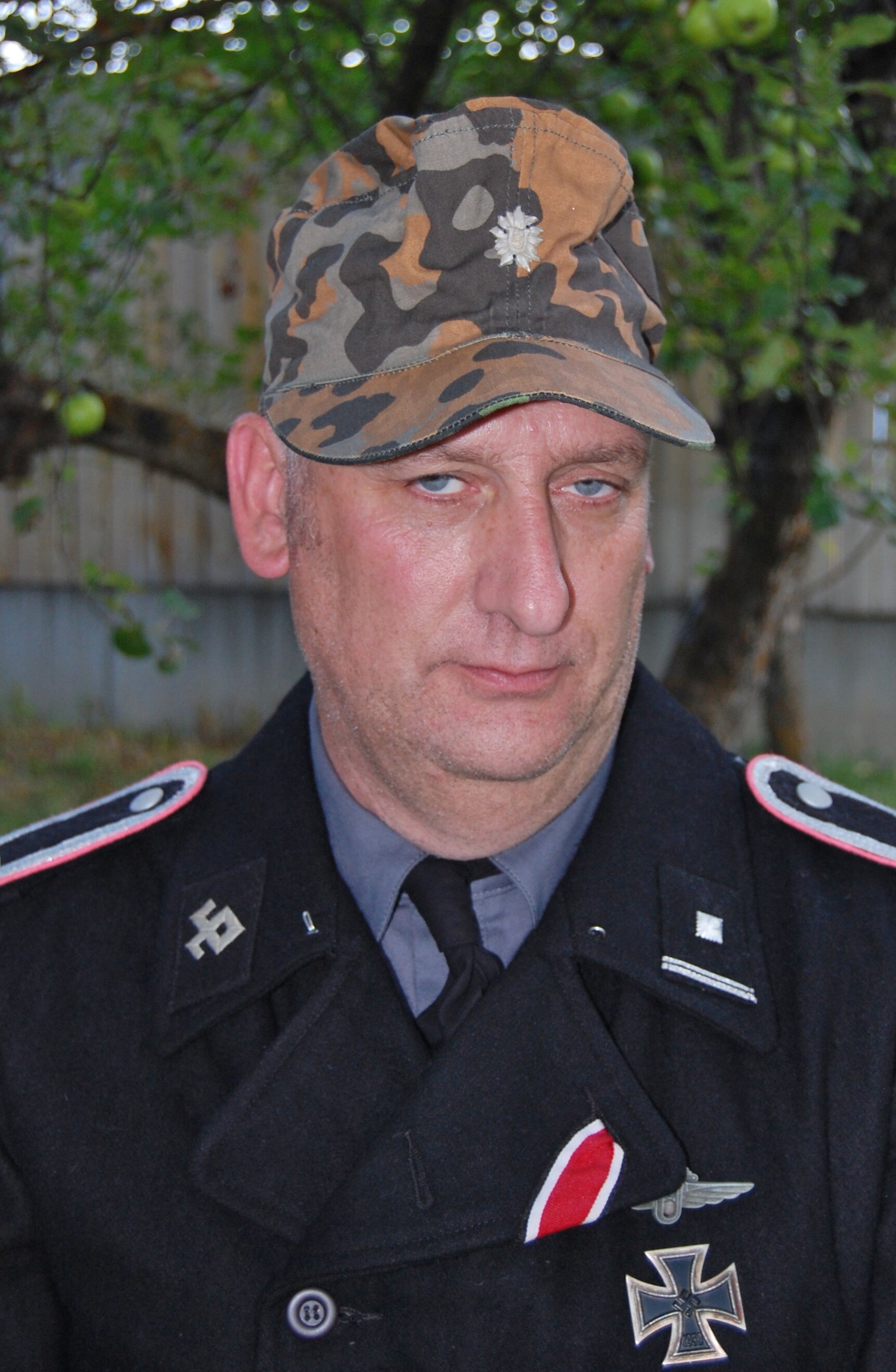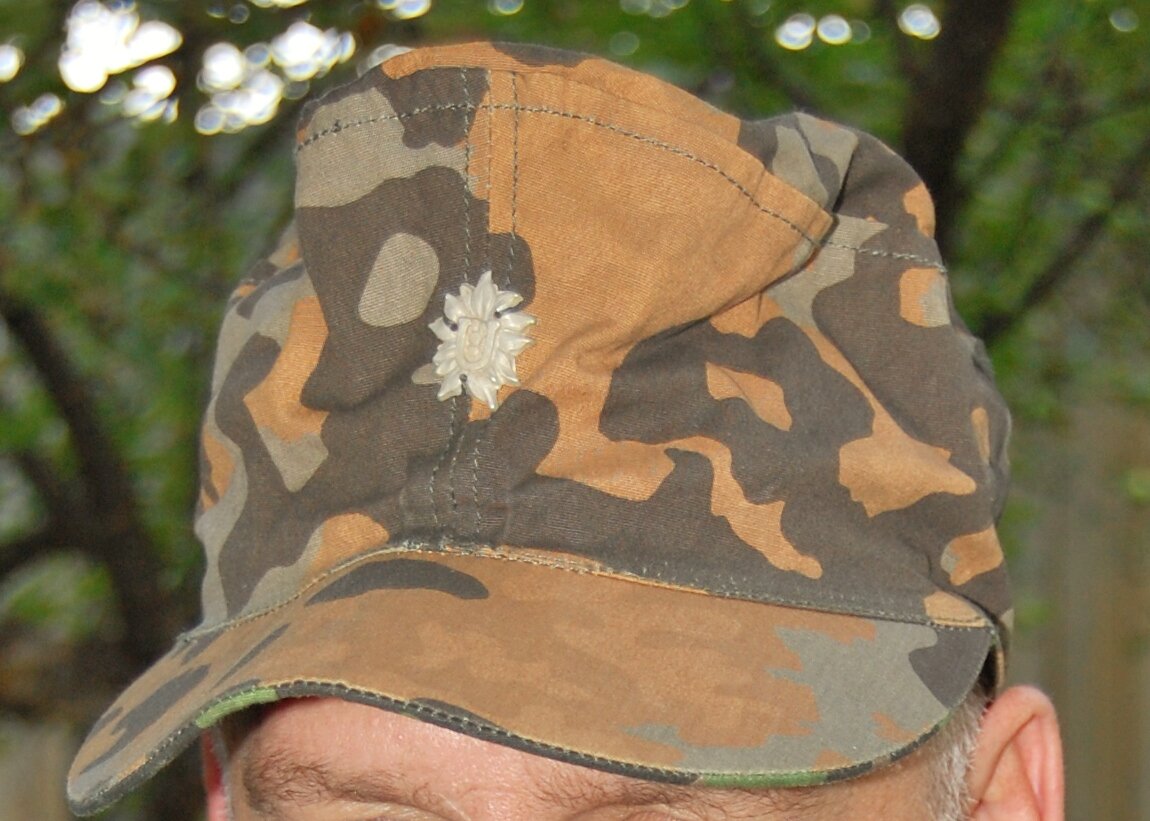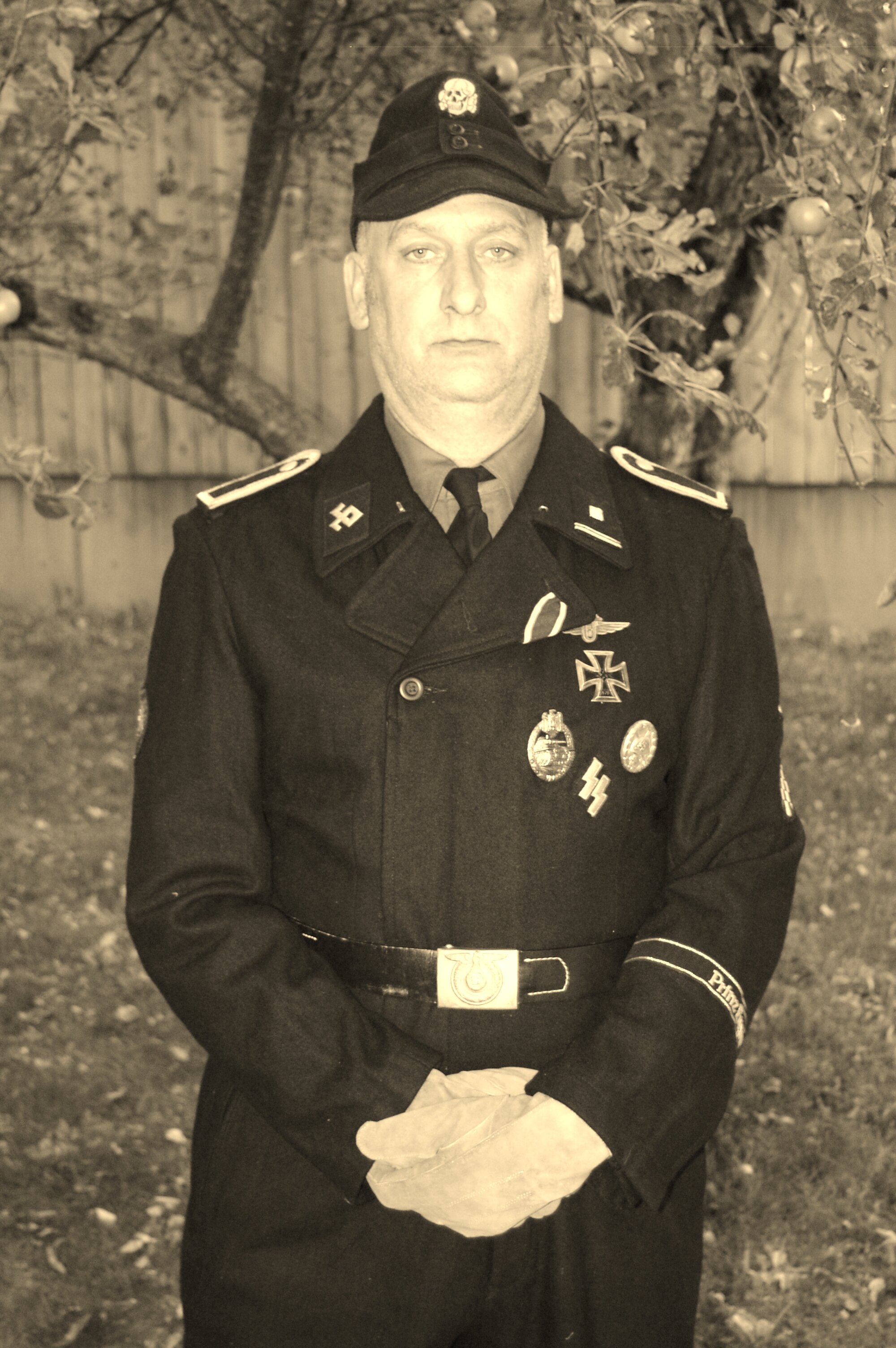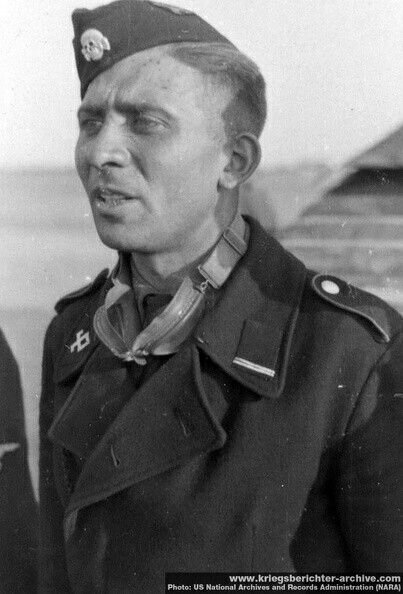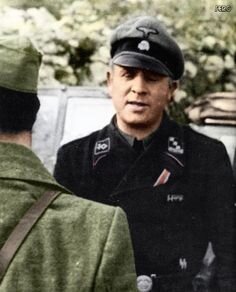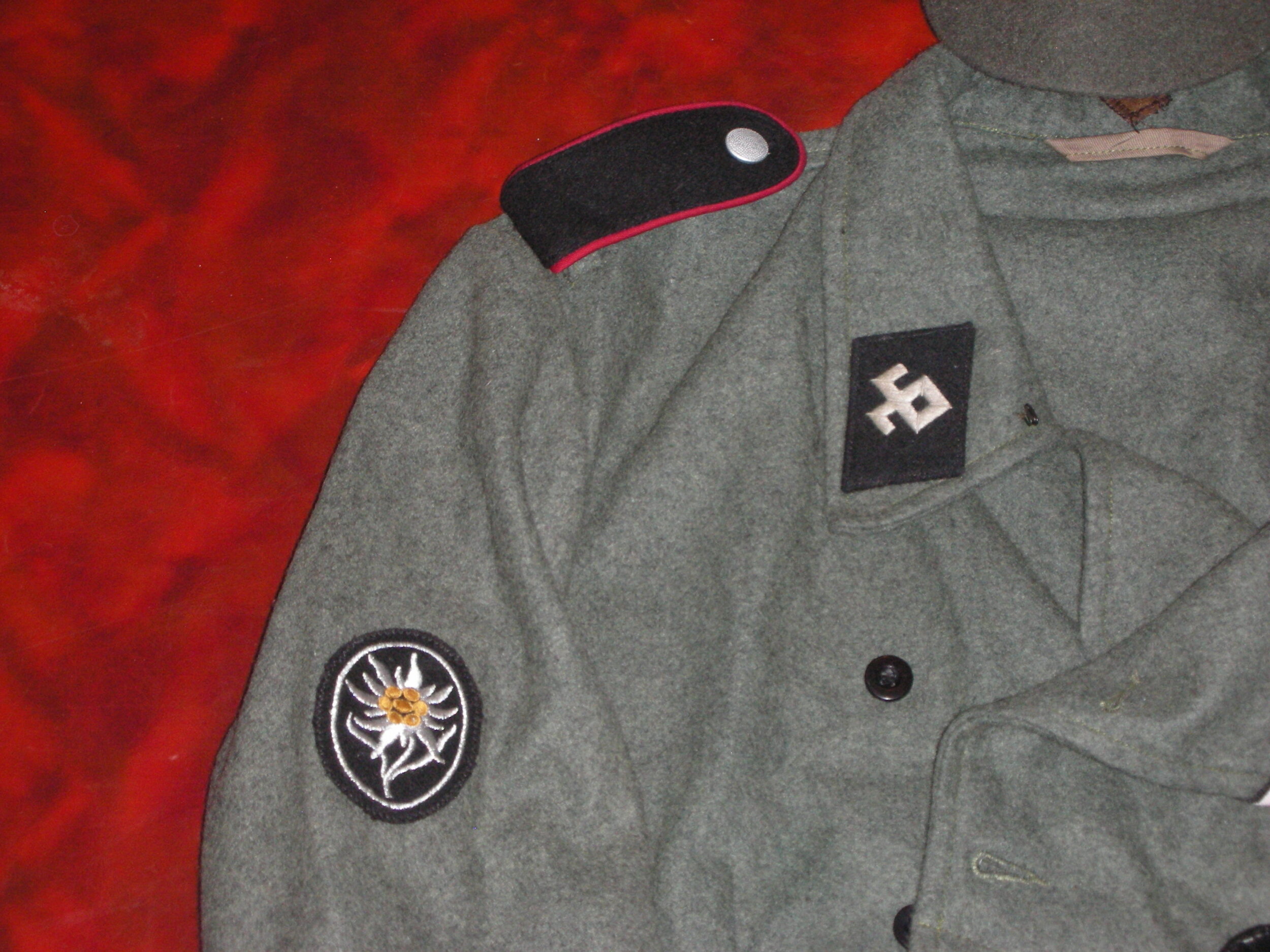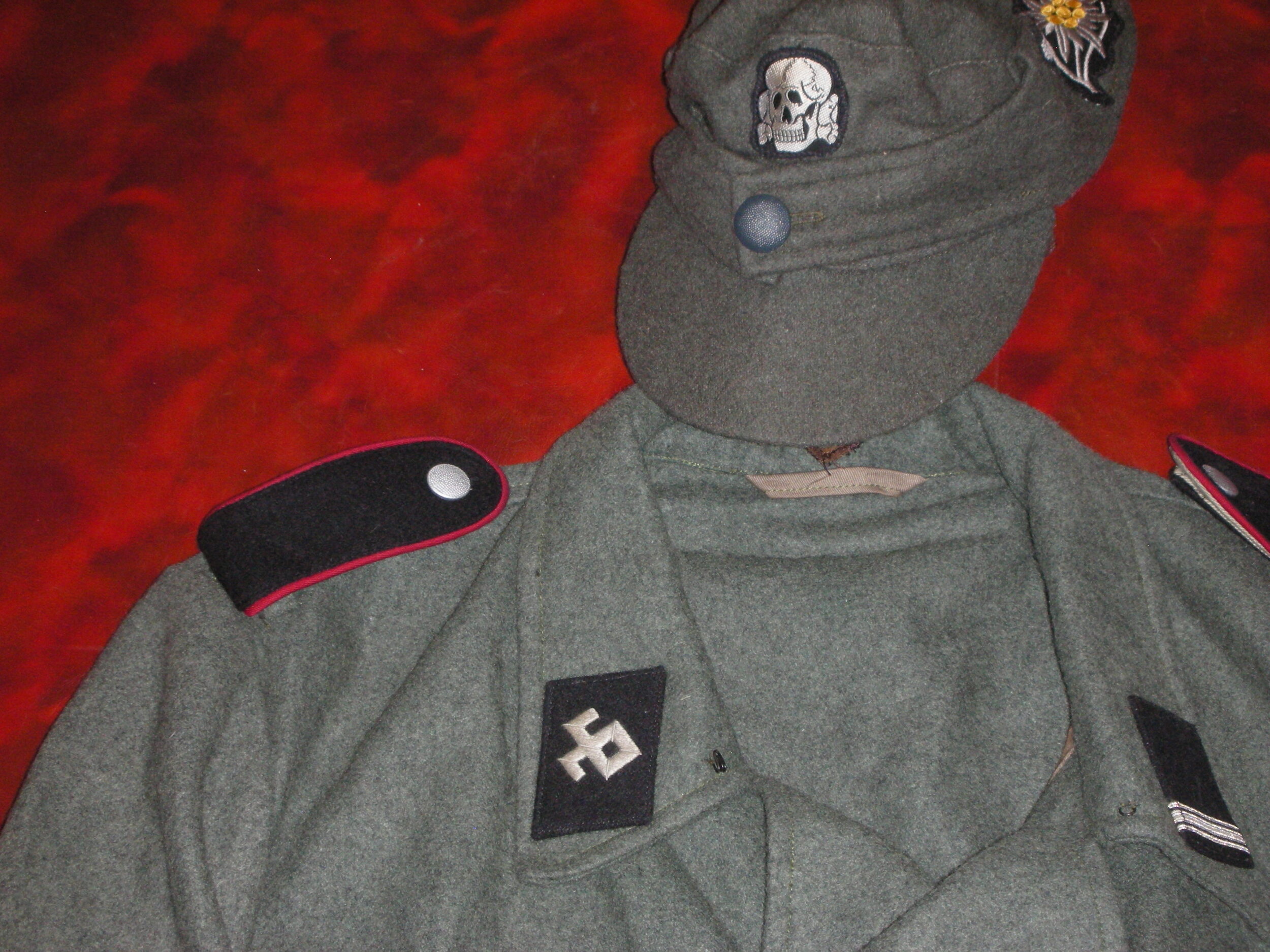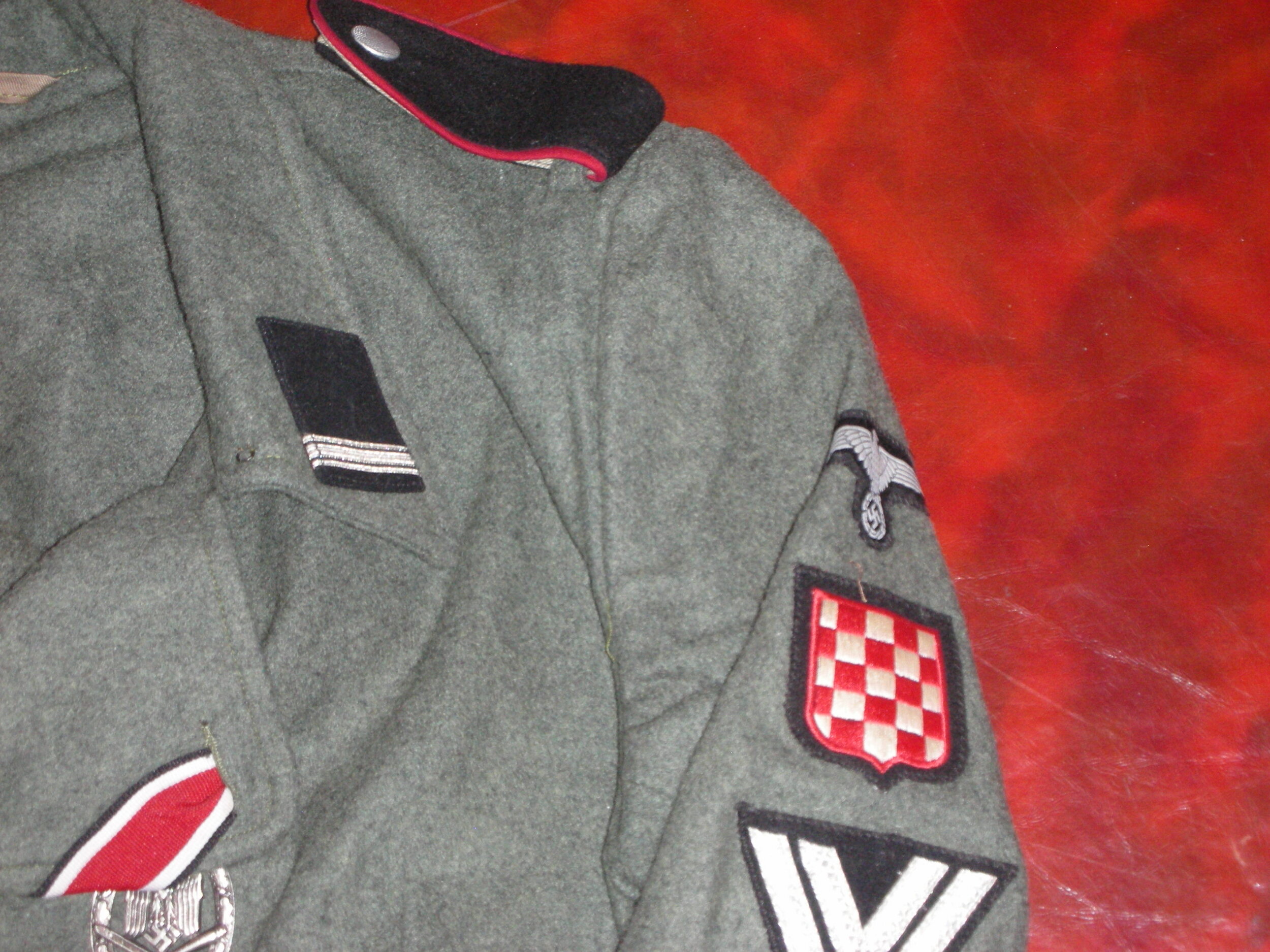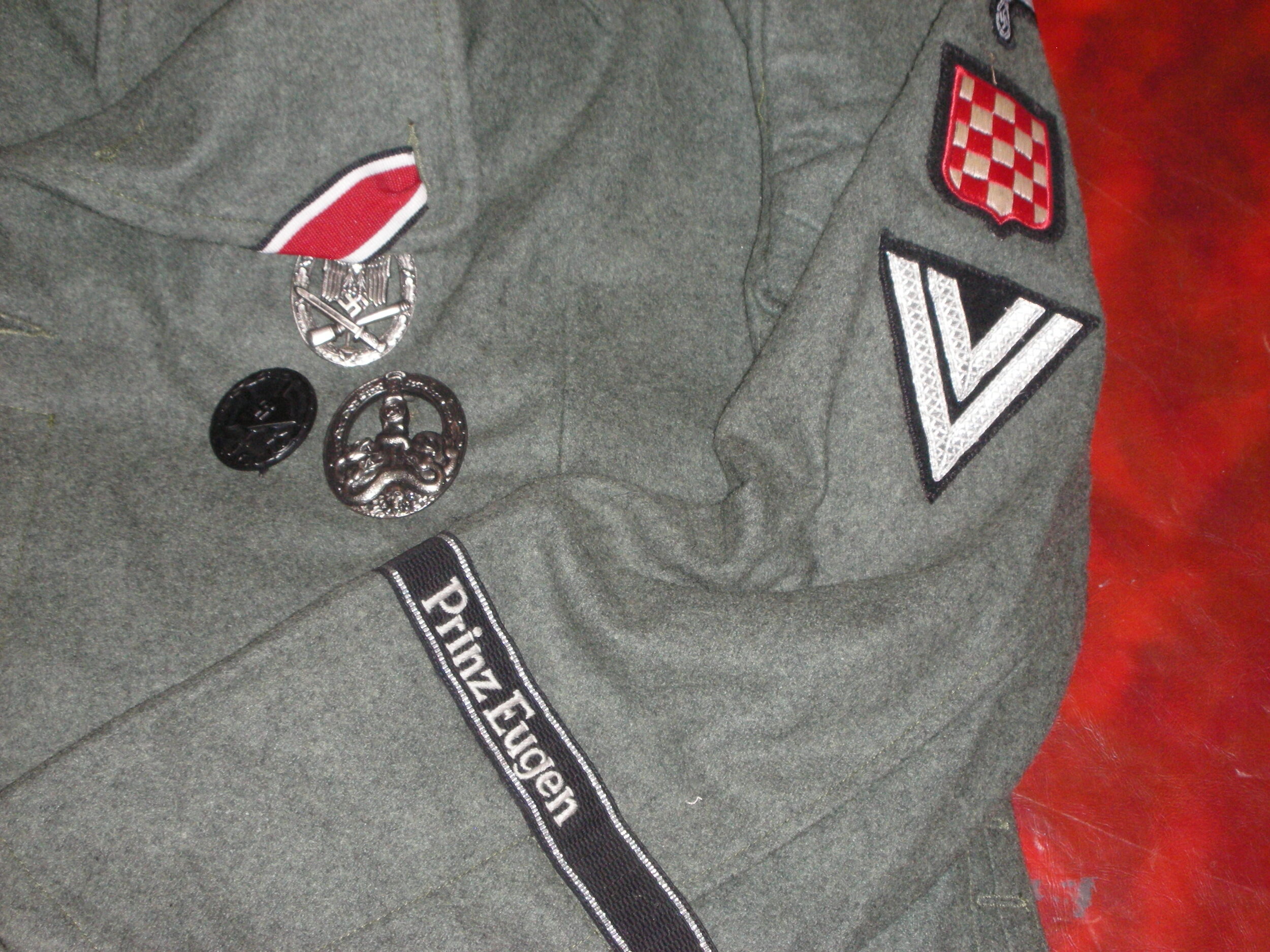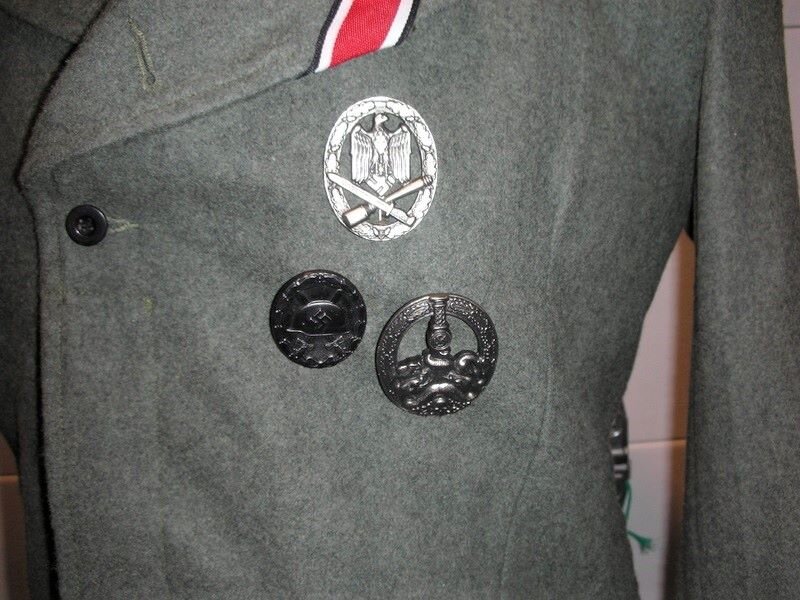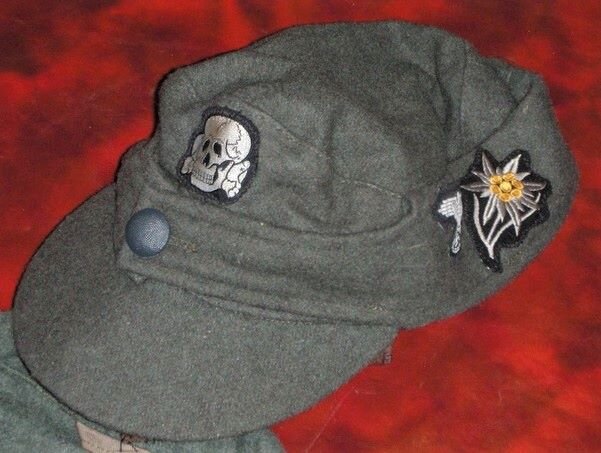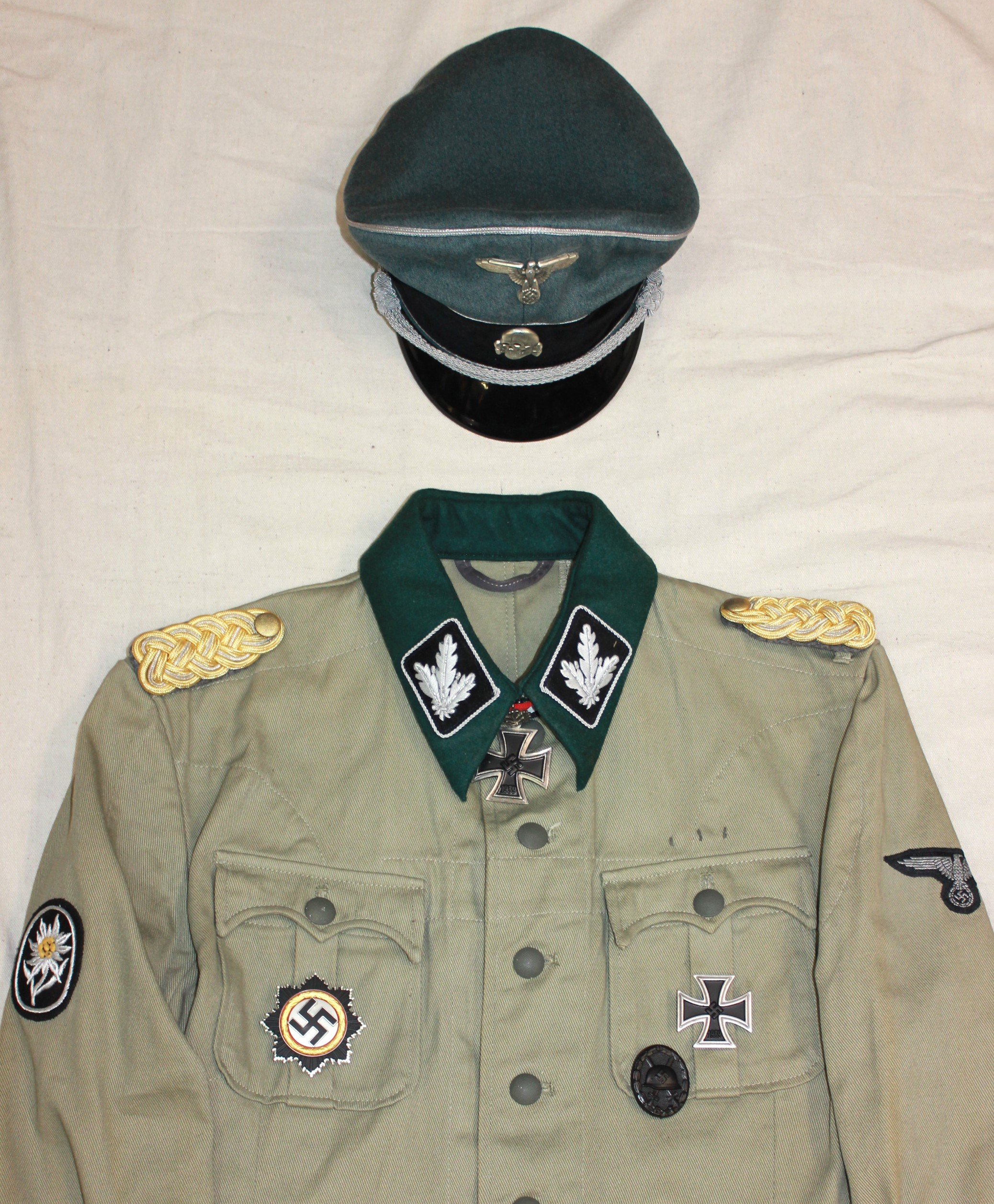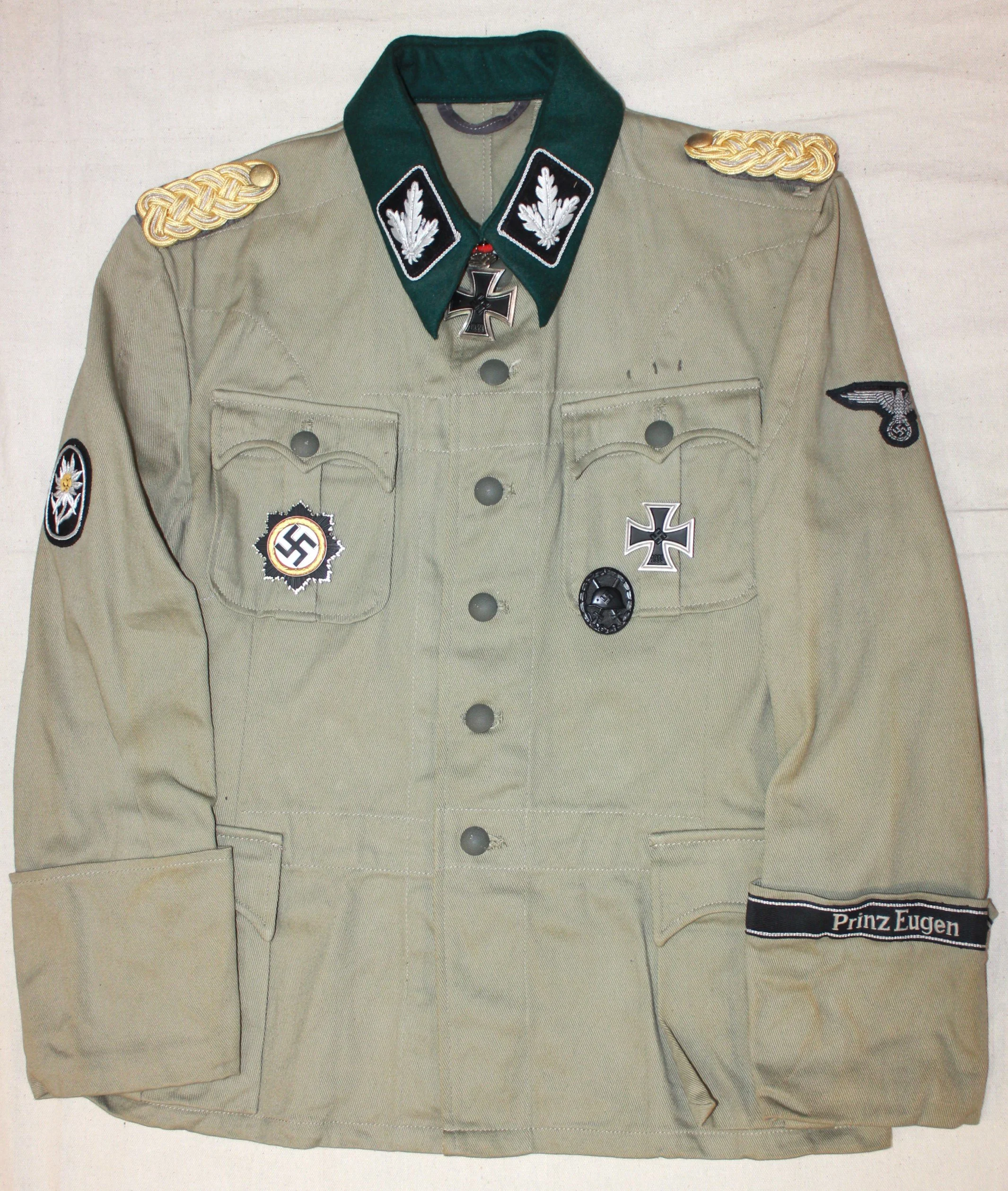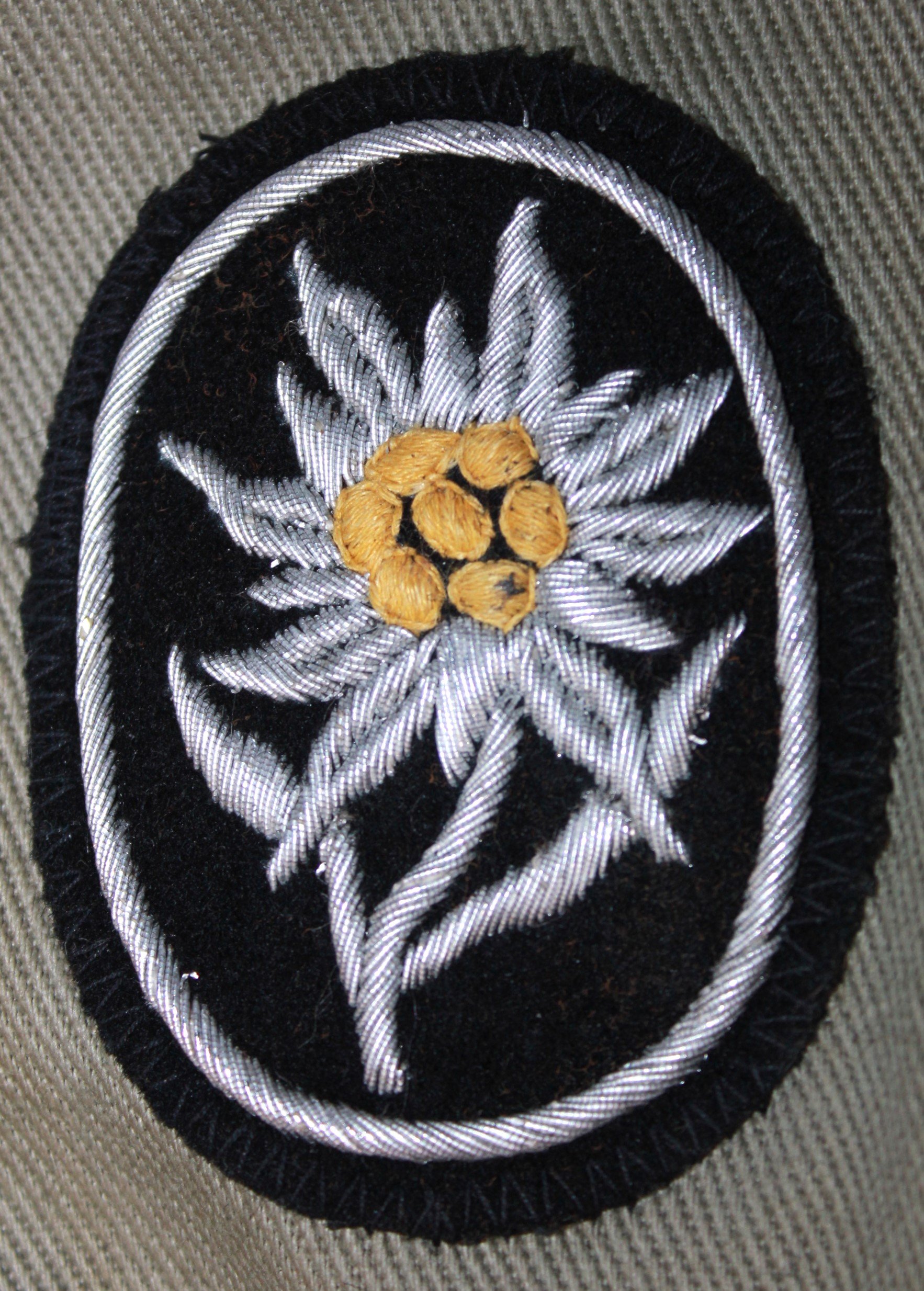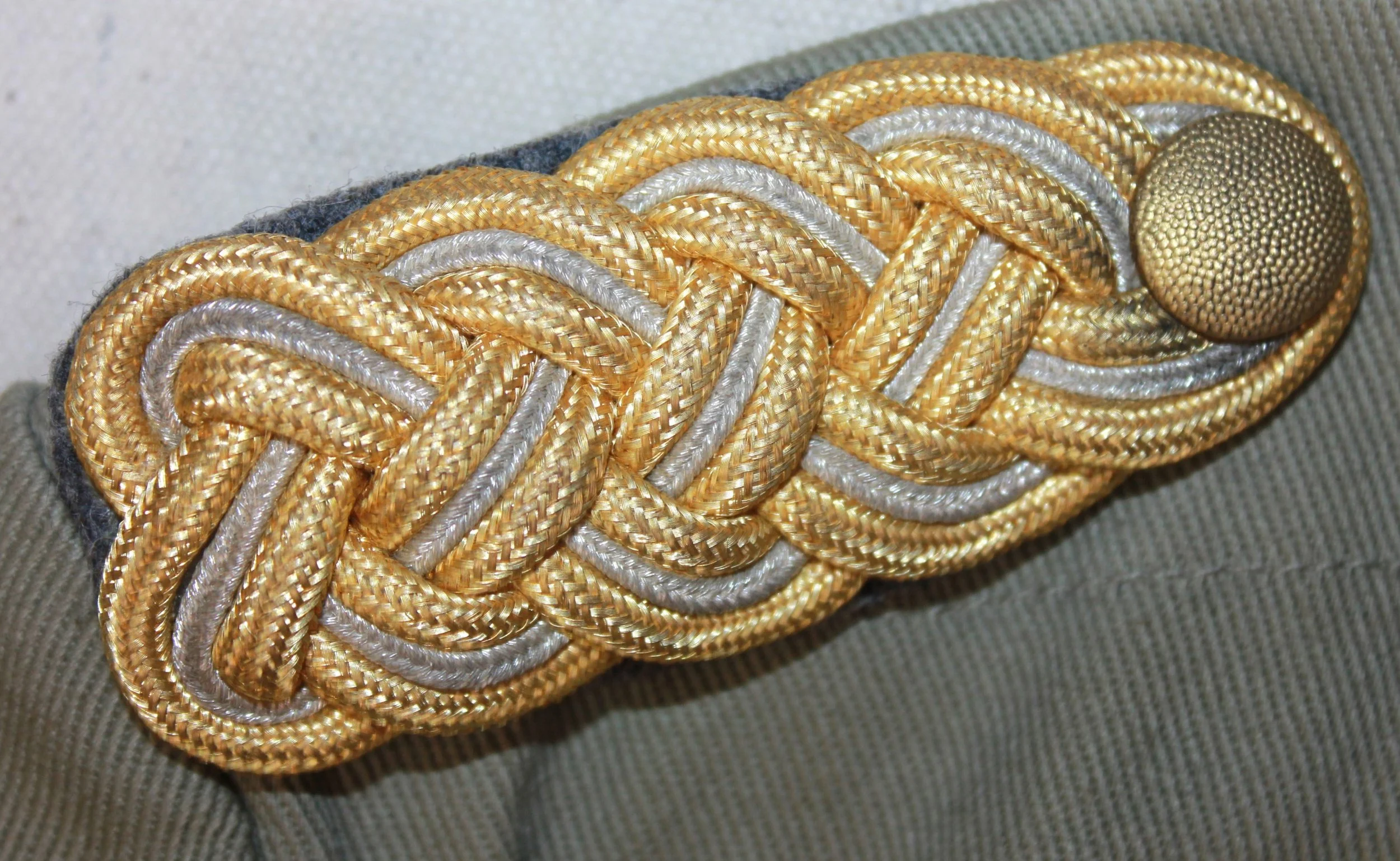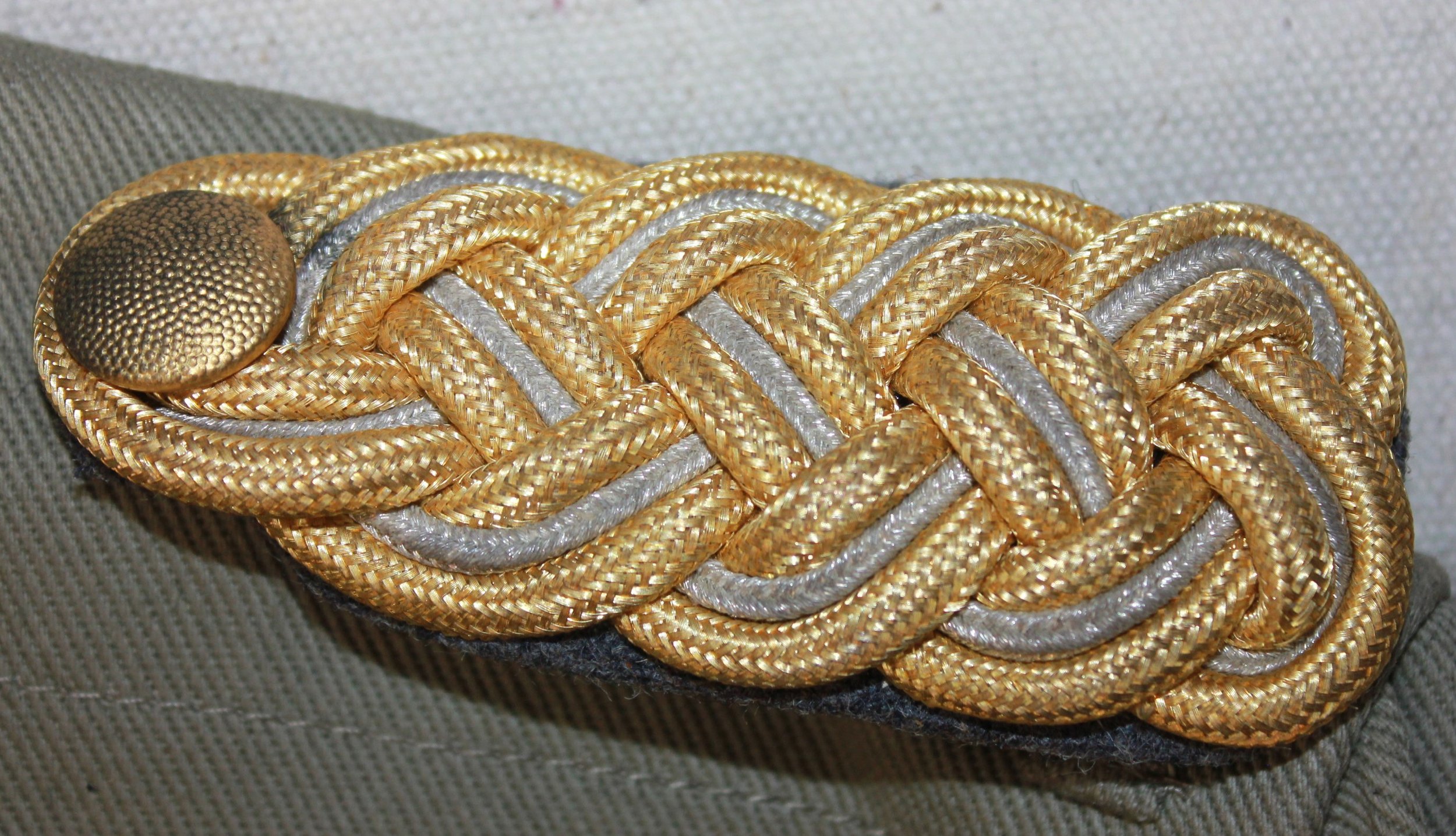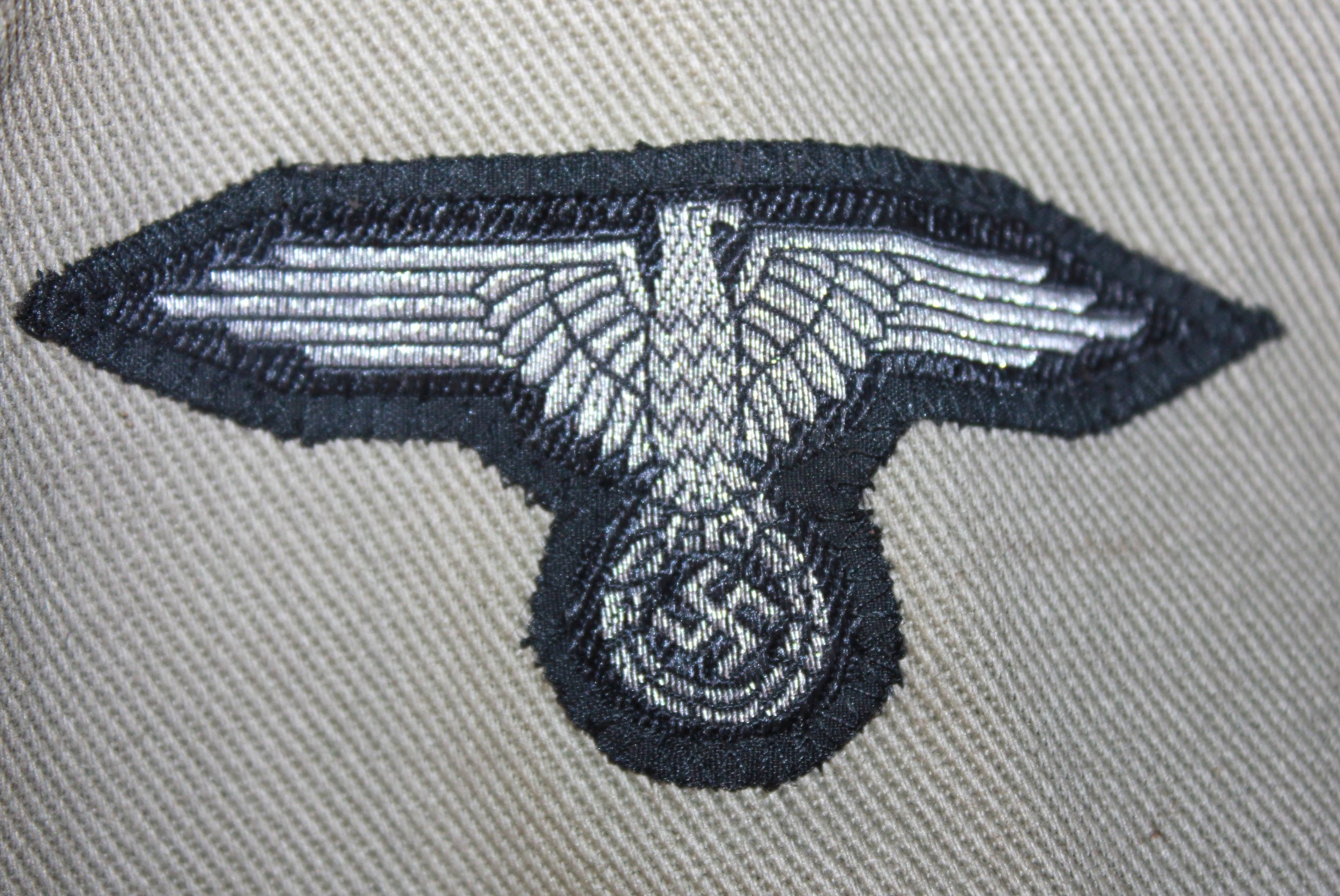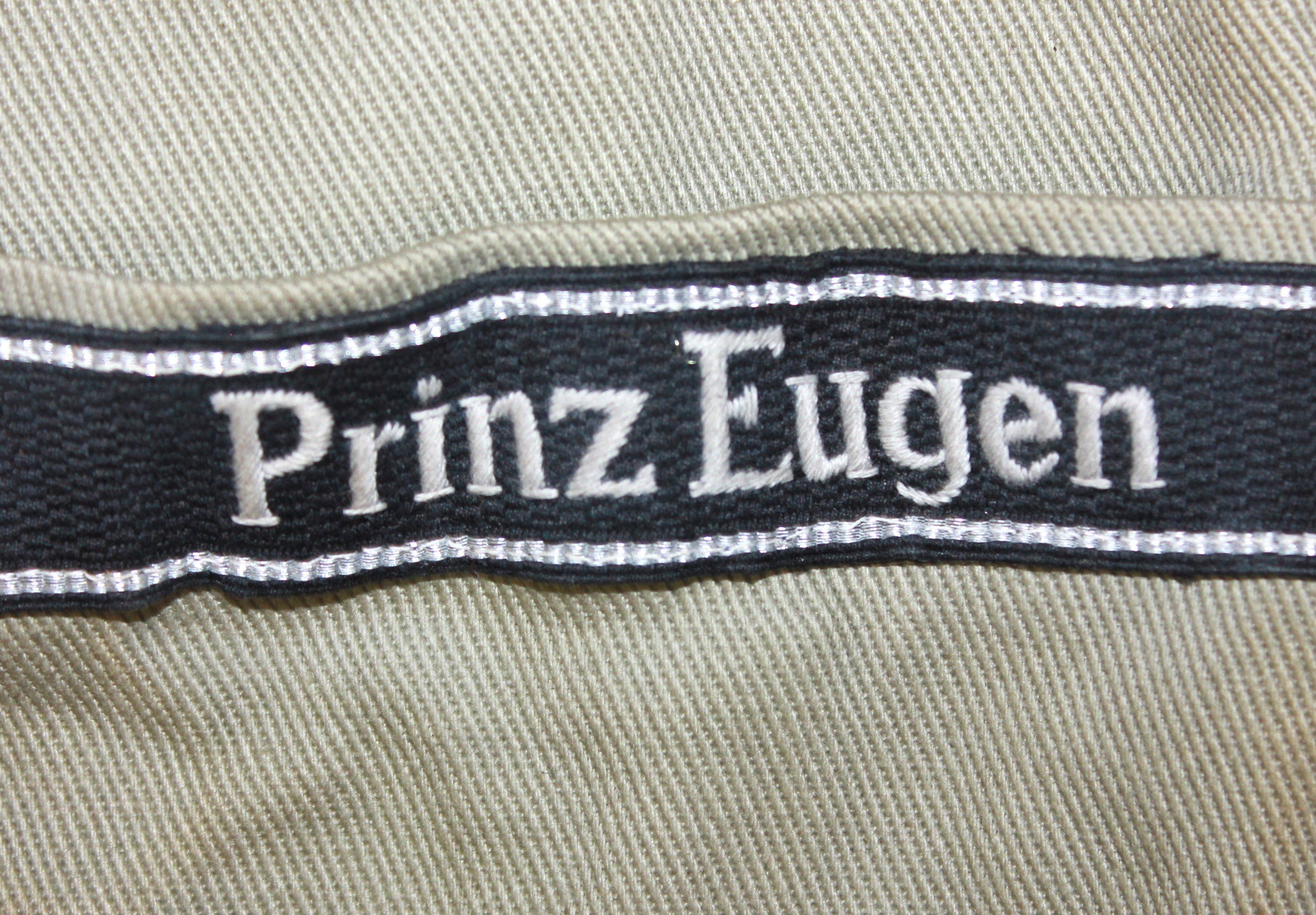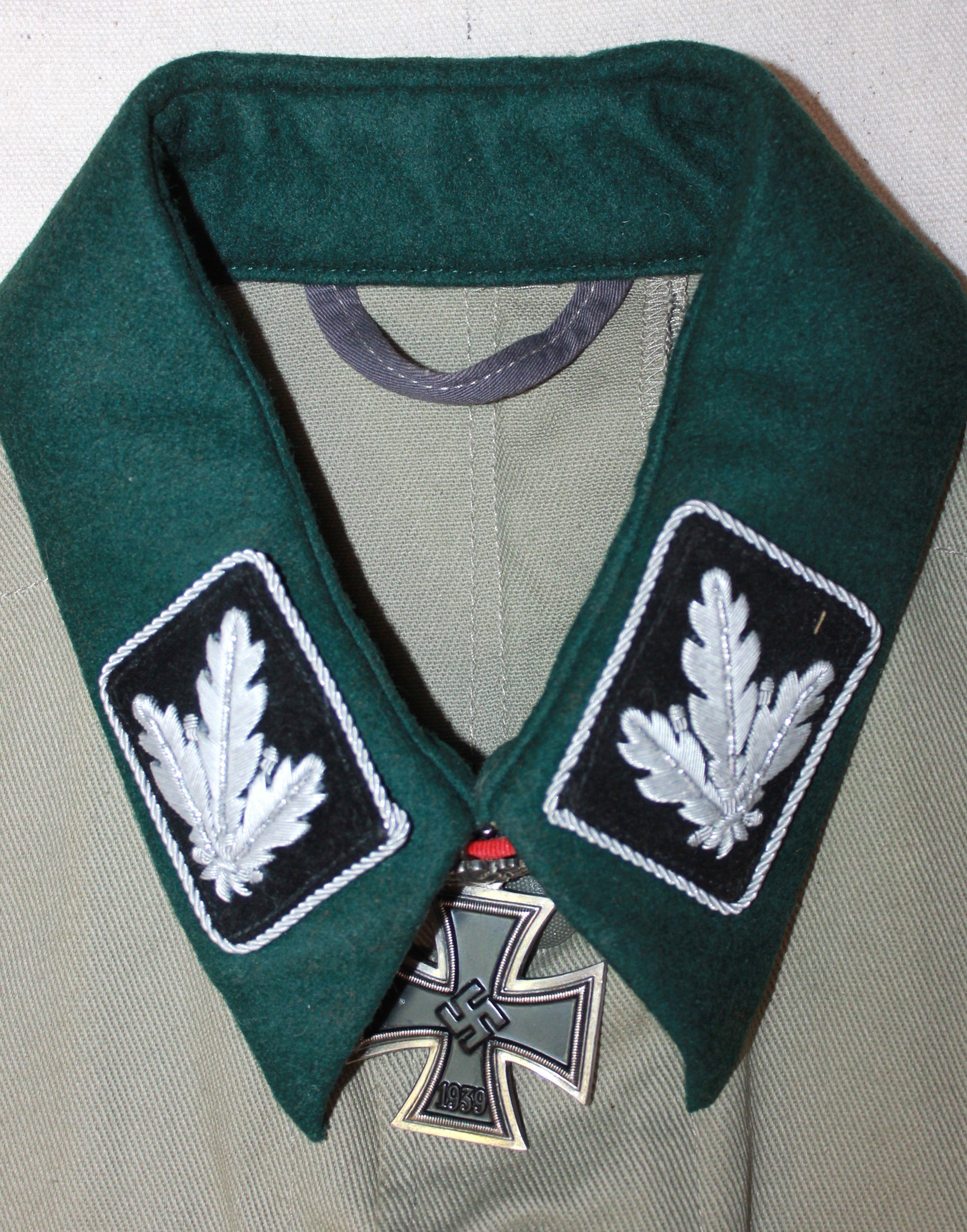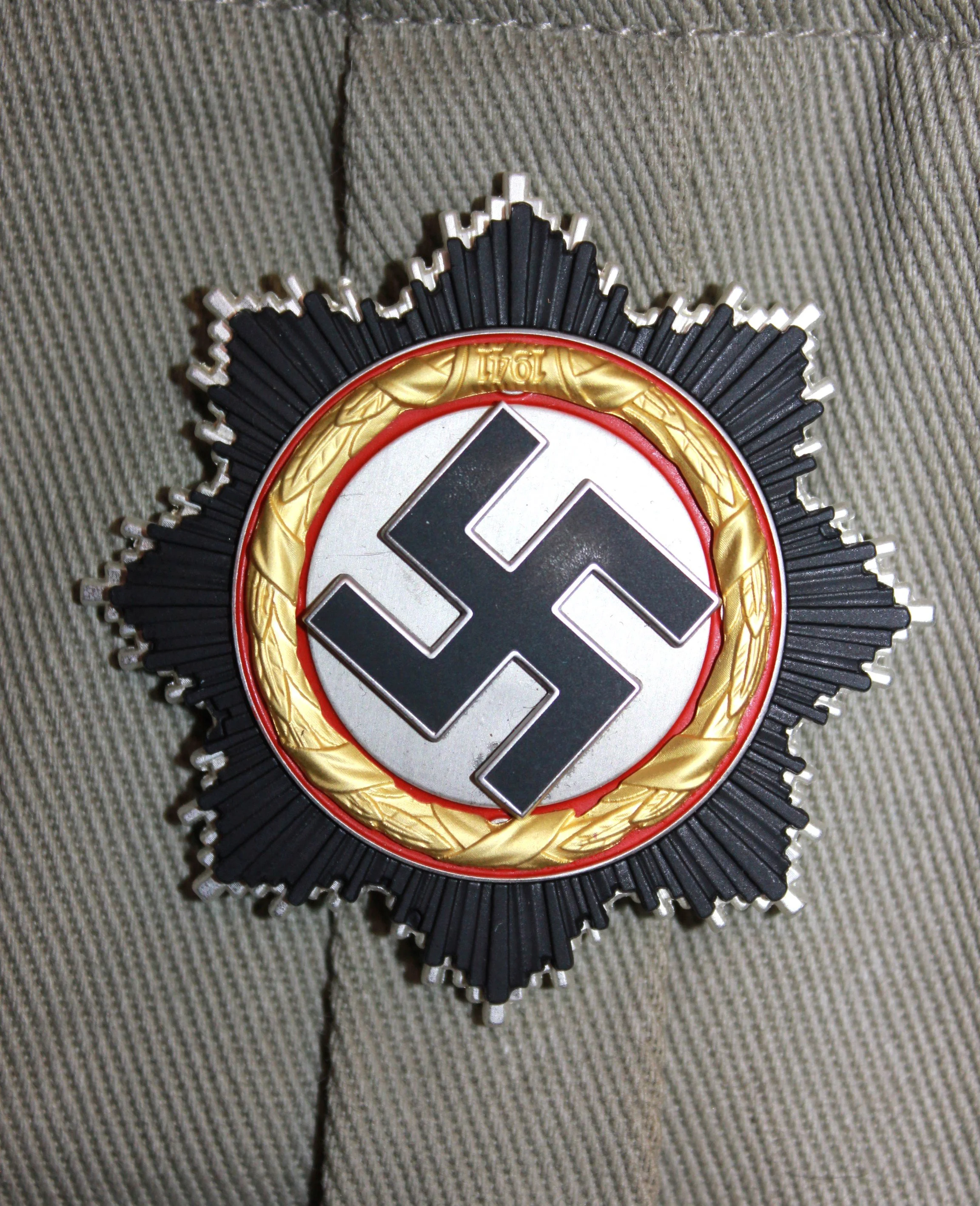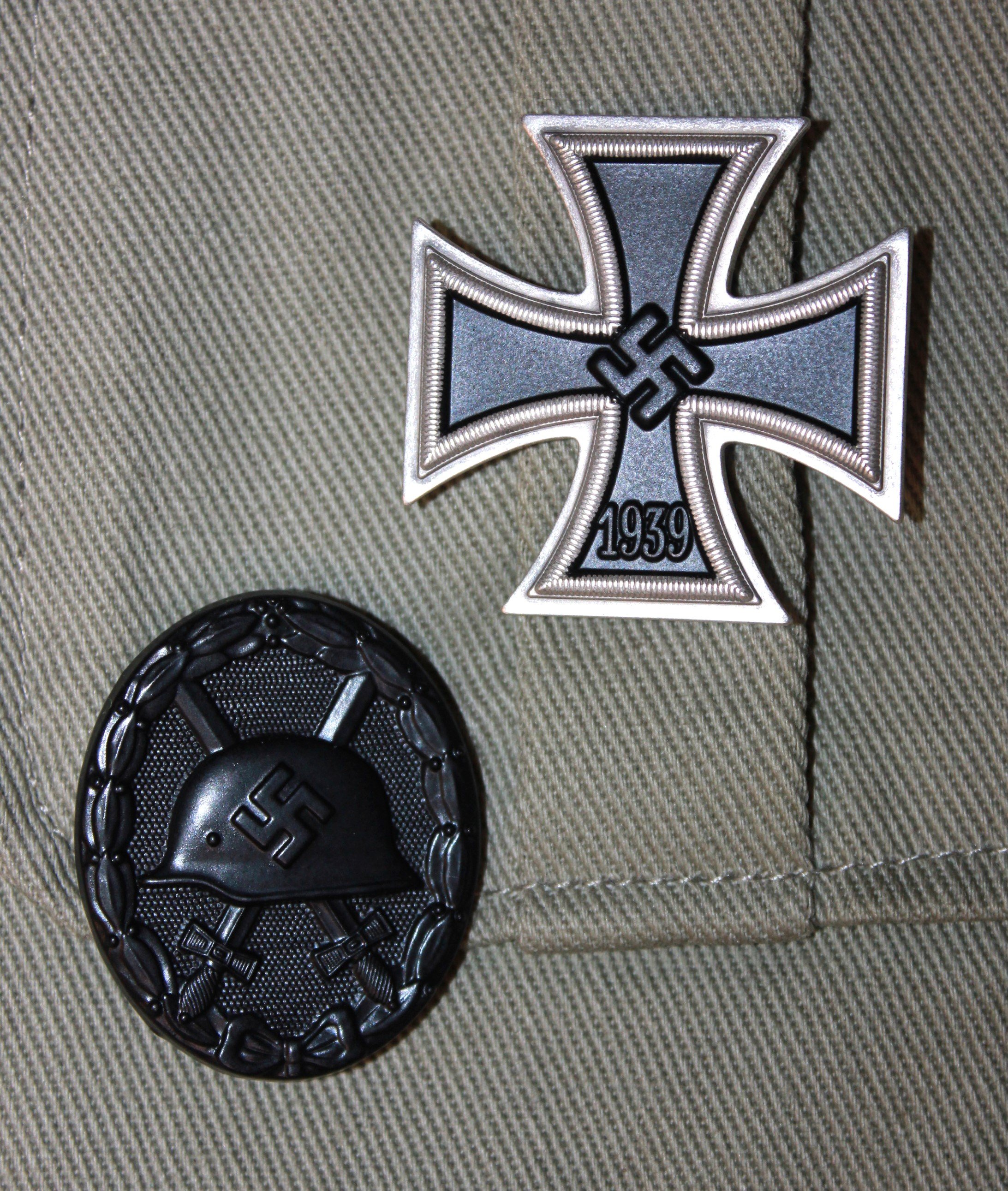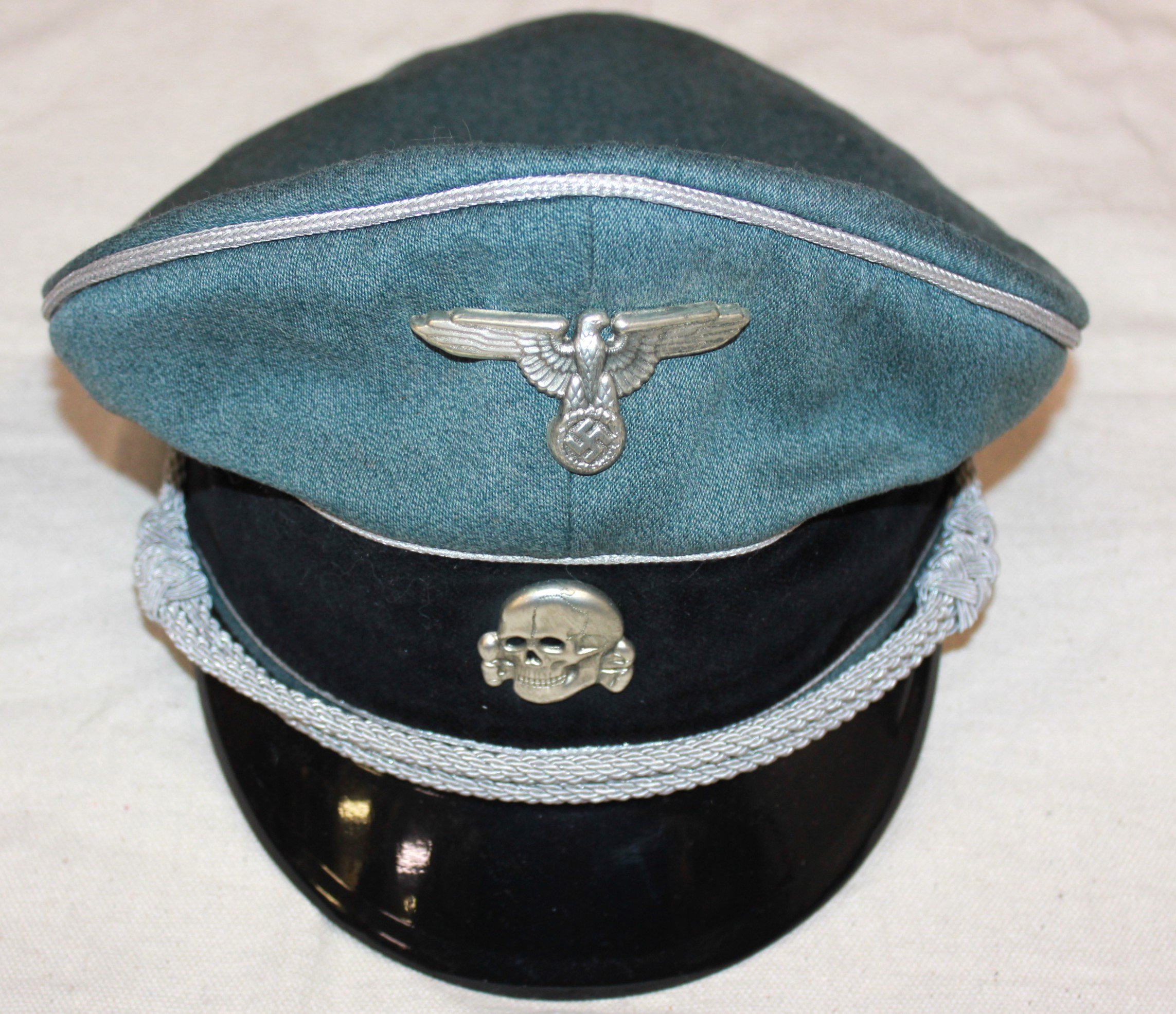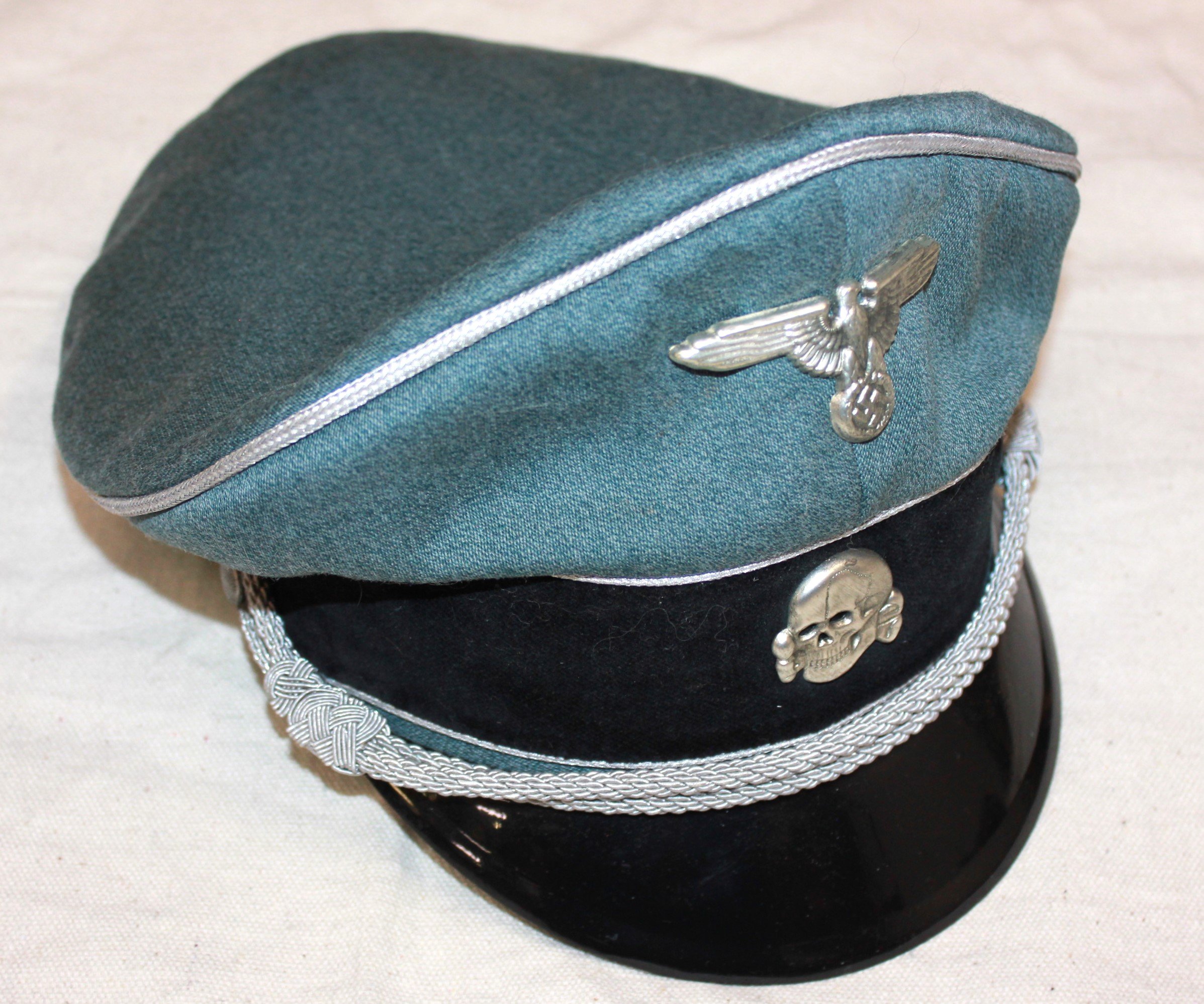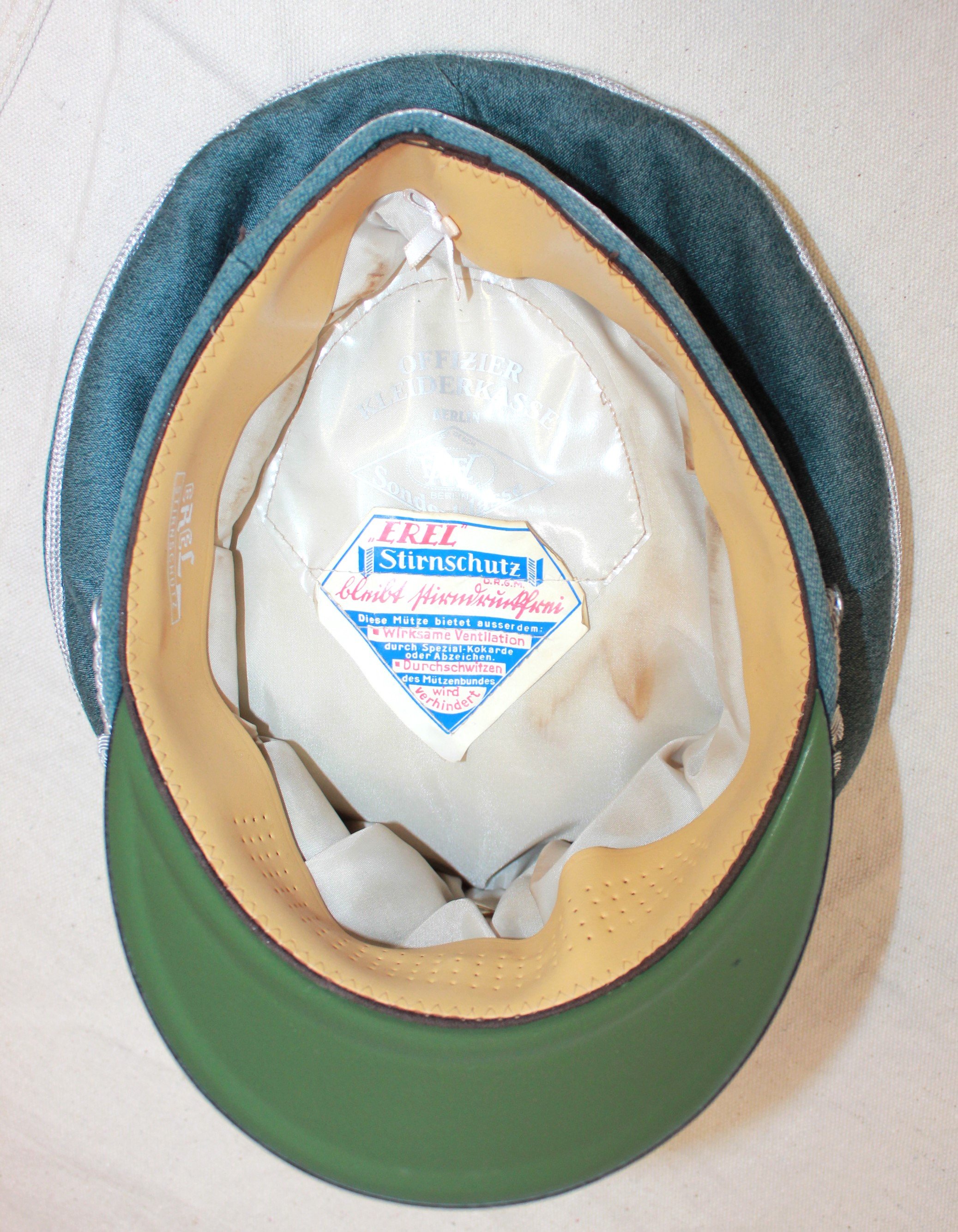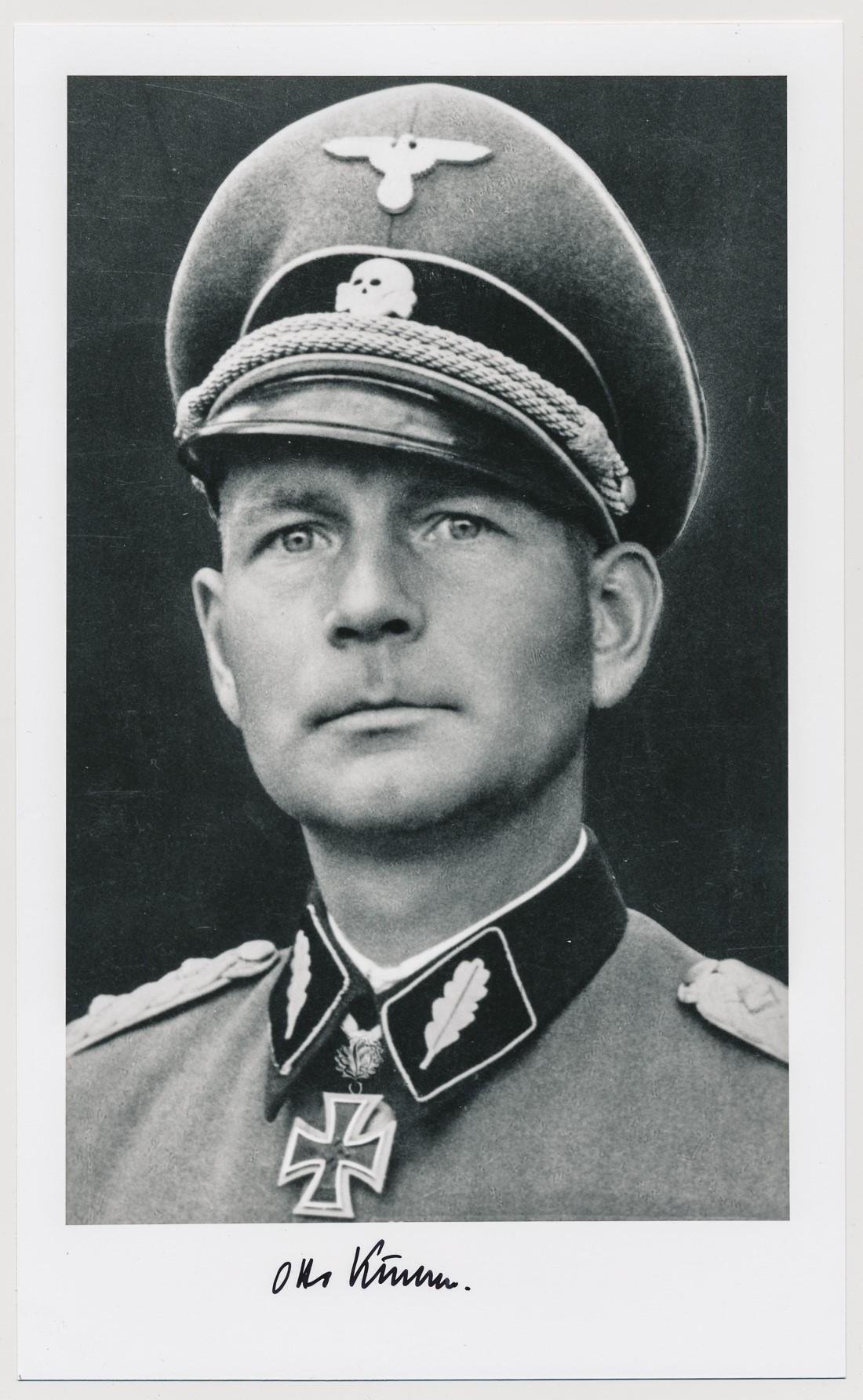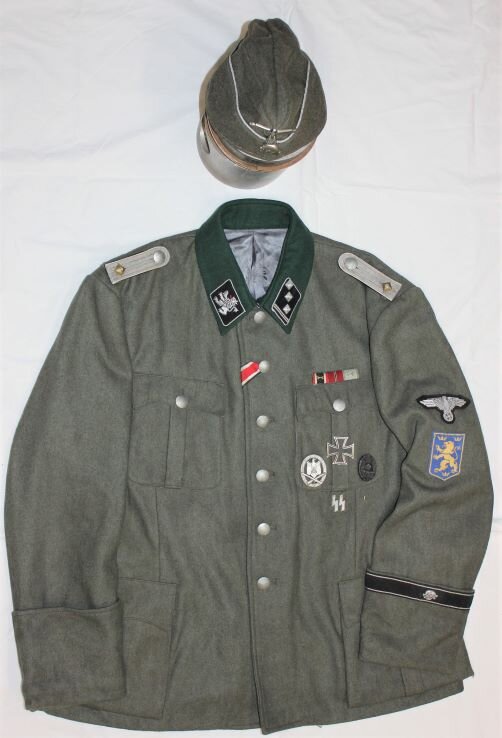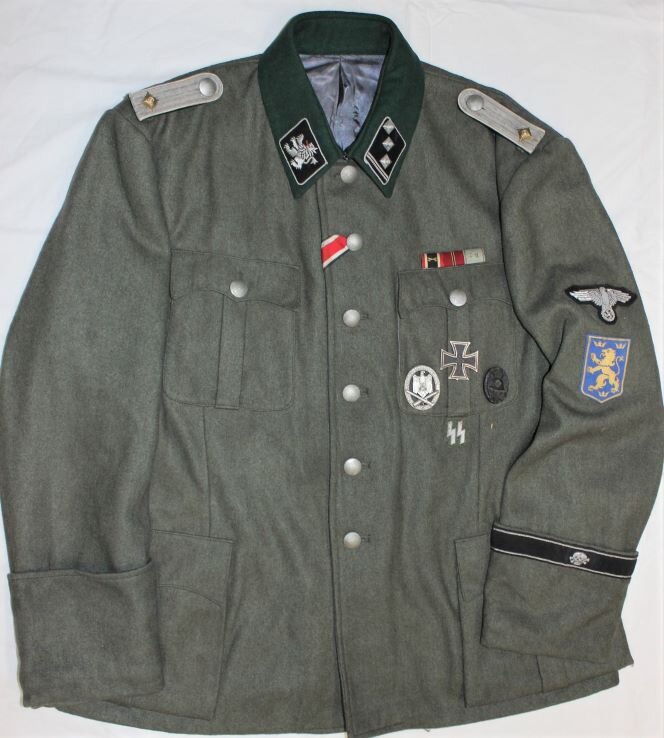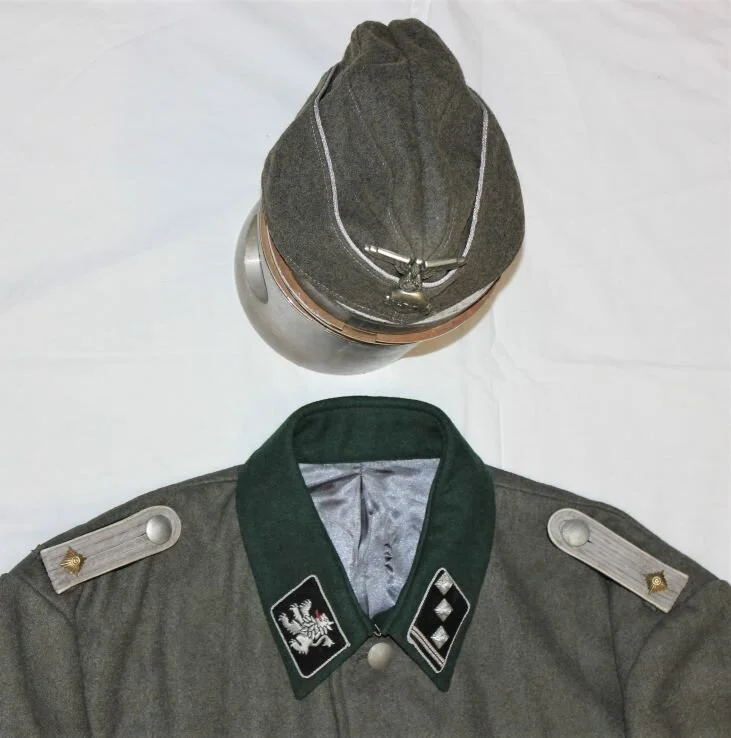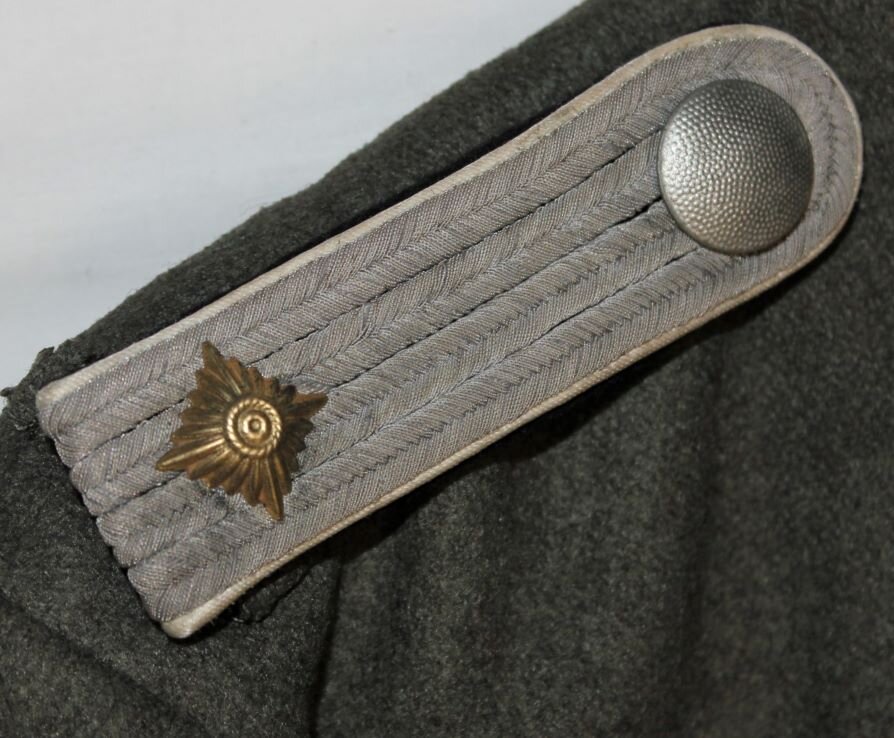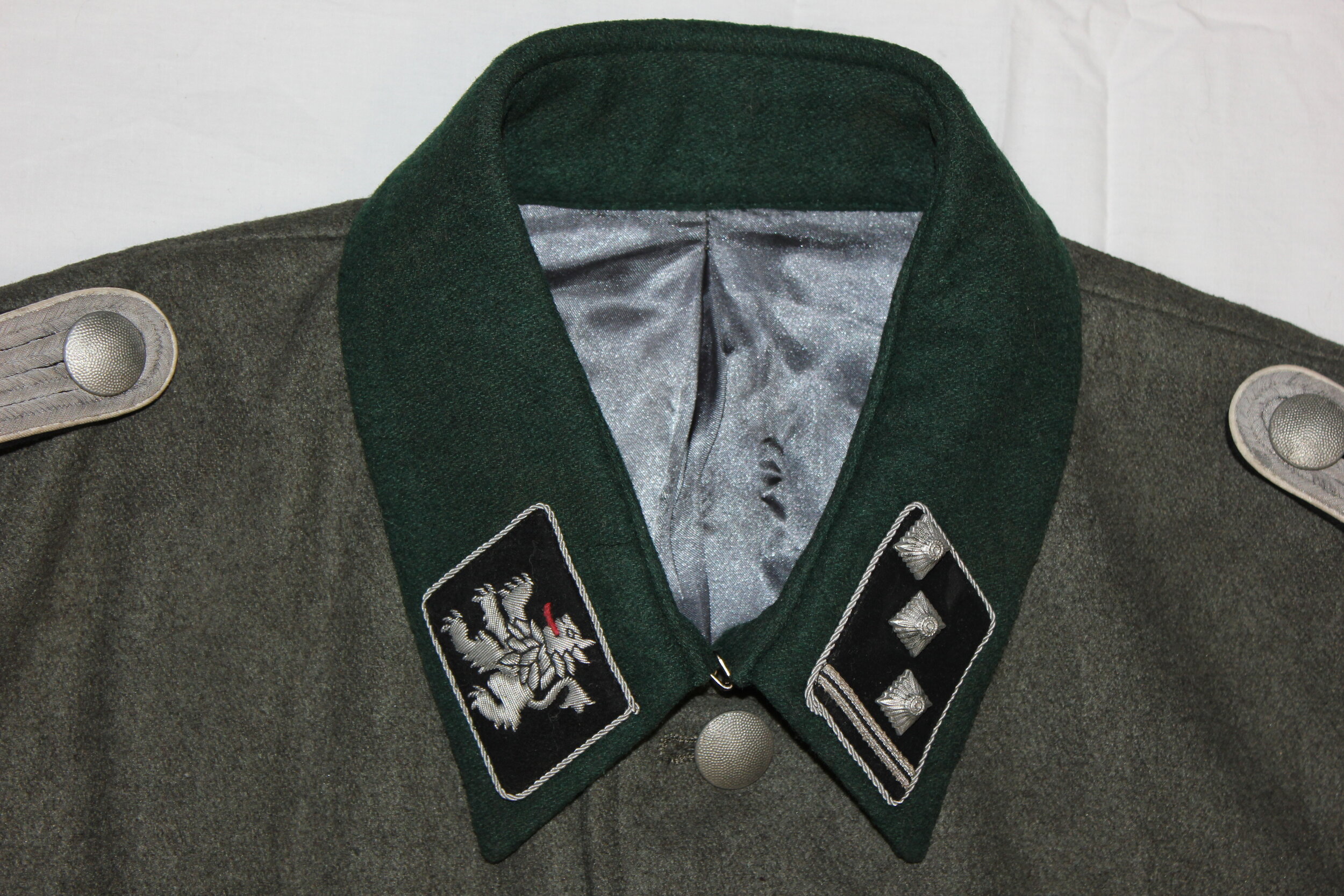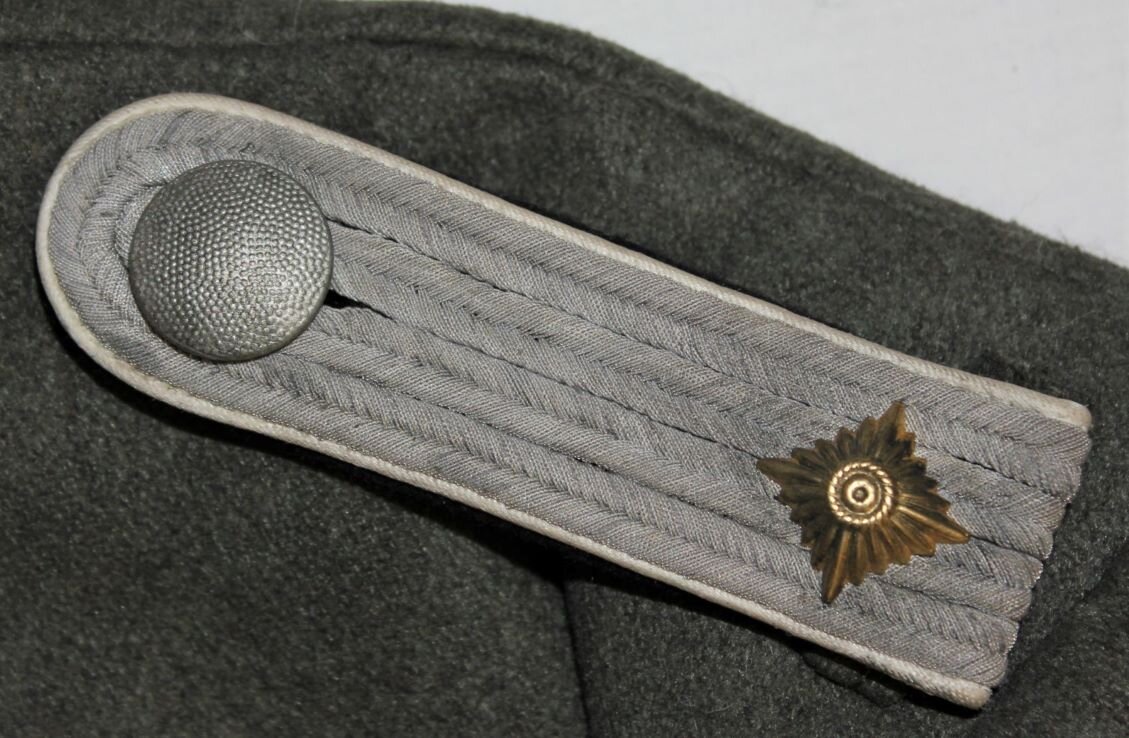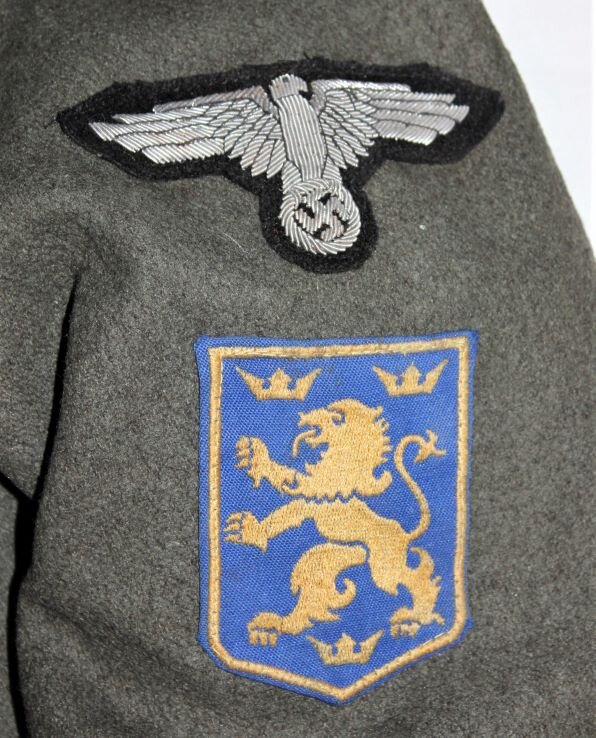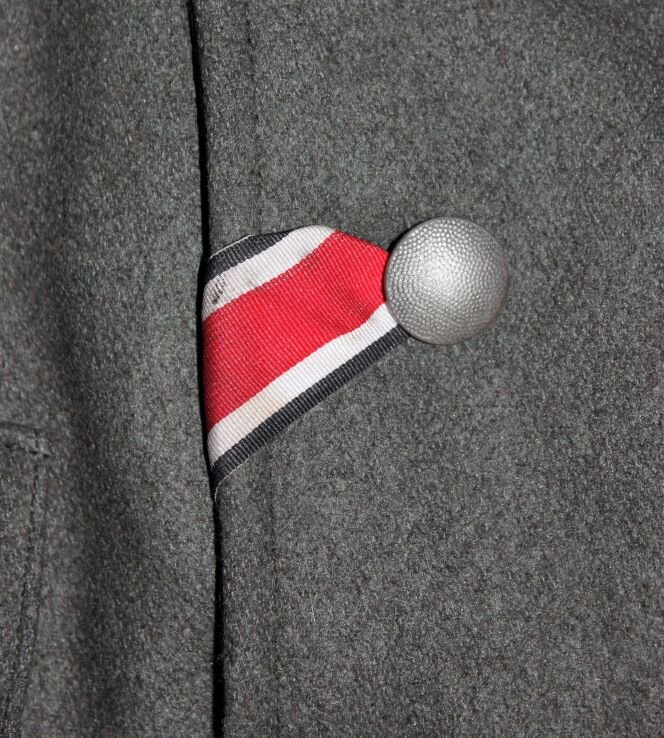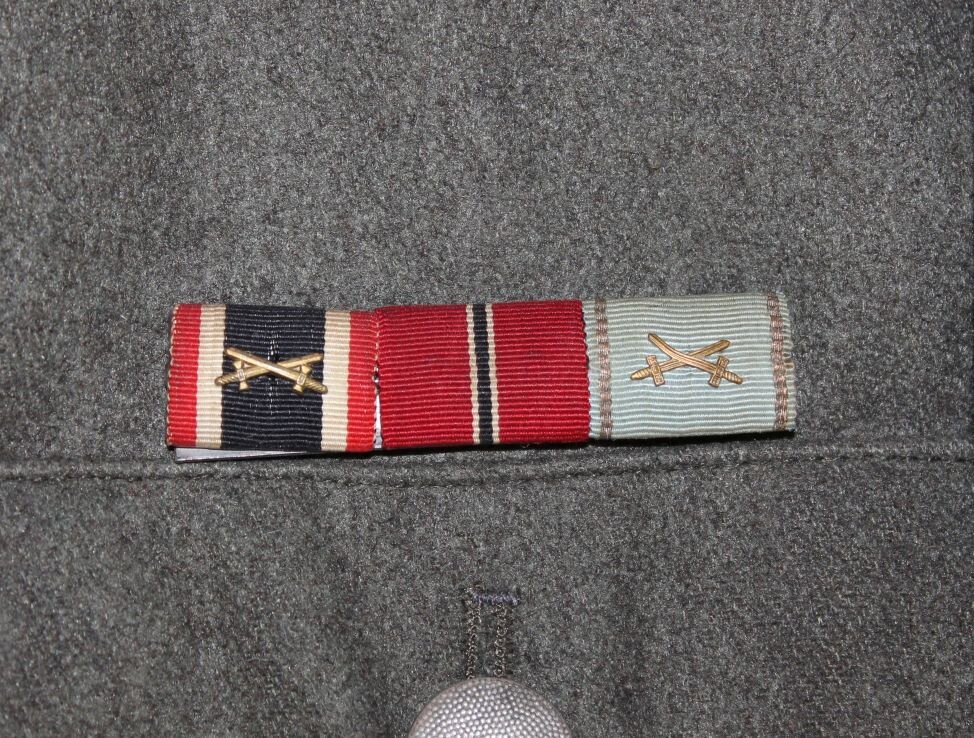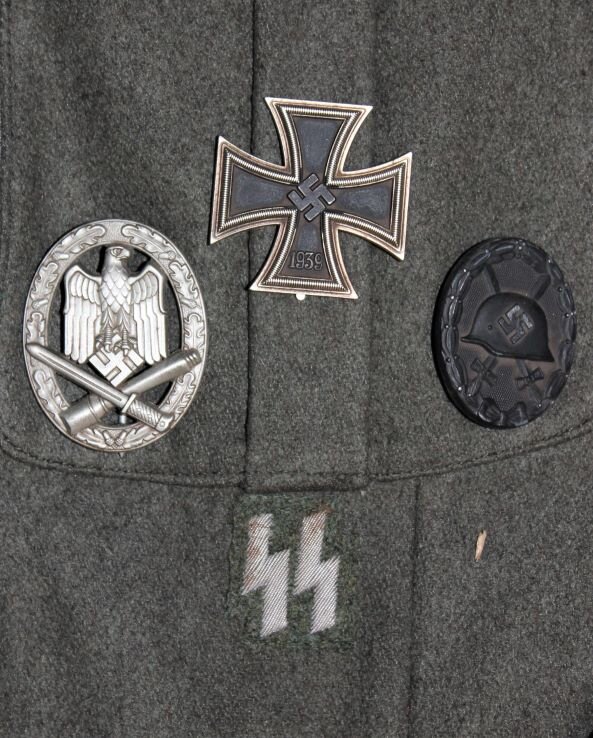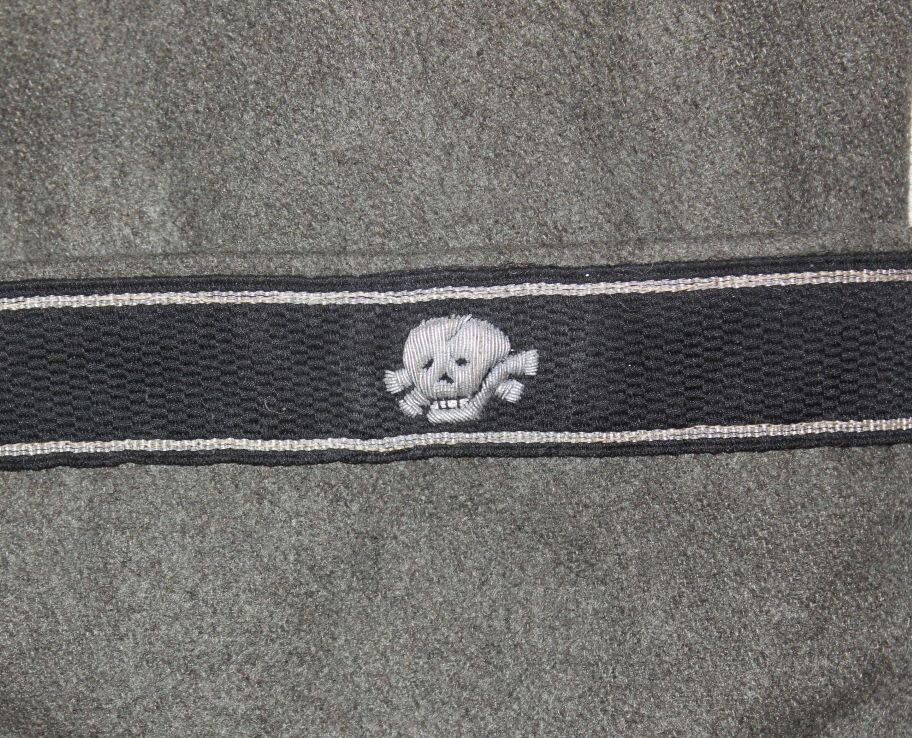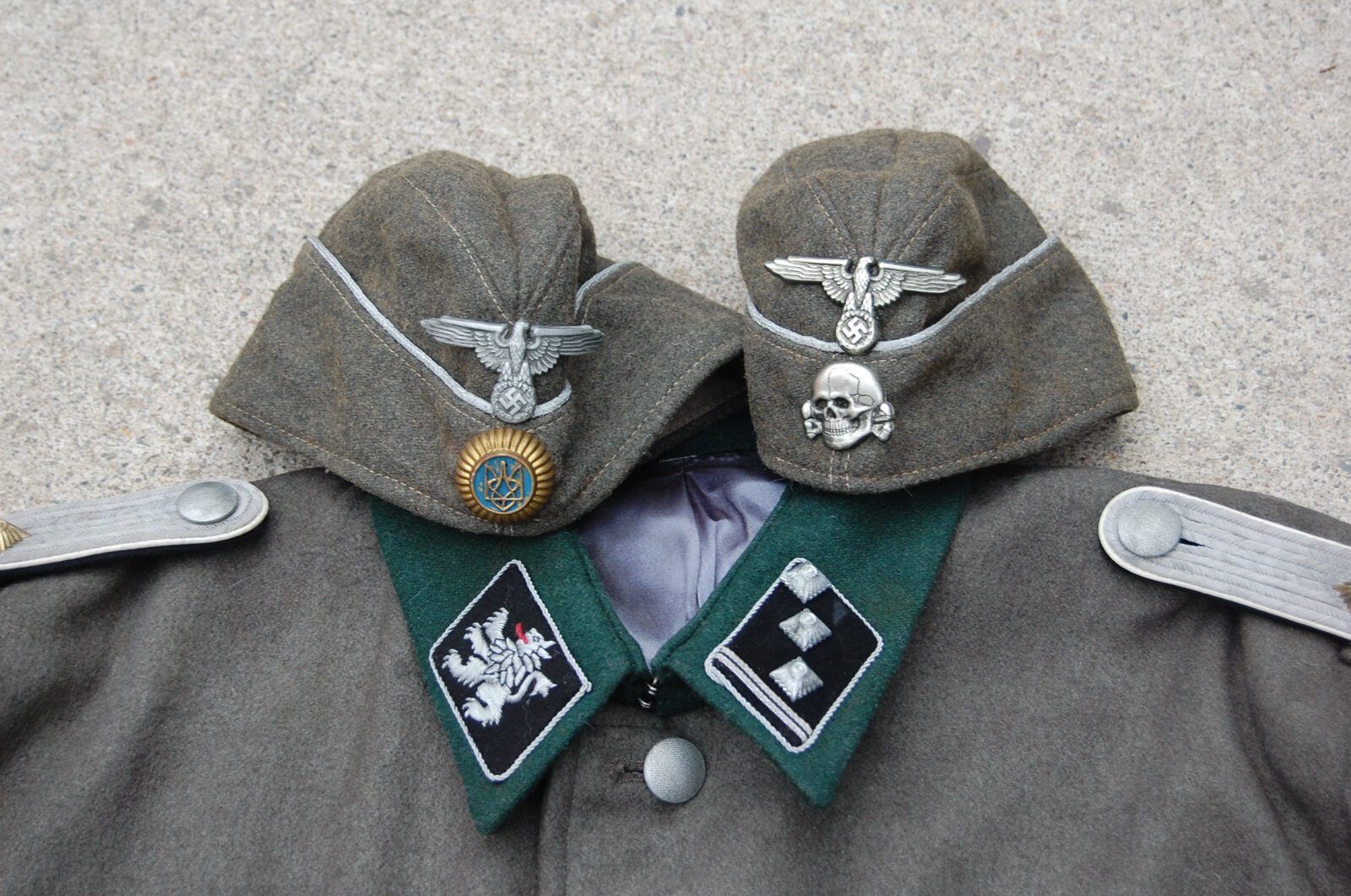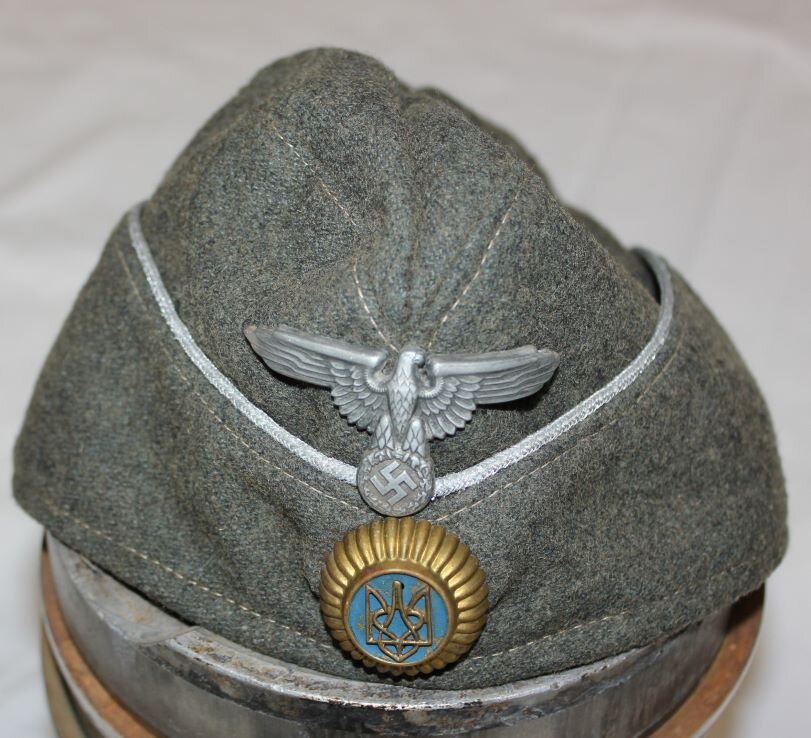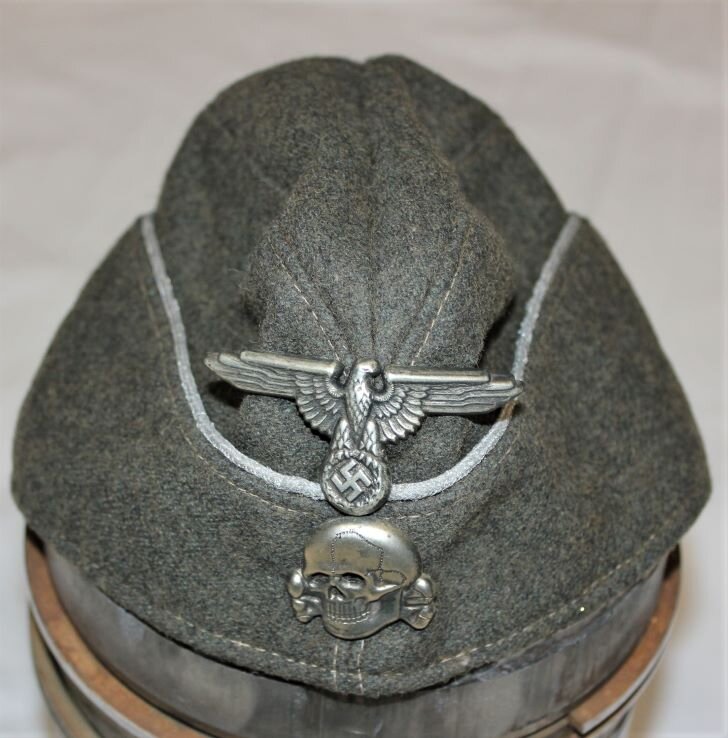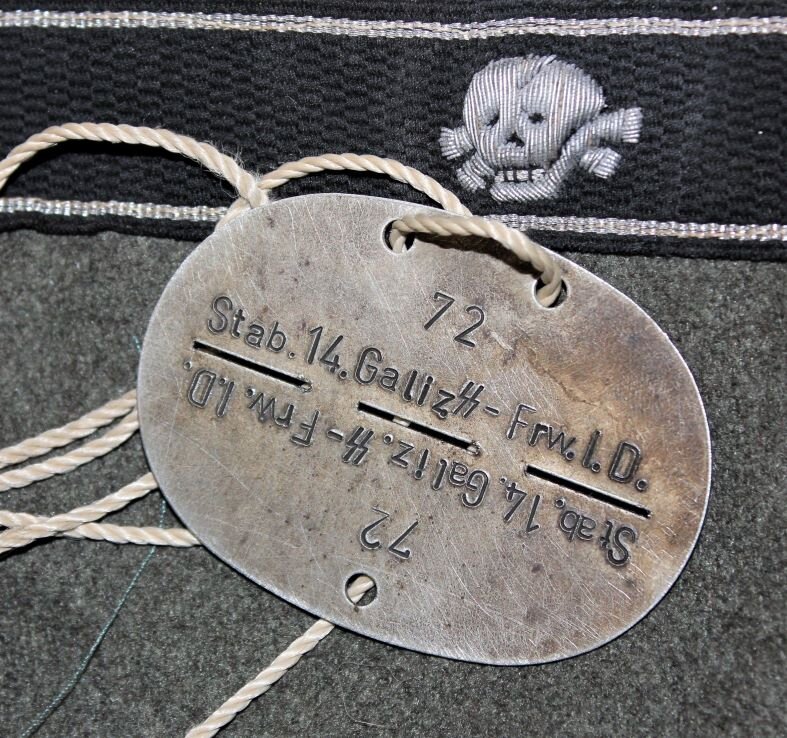SS-Eastern Legions, Ukrainian, Estonian, Croatian, Handschar, &The Prinz Eugen:
SS-Sturmmann, Estnisches SS-Freiwilligen-Panzer-Grenadier-Batallion “Narwa”, 5. SS-Panzer Division ,,Wiking”:
In late August 1942, voluntary recruitment into the Estnischesn SS-Legion began. By winter, one battalion had been formed, the Estnische SS-Freiwillingen-Panzer-Grenadier-Batallion “Narwa”. The Battalion was made up mostly of volunteers drawn from security and defense units. In April 1943, “Narwa” was separated from the Legion and sent to join the 5. SS Panzer Division “Wiking” on the Eastern Front in Ukraine. “Narwa” fought with “Wiking” on the Ost Front until the end of the war.
The division surrendered to US forces near Fürstenfeld, Austria. The Estonian Volunteer, an SS-Sturmmann, although still a lower rank, is a leader, having earned the Iron Cross 2nd Class. He wears the Feldgrau Dienstanzug Model 1940 in the open-collar style, a design favored by the SS powers that be. The Bluse has come from Heer stock, rather than SS-production stores; note the three belt support hook holes at the waist. He has been serving with the Waffen-SS for some time, long enough to have the Wound Badge in Silver for 3-5 wounds in battle and the Infantry Assault Badge. He even has a “Wiking-cuff title”, many uniforms never got the time to apply it, these fellows were in battle a lot, and did not have a lot of time to fiddle with their uniforms, and, for that matter bounced around to help provide manpower to beat up units, so may have served with 2 or 3 different outfits. He has an overseas cap, and likely he had a steel helmet, matching trousers, black boots, and belt, with standard equipment carried for a hit kit.
As with a number of these so-called “volunteers” in my collection, they were members of a famous Division or Regiment, and could have been added to those parts of the collection, but I have it here to represent the country they volunteered from (There is other “Wiking Division” troops in the “Germanic SS-Volunteers” colletion).
SS-Unterscharfuhrer, Harald Nugiseks, 1. Estonian SS-Freiwilligen:
One of just two Knight’s Cross winners from Estonia, Nugiseks won his award by taking over the attack to capture the Vassa-Siiverti-Vepskula Bridgehead when all those superior to him were killed. Nugisek’s combat record did not help him as he was reduced in rank for fighting with other soldiers who were harassing Red Cross Nurses. Captured in 1945, he was sent to Siberia for fighting against the Soviet Army.
The 1943 HBT uniform was the summer uniform. The Blue-Black-White national shield matched the distinctive collar device. Nugiseks won the 1st and 2nd class of the Iron Cross and the Infantry Assault Badge. Amazingly, he was never wounded and survived his prison term, and as of 2008, he is still living in Estonia.
The Uniform here would have been covered with a camouflaged smock, and that’s why there are pictures of it with the smock over it, so I provide a picture of how that would look.
The uniform depicted here of represents Harald, and we put this together some years ago, when I had much less information on him, this is an HBT material, or, summer uniform, while most pictures now show him in a wool uniform, but its not to far off, and who knows, he very well may have had one of these too.
Lattvian SS-Unterscharführer, Waffen-Artillerie Regiment der SS 19, 19. Waffen-Grenadier Division der SS:
The Lettische SS-Freiwilligen was formed in the Summer of 1943 out of the five Latvian police battalions and untrained volunteers in Krasnoye Selo. After finishing training, it was sent to the Volkhov River front. It was renamed 2. Lettische SS-Freiwilligen-Brigade in Oktober 1943 continued in combat on that front until November 1943, when it was withdrawn for rest and refitting, on 7. In January 1944, the division was renamed 19. Waffen-Grenadier Division der SS. Following the arrival of 2,000 additional men, a third Waffen-Grenadier Regiment was created. The Artillerie Regiment now supported the Waffen-Grenadier Regiment der SS 42, Waffen-Grenadier Regiment der SS 43, and Waffen-Grenadier Regiment der SS 44. The Artillerie Regiment comprised four Bataillons, the I., II., and III. Bataillon with general-purpose 10.5 cm leFH 18 and the IV. Bataillon with the 15 cm sFH 18. The division took up position on the Velikaya River Line on 14. January 1944, when it helped halt the Red Army's advance. At the end of July and the beginning of August, combat in the Lubana area intensified, and the division retreated to the Gauja River Valley, where they held the line against the Russian advance. Through the division’s tenacity, German troops managed an organized withdrawal from Estonia to the Kurland peninsula.
On 7. In October 1944, the division abandoned the Gauja front and retreated to the Dzukste area and into the Kurland pocket to fight. On 9. Mai 1945, the division surrendered to the Red Army after many men escaped into the local massive forests to fight in a protracted irregular war against the Soviet occupation as the Forest Brothers or Mežabrāļi until 1956. Litzen with the Latvian Fire or Thunder Cross (Swastika) was authorized on 11 March 1943. The Latvian Ugunskrusts or Pērkonkrusts date back to the Bronze Age and were also used as an aircraft marking in the Latvian Air Force from 1918 to 1934. The symbol was used by the Latvian fascist party, the Ugunskrusts, which was founded in 1932 by Gustavs Celmiņš. It was banned shortly afterward but was reformed as Pērkonkrusts until it was again banned in 1934. The SS-Unterscharführer wears the Dienstanzug Model 1942 of SS manufacture, denoted by “two”, as opposed to “three holes” for the belt support hooks sewn into the front and back of the Bluse. Hochrot or bright red, the Waffenfarbe of the Artillerie, pipes the Schulterklappen.
A final pattern of the Wappenschield is sewn just below the SS pattern national insignia. The Kurland Ärmelstreifen was created to honor those who fought in the Kurland campaign. Withdrawing on the Ost Front, Wehrmacht forces were cut off on the Courland Peninsula in Latvia in July 1944. Renamed Heeres Gruppe Kurland on 25 January 1945, it held out until the end of the war in May 1945. Der Ärmelstreifen Kurland Honoring the soldiers fighting there, Adolf Hitler approved, on 12 March 1945, the recommendation of the commander to locally design and produce a campaign cuff title award. It was the last German award to be instituted in World War II. Distribution began in late April 1945. To qualify, the soldier would have to be serving in Kurland between 1 September 1944 on 8 May 1945 and must have participated in at least three combat actions, served a minimum of three months in the pocket, or been wounded. In the case of being wounded, the Ärmelstreifen would be awarded the appropriate Verwundetenabzeichen.
Waffen SS Grenadier Unterscharfuhrer 1951 SS Grenadier Division Lettische Nr. 2:
This sergeant is a veteran campaigner who has placed his insignia and medals on the final pattern Model 1944 Feldbluse. His insignia is piped in white as he leads one of the vital Grenadier sections in combat. The Divisional Latvian Sun and Stars crest is on his collar insignia in place of SS-runes, while he wears the Latvian National shield in place of the cuff title. This man has campaigned against the Soviets since 1943, when he became part of the 2nd Latvian SS Volunteer Brigade. This brigade was ordered to increase to divisional size in 1944. For his combat leadership, he has earned both the Iron Cross II Class ribbon sewn into the buttonhole and the Iron Cross 1 51 Class. He has won the Infantry Assault Badge for at least 3 days of combat and the Close Combat Clasp in Bronze; his Black Wound badge shows he is not afraid to be in action. With his tunic, he wears the early style service trousers in Feldgrau wool stuffed into high-top marching boots or wrapped and bloused with Gamaschen over lace-up ankle boots. The uniform is completed with the M43 cap, and we used a typical SS Helmet for the photoshoot..
SS-Untershurmfuhrer, 27. SS Waffen Gebirgsjager Regiment, SS- Gebirgsjager Division 13 “Handschar”:
SS-Gebirgsjäger Division 13 “Handschar" was formed in 1943, and from March to December 1944, it fought a counter-insurgency campaign against communist-led Yugoslav Partisan resistance forces in the Independent State of Croatia. The division was given the name Handscahr from the Bosnian word: Handžar, which was a local fighting knife or sword carried by Ottoman policemen during the centuries that the region was part of the Ottoman Empire. Handschar was the first non-Germanic Waffen-SS division, and its formation marked the expansion of the Waffen-SS into a multi-ethnic military force. Composed of Bosnian Muslims with some Catholic Croat soldiers and mostly German and Yugoslav Volksdeutsche officers and non-commissioned officers, it took an oath of allegiance to both Adolf Hitler and the Croatian leader Ante Pavelić. The division fought briefly in the Syrmia region north of the Sava River before crossing into northeastern Bosnia.
After crossing the Sava, it established a designated "security zone" in northeastern Bosnia between the Sava, Bosna, Drina, and Spreča rivers. It also fought outside the security zone on several occasions and earned a reputation for brutality and savagery, not only during combat operations but also through atrocities committed against Serb and Jewish civilians. In late 1944, parts of the division were transferred briefly to the Zagreb area, after which the non-German members began to desert in large numbers. Over the winter of 1944–45, it was sent to the Baranja region, where it fought against the Red Army and Bulgarians throughout southern Hungary, falling back via a series of defensive lines until they were inside the Reich frontier. Most of the remaining Bosnian Muslims left at this point and attempted to return to Bosnia. The rest retreated further west, hoping to surrender to the Western Allies. Most of the remaining members became prisoners of the British Army. The unit had no positive combat record and was disbanded in 1945.
Sub SS-Untersturmführer 27. SS Waffen Gebirgsjäger Regiment SS-Gebirgsjäger Division 13 ”Handschar” An interesting use of an Army breast eagle placed on the sleeve of the uniform. Several period photos show this use. The Heeresgebirgs Edelweiss cap badge has been attached to this SS-Eineheitsfeldmütz. Subsequently, 38 officers were extradited to Yugoslavia to face criminal charges, and 10 were executed. Hundreds of former members of the division fought in the 1947–48 Civil War in Mandatory Palestine and the 1948 Arab–Israeli War. The SS Unterfsturmführer wears a gabardine officer cut Heeres Dienstanzug Model 1936 with a divisional collar Litzen showing an arm holding the Handschar over a swastika. On the left arm was a Croatian arm shield in officer quality bullion hand embroidery with matching bullion SS pattern Edelweiss on the right sleeve.
Former SS personnel serving in the division were entitled to wear a Sig Rune badge that was attached to the left breast pocket of the tunic. Headgear was either the SS M43 Fez, which was to be worn by all ranks, while German officers had the option to wear the Bergmütz. The Fez was chosen by Himmler because it had been worn by the Bosnian Herzegovinian Infanterie Regiments of the Austro-Hungarian army from 1894 to 1918, as well as by the Austro-Hungarian Albanian Legion from 1916 to 1918. There were two versions of the Fez: a field gray model to be worn in combat and while on duty, and a red model for parades, marching exercises, and while off duty. Both the Fez and Bergmütz bore the death's head and eagle of the SS. The mountain cap was also adorned with an Edelweiss flower patch worn on the left side of the cap. The SS Unterführer is probably a recent graduate from Junkerschule Tölz, which is evidenced by his combat decorations and campaign awards earned as an SS-Unterführer with one of the other SS divisions.
” Updated” Serbian Volunteer, SS-Mann, Handschar Division, 27th SS-Mountain Infantry:
This young recruit wears the mid-war pattern HBT tunic popular in warmer areas such as Yugoslavia. Distinctive divisional collar insignia shows the traditional Muslim Scimitar Sword, and the swastika is combined with the national colors of Croatia, which has allied itself with Germany. As this division fights as SS-Volunteers, the SS version of the German national eagle is worn on the left sleeve. Patterned on the old Muslim regiments of the Austro-Hungarian Army, the soldiers were issued the Fez, which had been modified with SS cap insignia.
I later added the faded HBT M43 cap, bleached out to white, which found a home here now. The first several pictures depict the troop using the shelter quarter, A camouflaged square basically, 1 part tent, 1 part coat, not great at either, but it was designed for this use, as a poncho, even having the Web-Gear and belt over it. Commonly, it was stowed on the back. The SS were, of course, often issued the “Smock” as well, and that would fit here too. The Smock was used more often than not. It was shown in this photo shoot, and this is a fine place. When not used, it was rolled up and attached with leather straps to the Y-Strap type of web gear.
I’ve added an SS-Helmet, this one carried the Croatian Legions’ Shield on the side of it, under the cover, it fits here. Some verious hats have been put with this uniform, and it has gotten confusing about what went where, all work here though, and I have shown some of the optians. I had the “Young/Croatian SS-Sports Badge” floating around on different uniforms, till I figured out was, and now have applied it here, it’s about the only place it worked in my collection, it was bought as a real one, but I am no longer sure of that, rare nonetheless.
Camouflaged custom jacket of SS-Sturmmann u. SS-Unterführeranwäter 23. Waffen-Gebirgs-Division ,,Kama” :
23. Waffen-Gebirgs-Division “Kama” was the second Croatian mountain infantry division raised by the Waffen-SS as part of a volunteer drive focused on using ethnic Muslims to combat the communist partisans led by Tito.
The division was composed of German officers and Bosnian Muslim soldiers. The division’s name was taken from the small Kama dagger used by Balkan shepherds. One of the thirty-eight divisions fielded by the Waffen-SS during World War II, “Kama” was formed on 19 June 1944. it was built around a cadre of 13. Waffen-Gebirg-Division.
A young “Kama” Friewilligen SS-Sturmmann has earned the Eisernes Kreuz II. Klasse. He is probably one of the cadres brought to the newly forming unit from 13. Waffen-Gebirg-Division “Handschar”. He wears what appears to be an Oak Overprint Camouflage four-pocket Feldbluse, which has unpainted aluminum buttons attached. A Heer Feldgrau chevron is used instead of a more normal Waffen SS black-backed one. The single tress loops on the shoulder insignia indicate his status as an Unterführeranwäter, ready to be sent to SS leadership school.
Croatian Volunteer:
Ok-bad joke, but the idea was what am I supposed to do with this captured SPAM! Like he got it from the Germans captured from the Allies, or something, but it shows a behind the lines, with some common clothing, in shirt sleeves, and work trousers. It shows another “Fez” as well.
Sturmmann, 50./ Waffen Gebirsjager Regiment, Skanderbeg:
The 21st SS-Division Skanderbeg was created following the Nazi invasion of the Kingdom of Yugoslavia in 1941. Throughout 1942 and 1943, both the Wehrmacht and the SS sought to utilise local manpower to maintain law and order and fight the Yugoslav Partisan and Communist Albanian Resistance. For their part, Albanian leaders Metohija and liberate the surrounding regions.
In 1943, several Albanians from Kosovo and the Sandak region were recruited into the Waffen-SS Handschar Division. They were teamed up into Battalion I/2 (Later I/28) and received first-rate training in Neuhammer, Germany. This was perhaps the best-trained and equipped Nazi Albanian military formation during the war, but, ironically, it was transferred directly from combat in Bosnia to Kosovo via rail on 17 April 1944 following the creation of Skanderbeg.
In February 1944, the decision was taken, following the modest success of the Handschar Division in Bosnia, to raise a parallel unit inside Albania. According to Bernd Fischer, the Division included 1500 POWs, ‘Natives of Kosovo' who had served in the Yugoslav Army, plus remnants of the failed Albanian Army, volunteers from both old and new Albania. Xhafer Deva, an Albanian from Kosovo and periodically the Interior Minister under the Nazi ‘Pupet’ regime, helped with recruitment. The Division was called SS-Skinderbeu in Albanian.
Ultimately, the names of 11,398 possible recruits were submitted to Berlin. Of these, 9,275 were deemed suitable for drafting, and about 6,000 were inducted into the Waffen-SS. The 21st Waffen-SS Mountain Division was the only fully ethnic Albanian division to be recruited by the Germans in WWII. It was established originally to combat partisan activity with the promise that the territories with the majority Albanian populations were to become an independent and unified state to include Albania, Kosovo, and western Macedonia, or what is sometimes called Greater Albania (or Ethnic Albania).
The Division was placed under the command of SS-Standartenführer August Schmidthuber, later promoted to SS-Oberführer. It fought against the Communist partisan forces of Envor Hoxha, who were on the increase and consolidating their actions, both in Albania and Yugoslavia, as the Second World War was drawing to an end. The Division was very poorly led, however, with the lack of German leadership to overcome the poor examples of the Albanian officers and NCOs.
The Division was operational for only a few months (February 1944 to November 1944), with a strength of about 6,000 to 6500 rather than the normal strength of a division (10,000 to 20,000). Many recruits deserted, taking with them their new weapons and boots, and by October 1944, their number had dwindled to around 3500. It appears they often refused to fight or to take orders, so it never became a significant fighting force.
The Germans were forced to disarm battalions at Pec and Prizren, arresting the Albanian Officers and sending them to the camp at Prishtina. The remaining soldiers were incorporated into the 14th./ SS-Gebirgsjager Regiment “Prinz Eugen”.
The Division participated in the ‘Wehrmacht Operation “Fuchsjagd”, known to the Communists as the ‘Battle of Debar’, 18 to 27 August 1944. The only other action taken was assisting the orderly Wehrmacht to withdraw from October to November 1944. Over 700 men of this SS Division, along with approximately 500 local Kosovo Albanians recruited by Xhafer Deva, aided the Germans who were evacuating through Kosovo and successfully resisted incursions from both the Communist partisans and Bulgarian incursions.
This Albanian SS-Sturmann wears a standard M43 tunic with early war trousers. His black double-headed eagle on a red shield and Skanderbeg cuff title show his national or ethnic background, as does his traditional Albanian Pilus. Traditionally, while the combat units began to dye these to match the ‘Fez’ worn by the Handschar Division. His shoulder straps are piped in Gibergsjager Green, and he wears an SS-Gibergsjager device on the right sleeve. He wears the tunic over the standard-issue shirt along with lace-up boots and Gamaschen.
SS-Scharfuhrer, 7. SS-Freiwilligen-Gebirgsjager Division “Prinz Eugen”:
Established in 1942 to incorporate ethnic Germans from Romania, Austria, and Yugoslavia. The division made a reputation for fighting against Tito's Communist Partisans in Yugoslavia. This Scharfuhrer is wearing the late issue 44 Dot camouflage uniform with all his insignia sewn in place. He is an SS member, as shown by the Germanic SS runes worn on the lower section of the pocket. He has won both the Iron Crosses, the Infantry Assault Badge, and the Anti-Partisan Badge in Silver, along with the Close Combat Clasp in Bronze. He has been wounded at least 3 times, as shown by the Black Wound Badge. On his left sleeve is the Waffen SS Gebirgs Edelweiss, and on the right sleeve is his divisional cuff title. His shoulder boards are piped in green for mountain troops. On his collar is the divisional Odel Rune or "0" Rune symbolic of Odin and Midgard. He has inherited an old-style Austrian Bergmutz that has an SS metal eagle and TK added along with an embroidered SS cap Edelweiss. I have the helmet down in the crawl space somewhere. I’ll have to dig that up.
SS-Panzer Unterscharfuhrer, 7./ SS-Panzer Battalion, “Prinz Eugen Division”:
The ‘Prinz Eugen’ was formed in late 1941, following the Nazi invasion of Yugoslavia, initially from German-speaking Danube Swabian Selbschutz in the Serbian province of Banat.
After the initial rush of Volksdeutsche to join, voluntary enlistments tapered off, and the new unit did not reach divisional size. Therefore, in August 1941, the SS discarded the voluntary approach and, after favorable judgment from the SS court in Belgrade, imposed a mandatory military obligation on all Volksdeutsche in Serbia-Banat, the first of its kind for non-Reich Germans.
In 1942, the Panevo-based unit was declared a Gebirgs (Mountain) Division. They were issued with non-standard German weapons, using captured equipment such as Czech machine guns, and ex-French Armor.
When the division was formed, it was assigned to the Balkans, on anti-partisan duty, as a Mountain Division.
In August 1943, Prinz Eugen became part of the XV Panzer Armee Korps, and they were sent to the Dalmatian coast to disarm the Italian Forces in September 1943, after the Italian Government had surrendered to the Allies.
The division was reorganized on 22nd October 1943 and was renamed the 7th SS-Volunteer Mountain Division ‘Prinz Eugen’. In November, the unit was attached to the V SS-Mountain Corps and took part in anti-partisan Operations Kugelblitz and Schneesturm in December 1943.
In March 1944 the Division was involved in more anti-partisan action in Operation Maibaum (April 1944) and the next large offensive, Operation Russelsprung the assault on Drvar, which began on 25 May 1944, this operation had the task of killing or capturing Tito, and the offensive was supported by the 500th SS-Fallschirmjager Battalion and the Brandenburg Regiment. By August, the Soviet Red Army had advanced to the Balkans, and the Division had begun fighting Russian and Bulgarian units, suffering heavy casualties in the process.
The Division’s next action was together with the 13th Waffen Mountain Division of the SS-Handschar (1st Croatian) the 23rd Waffen Mountain Division of the Kama (2nd Croatian) and the 21st Waffen Mountain Division of the Skanderbeg (1st Albanian) were given the task of creating a corridor which would allow the retreat of 35,000 German soldiers from Greece and the Aegean.
On 20th October 1944, the Russians captured Belgrade, and Prinz Eugen got the job of pulling rear guard, covering the German retreat.
(Note: Then beginning of November, the 1st Albanian Skanderbeg Division was disbanded and its remnants were incorporated into the 14th Regiment of Prinz Eugen, which received its honor title ‘Skanderbeg’.)
In January 1945, the Division was again against the Russians and Tito partisans at Otok and Vukovar. The retreat from Bosnia continued, and Prinz Eugen retreated to Croatia in April 1945. On 10 May 1945, the Division retreated towards Celje in Slovenia, where it surrendered on 11 May 1945 to Yougoslav-forces.
This sergeant is a recent veteran campaigner wearing a standard cut SS-Panzer Jacket and trousers with divisional collar insignia, sleeve shield, and cuff title as well as the SS-Gebirgsjager sleeve badge. With his Panzer uniform, he wears the standard-issue shirt and tie, with an M-43 pattern Black Panzer Cap (I also thought the brown camouflaged pattern cap fit here, and it stuck) with short lace-up boots.
Rottenfuhrer, 7./ SS- Sturmgeschütz Battalion “Prinz Eugen”:
The “Prinz Eugen” was formed in 1941 following the Nazi invasion of Yugoslavia, initially from German-speaking Danube Swabian Selbstschutz in the Serbian Province of Banat. After the initial rush of Volksdeutsche to join, voluntary enlistments tapered off, and the new unit did not reach divisional size. Therefore, in August 1941, the SS discarded the voluntary approach and, after a favorable judgment from the SS court in Belgrade, imposed a mandatory military obligation on all Volksdeutsche in Serbia-Banat, the first of its kind for non-Reich Germans.
In 1942, the Panevo-based unit was declared a Gebirgs (Mountain) Division. They were issued with non-standard German weapons and equipment, largely from captured stock, i/e, many had Czech machine guns and French light tanks. When the Division was formed, they were assigned to operate in the Balkans as an anti-partisan mountain division.
In August 1943, Prinz Eugen became part of the XV Gebirgs Armee Korps and was sent to the Dalmatian Coast to disarm the Italian Armed Forces, in September, after the Italian Government had surrendered to the Allies.
The Division was reorganized on 22 October 1943 and renamed again, becoming the 7th SS-Volunteer Mountain Division, Prinz Eugen. In November, they were attached to the V SS-Mountain Corps and took part in the anti-partisan operations Kugelblitz and Schneesturm in December 1943.
The “Sturmgeschütz Battalion” had formed as the Sturmgeschütz Abt. V. , Korps and this group became the SS-Sturmgeschütz-Abteilung 105 in October 1943. Like the Panzer Battalion, German vehicles were not actually used; rather, they had been issued Italian Semovente Assault Guns filling the battery. The Battery was stationed in Banat and was never really never bigger than a battery in size, but maintained the “Battalion” designation. After several actions in Bosnia near Mostar, the battalion was subordinated to “Prinz Eugen” as part of the 7th Panzer Battalion and joined the division at Nish.
In March 1944, the Division was involved in more anti-partisan action, in Operation Maibaum (April 1944) and the next large offensive, in Operation Russelsprung, the assault on Drvar, which began on 25th May 1944. This operation had the task of killing or capturing Tito, and the division was supported by the 500th SS-Fallschirmjager Bataillon and the Brandenburg Regiment. By August, the Soviet Red Army had advanced to the Balkans, and the division had begun fighting Russian and Bulgarian units, suffering very heavy casualties in the process.
The Division’s next action was together with the 13th Waffen-Mountain Division, of the SS-Handschar (1st Croatian), the 23rd Waffen-Mountain Division of the SS-Kama (2nd Croatian), with the 21st Mountain Division of the SS-Skanderbeg (1st Albanian), all given the task of creating a corridor which would allow the retreat of 35000 “German soldiers” from Greece and the Aegean.
On 20 October 1944, the Russians captured Belgrade, and Prinz Eugen was the rear guard for that German retreat as well. Morale must have been horrendous.
Beginning of November, the SS 1st Albanian Skanderbeg Division was disbanded, and its remnants were incorporated into the 14th Regiment Prinz Eugen, which received its Honor Title of Skanderbeg.
In January 1945, the Division was again in action against the Russians and Tito’s Partisans at Otok and Vukovar. The fighting had always been disturbingly brutal and personal, and it was like that from start to end. They retreated from Bosnia, and Prinz Eugen headed to Croatia in April 1945. On 11 May, they surrendered to Yugoslavian forces.
The SS-Rottenführer depicted here is a veteran “Anti-Partisan” campaigner wearing the standard cut SS-Sturmgeschütz jacket and trousers with the divisional collar insignia, sleeve shield, and cuff title as well as the SS-Gebirgsjager Sleeve Badge. His M-43 style cap has a single button with a Burgmutz look to it. Interestingly, the Eidelwize is not standard, large, and wrapped around the National-Eagle wrapped around to the back.
He has proven his combat leadership, as evidenced by his Iron Cross 2nd Class. He has been wounded at least 3 times, having the Black Wound Badge. He was awarded the General Assault Badge and the Anti-Partisan Badge for his many encounters with the enemy. With the Feldgrau Sturmgeschütz uniform, he wore the issue shirt with a black tie and an M43 field cap, finished off with short, lace-up black boots.
Brigadeführer u. Ritterkreuzträger Otto Kumm, 7.SS Freiwilligen~Gebirgs~Division ,,Prinz Eugen”:
Otto Kumm won the Ritterkreuz on 16. February 1942 as SS-Obersturmbannführer u. Kommandeur of the SS-Infanterie-Regiment “Der Führer”. On 6. In April 1943, he won the Eichenlaub as SS-Obersturmbannführer u. Kommandeur of the SS-Panzer-Grenadier Regiment 4 “Der Führer”. As SS-Brigadeführer u. Kommandeur of SS-Panzer Division ,,Leibstandarte Adolf Hitler” he won the Eichenlaub m. Schwerten on 17. March 1945. Born in 1909 into a family of a merchant in Hamburg, Kumm trained as a typesetter and worked at a newspaper.
On 1 June 1934, Kumm joined the SS-Verfügungstruppe, and on 1 July received his first training with the SS-Kumm commanded “Prinz Eugen” from 30. January 1944 until 20. In January 1945 and then was appointed commander of the SS Panzer Division “Leibstandarte Adolf Hitler” as of 15. Februar 1945. Kumm led “LSSAH” in Operation Spring Awakening, the last major German offensive. Following the failure of this attack, the division retreated to Vienna. Captured Russian cotton fabric was used to create a warm-weather Feldbluse. These were produced in large numbers, patterned on the Heeres Dienstanzug Model 1936.
*SS-Obersturmführer, Stabskompanie, 14. SS-Friewillegen-Infanterie-Division “Galizien”:
14. Galizien SS-Friewillegen-Infanterie Division was a Ukrainian ethnic volunteer unit created in the area of Galicia in 1943. Largely destroyed in the Battle of Brody, it was reformed and fought in Yugoslavia and Austria before surrendering to the Western Allies on 10 May 1945. The divisional command was made up of an experienced SS officer cadre. In the case of the Obersturmführer, he has served previously with the SS-Panzergrenadier Division ‘Totenkopf’. There are 2 caps provided; he could have worn either of the SS caps, one with Ukrainian insignia.
The divisional command was made up of an experienced SS officer cadre. In the case of the Obersturmführer, he has served previously with the SS-Totenkopf Division, as seen by the Cuff Title.
The uniform sports the “Rampant Lion” collar insignia and is blue-backed, with the crowns on the sleeve shield. The uniform also has 2 optional caps, which are shown in the photos above. I realize people in general like the cut-and-dried stories of history, especially the Second World War, but there was a lot of blurred edges you might say, overlapping of who fought with who is one of these, I’m not here to judge the people, it was a long time ago, a lot of different reasons ( mostly just wanting to stay alive or who they thought might be the winning side) it all depends on who you were, where you were at, and the conditions, and options) Often, we pick the better of two evils. These uniforms tell a bit of the story and show the uniform, the best as I can. I don’t do it for any political or radical reasons, just trying to show it as best I can.
*People are likely to get hot and bothered by the following uniform and representations, and it’s a touchy subject that keeps popping up. But it is part of the story. World War Two was truly global; everyone was involved one way or the other, building the planes and making the bullets, or drilling for oil. Many fought in it; it got a bit messy, and it got mixed up. People just wanted to service the damn thing. Moreover, millions of civilians just got stuck in the middle of it, and there were horrendous and senseless killings across the board. There were a lot of regrets when it ended, and no one was innocent except the people in the camps. When it was over, everyone had paid a price. Everyone had lost somebody, and those who survived it never forgot it. I’m just showing my collection and telling some of the story.
*Note: I have a whole section on Totenkopf SS-Division, if you want to see more of this unit, but as a volunteer, I used it here; there are others in sections that could also fit here. It has to do somewhat to how many uniforms fit in each section, to even them out a bit.
